Water play Family Rivers streams Lakes ponds Ocean wild Water
Water play in the wild
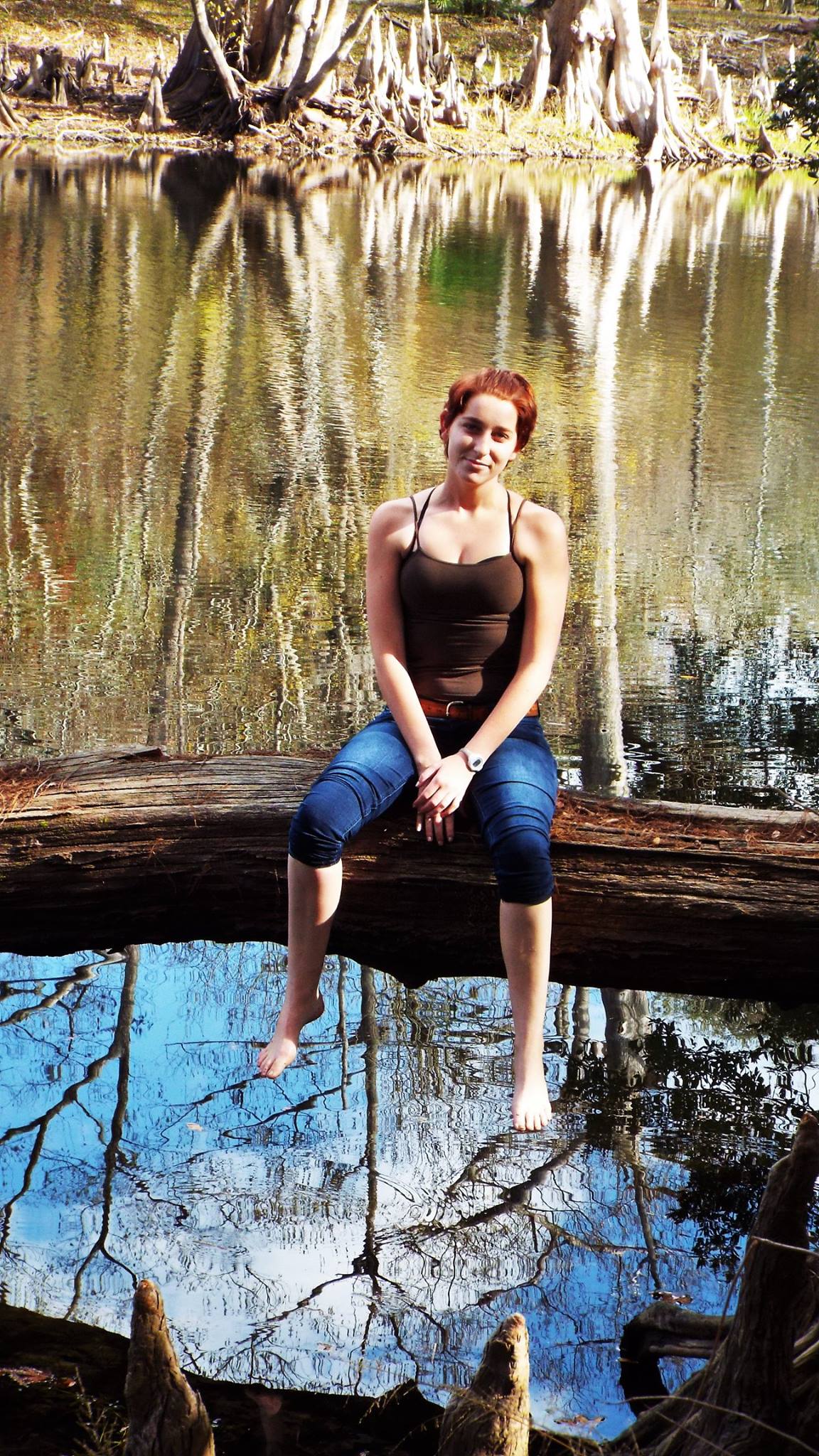
Officially, spring doesn’t begin until March 19. However, the beginning of daylight savings time and a few days of warmer weather have those of us in the Finger Lakes feeling like its already here. That’s especially true for my daughter.
Between building forts, riding her four-wheeler, catching crayfish, swinging on the tire swing, jumping on the trampoline and wandering through the woods with her dogs, Sara hasn’t had time for much that doesn’t offer the allure of an outdoors adventure. This spring she’s taken a special interest in a small stream that feeds into the larger creek in my parents’ backyard.
Watching her wade in the likely-cold water, I started to ponder how healthy the small stream and larger creek are. What indicates a healthy creek v. one that needs improvements to thrive? Determining whether your creek is healthy
There are a number of factors that can indicate whether or not a creek is healthy. By learning what to look for landowners can monitor the health of waterways cutting through their property and respond to any indications of impairment sooner.
Checklist
Riparian vegetation. Healthy vegetation along stream banks slow down erosion and provide shade, food and shelter for aquatic macroinvertebrates (such as insects, crustaceans (crayfish and others), mollusks (clams and mussels), gastropods (snails), oligochaeta (worms). Steep, bare spots along the edges of a stream may indicate stretches of increased erosion and decreased biodiversity.
Stream temperature. Temperature determines the kinds of organisms that can live in creeks and streams. Many freshwater fish, amphibians and invertebrates dwelling in streams require cooler temperatures to survive (under 70F). Additionally, warmer water temperatures can influence water chemistry as chemical reactions increase at higher temperatures.
Water color. Clear water is the most desirable color but doesn’t necessarily mean clean as some pollutants are not colored. Brown water is an indication of sediments in the water, but not necessarily a bad sign. All streams contain sediment suspended in the water, determining their turbidity level. Many turbid streams are abundant with life. Green water is generally a sign of excessive algae and poor water quality. A rainbow or oily sheen on the water is an indicator of poor water quality.
Algae growth. Scattered algae indicate a healthy waterway, whereas, matted or hairy algae can mean poor health. An algal bloom indicates excess nutrients, which may have come from fertilizers, manure or leaf litter.
Foam. Some waterways have a natural foam that smells earthy or fishy and will appear white, cream-colored or brown. It will appear more pillowy than sudsy. Foams that smell like soap or perfume and are white and sudsy in appearance come from pollution from detergents.
Riffles, runs and pools. A mix of riffles, runs and pools in a waterway provides the ideal habitat for aquatic life. Riffles are the shallow sections of a stream where the water breaks over cobbles, boulders and gravel. Runs are deeper sections of streams where water is flowing rapidly, generally downstream from riffles. Pools are the deepest and slowest moving sections of a stream.
pH level. The ideal pH for a stream is between 6.5 and 8.5, with the optimum pH around 7.4. Water that measures lower than 6.5 is too acidic and water that measures over an 8.5 can make a creek inhospitable to aquatic life.
How to test the quality of Open Water for Swimming
Resources
Simple Activities
for Pond Play
I am so excited to have Kerri from Joys of the Journey guest posting at Buggy and Buddy today! She’ll be sharing some easy and fun ways to make a trip to the pond an absolutely wonderful learning experience for children. I just love the homemade items she created to help encourage all kinds of sensory exploration and fun! (Even if you don’t have a pond nearby, the homemade toys would be great for any type of water play!)
Exploring the Pond with Kids
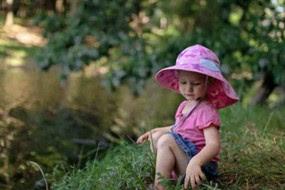
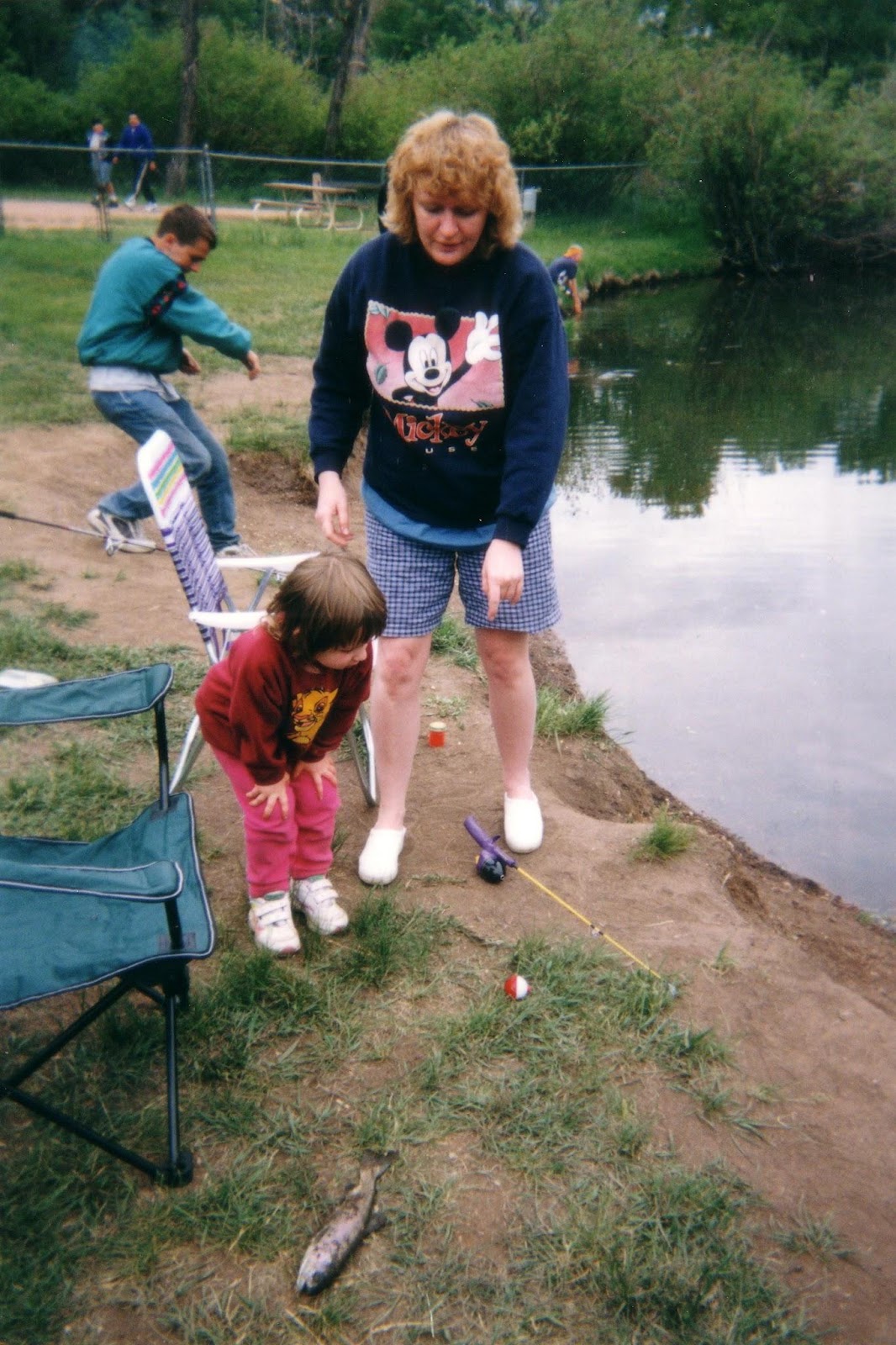
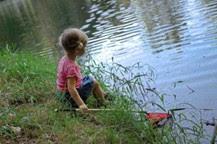
The pond is an amazing place to explore. There are so many things for kids to learn and discover by visiting one and it’s totally free entertainment. My little guy will happily play at our favorite little pond down the street for hours if time allows it! He loves to try and catch the minnows, sift through the sand and splash in the water.
Easy to Make Homemade Toys for Water Play
On our most recent visit, I brought along a few simply made items to add to his fun and learning experience. Before we left, we gathered a few sticks from the backyard and made a simple fishing pole with a larger stick he found and some twine, a little raft, and a sand sifter from some tulle and an old embroidery hoop that I had.
He enjoyed playing with all of these homemade toys, but the sand sifter was his favorite. Each time he sank the sifter under the dirt in the pond and came up with something, he got so excited! He also used the sifter to collect all of the treasures he found like small plants, algae and different shells.
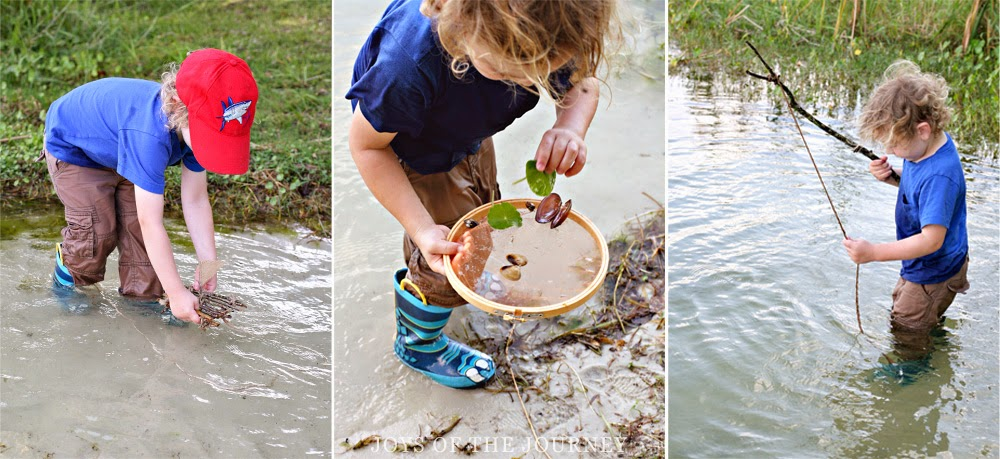
For the sand sifter, I cut out two circles from some tulle a little larger than the 7 inch embroidery hoop. I took the hoop apart and placed one circle of tulle on top of the inner hoop and one on the bottom and stapled them to the hoop so they sandwiched it and then put it back together. That’s it! So simple and my little guy enjoyed it so much!
He used it to sift, to collect things and for catching minnows with it like a net. Pond play invites children to use their imaginations while playing and promotes creativity while learning to appreciate nature. My little guy put different found treasures on his wooden raft and pulled them around the pond. He caught imaginary fish, sharks and dolphins with his fishing pole and had a blast just splashing around in the water and playing with the sand!
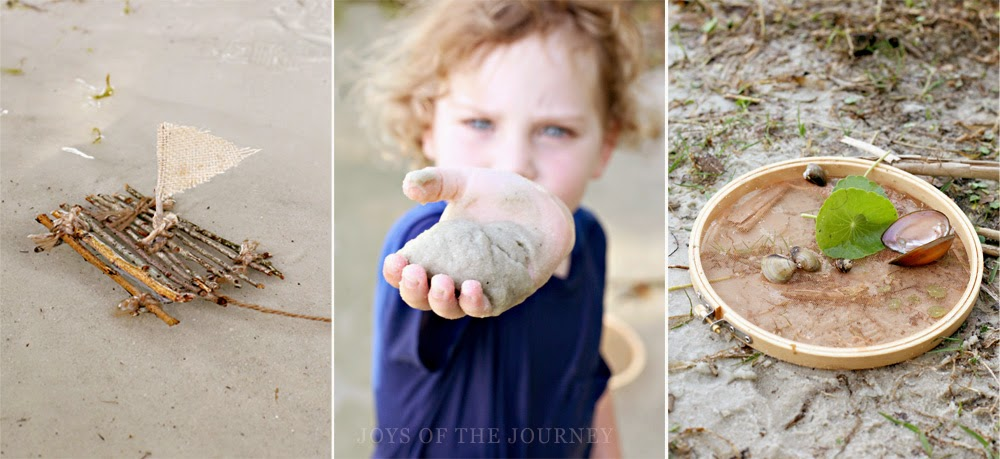
MAKE IT SPECIAL
Take pictures, laugh a lot, be slow and playful, do whatever it takes to make you and your baby super happy during beach time. It won’t take much for your little one to fall in love with the truly remarkable beauty of spending a day with family at the beach.
Follow your child’s interest in exploring the lay of the land, and by being open to their natural curiosity, you can definitely help your child to develop a healthy love of not just the beach but of the great outdoors. For more information on water and beach safety, check out these safety tips from The American Red Cross. Be sure to visit your state tourism board website to find the best family friendly beaches near you.
3 Reasons to Explore Wild Water & Tips to Keep Everyone Safe and Having Fun
I know that many of you already love exploring rivers and streams with your kids. I know because I’ve seen your pictures. But I’m writing this because if I can persuade just one person that there is something wonderful and unique about splashing around among the gentle rapids of a river, it’s worth it.
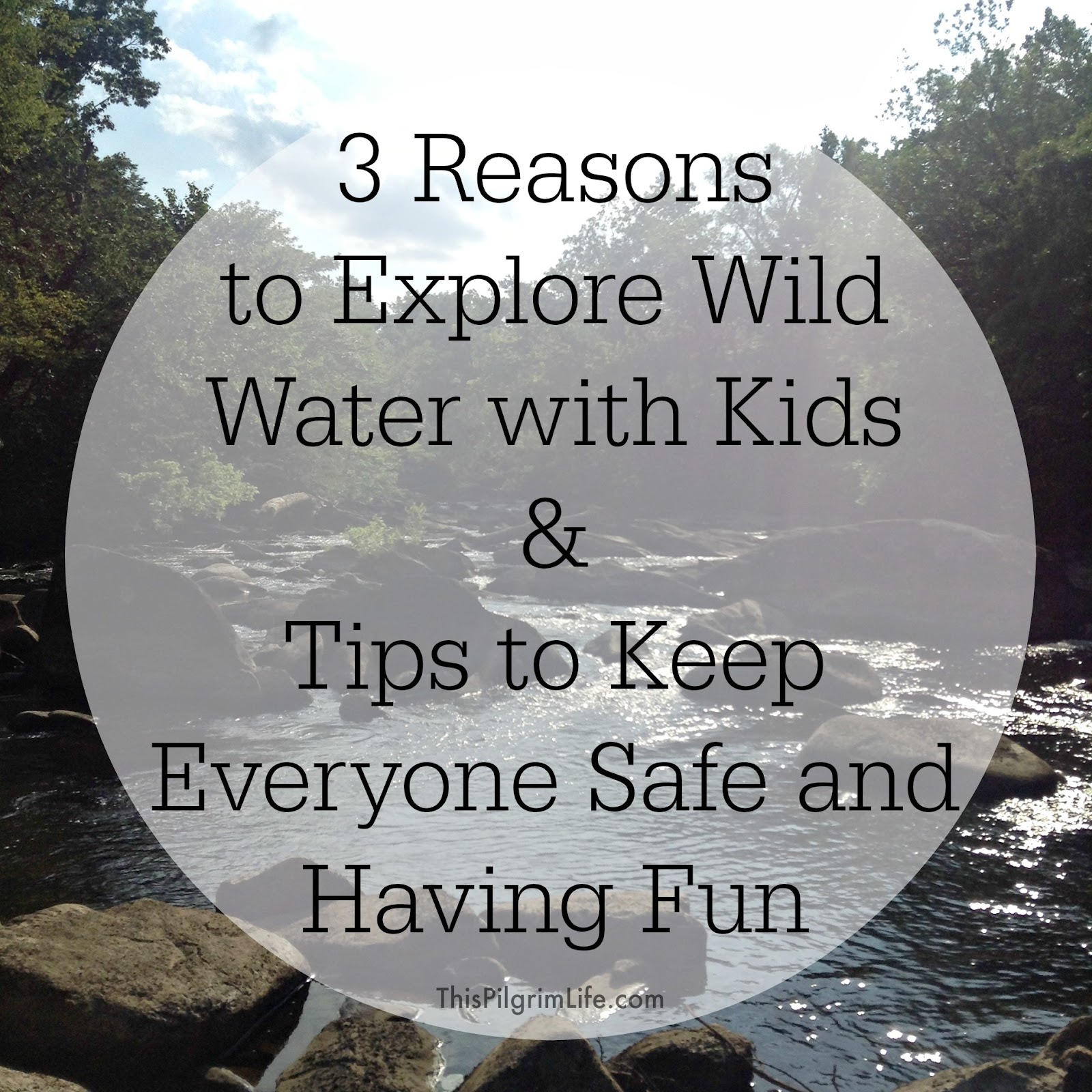
This is our first summer that our family has a pool membership. The pool has only been open a handful of days and we’ve already been twice. Each of us are very excited about the prospect of spending many afternoons poolside.
So I wasn’t surprised my middle child asked why we weren’t going to the pool instead as we headed to the river yesterday evening . The pool is new (to him) and obviously a lot of fun.
It wasn’t long, though, before all disappointment disappeared in sight of the river. We parked along the bank and unloaded our gear… ourselves, a net and one small tote bag with a few of supplies.
Across the river and through a small field, we came to our spot. Shallow water with plenty of rocks and small rapids to explore.
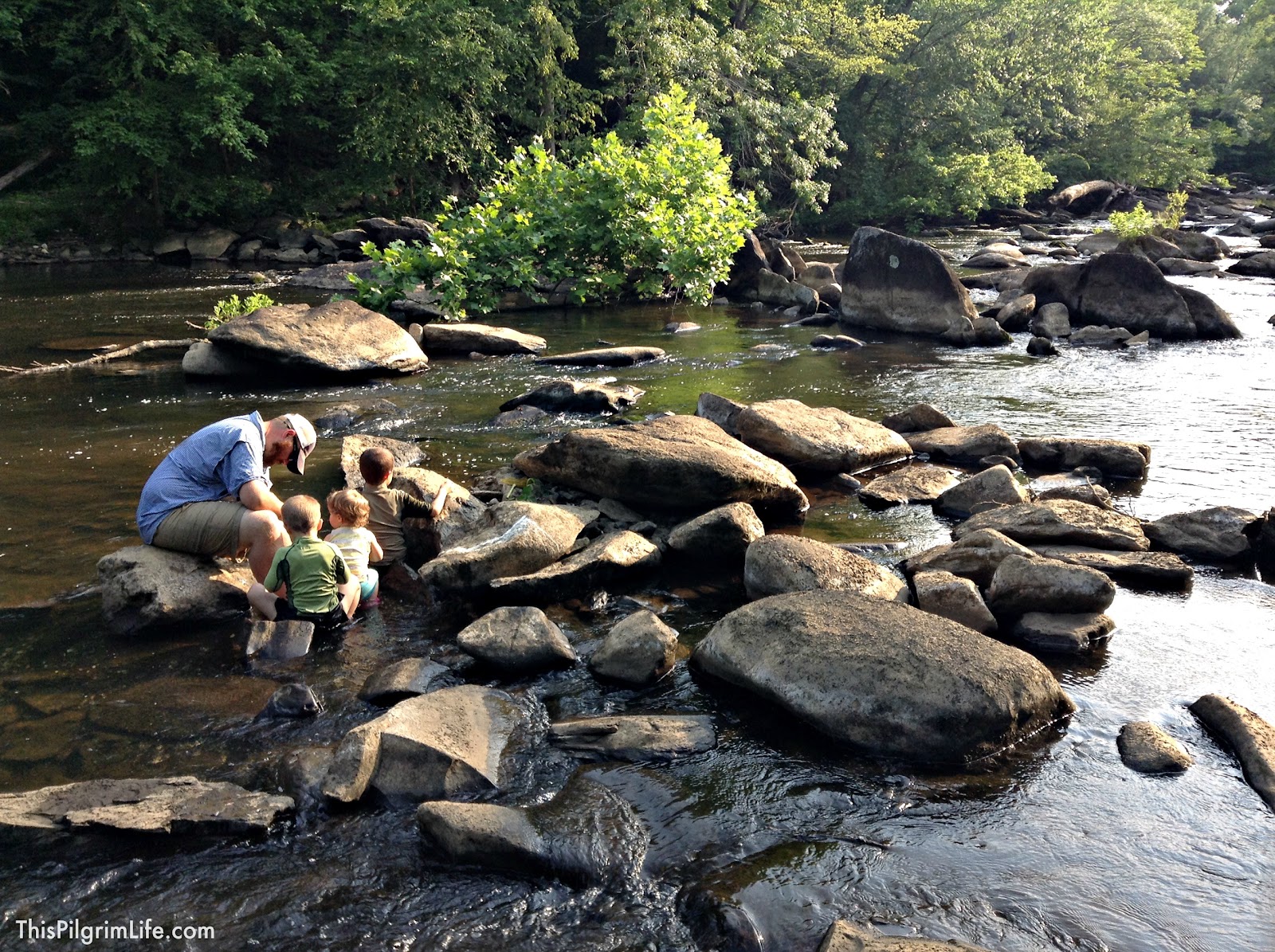
The next hour and a half was spent searching for clams, climbing on rocks, pretending to be snapping turtles, examining wildlife, and generally loving the water.
Moments of natural wonder and feelings of being so incredibly thankful for each other and the ability to appreciate God’s incredible creation.
At least, those were my feelings. They are what I hope are being passed on to my children too.
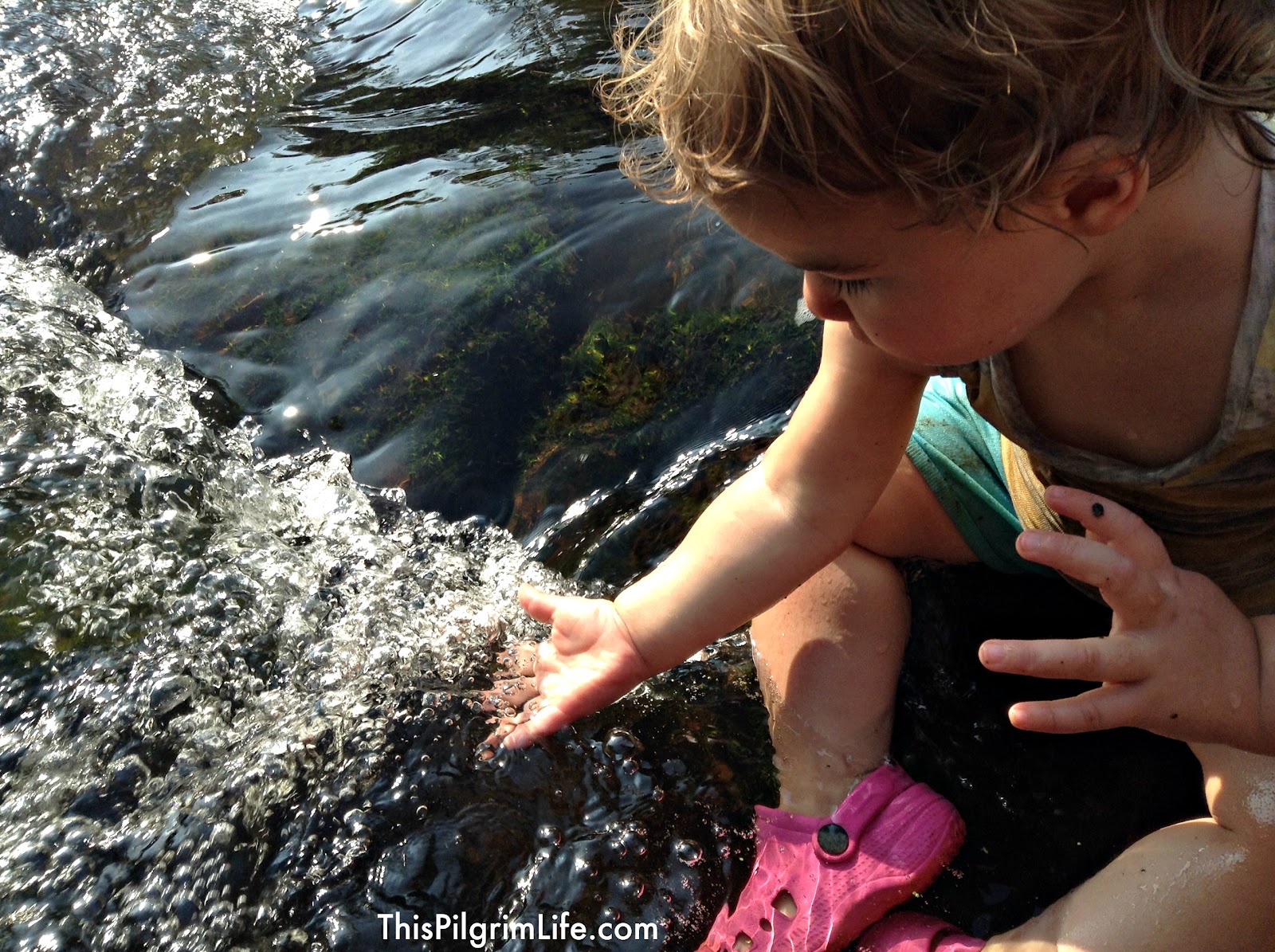
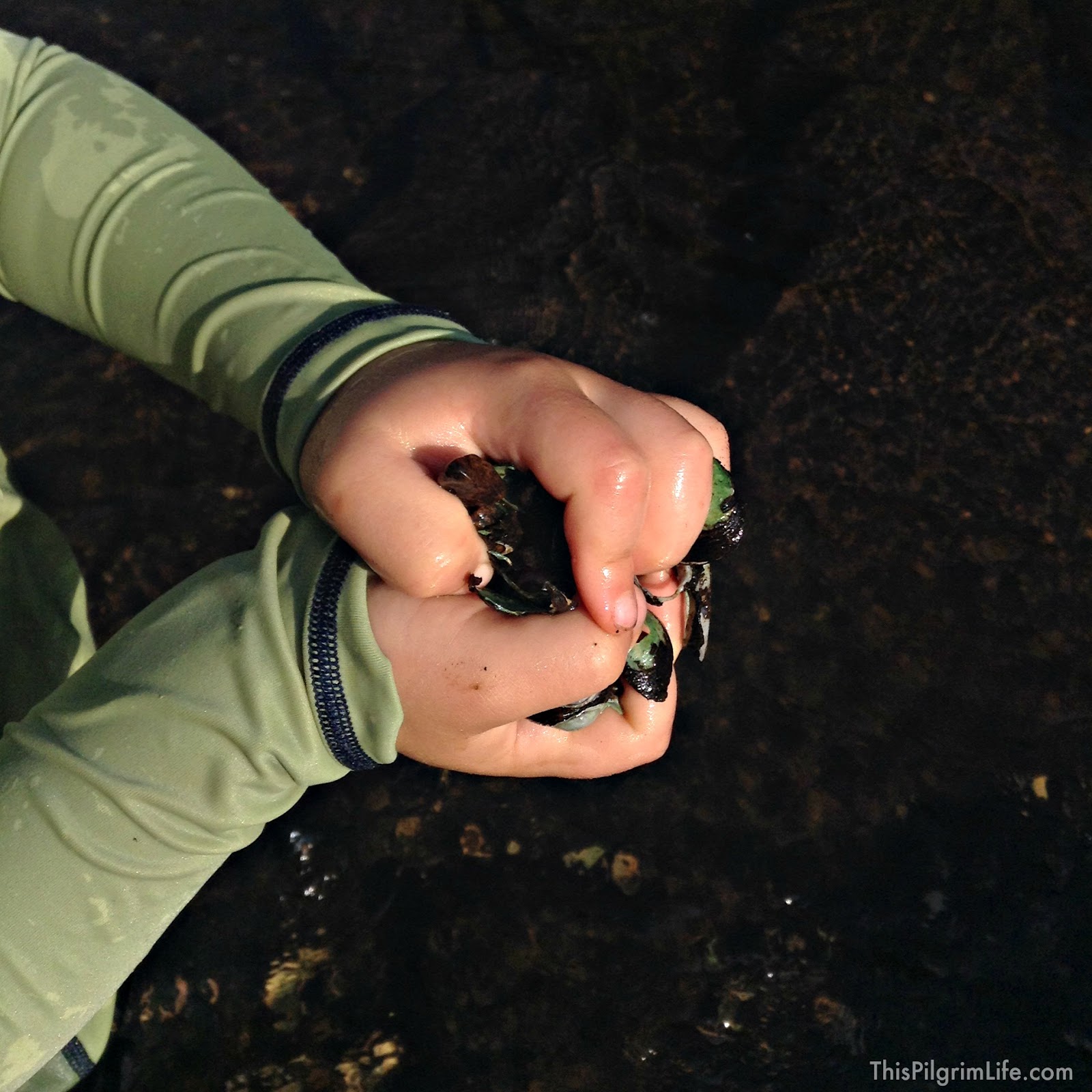
Exploring wild water with our kids is hands down one of our favorite things to do together.
We are members at our science center, frequent players at parks, and there is seldom a week that doesn’t find us at Costco or Target or both. We enjoy doing all these things together but there is something intrinsically different about being in the wild, in nature, together.

So while I wouldn’t ever try to persuade you to give up floating around in your local pool this summer, I will encourage you to find some wild water of your own…
3 Reasons to Explore Wild Water with Kids
1. Solitude, scenery, & stress relief
When we arrived at the river yesterday evening, the contrast between wild water and swimming pools was clear. No one was around. The only sounds we heard were the sounds of the water splashing over the rocks and the sounds our children doing the same.
Along with the peaceful solitude of the river is its impressive scenery. Without fail, every.single.time I go out and explore rivers and streams, I’m in awe all over again of the beauty of God’s creation. The sun shining through the trees and reflecting on the water is enough to stop me in my tracks.
Studies have shown that being outdoors in such serenity is proven to be a stress reliever to kids and adults alike. If for no other reason, go out and enjoy the quiet in order to unwind and slow down the normal pace of life for a while.
2. Countless learning opportunities
As my eldest matter of factly stated when we left the river yesterday, there is more to learn about at the river than the pool because nature is there. There is no nature at the pool.
My soon-to-be five year old gets it. From the grasses on the banks to the creatures in the water to the herons in the air. Everywhere you look, there are things to admire and examine. You just have to look.
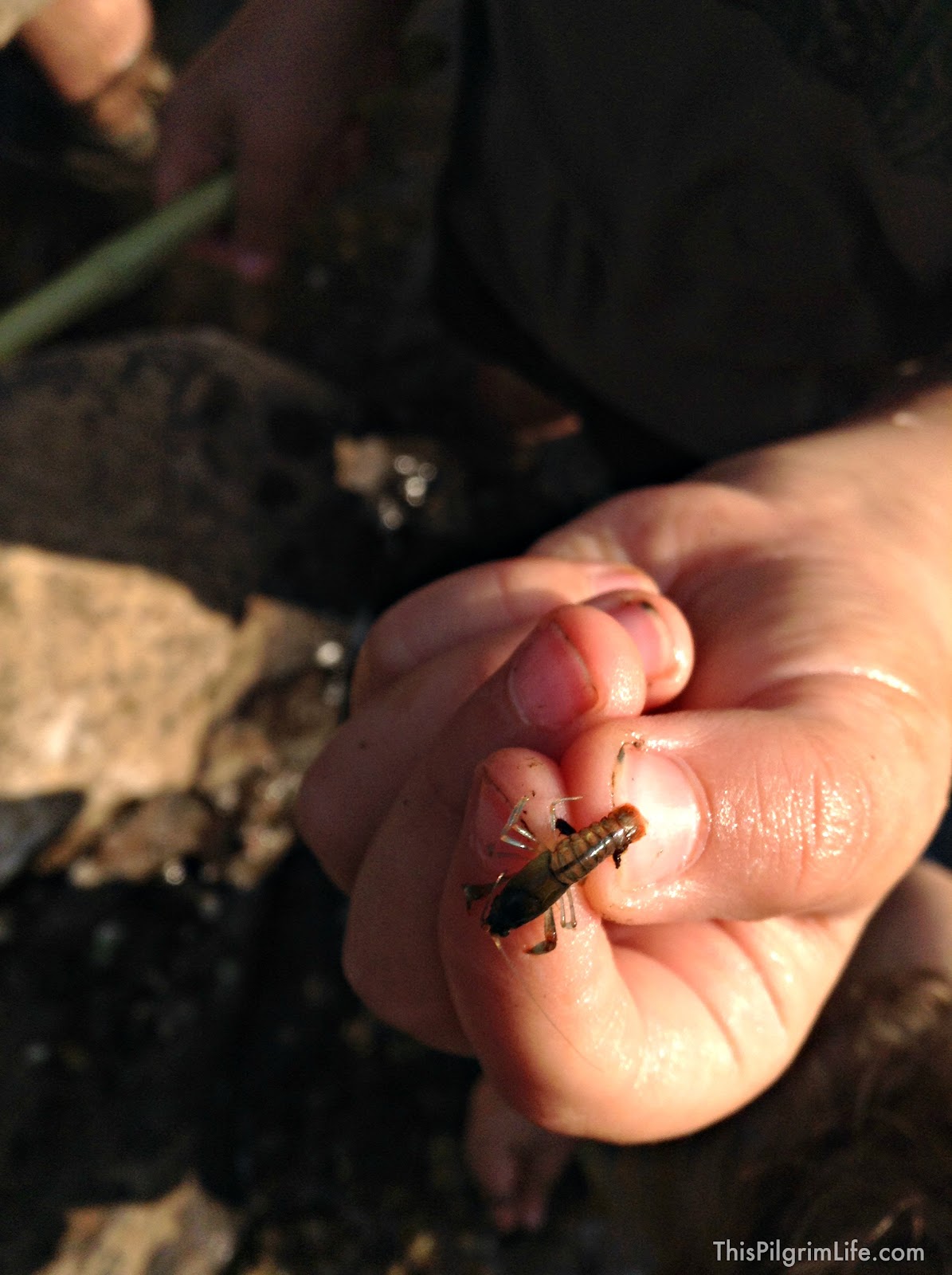
Start by simple playing and exploring freely, no pressure to make great discoveries, and learning opportunities will inevitably present themselves. Whether or not you do anything more at home, the simple act of looking and talking is a great boon to your child’s education.
3. Greater strength and agility
Yesterday I watched my toddler standing upright in the shallow areas of the river, bending down to dig up clam shells, wading through the water, and climbing up on the rocks around her. This is just her second or third time on her own in the river.
I saw my three year old confidently crawling across rocks and over small rapids, pretending to be a turtle and using both his hands and feet to carry him safely through the water.
My tall five year old, the most capable and confident in the water of my three children, is learning how to walk sure-footed through the water. To avoid the slick rocks and to catch his balance when he doesn’t.
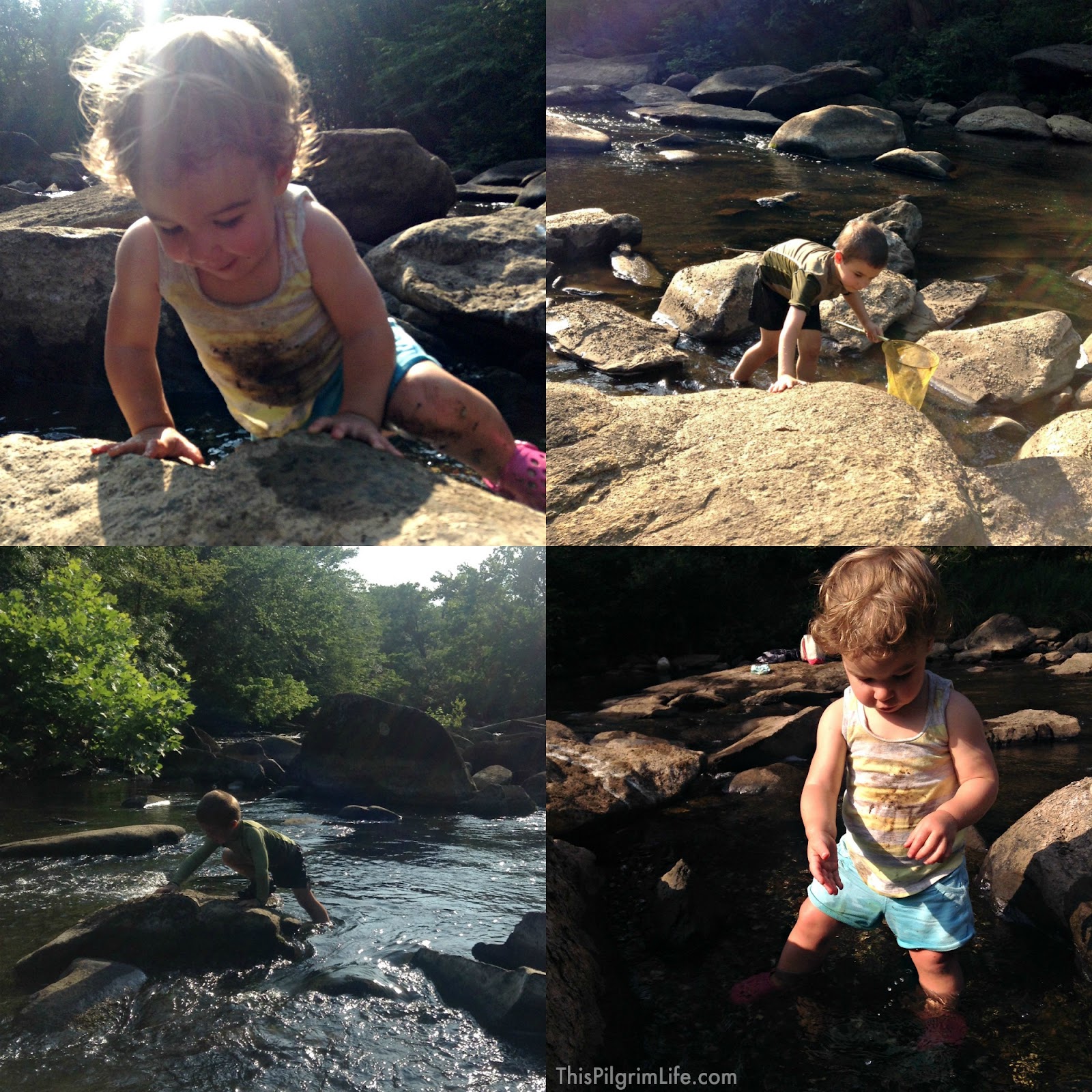
Our kids are learning from us to be safe in wild water and they are gaining more ability and confidence each time we go.
“When going on outdoor adventures, the temptation for many is to rope off hazardous areas and create a “safe” zone for their children. But never for a moment think that you can childproof the wilderness. It can’t be done. What’s more, it shouldn’t be done. Children learn to safely interact with wild places by interacting with them. Even toddlers...”
–Babes in the Woods
Tips to Keep Everyone Safe and Having Fun
Wear the right shoes.
Leave your flip flops at home and stick to shoes with toe and heel straps, as well as a good sole. Bonus points for shoes that protect your toes. Our boys live in KEEN sandals during the summer and we have never been disappointed in them.
Look for good access to avoid steep banks.
Find a spot on the bank that will be safe to get down and to climb back up when are all wet and tired.
Let an adult wade first.
If you are in an area that is new to you, wade out first before your children to check for any drop-off or especially mucky areas in which they might sink.
Drink lots of water.
Any time you are out in the sun is an important time to drink lots of water. But often being in the water makes us think we aren’t really thirsty. Be sure to drink water and encourage your kids to drink water whether or not you feel like you need to.
Wear old, fast drying clothes.
I have a stash of fast drying shorts and rash guard shirts that I have found over the past couple of years at Goodwill reserved for the times we are out in wild water. My kids can get dirty without concern, and I know that they will be comfortable for whatever activity they do.

Bring: nets and a container for treasures.
Nets aren’t really essential when hands will do just as well, but having a small bag or pail to store a few found treasures in is. Being able to bring home a few interesting finds makes the trip more special and opens up more opportunities for identification in field guides and recording memories in nature journals.
Don’t bring: valuables or anything not meant to get wet.
Leave most valuables at home or in the car. If you need to bring a phone, keep it in a safe place on the bank (not in your pocket!). You don’t want to be worried about getting it wet if you accidentally slip or be encumbered from really playing with your kids.
Be observant.
It is good to be aware of what poison ivy looks like and what potentially harmful snakes live in your area so that you can avoid both if need arises. We have seen both and have never had a problem with either. I will share more on both in an upcoming post, but for now, just remember that snakes generally do not want to be any closer to you than you want them to be. Any snakes we have seen have been quick to get away as soon as we approach.
Don’t know where to go? Check Google maps, ask a friend, or call a local fishing shop. With an angler for a husband, I am certain that last option is able to point you in the right direction!
So tell me? Are you convinced? If not, what’s holding you back?
More in the {Real} Magic Kingdom Series:
More Shoretime Fun:
12 Family Beach Games to Have Fun in the Sun
Beach Bag Essentials
Take Great Photos of Your Kids at the Beach
For More On Shore Fishing Click Here
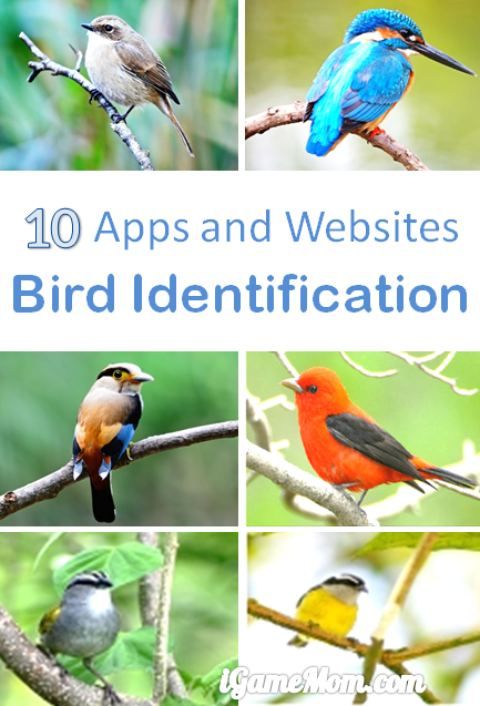
10 Apps Websites for Bird Identification
Wherever there is water, there are birds so I included this link 10 apps for kids to learn bird identification, wonderful nature science learning tool for kids from preschool to high school. | STEM
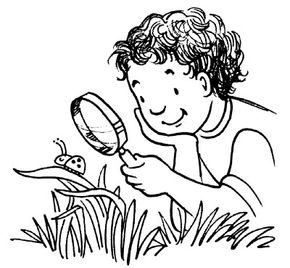
Have you ever wondered what goes on between blades of grass, or what you can find flowing along with the water in a stream? An easy outdoor science activity for kids can help you find the answers.
There's a whole world out there, waiting to be investigated and explored.
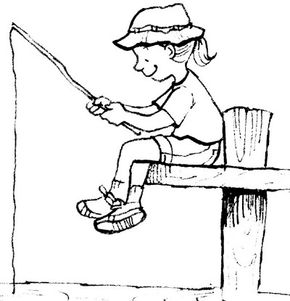
There's lots to do at the lake or river--watching for a nibble with our homemade fishing pole!
Pack up the car and head for your local beachfront -- it's time for some fun with lake activities for kids.
There are plenty of crafts and activities for the family to do on a mini-vacation at the local beach. These activities will teach you about the local wildlife and might even enable you to catch some fish.
It's Huck Finn all over again with this easy-to-make fishing gear. Find out how to make a homemade fishing rod.
Keep reading to learn how to find out what's going on underwater!
For more fun outdoor activities, check out:
Do-It-Yourself Snorkel Mask
Now you can go snorkeling without even getting your face wet with the Do-It-Yourself Snorkel Mask!
So what's there to do when you're standing knee-deep in a lake and you're just not up for a swim? Use a "snorkel mask" to check out what's going on below the water's surface!
What You'll Need:
Plastic two-liter ice cream container
Safe scissors
Plastic wrap
Tape
Rubber bands
Step 1: Cut out the bottom of a large ice cream tub. Adults may want to do this step for younger children.
Step 2: Cover this hole (and the sides of the container) with a large piece of plastic wrap. Tape the wrap in place.
Step 3: To make sure the plastic wrap stays put, slide a rubber band over it at the top of the container. Do the same at the other end.
Now you're ready for some underwater exploring! Place the plastic-covered end of your mask in some shallow water. Then, look through the open end of the mask and see if you can catch a glimpse of plants and animals in their watery home. Be sure you don't get any water inside the mask, though, or it'll sink like a stone!
Keep reading and you'll learn to catch fish the old-fashioned way!
Homemade Fishing Rod

You'll get nibbles aplenty with this homemade fishing pole!
Your child doesn't need expensive equipment to catch fish. The fish don't care if you have a homemade fishing rod or a store-bought one.
What You'll Need:
Sturdy stick, four to five feet long
Fishing line
Safe scissors
Fish hook
Plastic bobber
Bait
NOTE: The best type of stick for your fishing rod is strong, yet slightly flexible. Bamboo, about one half-inch thick, would be ideal. Find something similar in your own yard or campground.
Step 1: Tie one end of the fishing line to the handle (use the thicker end of the stick as the handle). Wrap the line in a spiral around the stick until you reach the tip.Tie the line firmly to the tip, but don't cut the line yet.
Step 2: Unroll the line about a foot longer than your stick, and cut it off the roll. You should have a continuous length of fishing line extending from the handle of your stick down to the hook. (That way, if the fishing rod breaks in the middle, you still have the line in your hand.)
Step 3: Tie a hook to the end of the line. Fasten a bobber to the middle of the line. You'll want to use a ball-shaped red and white bobber with a spring-loaded hook that will fasten it anywhere on the line.
Now you're ready to fish! For bait, use worms or other material from a sporting goods store.
For More On Shore Fishing Click Here
Make an Awesome Aquascope

Awesome Aquascope
Have you ever looked at the surface of a pond or stream and wished you could see what was going on down there? With this awesome aquascope, now you can.
What You'll Need:
Half-gallon milk carton
Knife
Plastic wrap
Large rubber band
Heavy tape
How to Make an Awesome Aquascope:
Step 1: Take an empty half-gallon milk carton, and cut the bottom and top off the carton.
Step 2: Stretch clear plastic wrap over one end of the carton. Use a big rubber band to hold it in place tight, or use heavy tape. You just made your own aquascope.
Step 3: Head for that pond or stream. If the water is deep, have an adult along with you. Hold the plastic-covered end of your aquascope just under the surface of the water, and look through the other end. What's going on down there? Be careful not to harm any of the wildlife.
If the aquascope still doesn't get you a close enough look, keep reading to learn how to observe water organisms with a pond net instead.
Bug Dipping Net
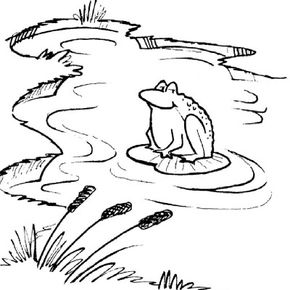
Bug Dip Net
One way to explore water life is to create a pond or bug dip net and catch living organisms for observation. Don't forget to return the animals back to the pond when you're done.
What You'll Need:
Stiff wire coat hanger
Broomstick- stick from the woods or a dowel
Heavy wood staples (the kind that are hammered in)
Tape measure
Waterproof tape
Safe scissors
Cheesecloth or wide-mesh nylon net
Needle and thread
Tall rubber boots
Large metal pan (such as an aluminum roasting pan)
Bucket
How to Make a Insect or Bug Dipper Net:
Step 1: To make a dip net, bend a stiff wire coat hanger in the shape of a D, leaving the hook in the middle of the straight part of the D. Straighten the hook and use heavy wood staples to fasten the straightened hook to the end of a broomstick.
Step 2: Fold the wire back over the last staple. Wrap the end in waterproof tape.
Step 3: Measure the distance around the wire frame. Cut some cheesecloth that width and 18 inches long.
Step 4: Sew the ends together into a tube. Stitch one end of the tube shut. Sew the open end of the tube to the frame by turning the edge over the frame then stitching the fabric to itself.
Step 5: To use your dip net, put on rubber boots and wade into a pond (with an adult along). Be careful not to wade in water deeper than your boots.
Step 6: Hold the net in the water with the handle upright and the net resting on the pond bottom. Have a bucket with a little water in it ready
in the other hand.
Step 7: Move slowly through the water and gently move the net up and down. Stop now and then and dump the contents of your net into the bucket. After you've done several nettings, come ashore and dump the bucket into a wide pan. Add a little water so your animals can swim.
Step 8: When you are done, return the animals to the pond. Some pond animals (such as native turtles) are endangered because of over-collection.
Put on your thinking caps -- continue on the next page to learn all about the earth's oceans and rivers.
What's in the Water?
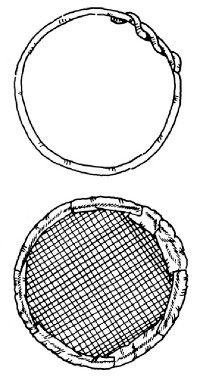
Find out what's in a river with a DIY strainer.
You'll be amazed by all the things that travel down the watery highway of a creek! Make this gadget and see what you can catch.
What You'll Need:
Wire coat hanger or piece of strong wire
Screen or mesh
Duct tape
Step 1: Bend a wire coat hanger into a rough circle.
Step 2: Take a piece of old screen, and bend it around the coat hanger. (Be careful not to stick yourself with the screen. You may want to wear work gloves or gardening gloves while doing this.)
Step 3: Apply duct tape to hold the screen in place.
Step 4: Go to a creek or stream with an adult. Put your screen into the current and hold it there for a few minutes.
Step 5: Take out the screen and see what the current has carried onto it.
You might find seeds that will land on the creek's bank and grow into plants. Or, you might find water animals such as insects, minnows, or crayfish. (Put them back in the creek right away, so they stay alive.)
You might even find something somebody lost a long way upstream!
The next science activity will put you in the mindset of a famous explorer.
Exploration Activity
Discover your own uncharted territory with this fun and educational exploration activity! You can be an explorer when you visit a river, stream, lake, pond, or tide pool.
What You'll Need:
Notebook
Pen or pencil
In 1804-1806, Meriwether Lewis and William Clark were the first European-Americans to travel across what is now the western United States.
They kept journals full of notes and drawings to tell the rest of the world about all the strange, new things they saw: plants, animals, mountains, and much more.
How to do the Exploration Activity:
With an adult, visit a body of water near your home. Imagine that you are an explorer.
Look closely at the plants, animals, rocks, and other natural elements. Tell about them in a journal.
You can even make a map of the area for explorers who will follow in your footsteps. Don't forget that explorers may find all kinds of surprises. Meriwether Lewis met a grizzly bear one day, and had to jump into a river to escape!
Keep reading for a science experiment that shows what can grow in places you may not expect.
Kids can explore their prospects and see if they pan out with the activity on the next page.
Things Will Pan Out

See which things pan out in this lake and river activity.
When curious kids examine a riverbed, they'll be fascinated to see how things pan out. This lake and river activity for kids will get young explorers panning for treasure, just like hundreds of thousands of Americans did during the gold rushes of the 19th Century.
Hundreds of thousands of gold miners searched for their fortunes during the 1800s. Some of them went deep into caves to search for riches. Some panned for the gold they found. Your child can try their hand at gold panning too, using these easy tips.
What You'll Need:
Old pie pan
Cheesecloth
Fine mesh strainer
Riverside
Gather an old pie or cake pan, a piece of fine cheesecloth, and a metal mesh strainer and head for the riverside.
First, show your little gold digger how to gather a scoop of riverbed dirt in a metal strainer. Then, help them rinse the finer dirt from the scoop using river water with the cake pan just beneath the strainer. The cake pan catches the finer dirt and metal that sifts through the strainer.
Help your child strain that finer material through cheesecloth, again using river water. Do they see any golden flakes? They might have struck gold, and even fool's gold is something special.
Beach & Shore Toys That Don’t Break the Bank
What are the best items to use from home at the beach for kids? Grab your Top 5 Household Items for Beach Toys list.

Top 5 Household Items for Beach Toys
I’ve had this happen multiple times. Your kids are bored with your beach toys. You forgot them. Or worse…they got “lost at sea.”
Instead of paying for more of them, you might have some of these ordinary household items around and collecting dust. Here’s my list of the Top 5 Ordinary Household Items that Make GREAT Beach Toys. As a Florida beach mom, these are must haves!
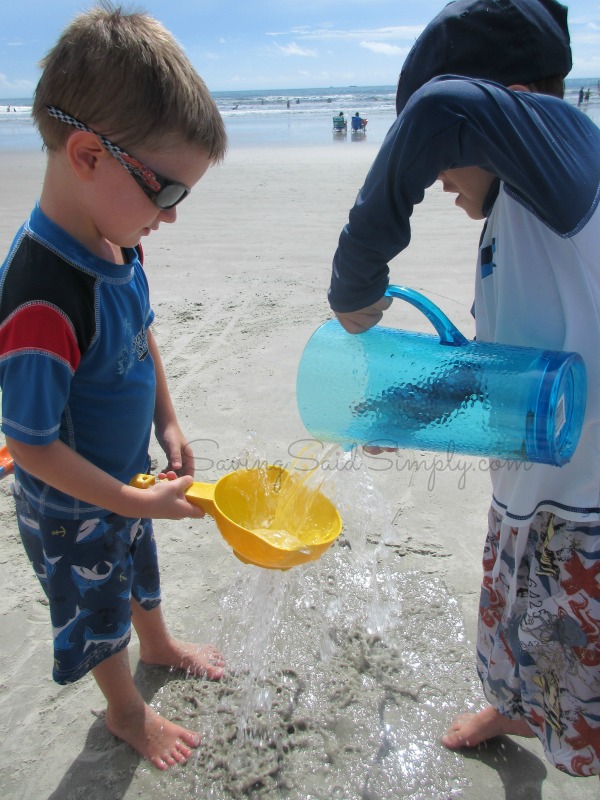
1. Strainer
Great for finding new treasures, collecting shells or straining water and sand!
2. Pitcher
A pitcher is wonderful! Take a plastic one to hold your new toys, fill with sand, water or both!
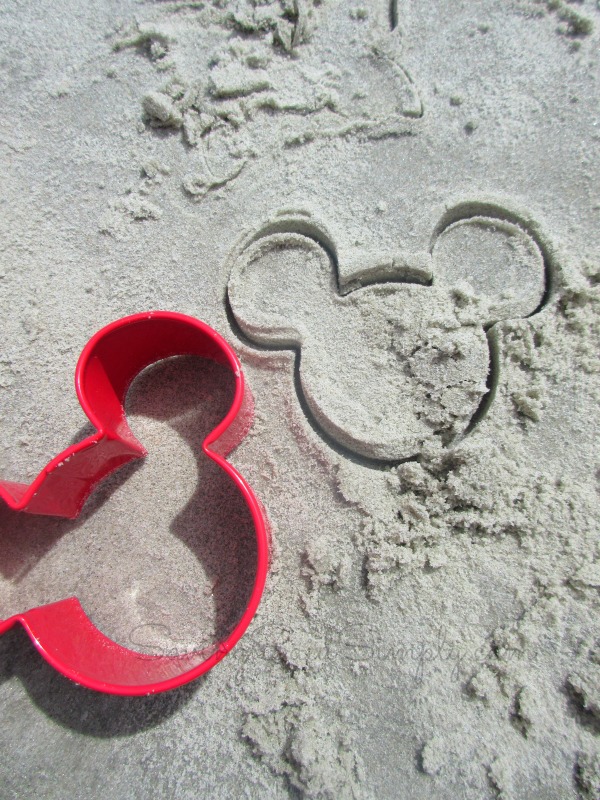
3. Cookie Cutters
Make new sand shapes with cookie cutters! Bring your child’s favorite!
4. Bath Toys
Who says bath toys are for home only? Take some old ones to the beach and give them life again!
5. Ice Cream Scoop or Measuring Scoop
Can’t grab sand without a digging tool!
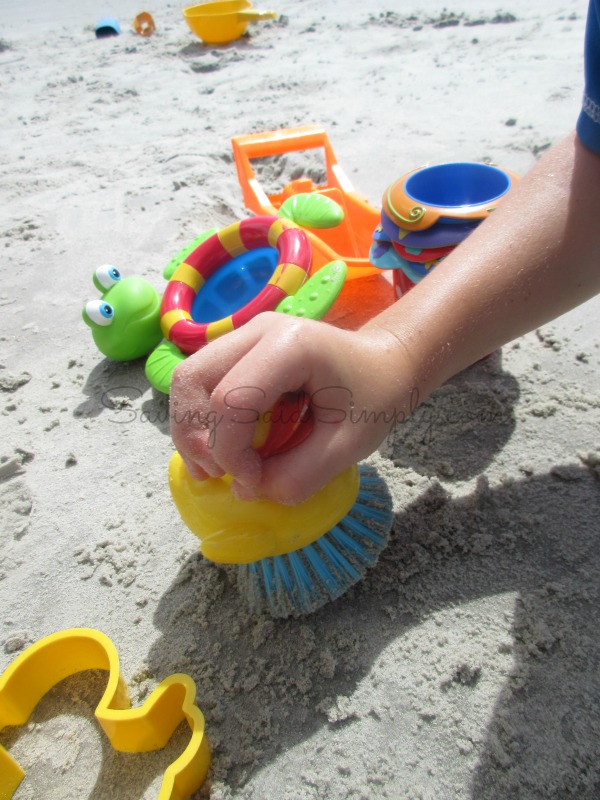
6. BONUS – Scrub Brush
I loved the idea of kids cleaning up the sand. Make new patterns, erase footprints or just smooth out an area for play.
How to Make Plastic Bottle Sand Scoops.
It’s cold here right now. Yesterday morning it was -2 degrees C in my kitchen (which is possibly because one wall and the ceiling are still made of blue tarps).
I think I was a hibernating animal in my past life, because when it is dark and dreary outside I just want to shut all the doors, pull down the blinds and keep everyone in. I know that’s not good for us, especially the kids, so I try to get outside every day, even if it is just a five minute walk up the drive to the letter box, or a a quick run around the play group at school pick up, but some days I really REALLY don’t want to!
Despite the freezing bite to the wind and frosty mornings, the sun has been shining here this week which has just been blissful. I can cope with the cold if the sun is shining!
So to encourage everyone outside into the sunshine, and to give the boys something to do while I potter in the garden, this week we resurrected our sand pit and made some plastic bottle sand scoops!
I’d been collecting various plastic bottles for a while now, knowing they’d be good for something (in the past we’ve made these cool fairy houses) and they were perfect for making scoops!
How to Make Plastic Bottle Sand Scoops.
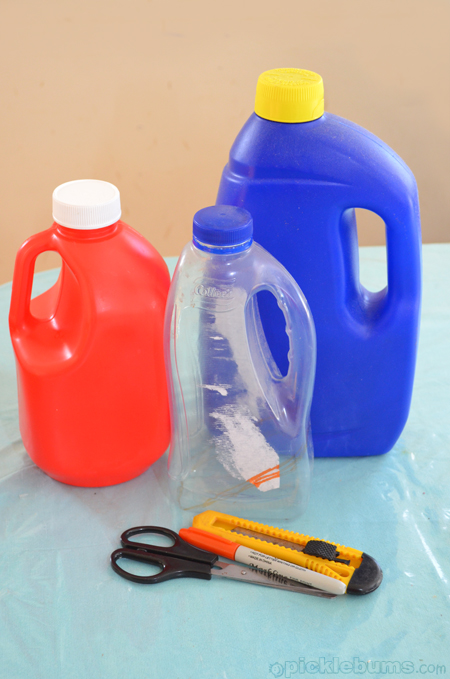
You’ll need:
Plastic bottles in any shape or size, with the lid.
Scissors and/or a craft knife
A permanent marker
Mark a line across the side of the bottle – from the handle down to the side. Make sure you leave enough plastic around the handle to keep it intact and strong, and cut down far enough on the side to make sure there is no lip left from the bottom of the bottle.
Make a starting hole with the craft knife and then cut along your marked line with scissors or continue with the craft knife. I find scissors easier to control, but some thicker bits of plastic may need a craft knife to get through.
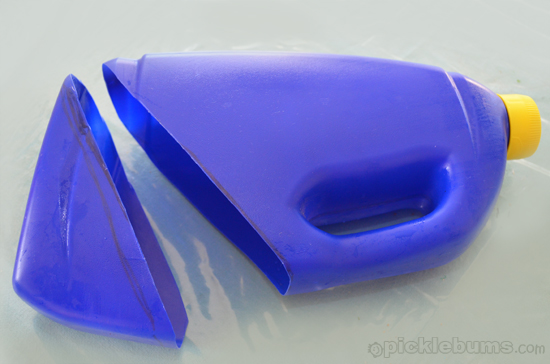
You can tidy up your cut after you’ve made it… cutting off any sharp edges and making corrections till you get the perfect looking sand scoop.
You can screw the lids on tight or take the lids off all together and you have a scoopey kind of funnel. You could have lots of fun if you melted holes in the lids and used the scoops with water or fine sand too.
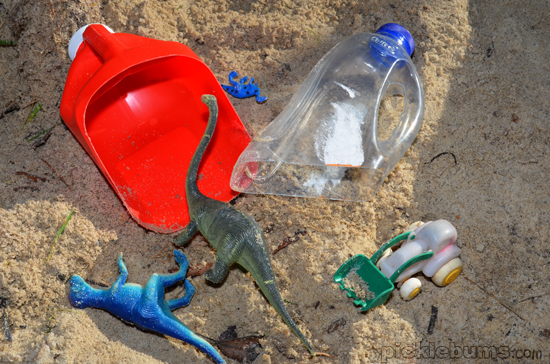
Our sand pit has definitely seen better days. It isn’t used as often these days with the big kids preferring dirt and plants and potion making to the sand pit. So the boys and I had to pull out a good few weeds before we could try out our scoops. I also dug over the sand pit with my big proper garden shovel. Fluffing up the sand makes it a lot easier for the kids to dig and scoop, it’s worth doing every now and then regardless of how neglected your sand pit is.

Now get out there and enjoy the sunshine while you can!!
Talking with Your Child
Talking with your kids about the different plants and animals they discover enhances their learning experience. My little guy found clams, snails, different kinds of algae and small lilypads. We talked about the animals that once lived in the shells and how the plants on the bottom of the pond help them hide from predators and keep them safe.
Incorporating Related Children’s Books
Books also help implement learning about the pond’s environment. Read a few before you go or bring a guide like this one with you. My little guy also enjoys this great coloring book that has the most beautiful pond coloring pages.
Have fun and enjoy discovering all the wonders of the pond!
We sure did!
Nature Book Club Monthly Linkup #8
This month’s Nature Book Club is all about water and we’ve got some awesome book-inspired nature learning activities to share with you! Let’s take a look:
Seasonal Pond Study and Printables from Barbara at Handbook of Nature Study
Pond Life Printable Pack from Emily at Table Life Blog (That’s me!)
Above and Below a Pond Unit Study and Lapbook from Tina at Tina’s Dynamic Homeschool Plus
Online Book Study about water cycle from Dachelle at Hide the Chocolate
STEAM Challenge – Does Water Ever Flow Up? from Erika at The Playful Scholar
Who Was?® What Was?® Where Is?® Book Series: Where is the Mississippi River? from Sharla at Minnesota Country Girl
River Exploration and Frog Catching from Thaleia at Something 2 Offer
*August theme:
Water: Streams, Rivers, & Ponds*
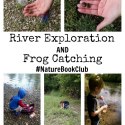
River Exploration and Frog Catching {#NatureBookClub} -
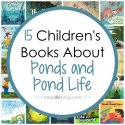
What to Read: Children's Books About Pond Life

All About Ponds | A Unit Study Resource Round Up
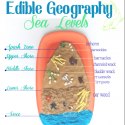
Super Seashore Watching Unit Study and Beach Lapbook

Exploring Water Quality with At Home Water Testing
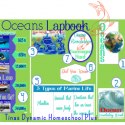
Ocean Unit Study and Free Lapbook
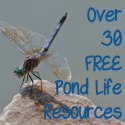

Turtles and Duckweed Nature Study

Exploring Pond Life with Over and Under the Pond ( Free Printables)

Exploring Ecology: The Many Parts of a Streambank - Eva Varga
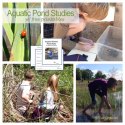
Outdoor Pond Studies: Getting Started with Aquatic Sciences
Always Think WATER SAFETY First!
** Never leave your child unattended near water, no matter how deep.**
Free guide How to test the quality of Open Water for bathing or swimming.
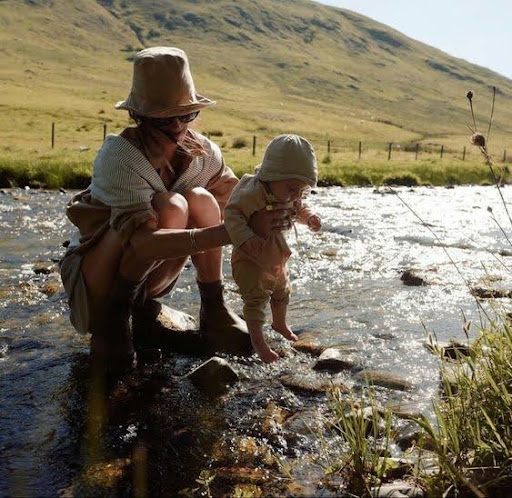
Streamside Unstructured Sensory Play
This post is all about turning a visit to your local stream into a sensory experience for the kids. Creeks and streams are full of amazing opportunities for kids to get immersed (literally!) in nature. Playing in or near a stream is not only a learning experience about the natural world around them, but it’s also a chance for kids to get wet, muddy and have a lot of fun! We’ve already covered all the amazing benefits of letting your kids play in the creek. Today, we have Brooke Selb from wreckingroutine.com sharing the benefits of streamside sensory play and how her family enjoys their local creeks and streams.

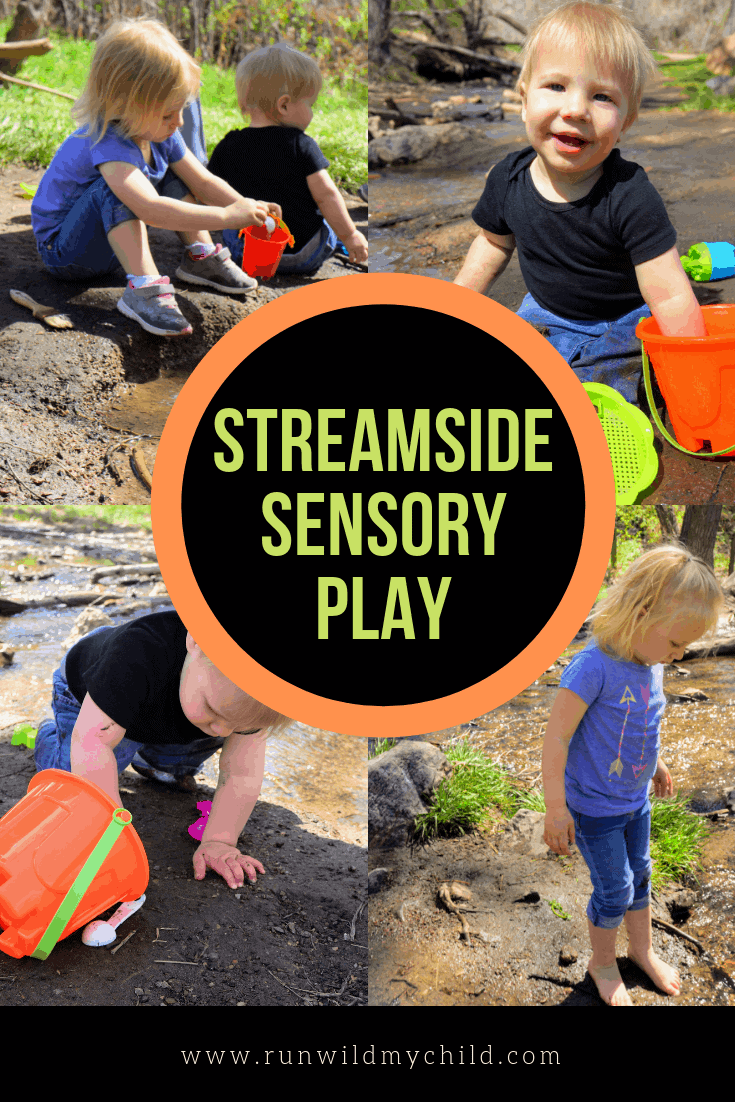
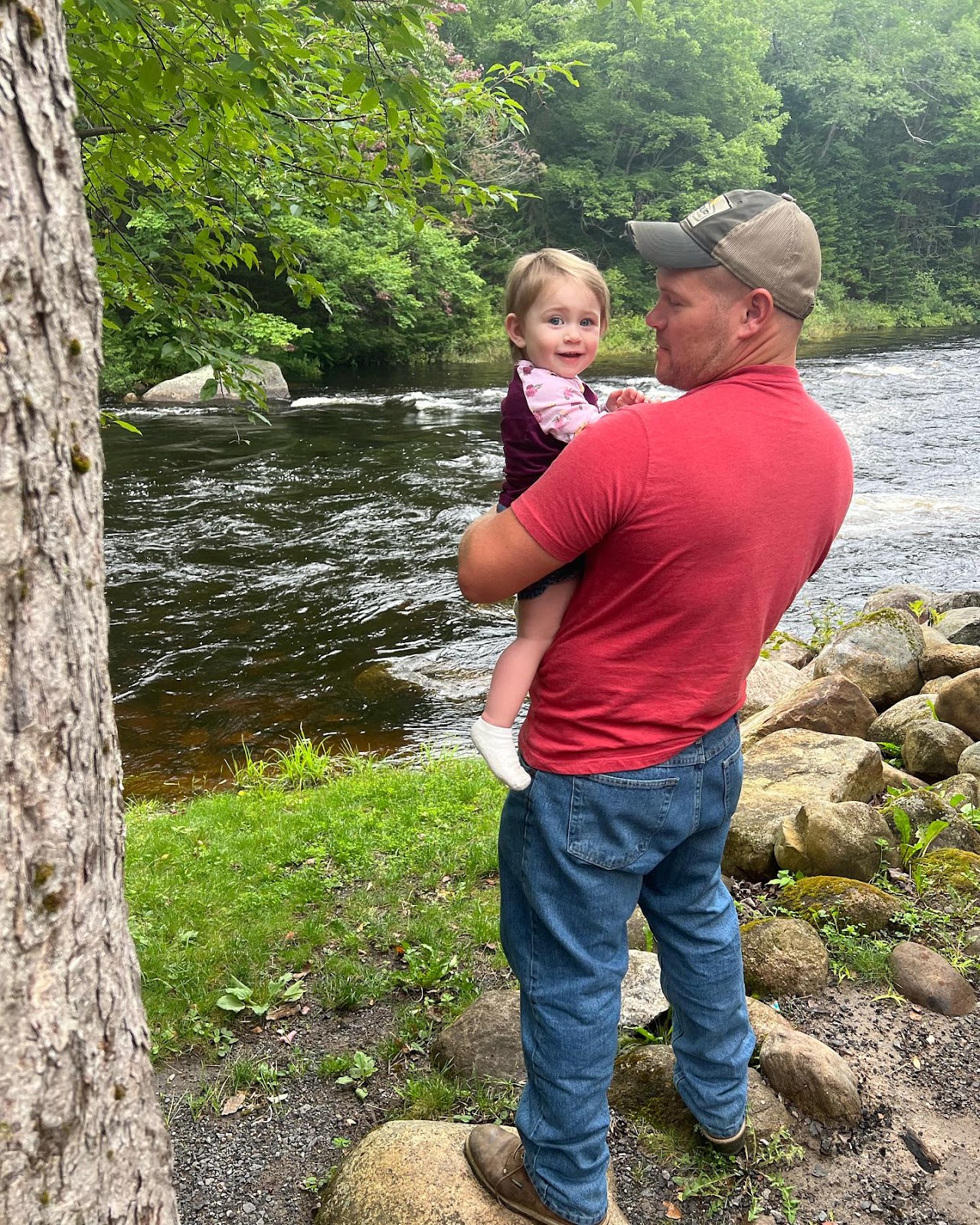
Trading the hikes for a stream
With two kids under the age of three, our days of hiking double-digit trails on a Saturday morning are no longer realistic. While our kids do pretty well on the trail, we are capping out around three miles. In fact, during our spring break staycation, we hiked two miles in mildly windy weather and both kids cried the entire time! Not the relaxing hike we envisioned.
However, both my kids (Hope and William) absolutely adore sensory bins of any kind (think rice, beans, dried pasta, and shaving cream). They also love being outdoors (just like their mom and dad). So, we combined those two things into something fun and took the arduous hikes out of our routine.
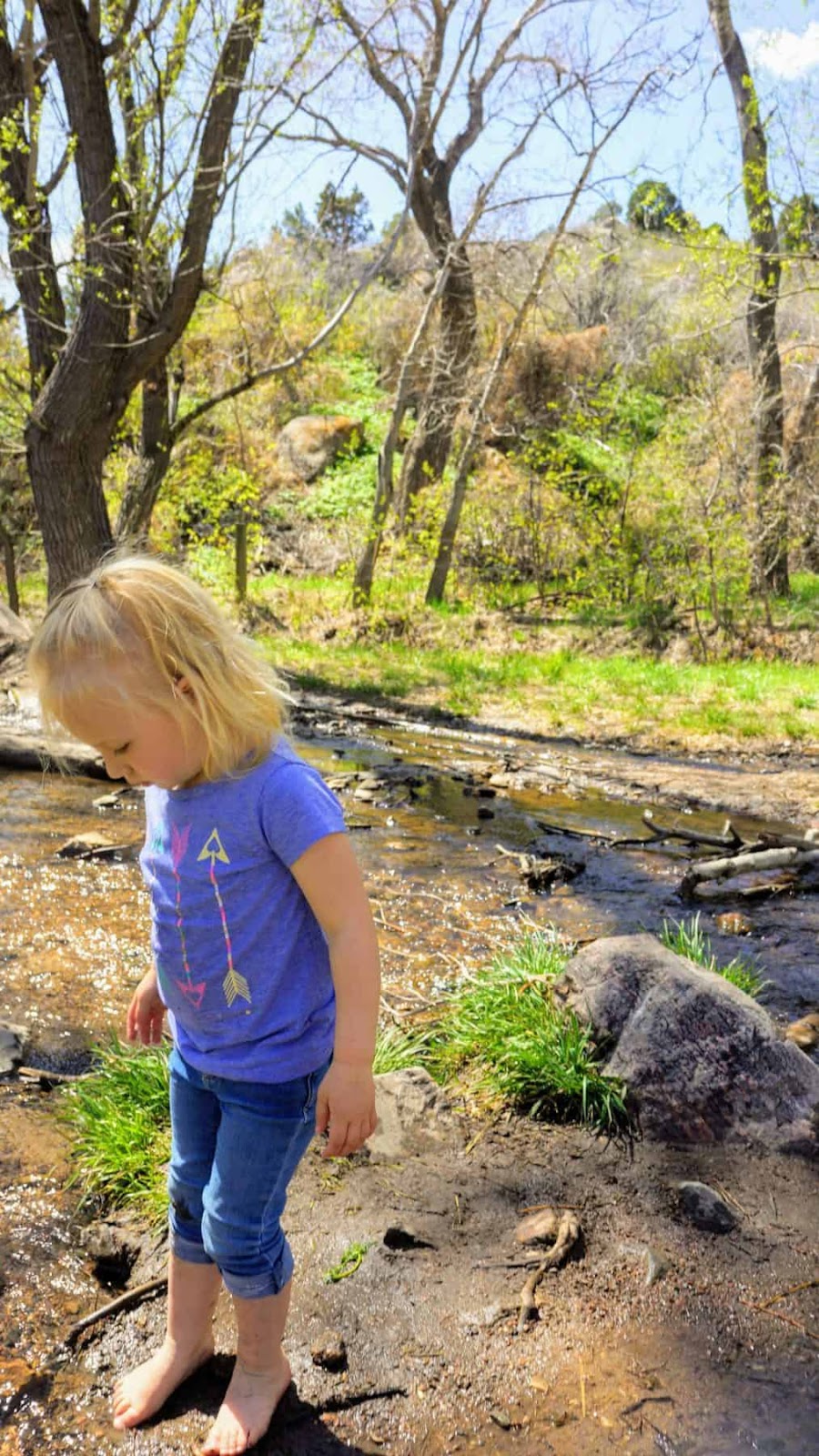
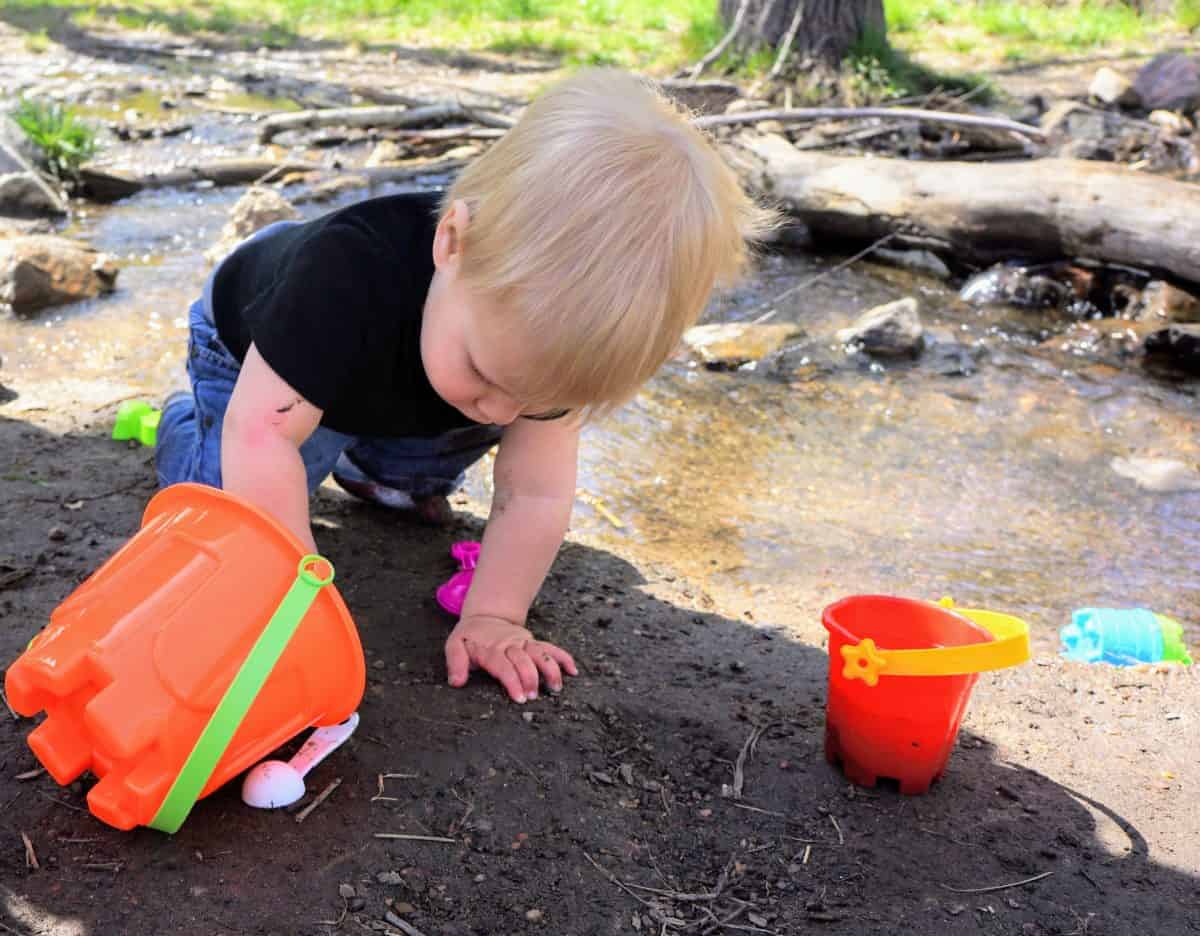
Streamside sensory play
Streamside sensory play is the perfect activity to get us all outdoors. We get to discover more about our surroundings, learn about local nature, and get messy. When I first realized how much Hope loved this type of play, we ended up venturing out to our nearby streams at least once a week. Now that the weather is warming up, we are back to it! Our girl could not be happier to share her love of outdoors and water with her younger brother.
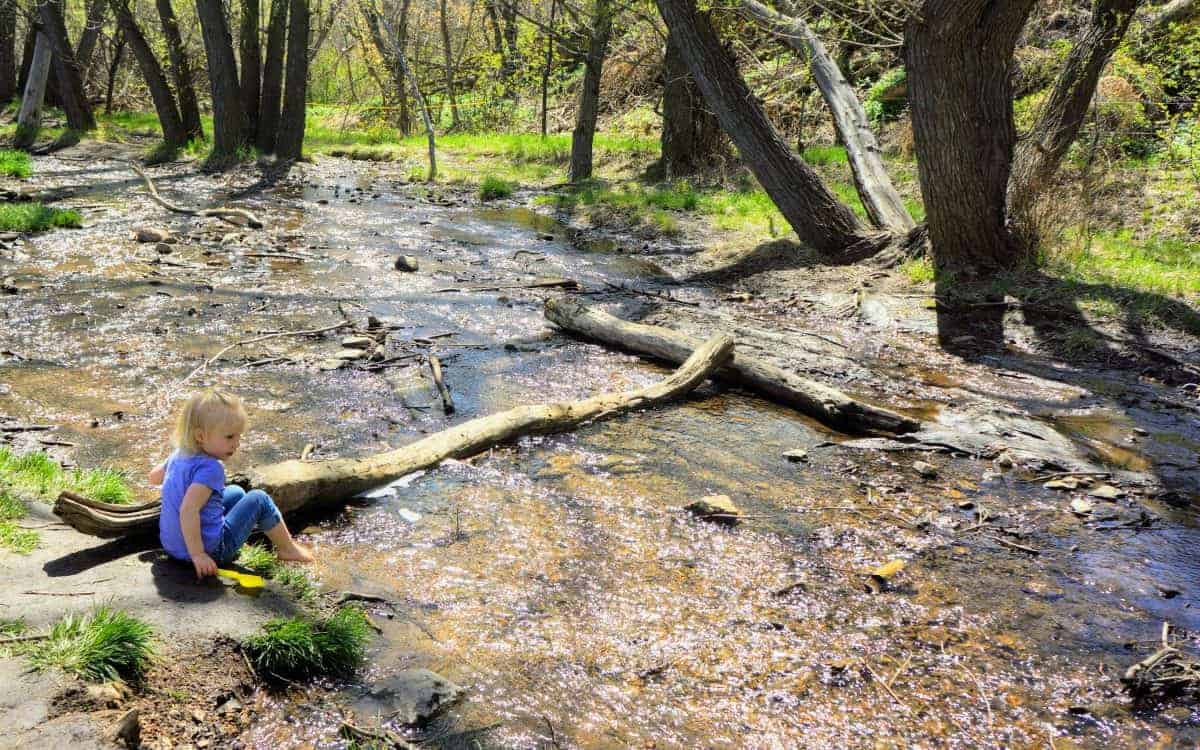
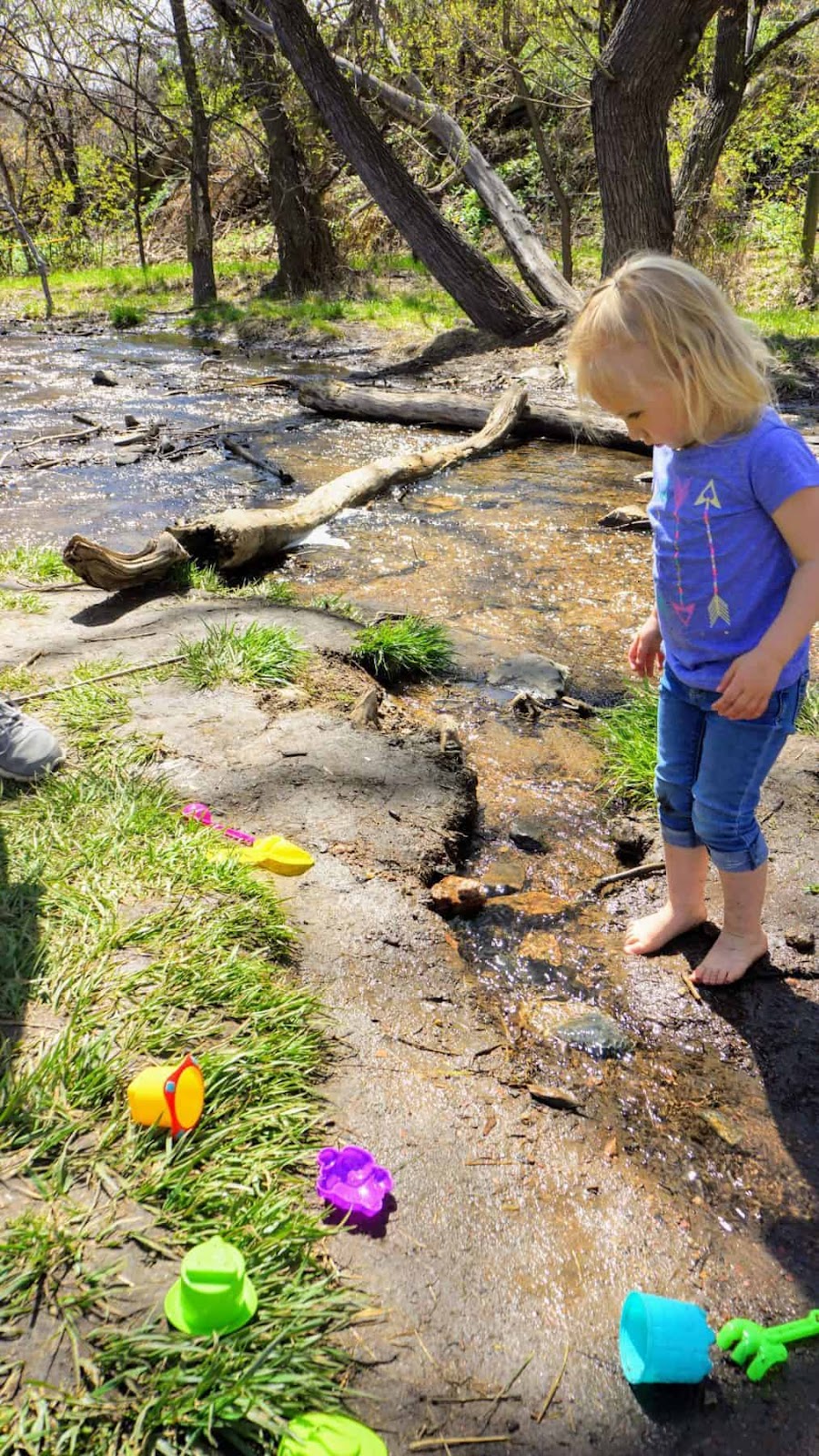
How to choose a good spot
I have found a few spots near our house in Colorado that are perfect for streamside sensory play. Some things that I look for in a good location are:
A flat and level area next to the stream. This prevents the kids from having to reach down into the water from slanted ground, which can lead to falls. We also look for flat areas so we can put out a blanket for William to sit on or as a place to rest and have a snack.
Location with a variety of textures. We like areas where the kids can get wet and muddy, with rocks or trees nearby. Gathering rocks and sticks to use in the water is all part of the fun!
Slow running water. I like the water to have a little movement. Not only does it help keep the bugs away, but it ensures that the water is not stagnant or smelly. Although, do not choose a spot with too much movement because when the toys inevitably slip out of wet hands, you want to be able to snag them before they get downstream too quickly.
Shallow water. The kids love getting in the water as much as possible, so shallow water helps me ensure they’re safe.
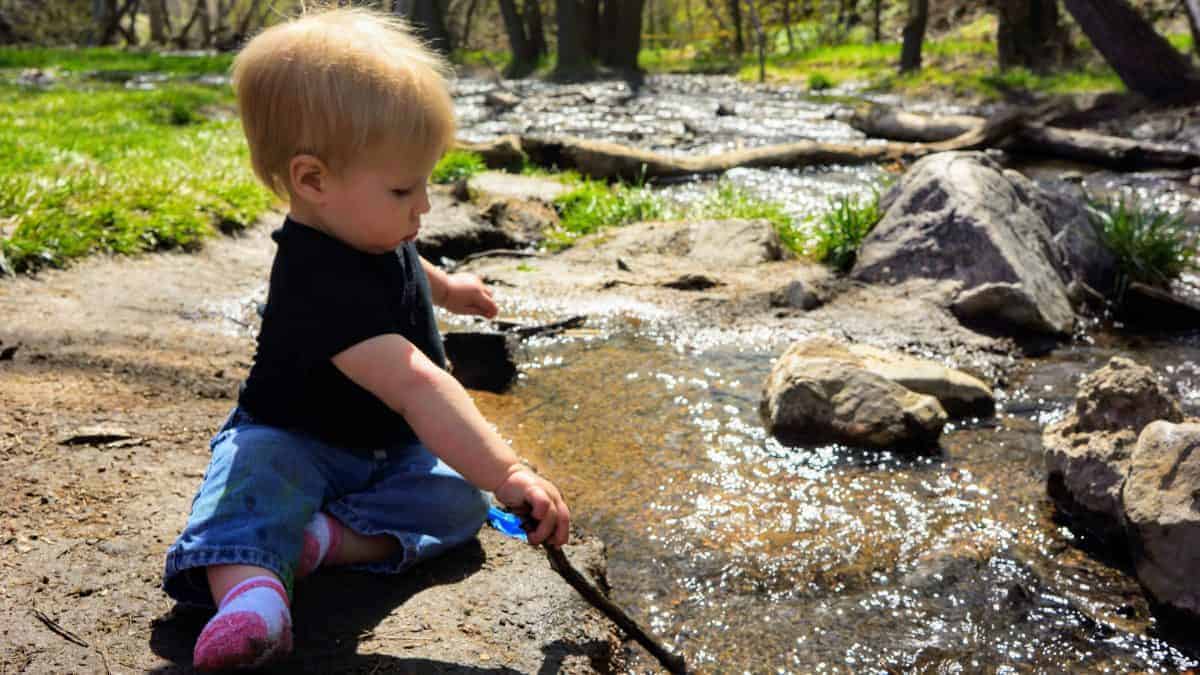
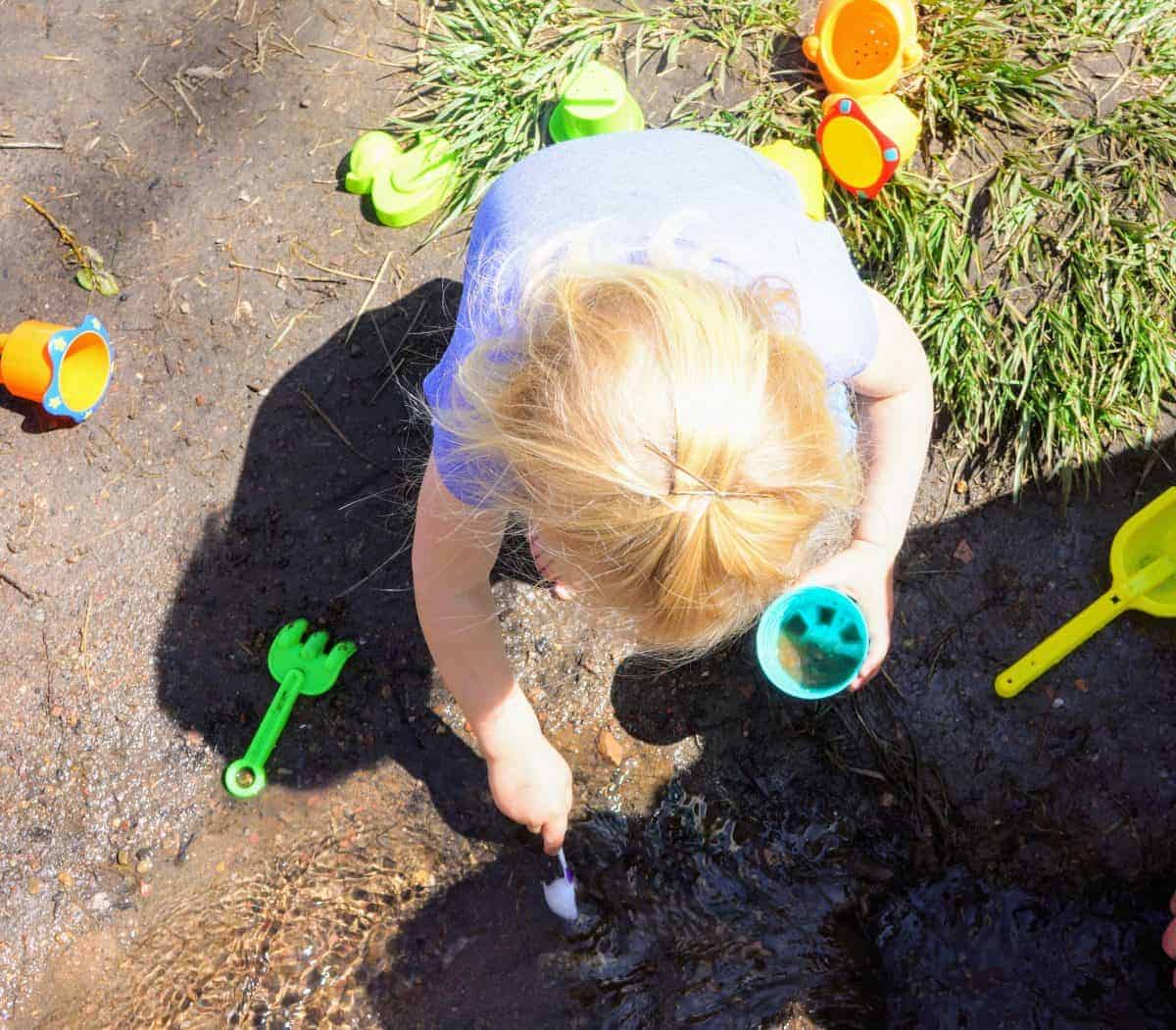
How to play streamside
This is the best part…there are no rules! Just let them at it! Hope is good at digging, scooping, and dumping. There is no end to what you can do waterside: putting pebbles in buckets, making mud pies, building sand castles, splashing in the water with her animal figurines, chasing/catching minnows, and changing colors of dry rocks once they get wet.
Getting wet is a must in the hot months and playing in a stream is a great way to cool off and immerse yourself in nature. Playing in the stream allows all your senses to be stimulated. From the smell of the surrounding woods, to the cool touch of the water and the sound of the babbling stream. I let Hope take off her shoes and socks and squish her toes around in the mud. She giggles the whole time!
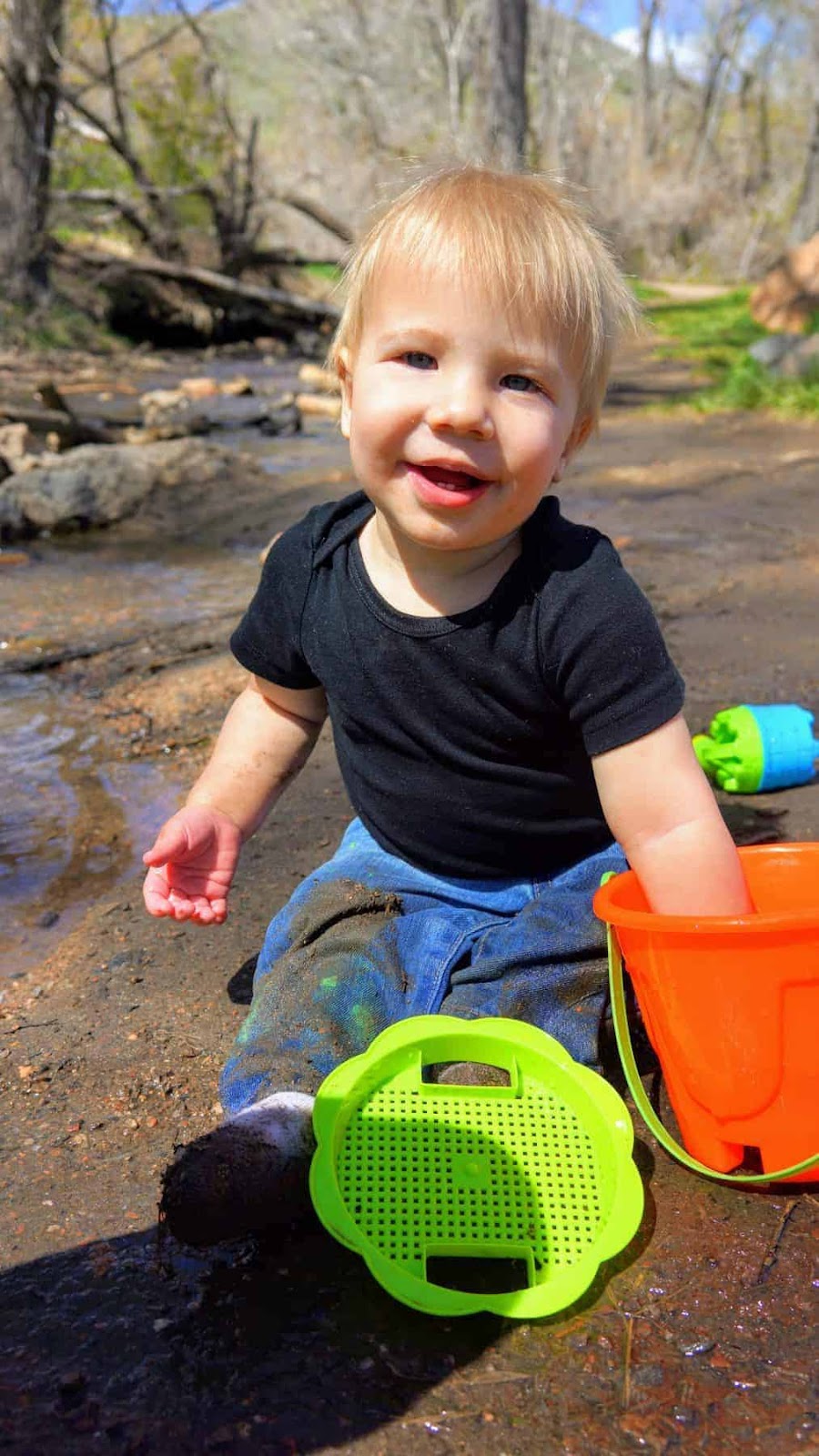
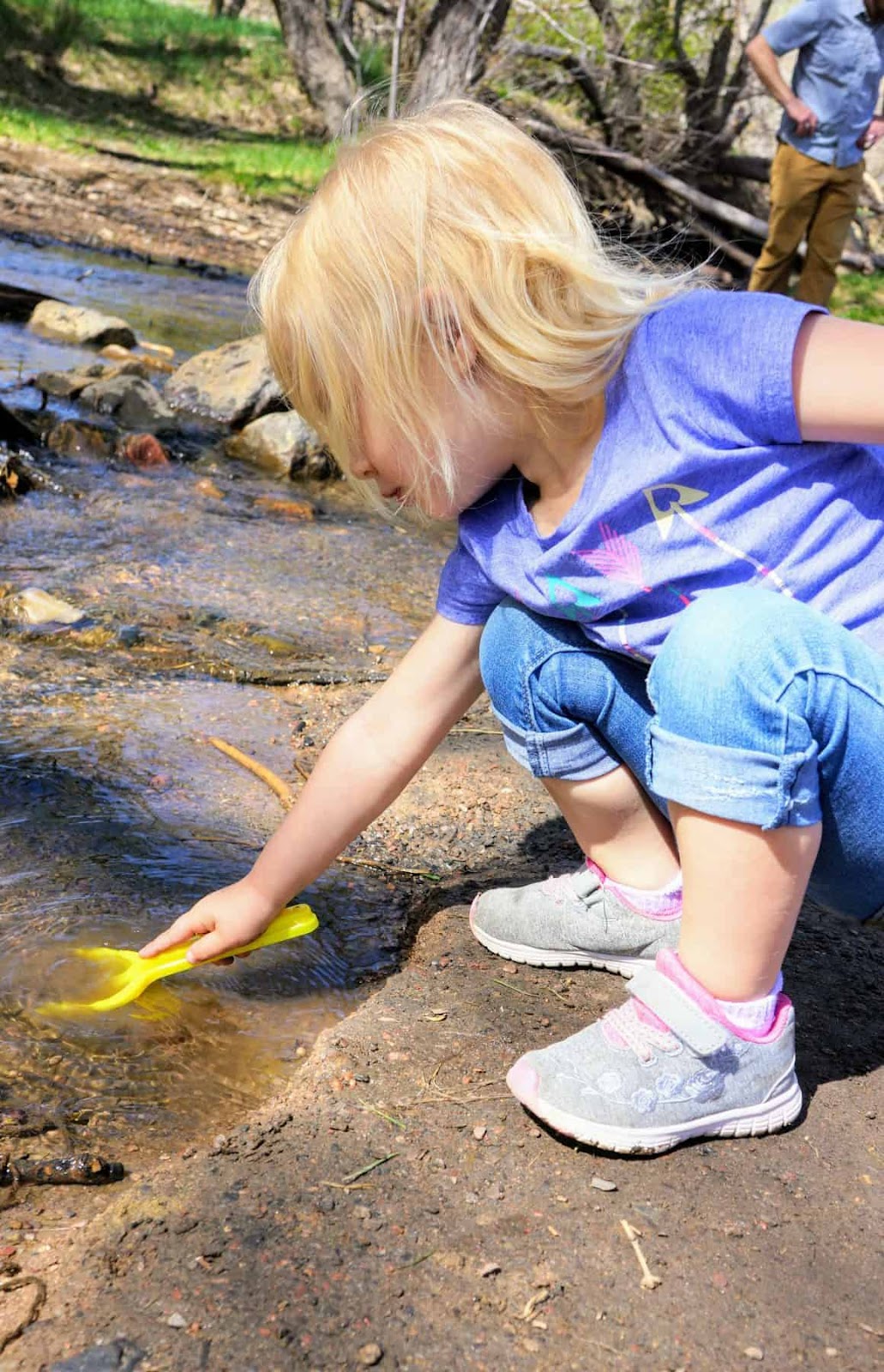
What to bring to the stream
Another good thing about playing in the stream is that you don’t need any fancy gear or equipment. Mainly, all you need is your imagination and a sense of adventure! However, there are a few things I’d recommend you bring along for your streamside outing:
A change of clothes. The most fun part of streamside sensory play is that the kids can get as wet, muddy, and generally messy as they want. While I try to time trips to the stream with bath night, a change of clothes will at least get you home with dry, happy children.
A hat. While some of the streams might be shady, often times the best spots for sensory play are in the open. Protect those little heads from that bright sun with a hat and/or sunscreen.
A sand toy set. Buckets, shovels, rakes, spoons, cups, toothbrushes all make excellent streamside toys. Essentially, anything that allows them to dig in the mud and scoop water. I’ve even brought a paintbrush along to make mud pictures on the concrete or rocky areas.
Animal figurines. We bought a cheap pack of little farm animals from the dollar store and Hope adores playing with them in the stream. She builds muddy hole homes for them, dips them in the water to clean them, and hides them in the grass or under little rocks. They certainly add an extra element of fun.
A towel. Be prepared for muddy feet and wet hands! It is also nice to be able to dry off hands before the all-important snack break.
Snacks. This should be a given because if we are being real, we never leave the house for any activity without a cache of snacks. There’s something about fresh air seems to make the kids extra hungry.
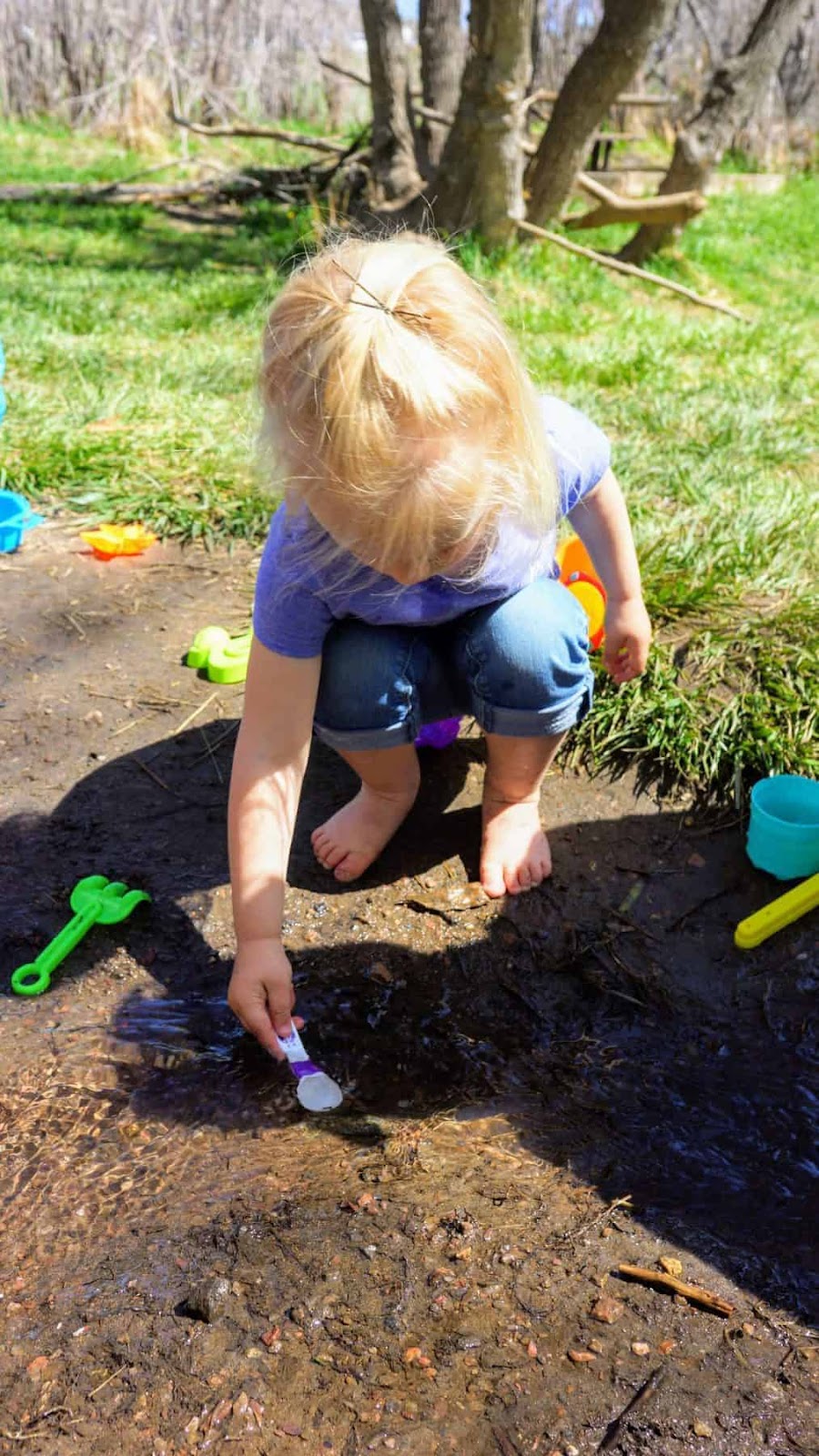
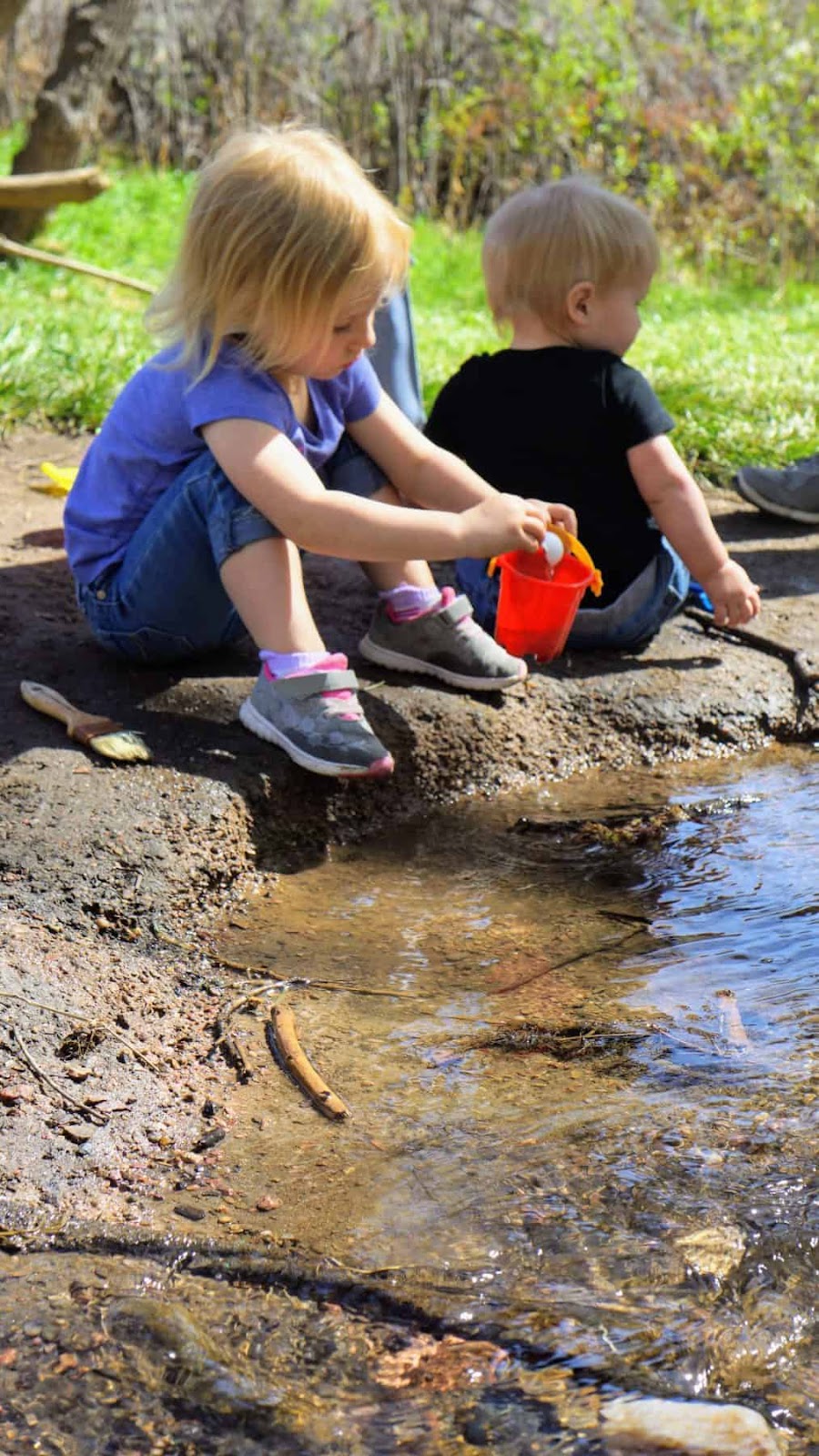
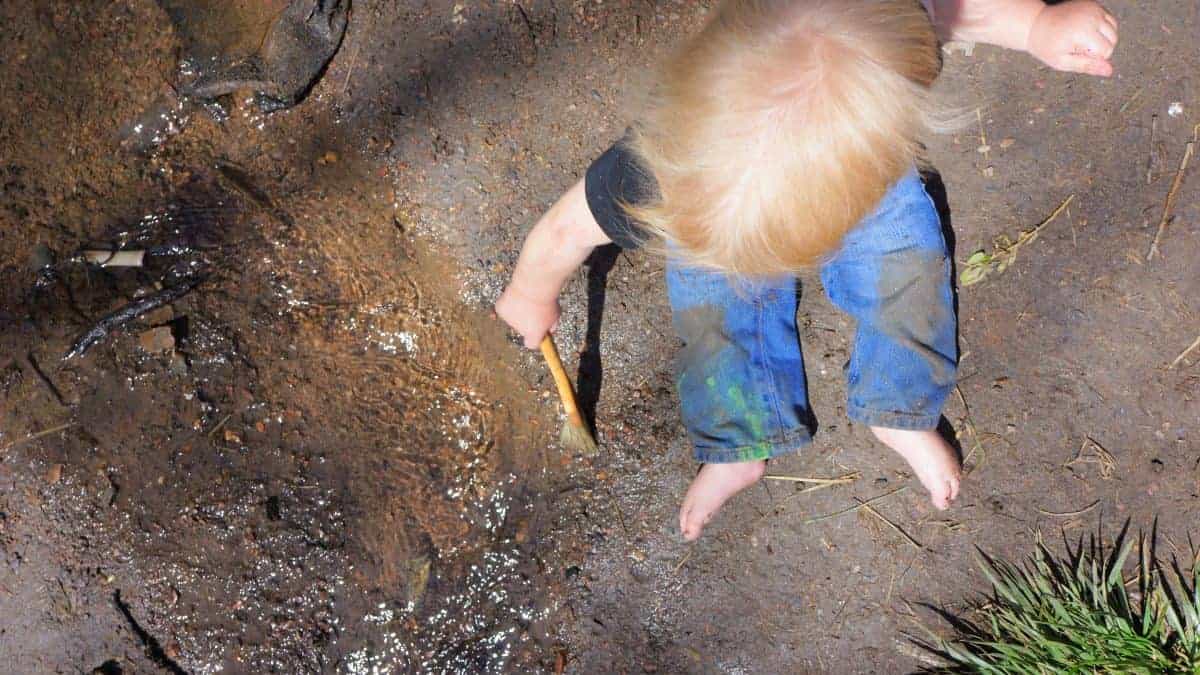
Let them play
The essential part of streamside sensory play is to really let the kids discover with all of their senses (except maybe taste, because…mud). They will get wet, muddy, and just overall dirty. Let them do it! They’re making memories! I promise they will talk about that time they were allowed to get as muddy as they wanted for years to come.
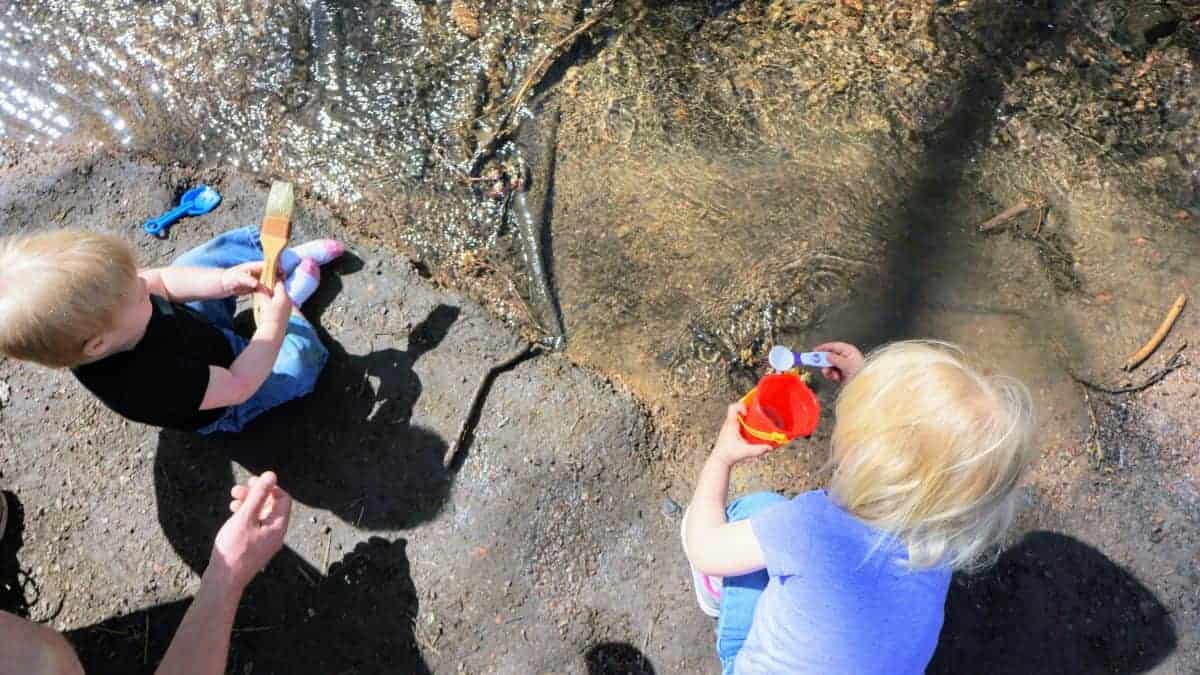
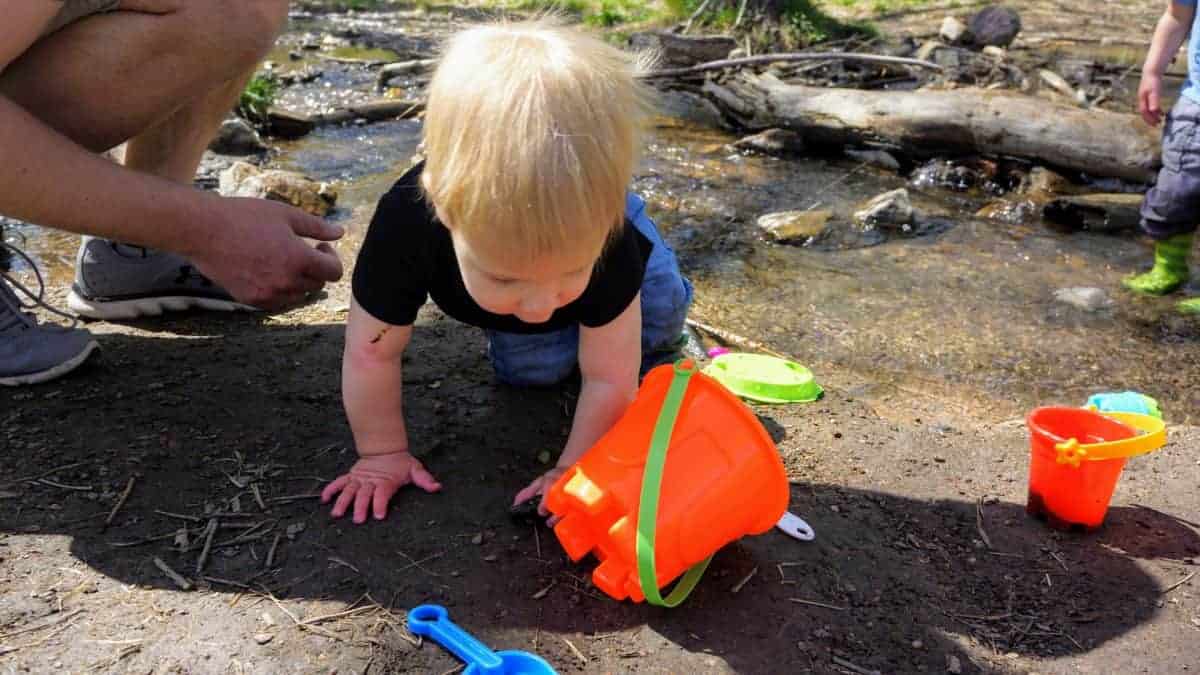
Recommended
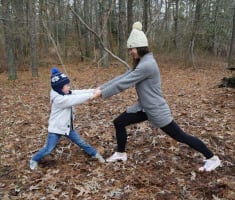

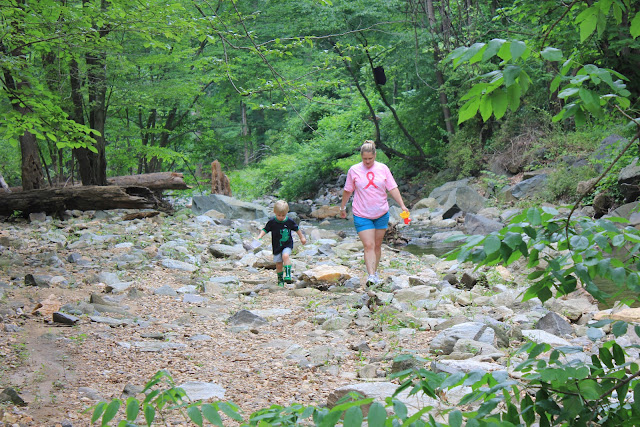
Exploring Waterfalls and Rivers
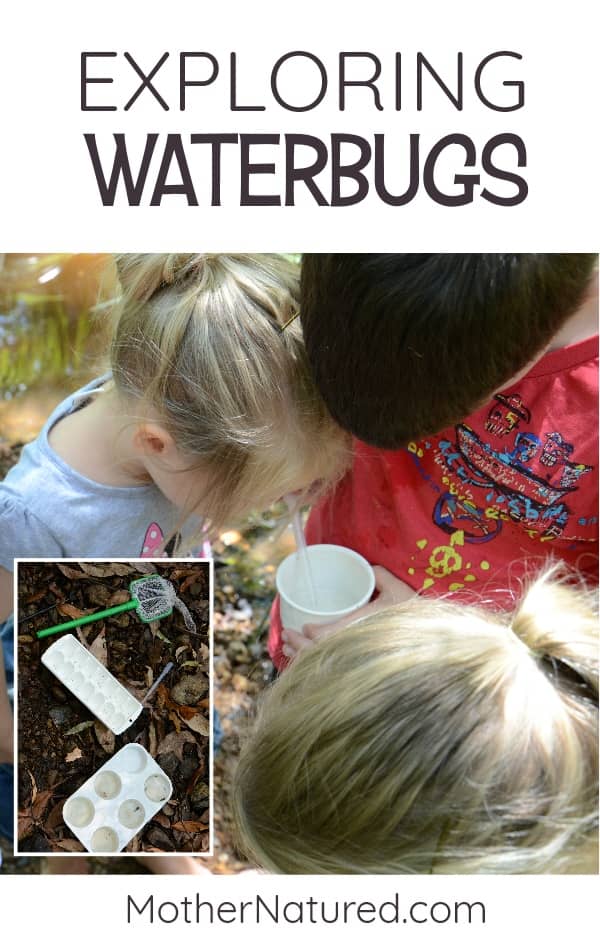
Shoreline Waterbug Hunting
Macroinvertebrates for kids, oh where do I start with this wonderful activity.
It’s been so dry and hot lately that the little trickling creek out the back of our house has gone silent and I can’t even remember the last time I heard the chorus for Great Barred frogs from my bedroom window. Although I miss those sounds tremendously, the lack of them did make me wonder if the creek had little puddles of water that were perfect for exploring waterbugs.
Waterbugs are aquatic macroinvertebrates. They are small animals that live in the water and are just big enough to see with the naked eye. Many water bugs are insects but they can also include worms, mollusks and crustaceans. I took a quick look down at the creek and saw some pockets of water that I knew held a lot of little creatures under submerged rocks and leaves. I couldn’t wait to show the girls and I invited our neighbours along too.
Here’s how to explore the freshwater creeks and ponds for macroinvertebrates.
What to take waterbug hunting:
fish nets
tweezers
white ice cube try and paint tray
magnifying glass
identification book
pipette and spoon
paint brush
White container
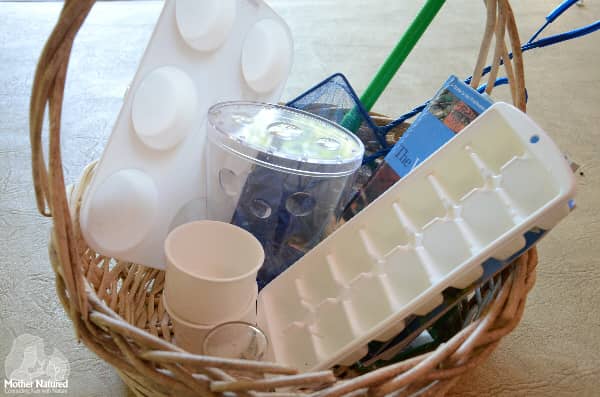
Macroinvertebrates for kids
How to find Waterbugs
There are a few ways you can catch waterbugs but first you’ll need to fill your containers with water from the pond. Try to collect it before your children start to dip their toes in the creek and muddy up the water.
Pick up stones
Pick up a stone or rock that’s submerged under the water, turn it over and use a paintbrush to gently brush the bugs into the containers of water.
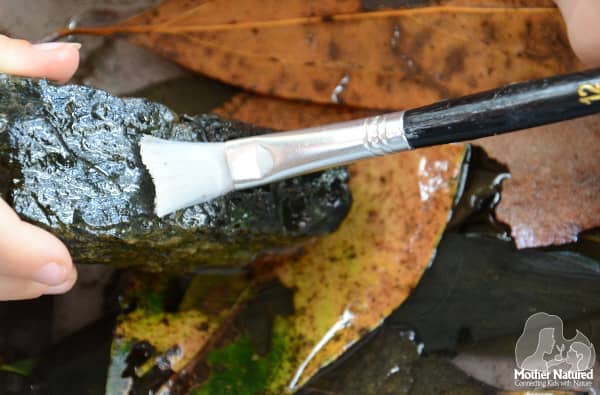
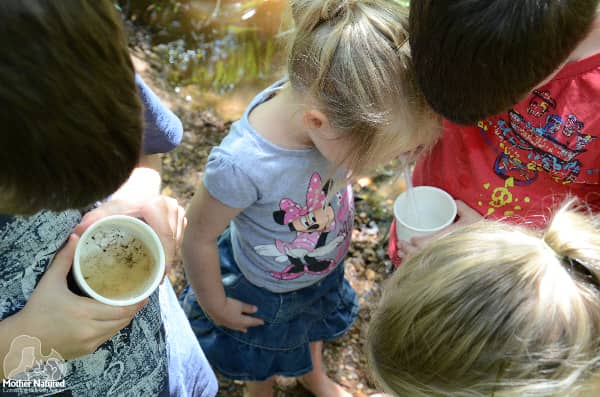
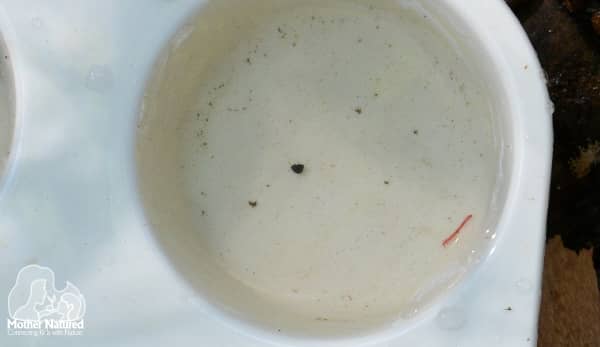
We found snails, a small leech and a few species of aquatic worms this way.
Skim with nets
Use a fish net to catch water bugs by gently scraping through the water as close to the bottom of the creek as you can without collecting too much debris. Tip the contents of the fish net into a large white container and sift through the debris to find the macroinvertebrates. If you brush the leaf as you take them out, you’ll start to see lots of movement on the bottom of the container.
If the waterbugs are small and you want a closer inspection, you can use the pipette or spoon to pick them up and place them in their own section of the ice cube or paint tray. Take a closer look with a magnifying glass.
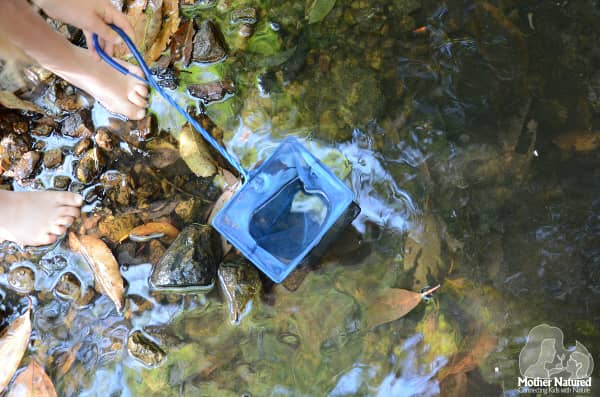
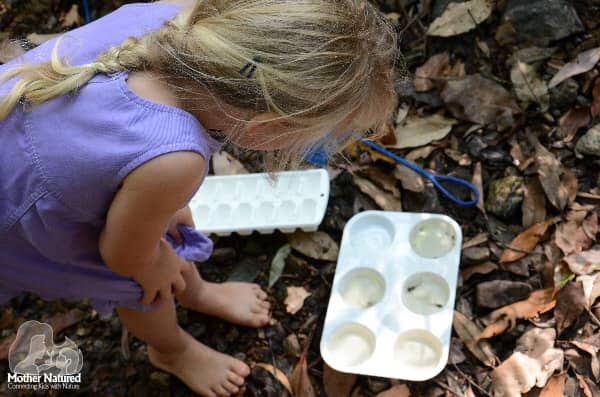
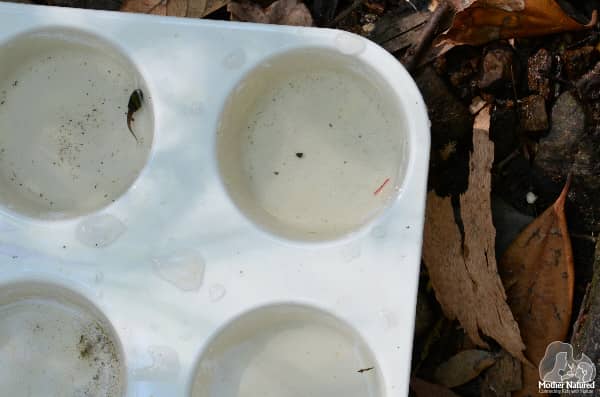
By sifting through the debris we found snails, worms, mosquito larvae and back-swimmers. We also found tadpoles too. This may not be a macroinvertebrate but the children were very excited to find some.
Explore the surrounding area
Water bugs can be found around and on the water too. We found water striders, dragonflies, a fishing spider and unfortunately quite a few mosquitoes!
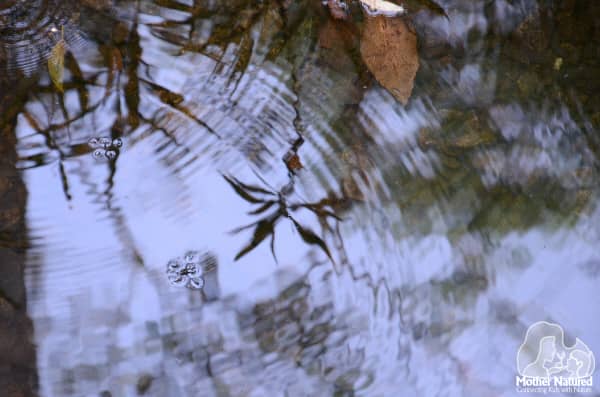
My girls are quite young so my only objective was to build on their knowledge and interest of the world around them. We had a brief look at a book that we borrowed from the library that identifies local waterbugs, The Waterbug Book (affiliate link) by John Gooderham and Edward Tsyrlin. The girls weren’t that keen to know the species of the macroinvertebrates just yet. Nevertheless, I enjoyed looking through it’s pages. It’s a fantastic guide book.
In future I’d love to take some home in a mini aquarium so that we can learn more about the little creatures we found. It would be a great opportunity to understand how they play an important role in the biodiversity and health of the creek. I’d also use that opportunity to introduce life cycles and food webs.
Right now, while their young, I’m just happy to get their little toes in the creek exploring nature in our wonderful world. Macroinvertebrates for kids, or Waterbugs, are easy to find, fun to study and your kids will love learning about them!
Local Wild Water Exploration
Nature activities to do with the kids in wetlands
Want to sell the idea of a family walk to the kids? Here are our 10 tips to whip up some enthusiasm!
All year round, wetlands around the local waters are buzzing with life. Whether it’s watching ducklings follow their mothers in spring or the exciting spectacle of waterbirds in winter, there’s plenty to see and do for little (and not so little) ones.
We asked WWT team members how they spend time outdoors with their families. Read on to find out how to whip up enthusiasm for a lovely family walk, whatever the weather.
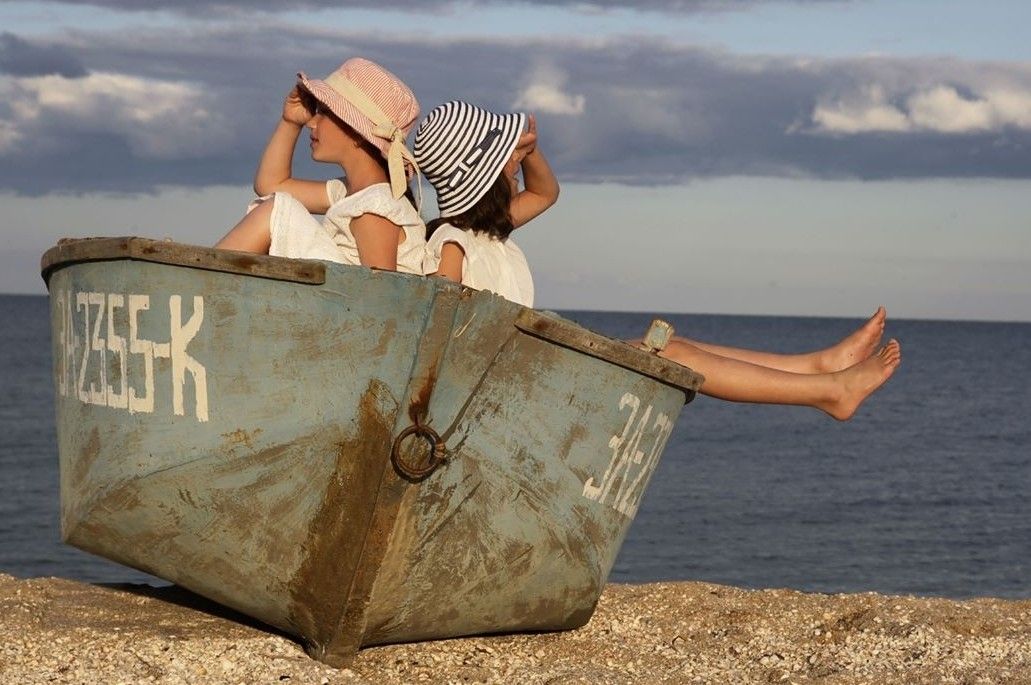
Water Activity 1:
Go on an adventure
Waters are the perfect place for adventures.
Cross wibbly-wobbly bridges, dart across stepping stones and put your balancing skills to the test! Zig-zag along winding paths and play hide and seek amongst the trees. Or why not learn survival skills and hunt around for fallen branches, sticks and leaves to build a cozy den?
Water activity 2:
Play pretend
Who can do the best impression of a duck?
Make Waters come to life by playing pretend and inventing a mini-story about your Water creatures. You’ll have the whole family waddling, quacking and rolling on the floor laughing.
Once you’ve finished, you’ll just need to find the perfect spot for your kids to perform their best impressions. We promise; you’ll be in stitches.
Water activity 3:
Grab your wellies and splash about
A rainy day? Not a problem.
Waters are perfect for kids who like to splash in puddles. Grab your raincoats, don your wellies (muck boots) and see who can make the biggest splash! Some of our centers run dedicated puddle-jumping events to turn wet weather into fun, so keep an eye on your local center info page to see what's coming up.
Water activity 4:
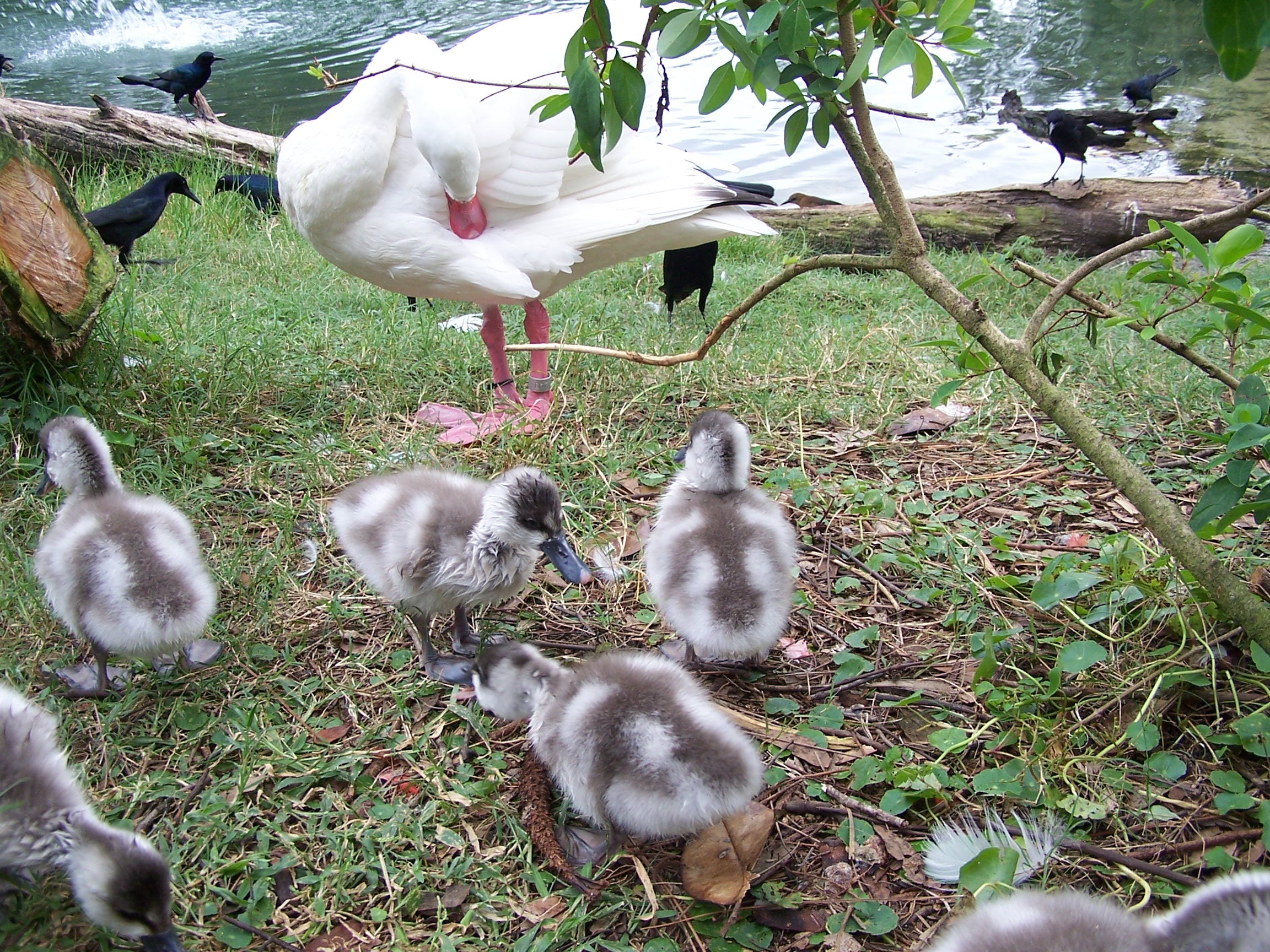
Spot some spring chicks
There’s something magical about seeing the first chicks in spring. From downy ducklings to gangly goslings, Waters are packed with fluffy young chicks in the spring and summer, and even in very early spring you can see exciting signs of ducks courting and nesting.
Keep those eyes peeled: you might see a protective adult bird keeping a watchful eye over the nest.
Water activity 5:
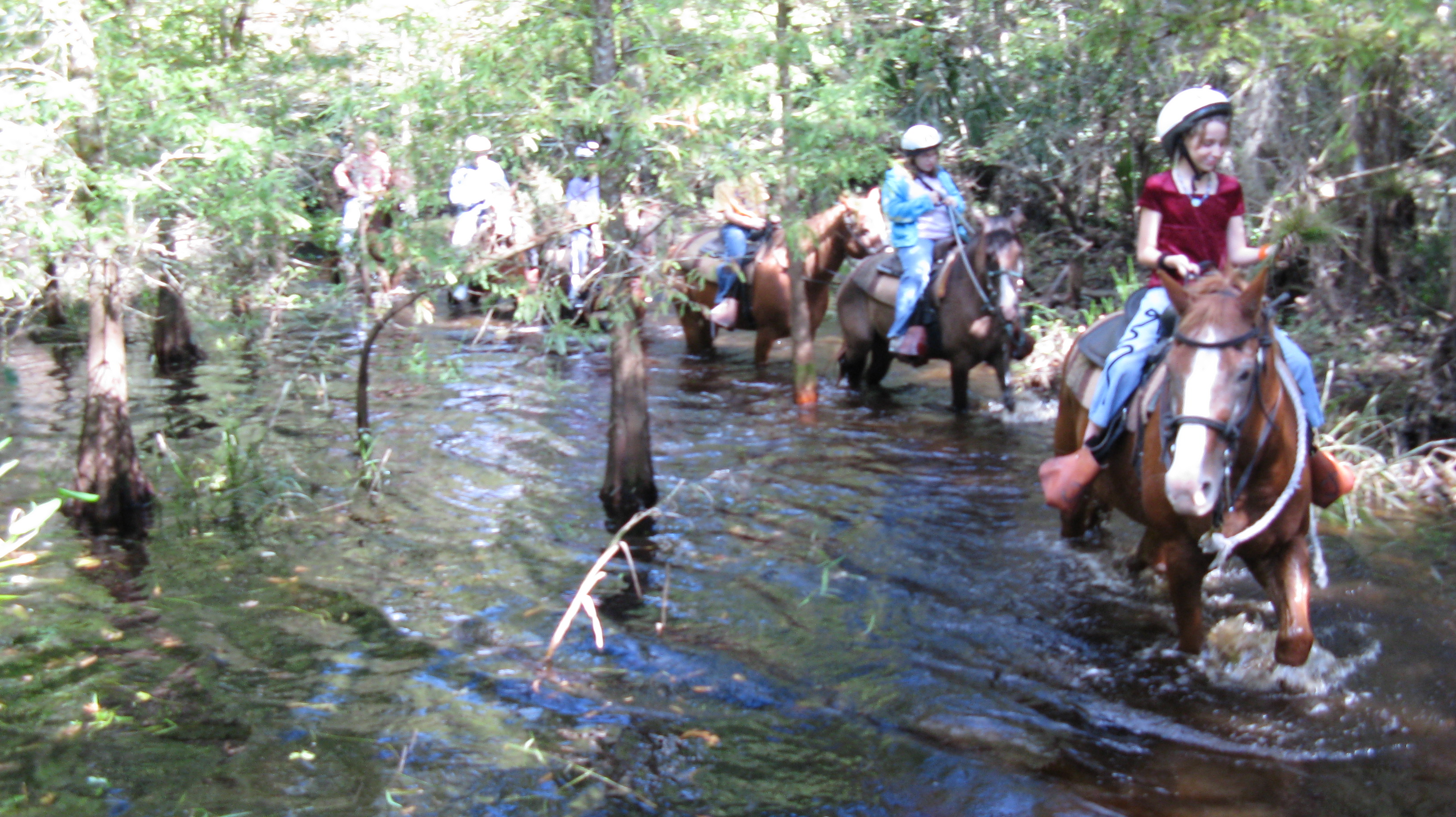
An excuse to spend time outdoors
After a winter tucked away, it’s invigorating to get out and about in the great outdoors.
Waters have amazing benefits for health and wellbeing. Whether you want to get the family running around again or you simply want to inspire the little ones by watching some wildlife, it’s a great way to have some family time outdoors.
Water activity 6: Brush up on your birds
Don’t know your coots from your moorhens? Test your own bird watching knowledge while teaching your kids all about amazing Water wildlife.
You’ll be amazed by how much you learn by exploring Waters each season.
Here are some of our top tips for beginner birdwatchers, young and old.
Water activity 7: Look for creepy-crawlies
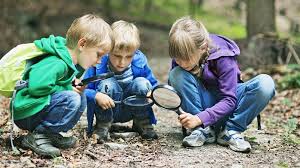
Don’t forget your magnifying glass! It’ll help you to get a closer look at those mini beasts under the lens. Root around under rocks and stones, hunt under logs and see what insects you can find this Spring. There are lots more creatures lurking under the water’s surface. From tadpoles and frogs to toads and water boatmen, who knows what you might find? Watch out for snappy crocodiles!
We’ve got lots of tips for bug dipping - check them out here
Water activity 8: Get imaginative
Family games are lots of fun, and the Waters are the perfect stage. Have you thought of coming up with a new dance inspired by Water wildlife? What about playing spot the difference?
Get those imaginations running wild by asking the kids: why do birds have wings while amphibians don’t? Why do swans have webbed feet?
Waters are the ideal place to get your kids thinking about the science behind wildlife, all while having some splishy splashy fun.
Water Activity 9: Become a Water Explorer
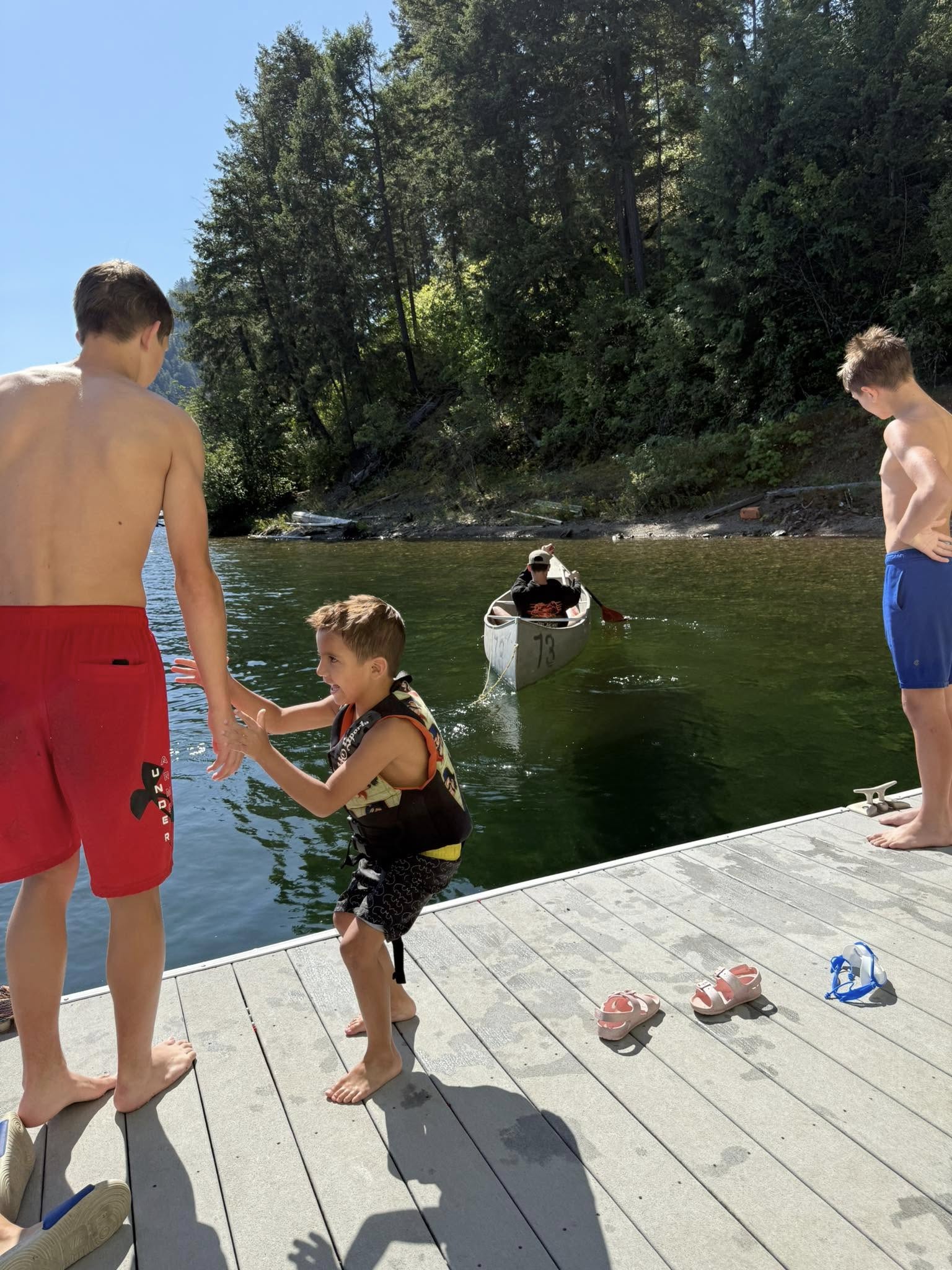
Is yours a house of budding explorers who love their wildlife? Hand out some pens and pads so you can challenge the whole family to see who can spot the most water wildlife.
Did you know sand martins arrive in the UK in spring following their long migration from their wintering ground in South Africa? If you know what to look out for each season, you can have fun seeing who will be the first to spot the signs of spring, or the first winter swans.
Water activity 10: Bring the wild home
We know that it's not always easy or even possible to get out the house. That's why you can find a whole range of activities to do at home on our Fun and Learning hub - from homeschooling lessons to nature-based activities for indoor and outdoor entertainment (away from the screen). We add new activities every so often so be sure to check back.
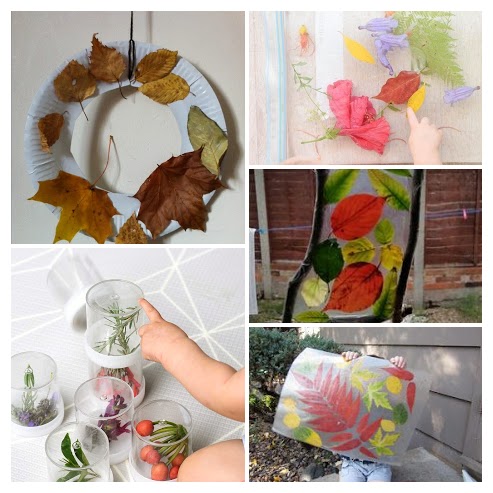
Why you should take your kids to a creek or river-Considering Paddlesports
5 Reasons You Should
Take Your Kids to a Creek
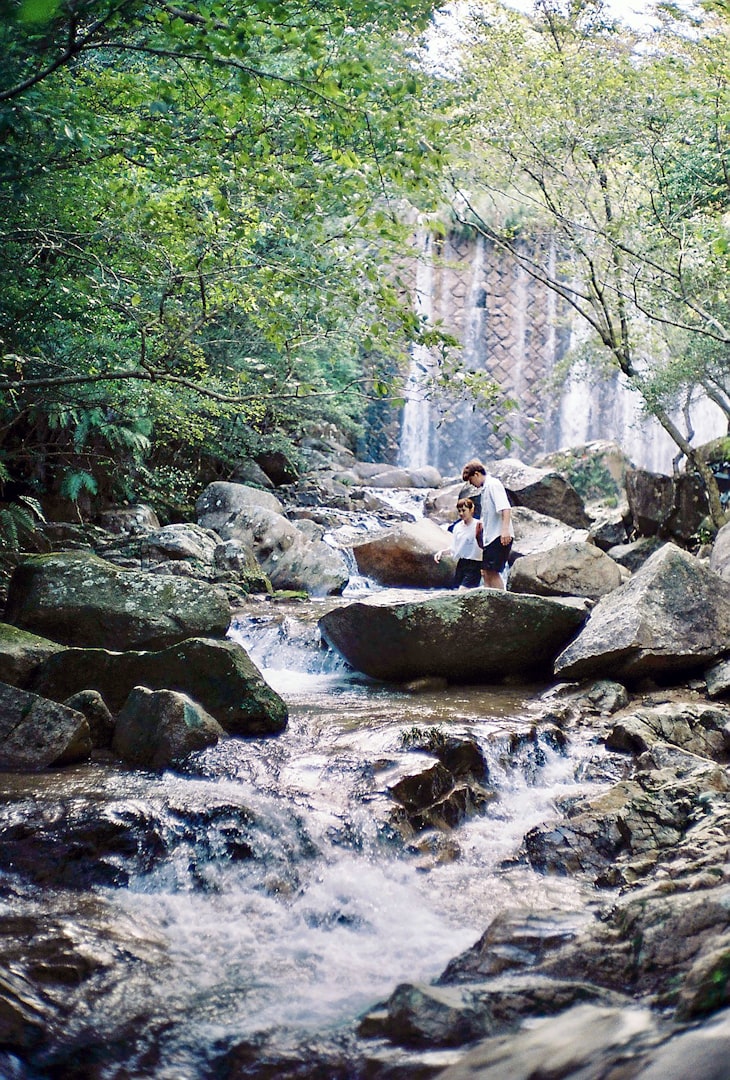
When I was a kid I use to love running down the hill in our back yard and exploring the creek with my siblings. I don't know if it was the peacefulness, the exploring, the water or the freedom of no parents around that I loved the most.
As I became older I still found creeks to be peaceful but creeks and I drifted away for the most part except for the rare occasion when they involved a rope swing or bridge jumping.
Now that I am a parent I have found myself looking for the next creek to explore with my kiddos. So far every time my husband and I have taken the kids to the creek, they have had a blast. It is crazy how something so simple can bring such joy to a little one's face.
If you haven't been to a creek recently, you need to go find one. Just the peacefulness of a creek can bring joy to your day. Not only are creeks a good place to relax and enjoy nature but they can be fun for the whole family.
Check out these 5 reasons you should take your kids to a creek:
1. It's Free
I haven't come across a creek yet that isn't free to play in. Yes some are on private property so you aren't allowed to trespass without permission but there are several public creeks that you are allowed to explore.
Our town has a few creeks that the public can access, it's just a matter of knowing where they are and how to get to them.
If you are clueless as to where to start, you can ask if anyone knows where any public creeks are in a mom group on Facebook. You can also check with your local forestry department or see if any of your friends own land with a creek you can check out.
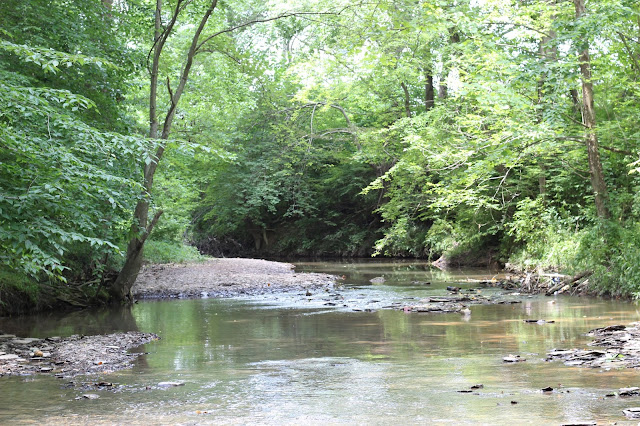
2. You are getting Outside
There are several benefits to getting outside such as breathing in the fresh air to taking in the Vitamin D from the sunlight to walking around and getting in a little exercise.
Sitting inside on the couch or at a desk all day everyday is no fun and can be bad for your body. It's always nice to take a break and go outside for a change of scenery even if it's only for a few minutes.
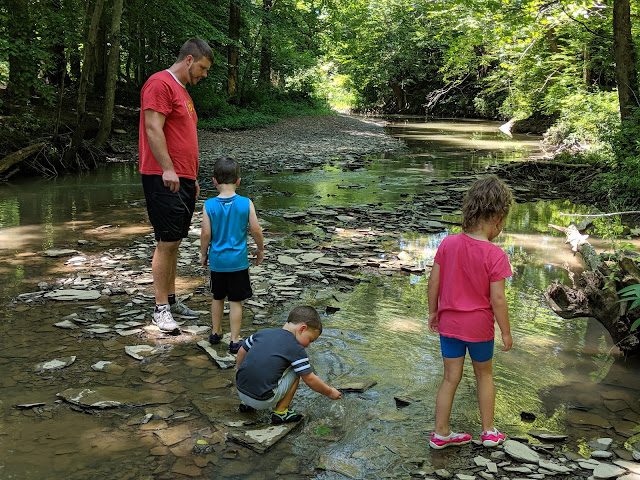
3. Family Time
Load your kids in the car, grab an ice water, some water shoes and head to the creek. Creeks can be fun for the whole family. There are several things you can do at a creek with your kids or you can just sit back and relax. If it's a nice day you can have a family picnic, don't forget to clean up after yourself!
A trip to a creek can be a fun family bonding experience. Put down your phone unless you're taking pictures and relax. A change of scenery, even if it's fo a few hours can be good for the whole family!
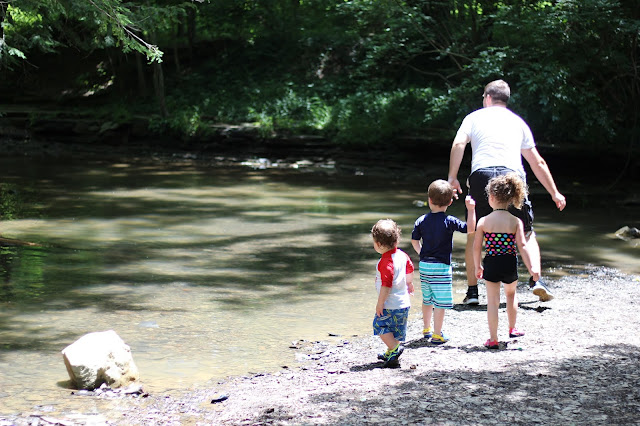
4. Exploring & Learning Experience
Like I said above, there are several things you can do at a creek. Aside from just walking around and looking at the creek, you can explore all that creeks have to offer.
Go on a scavenger hunt
See who can catch the most fish or crawdads
See what animals you can find - frogs, butterflies, snakes, lizards, fish, crawdad, bugs, squirrels
Look for animal foot prints
Skip Rocks
Build a tower or arch out of rocks
Play in the water
Have a picnic
Relax and listen to the peacefulness of nature
Explore
Make nature calls
Hike the creek and see if you can find a mini waterfall
Take pictures
Build a mini fort out of fallen branches
Creeks can be a very educational experience for your kids. Just being outside and exploring is great for helping little ones learn!
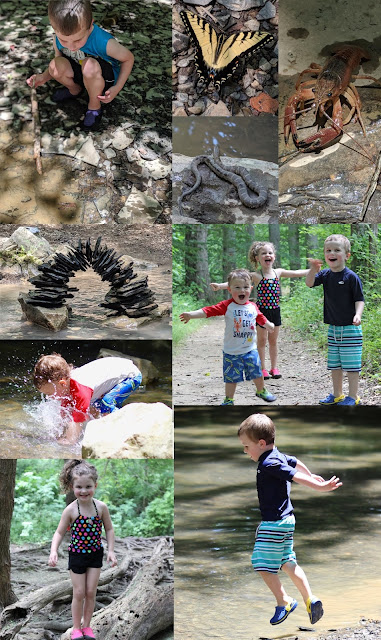
We found a pet pig on one of our trips to the creek. You never know what you are going to find!
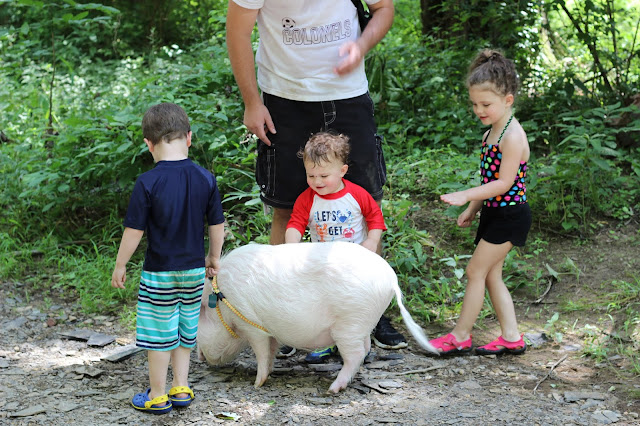
5. Something To Do
When I ask someone what they did today, the majority of answers I hear are watched TV or played video games. Society is slowly becoming boring. Most people would prefer to sit inside and be bored or binge watch their favorite show than go outside. I don't necessarily blame them because some days, it's just way to hot to go exploring but as parents we need to do more with our kids.
Kids need to be able to explore, run off some energy and see all that the world has to offer aside from technology. By taking your kids to a creek, you are opening up a fun, new experience and allowing them to explore and see the world in a different way. The creek is something to do that is different and free so why not give it a try?
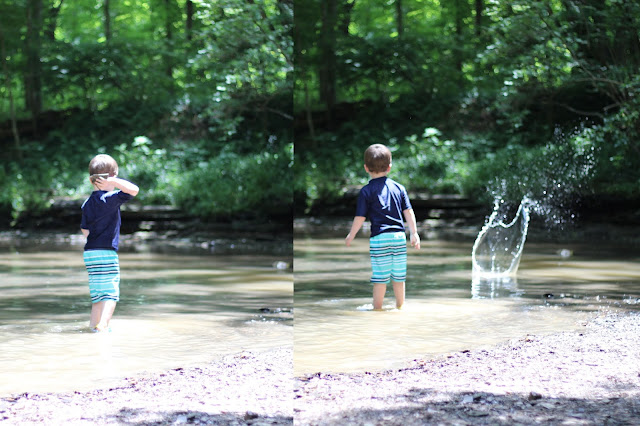
Hopefully this post has convinced you to take your family to a creek and go exploring. It doesn't have to be a huge creek, just somewhere that water runs over rocks and is surrounded by trees and animals will do just fine. A creek is a creek which will always be a fun place to explore over and over again because they are always changing and animals never stay in the same place for long. I hope your family has a blast at the creek and you get some much needed family bonding time in.
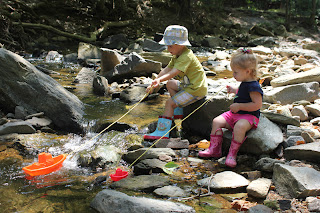
Little sis doing what Big brother is doing.

Playing with his boat in the creek
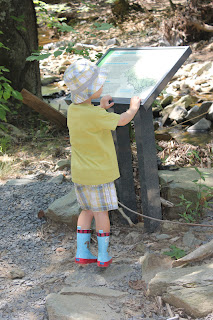
J looking at the map to see what way to go.
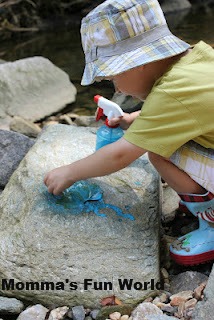
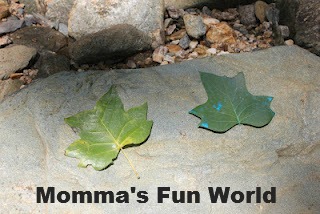
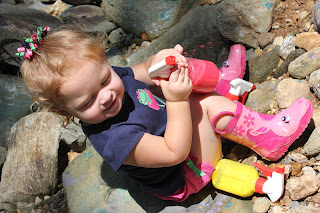
J found some leaves to use as stencils and spray painted them.

Stencil design from the leaf...pretty cool.

Throwing rocks in the creek
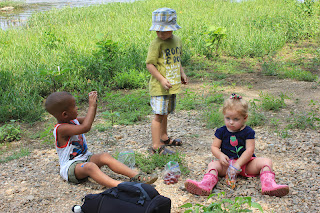
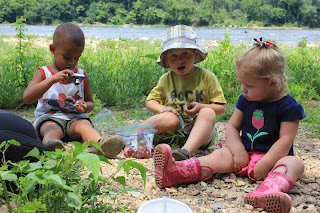
Having a snack and resting
Below are some of the fun things we got to see on our fun shoreline walk along the creek
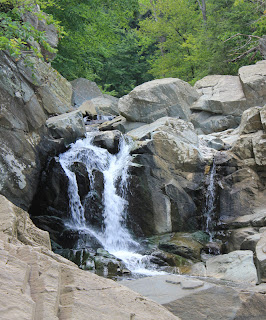

Waterfalls and crossing the creek in the shallow water
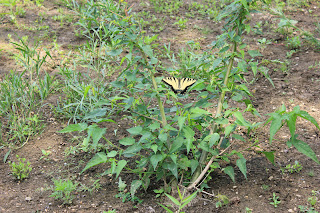
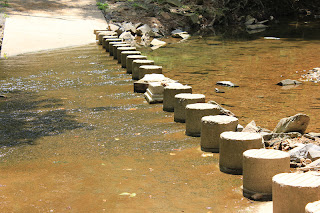
The shoreline had some unexpected wildlife and look around the bend - stepping stone to cross the creek
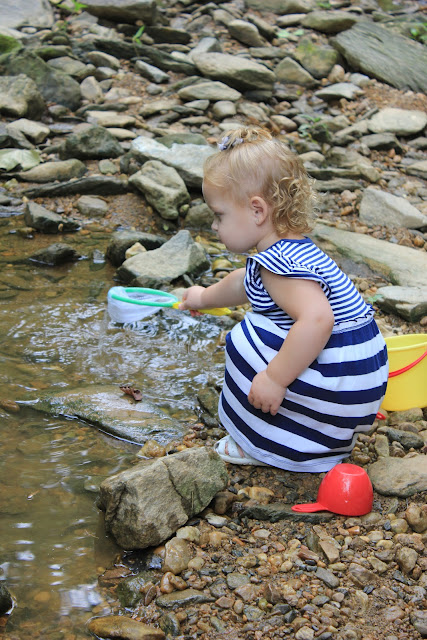
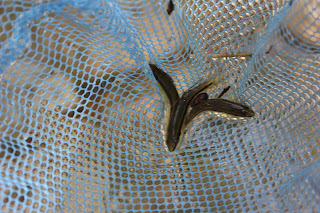
Small fish caught in the fishnet
Have a b oat race down the creek

We went to Scott Run Creek in Mclean, Va and had a blast. This was the first time we took the kiddos to the creek, so I wasn't too sure if J would like it or not. C is pretty passive so wasn't too worried about her.
Well it was a hit, J had so much excitement that he was like a little boy on speed. We spent 2 hours there and he still didn't want to leave when it was time.
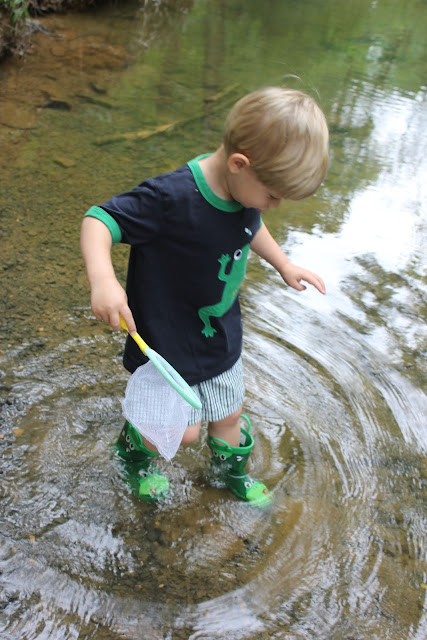
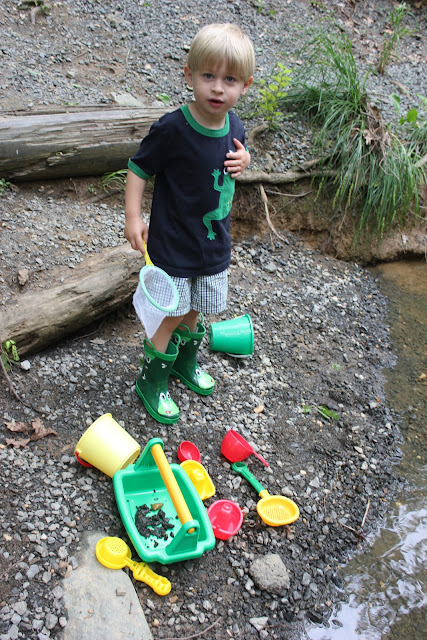
J thought this was the coolest walking in the water with his shoes
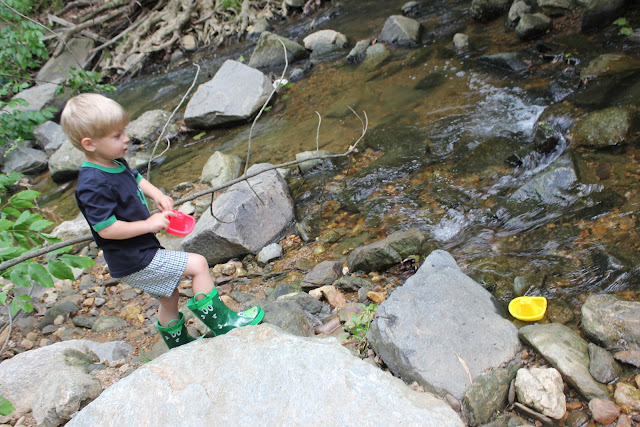
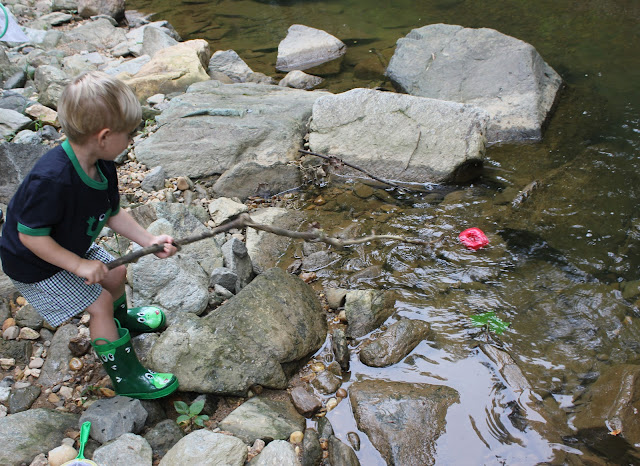
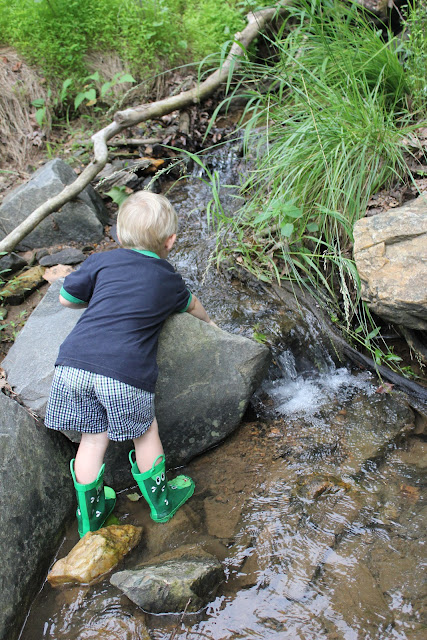


Look the boats are going down stream.....love it
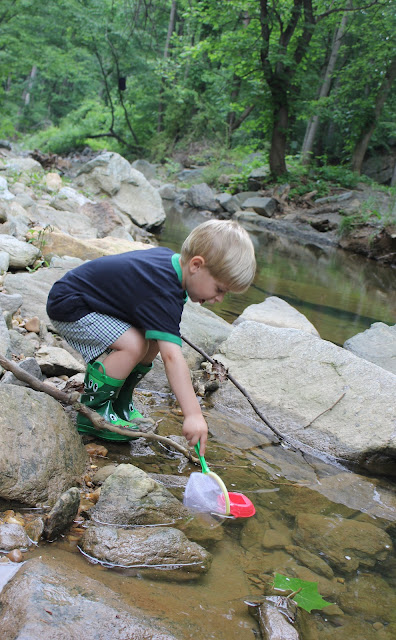
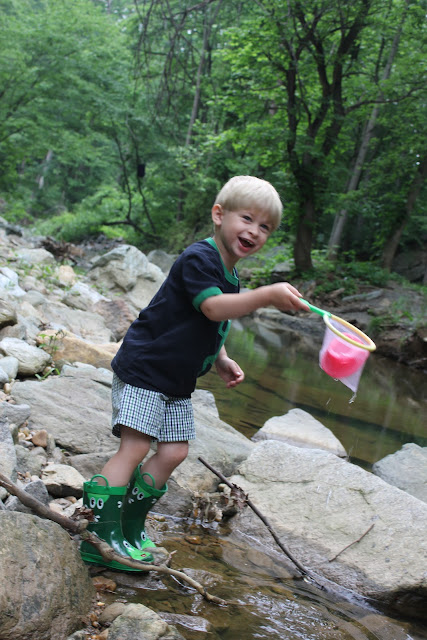
How to Take Your Baby on a River Trip
Taking a tiny human floating seems intimidating, but it doesn’t have to be
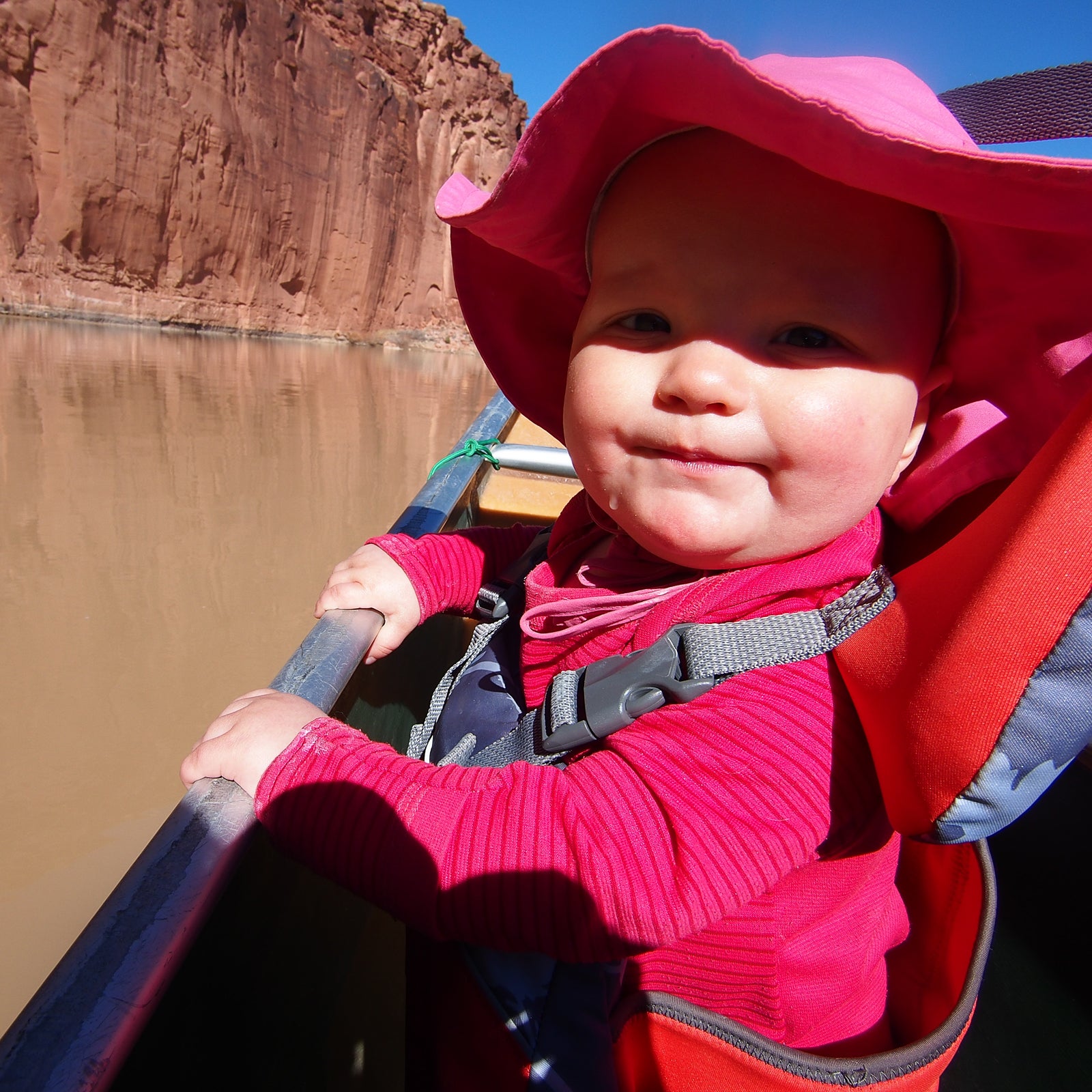
High Five
Every March, when we’re sick of winter but too impatient to wait for spring, my husband and I drive to the desert to go paddling. The rivers of the Colorado Plateau run muddy with snowmelt, and the sun feels like heaven. Weather on these trips is variable—we’ve been snowed, rained, and hailed on—but the quiet canyons and starry nights are worth the gamble.
This year, though, there was an even bigger variable: our daughter Josephine, who was 11 months old and had never been in a boat of any kind. How would she react to spending hours each day in a canoe or raft? Would she sleep when nighttime temperatures dropped into the thirties? And was it foolhardy to take her so deep into the wilderness that you couldn’t easily hike out?
Still, as the snow continued to fly at our home in Colorado, I couldn’t stop daydreaming of a 45-mile stretch of calm water that flows through Utah’s Labyrinth Canyon. I’d been reading Alan Kesselheim’s book Let Them Paddle, about canoeing with his children, and the fact that he’d taken an eight-month-old on a month-long expedition down the Yellowstone River made my idea seem tame. For additional inspiration, I reread a few chapters from Mardy Murie’s classic memoir Two in the Far North, in which she takes her six-month-old on a four-month Arctic river trip in the 1920s, long before GoreTex and disposable diapers. Clearly, I rationalized, humans have been taking babies down rivers for millennia.
Despite those two books, there’s relatively little information about how to pull off a multi-day river trip with a little one. Apart from a few tips I gleaned from Murie and Kesselheim, we were mostly winging it. As I made lists and packed meals and stuffed clothes into drybags, I was slightly terrified that the minute we were stuck in the bottom of a canyon with a wailing baby, we’d regret leaving the house.
There were indeed a few times when we were stuck in the bottom of a canyon with a wailing baby. But I never once regretted it. Here’s how we pulled it off.
Buy a Good PFD
One of the smartest things I did when pregnant was to use my baby shower to convince friends and family to buy me fancy outdoor baby gear, including this bomber PFD from Level Six. This one is comfortable, doesn’t ride up, and will fit for several years. I also made my daughter wear it around the house for a couple weeks so that she was used to it before we got on the water.
Choose Your Destination and Boat Wisely
First, your destination: You want water with easyrapids (Class I) or none at all, in an environment where you’re already comfortable with backcountry travel. Then, choose your craft. Kayaks are not practical with a baby. Rafts can haul lots of gear and people but are slow, heavy, and often have standing water on the floor, which means no dry place for an infant to hang out other than in your arms. Canoes, on the other hand, are practically made for babies. The gunwales are the perfect height for a standing baby to hold onto, the hull stays mostly dry and offers a solid surface for playing or napping on, and they’re easy enough for one person to paddle if the other needs to hold or feed the kiddo.
Learn A Paddle Sport
Any sport that requires two people to operate a single machine—like tandem bicycling or canoeing—is a fight waiting to happen if you don’t know what you’re doing. Before you push off with a baby on board, get on a local lake or river and practice paddling with your partner. Master the J-stroke, reverse stroke, and pry and draw, or consider taking an introductory course from an organization like the American Canoe Association. Once you get into the backcountry, there will be plenty of things to stress over; your J-stroke doesn’t have to be one of them.
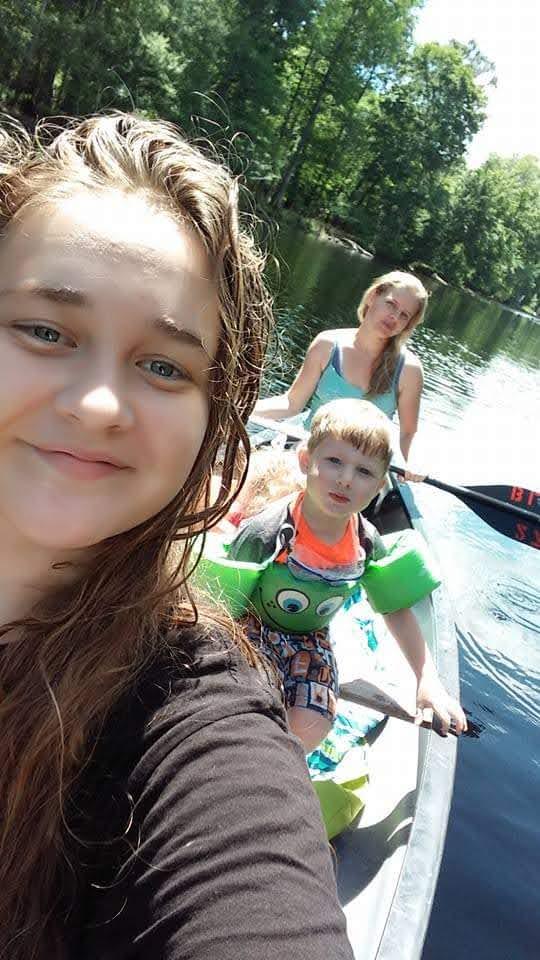
Tips for Safe and Joyful Water Bonding
Aug 17, 2023 — The rulebook doesn't set an age limit. But, here's the deal: bringing a newborn or infant (0-12 months) on a kayak ride isn't advised.
Canoeing with Babies – The Basics
May 2, 2018 — Keeping snacks, treats, and water readily at hand is vital for the success of any canoe trip with toddlers along. I love my Stohlquist life ...
Give Stand up Paddleboard a Try
PRO TIP: Introducing your baby to SUP - Pau Hana Surf Supply
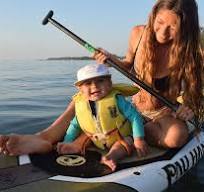
More Shore Ideas
What’s in Our Day Pack For Hiking and Water Play With Babies and Toddlers?
We are often asked the question of, “What do you pack in your day pack when out hiking with your son?” This is a complex question since, as your child ages and develops the contents change. So, here’s a break down of what lies within our daypacks when out on wilderness excursions with our kiddos along from birth to toddlerhood! Download our printable day hike checklist Our 12 Essentials for Hiking Regardless of Age Water – Hydration Bladders or water bottles, just be sure to have plenty for everybody regardless of age. If you’re on a trail which has access to…
Continue Reading ›
Our Top Ten Favorite Adventure Books for Babies and Toddlers
When we became parents we realized that we had many things to teach and instill in the tiny human beings that we had created together. A love for the outdoors and adventuring was clearly one thing we wanted to encourage in them from the start. Another, was a love for reading. We knew that these two passions could be combined together, and work together, to help our children grow up with senses of adventure, curiosity, and a desire to explore and learn. It has become a family tradition to get a book at every National Park/Monument/Forest that we visit as…
Give Yourself Extra Time
We spent five days covering just 45 miles (it's a two- or three-night trip for adults). That allowed for a layover day if the weather turned and gave us shorter days on the water, spread out over more time. It was tempting to try to do the trip in as few nights as possible to simplify the logistics, but I’m glad we didn’t. It took a few days to get into the groove of loading the boat each morning, paddling all day with the baby, and setting up camp in the evening, and we wouldn’t have wanted to be getting off the river just as we were hitting our stride.
Pack a Day Bag
When you push off from shore, most of your gear will be hard to access, crammed into drybags and tied to the boat. Make sure you have the essentials in one easy-to-access spot. For us, this meant a 30-liter SealLine Baja drybag that I stashed under my seat, packed with a warm hat and jacket, sunscreen, snacks, diapers, wipes, and a blanket.
Ditch the Cotton Onesies
Sometimes when I dress my infant in her synthetic Patagonia base layers I feel ultra snooty, even though I got them used from the company’s Worn Wear site. On this trip, though, they proved ten thousand times better than cotton onesies: breathable but warm, quick drying, and so durable that Josephine wore them every day on sand and mud and abrasive rocks with no discernible effect.
Take a Rescue Beacon
Emergency beacons—like a SPOT Satellite Messenger or Garmin InReach—let you to call for help from remote areas with no cell coverage. They’re also not cheap. The Garmin costs $400, and the SPOT is $150 plus an annual or monthly subscriptions. But if I was ever in a sticky backcountry situation with an infant, I’d kick myself if I hadn’t invested in technology to activate a rescue with the push of a button.
Bring an Old Sleeping Pad or Car Seat
I had no faith whatsoever that Jo would nap in the canoe; she’s a fussy sleeper who struggles to drift off. But something about the quiet and the rocking motion lulled her right to sleep. I laid her on an old half-inflated Thermarest in the bow, draped a lightweight blanket over the gunwales for sun protection, and paddled in total bliss while she dozed.
For younger babies, we heard of parents who brought a car seat, put an umbrella over it, and let the baby snooze or hang out there while the parents paddled. If you go this route, make sure not to strap your child into the car seat. That way, if you accidentally flip the boat, your baby isn’t buckled to a heavy object that will sink.
Rock the Boat
The best advice we got was to bring a plastic bucket and fill it with rocks every morning. Apparently every baby on earth gets a kick out of throwing stones into the water from a canoe, keeping them distracted so you can paddle. On shore, too, they made the best play things. I brought a couple toys just in case, but Jo was way more interested in the local geology.
Without hesitation, I can say that our springtime journey through Labyrinth Canyon was the best river trip of my life. Not because of the water or the scenery, which were both plenty nice, but because I got to watch Jo discover the joy of traveling by canoe, tossing rocks overboard and watching the world go by.

When observing a rivers waterfall, help young children to notice its height, the volume of water flowing, the shape of the fall (cascading, plunging, or tiered), the surrounding rock formations, the mist created, any rainbows formed by the spray, the sound of the water, the vegetation growing nearby, and the plunge pool at the base; all of these elements contribute to the unique character and beauty of a waterfall.
Key aspects to consider:
Water flow: Is the water flow forceful and powerful, or gentle and cascading?
Rock formations: What type of rock is the waterfall falling over, and how does its shape influence the water's movement?
Plunge pool: Observe the size and shape of the pool at the base of the waterfall
Mist and spray: Notice how the falling water creates a mist, and if it forms rainbows in the sunlight
Sound: Listen to the roar or gentle rumble of the waterfall
Vegetation: What plants are growing around the waterfall, including any unique adaptations to the wet environment
Tiered falls: If the waterfall has multiple drops, observe how the water flows between each tier
New York Waterfall Location Map
Over 2,000 waterfalls in over 600 locations across New York State, the map plots public, private, and unknown properties to help you find the falls you want to learn more about.
Another fantastic activity that we did this week was the making of waterfalls and river. There are so many waterfalls among the creeks, rivers near my home in the Finger Lakes. They have carved beautiful canyons or gorges that have been made into New York State Parks.
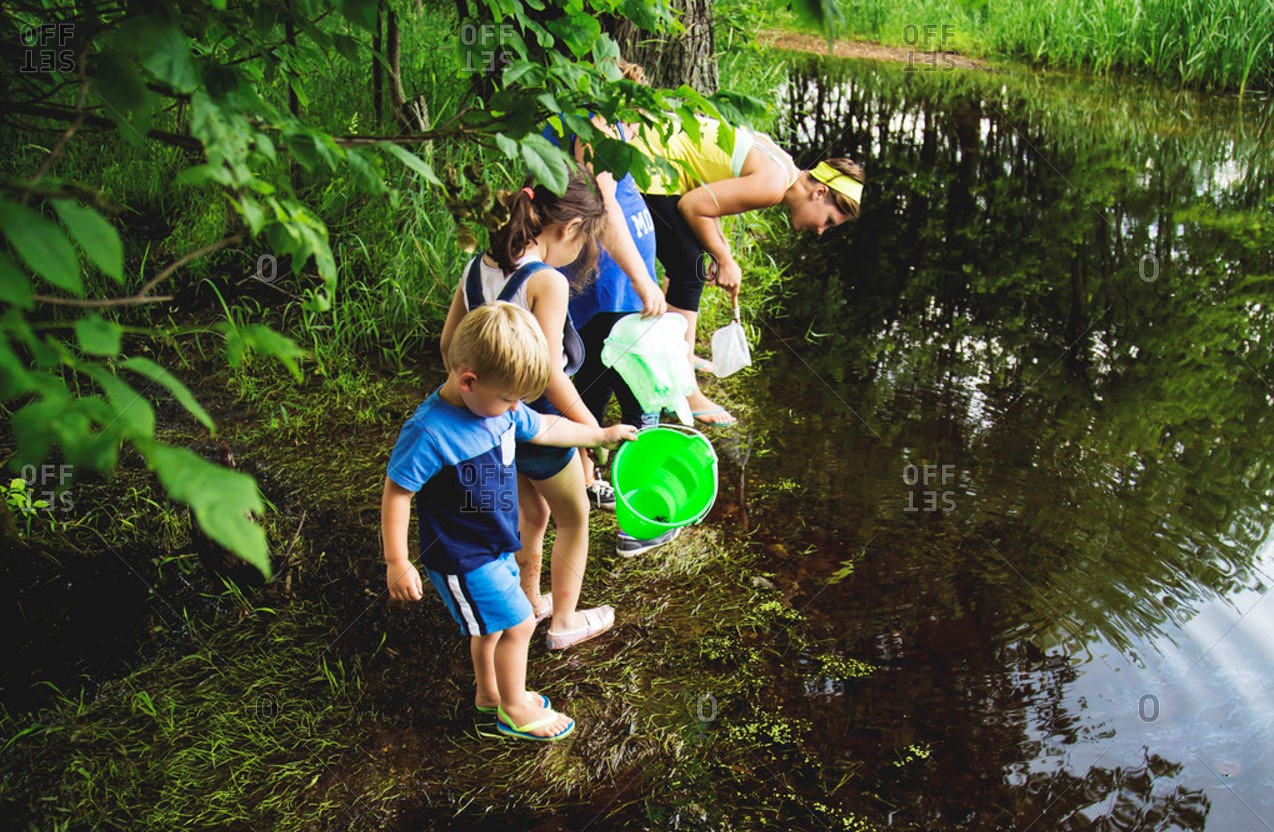
River Exploration and Frog Catching
August is now in full force and many families have had children head back to school but for us we are grasping onto the last few weeks of Summer! This month’s theme for theNature Book Club is Ponds, Rivers, and Streams!
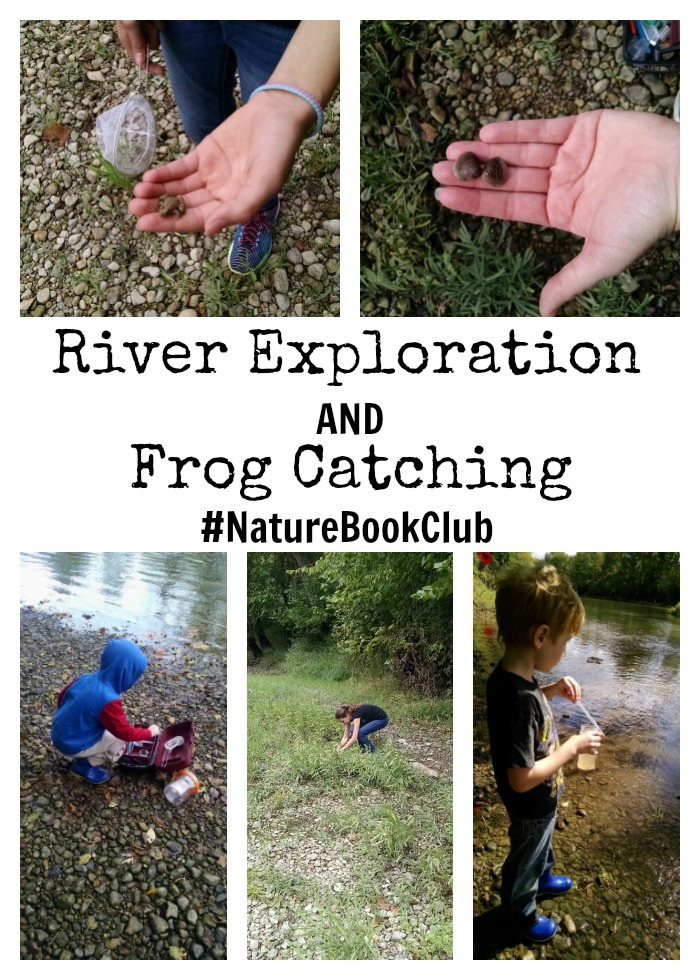
We choose books about rivers and ponds to read and are particularly fond ofBy Pond and Riverby Arabella Buckley. You can listen to the audiobook via Librivox for free! The first chapter is all about frogs and then it goes onto share about other creatures who live in or near the pond or river. We have shared a tons of free pond resourcesand ways to learn about frog lifecycle in previous posts but today I am sharing an actual trip to the river!
We love exploring our county park locations since there’s over 20 places that we can walk, hike, explore and play. One of our family’s favorite is a paved bike path that goes along the river just a 5 minute drive from our house. We park in the parking lot and walk a very short distance to access the trail that leads down to the river.
Sometimes we bring the dog’s and other times we bring our nature toolbox, nets, and water boots so we can explore at the river’s edge. I tend to look at the ground to see if the mud is soft enough for animal tracks. I usually do not find much besides a deer or raccoon print. One time there was leaves, boot prints and a spider.
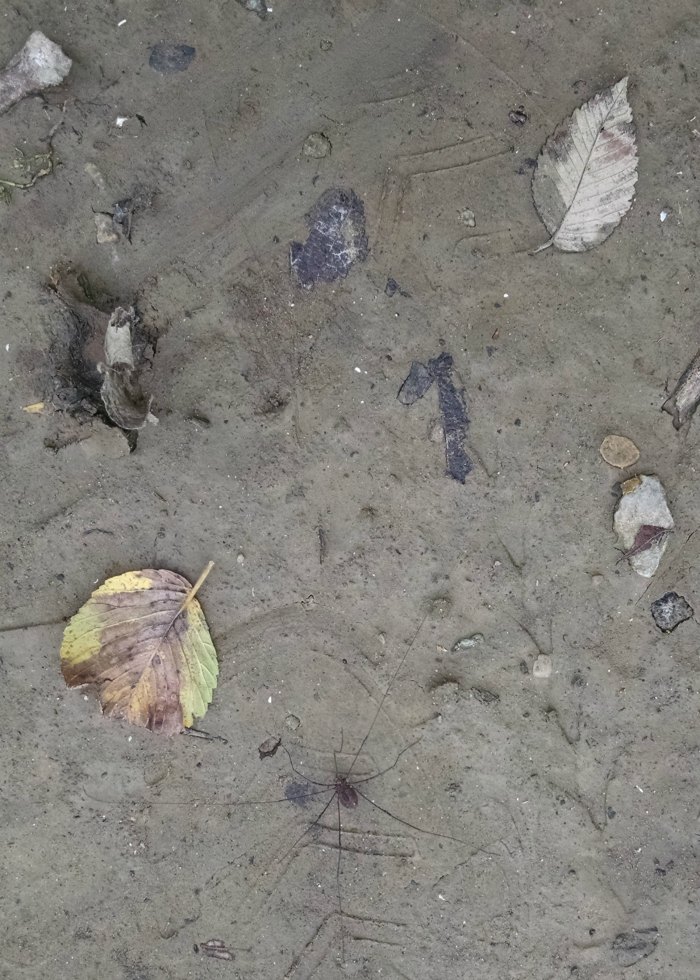
We check the water level of the river to see if it is safe enough to explore past the edge and possibly make it out to the island in the middle. My kids love going to the island to explore and feel all independent. Princess took Bayley over to the island and they both loved exploring. Bayley sniffed all around and Princess got to exercise her dog.

Big Red and Lil’ Red enjoy seeing what is in the water. Sometimes they explore using nets and other times they use simple water droppers and magnifying boxes.
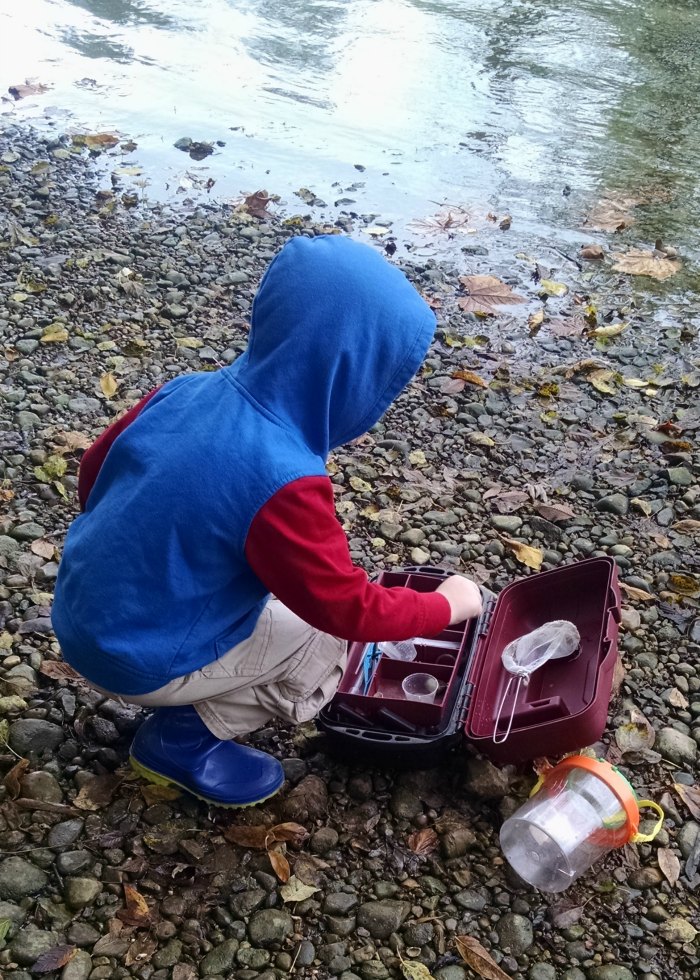
One time we realized the “pebbles” on the ground were moving! We took a closer look and found tiny frogs were hopping all around. Of course the kids just had to catch them! Princess took one of our netsand off she set to catch one.
She got one of those little cuties and brought it over to show us! These little guys are just about full grown for their species.

Since we are long overdue to get back to the river we will prepare by listening to the audiobook in the morning and heading to the river after lunch!
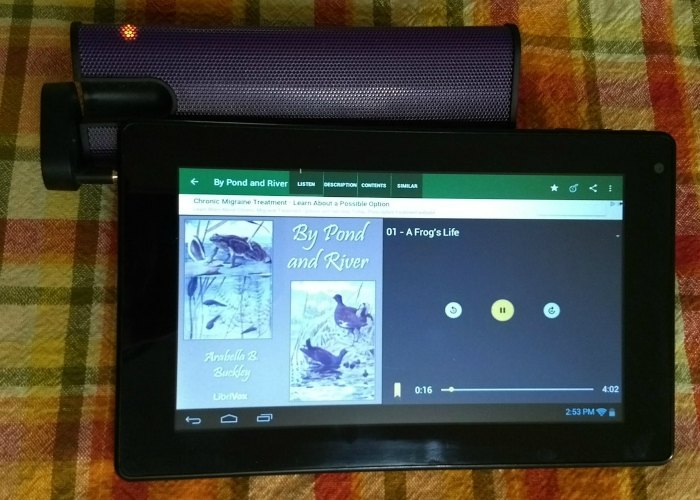
Sensory Bin and Observation Notebooking Page from Jenny at Faith & Good Works
Pond Life Printable Pack from Emily at Table Life Blog
Above and Below a Pond Unit Study and Lapbook from Tina at Tina’s Dynamic Homeschool Plus
Online Book Study about Water Cycle from Dachelle at Hide the Chocolate
STEAM Challenge – Does Water Ever Flow Up?from Erika at The Playful Scholar
Who Was?® What Was?® Where Is?® Book Series: Where is the Mississippi River?from Sharla at Minnesota Country Girl
Exploring the Sea Shore
Exploring the Shoreline

The Beach Sand Maintains and Restores Skin Quality
Walking on fine sand at the beach is just like going for a pedicure. Except it’s free. The sediment will help exfoliate the dead skin off your feet and body, keeping your skin smooth and healthy.
Why The Beach Is Actually Great For Your Health
What The Beach Can Do To Your Brain.
Two Items That Make the Beach More Enjoyable
Inflatable Beach Bags
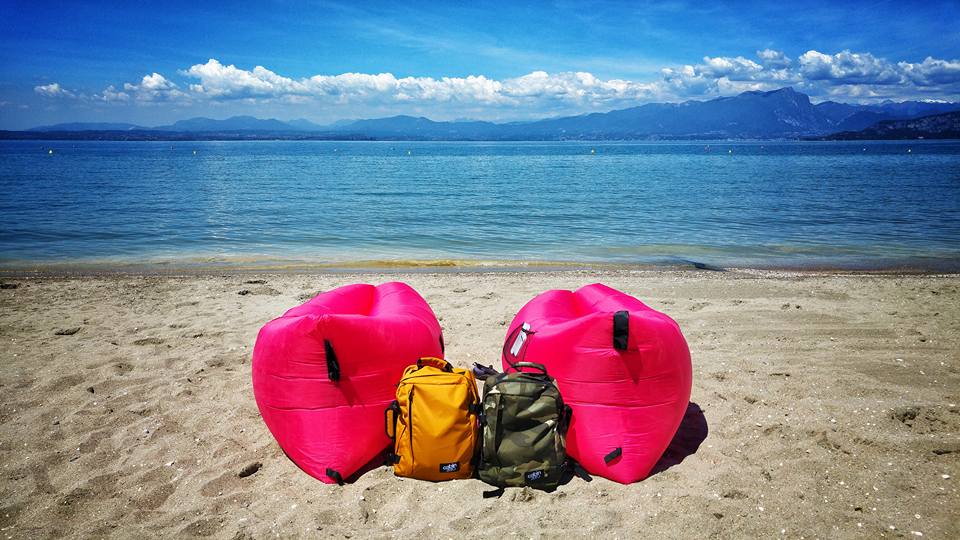
I want to start by saying that these are fantastic but be warned, if you are an introverted bookworm like me, who hates drawing unwanted attention to yourself then you need to have a beach buddy with you. Luckily for me, Paul is happy, or rather I should say whinged at until he inflates both beach bags whenever we use them and therefore, I simply stand back and let others watch as he swills the bags around filling them with air.
Trust me. I know I have now painted an oh-so-not very glamorous picture, these beach bags take very little effort to inflate once you have figured them out and they have to be the most comfortable thing I have ever used.
Just imagine, you no longer have to worry about sand-covered towels or hard sunbeds, these are like a bean-bag without the beans. Plus, the added advantage of one of these is that once you are done you simply empty them of air and roll them back up, placing them back into the small carrying bags that they come in.
This product really is a win-win in my opinion, being both sumptuous to relax on and compact.
Why not buy your very own Red Lazy Lounger so that you too can laze around in comfort next time you head to the beach.
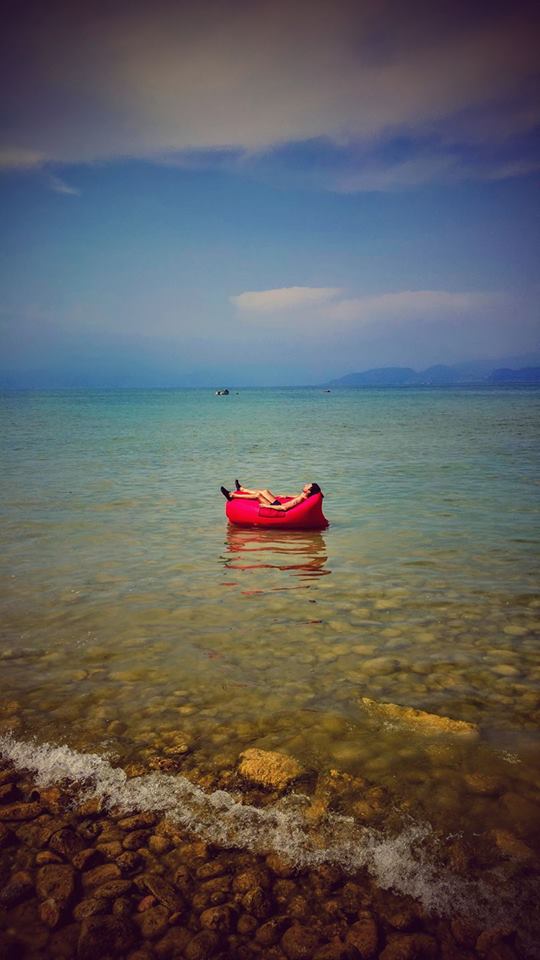
The great thing about these bags…they also float!
Goggles and a Waterproof GoPro
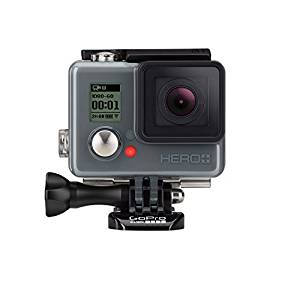
I have a real dislike for the water and refuse point blank to put my head underneath the water. I don’t care how beautiful a fish maybe I just can’t do it. It is a phobia I have had since a child and now if the slightest wave knocks me over I am out of the water quicker than the Flash can run towards danger.
Paul, however, is a real water baby. I often get so engrossed in a book I don’t even notice that he is back in the water either swimming miles out or looking at the life hidden beneath the waves.
For this reason, we never head off to the beach without a set of swimming goggles in one of our rucksack along with his waterproof GoPro. This way he can experience the glories of an underwater ecosystem up close and personal and then, thanks to the advances in modern technology, I get to see the striking images he has taken on his GoPro afterwards.
Family Fun Stuff
If you live anywhere near the coast you can easily explore a shoreline, beach or tidal river, where you are bound to discover and find a wonderful array of fascinating sea life in the intertidal zone.
The intertidal zone is the area of land that in covered by water at high tide and is then exposed at low tide. It can be divided into 3 main areas high, middle and low. Sea life that exists in the high tidal area has to be able to withstand the impact of the waves, keep themselves moist and also be able to avoid predators so they tend to be hardy marine creatures with hard shells like crabs, barnacles and limpets.
You can find a handy guide for interesting things to look out for in the intertidal zone below as well as 17 fun, educational activity ideas for children of all ages to enjoy.
Safety note: please remember that children should be supervised at all times around open water. Please also be aware of the health and safety rules and restrictions of any area you visit.
1. SEARCH FOR SEASHELLS
The easiest and most obvious things to find in the intertidal zone are seashells. Seashells come from marine invertebrates like molluscs which are animals without a backbone. Instead of a backbone they have a shell which forms an exoskeleton to support their bodies and protect them from predators. They build the shells when they are young using sea minerals like calcium, carbonate and salt. When the animal dies it leaves behind its shell which can often get washed up into the intertidal zone.
When you stop to look closely for seashells you might be surprised by the variety of species that you can find. The Marine Biological Association have a brilliant free guide to identifying seashells that you can download here to print off and take with you on your adventures. Don’t forget to look closely at the patterns and textures of the shells as well. Often shells that look very similar in shape size and colour have very different patterns which is a good way to work out the species. You can find some fun activity ideas using seashells below.
* You can find some fun sea shell potato print ideas at the bottom of the page.
2. GO ON A SEA SNAIL SAFARI
Sea snails can come in all sorts of shapes and sizes and you can normally find them clinging to rocks and other surfaces along the intertidal zone. You might be surprised to find that limpets are a type of sea snail along with periwinkles, whelks and top shells. How about going on a sea snail safari to see how many species you can spot. The Wildlife Trust have great photo guide to identifying sea snails here.
Limpets use their muscular foot (pictured below) to cling tightly to the rocks. They are mainly herbivores and they use a rasping tongue called a Radula (which is one of the worlds strongest biological structures) to scrape algae of the rocks to eat. Limpets sense vibrations if they sense danger they will suction themselves to the rock incredibly tightly in self defence.
3. MAKE A SEA SNAIL OBSERVATION BOX
Sea snails have a strong muscular foot which they use to crawl and climb around, they propel themselves forward using a combination of strong muscular wave like contractions and mucus. The mucus acts a lubricant reducing friction and also protecting them from rough and sharp terrain. This strong muscular foot also allows them to cling tightly to surfaces to protect themselves from predators and the elements.
You can observe a sea snails foot and the way it contacts and moves by making a simple snail observation box or window. All you need for this is a small recycled cardboard box and a firm sheet of recycled plastic. You can often use recycled food packaging for this,
First cut two windows into the back and front of the box. Then tape or glue the sheet of plastic packaging onto the front window. You need the plastic packaging to be firm and strong enough to safely hold a snails weight. It also needs to be clean and clear.
Finally find a sea snail and carefully and gently place it onto your observation box The children can then lie down and hold the box carefully up to look at the underside of the sea snail. If the slug seems to have securely attached itself to the plastic window you can also carefully tilt the box sideways to look at them from the side.
4. ENJOY CRABBING
There are more than 4,500 species of crabs in the world, 62 of which live in or around the waters of the UK. However you are most likely to only find the 5-8 most common varieties by the shore. There is great guide to identifying any crabs you find here. *You can also find some fun crab potato print ideas at the bottom of the page.
Like many crustaceans crabs shells are made chitin which is a hard wearing and tough substance. But you might be surprised to know that a crabs blood is actually blue because of the copper it contains. They also have 10 legs not 8 as many people believe. Crabs belong to a group of animals called Decapods which means 10 legs. Lobsters, shrimps, and prawns are also Decapods.
Crabbing is a great activity for children of all ages, they are fascinating creatures to find and there is always a lot of excitement when they scuttle about. You can either hunt for crabs by simply looking in rock pools or under rocks as the tide is going out.
Or you can catch crabs in deeper water using a net, a crabbing line (make sure it doesn’t have a hook attached) and some bait. Leftover bacon or bacon rind is the best bait to use as most of the crabs in the UK are omnivorous meaning they eat both animal and plant matter. The best places for crabbing are often well known local spots along shorelines and tidal rivers. You can often can crab off pontoons, bridges, harbour walls, slipways or a jetty.
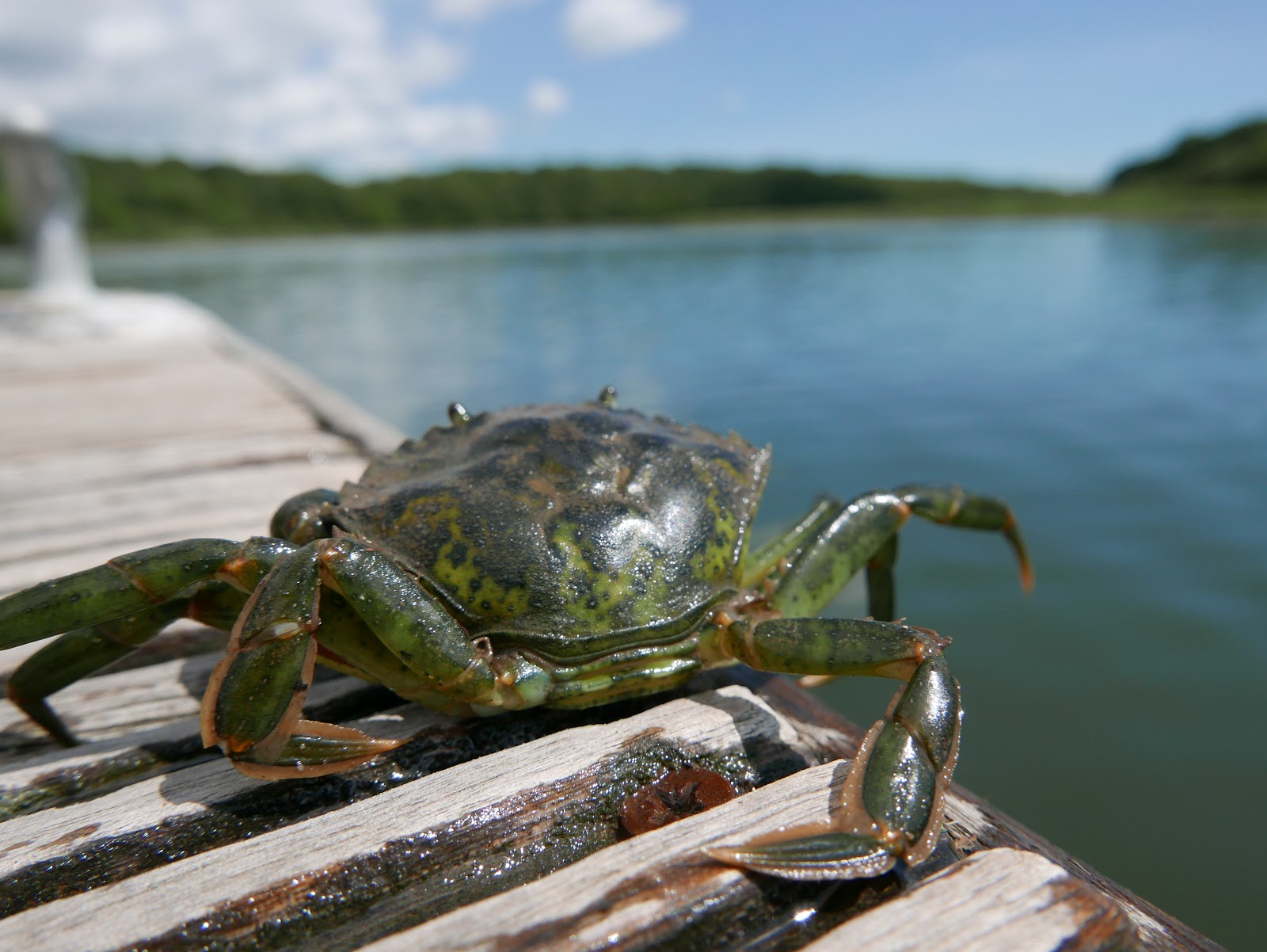
Please always handle crabs with care and let them go after a short while so they didn’t become too distressed (they blow bubbles when they are stressed). Crabs are often feisty and will pinch you in self defence, so if you want to pick one up its best to gently hold it either side of its shell or carefully pinch the back of crab in between too fingers so it doesn’t get hurt and it can’t hurt you. You can keep any of the crabs you catch in a bucket (filled with water from the location you are crabbing from) for a short while to observe.
But remember to change the water or let them go every 10 mins or so, otherwise they won’t have enough air to breath. It’s also best not to overcrowd them as they will fight or become distressed if there are too many crabs together in a small space. You could also add in some seaweed or rocks to give them a bit of shelter to hide in.
5. Identify The Local Seaweed
There are over 600 species of seaweed in the UK which provide food and shelter to a variety of other marine and shore creatures that even the littlest of learners can discover and learn about. All you need to do is download the Big Seaweed Search Guide
6. GO ROCK POOLING
Rock pools are a fantastic place to find a wide array of underwater sea life like goby fish, jelly fish, sea urchins, starfish and sea anemones Any sea anemones you find above the waterline may resemble jelly like blobs. This is because they have folded themselves inwards under a protective layer to shelter from the elements and would be predators.
When they are under water they unfurl their tentacles to catch food, the tentacles have stinging cells which allow them to paralyse prey. Sea anemones are one of the world’s slowest moving creatures, they mostly attach themselves to a surface and remain there. However they are also one of the longest living marine animals and have the ability to clone themselves.
If you get lucky you may even spot some jelly fish. The most common jellyfish to find on UK shores is the Moon jelly fish which mostly drifts with the currants feeding on plankton. You can identify them by the four circles on the under side of the dome, these circles are actually the reproductive organs. Did you know that jellyfish don’t have brains, hearts or blood and they are 95% made of water?
7. GO FOSSIL HUNTING
A fossil is the preserved remains, imprints or impression of a once living thing like as animal or plant. Did you know the word fossil comes from the Latin word ‘fossilis’ which meant “obtained by diggin” A good place to find small sea fossils is in flint. Flint forms in layers of chalk and is easy to find in the South of England and Essex, you will often find that most of the pebbles on beaches and gardens in these areas are made of flint. Chalk itself is formed from layers of mud and tiny sea creatures that have died and fallen to the ocean floor.
Over millions of years these layers of mud and sea creatures are compacted into chalk. As the chalk compacts it squeezes seawater containing silica (dissolved quartz) into any cavities, gaps or spaces around it forming nodules and layers of flint. Sometimes the flint nodules forms around a small sea creature or shellfish like a sponge (above) or sea urchin below), preserving them in the flint as a fossil.
8. MAKE NATURE ART
Nature art (also sometimes called land art) is a wonderful nature activity that encourages creativity and fine motor skills in children of all ages and abilities. All you need is some imagination and natural materials like pebbles from the shore to create pictures, shapes and patterns with.
Or if you are on a sandy beach you could simply draw and write in the sand, using your fingers or a stick to make patterns and pictures or practising writing skills. Or how about using a combination of materials and marks to make your art.
9. ROCK BALANCING
Rock balancing is also a great activity for developing fine motor skills, coordination and concentration. We find it really therapeutic and good for mindfulness. Simply find rocks of any shape or size and have fun balancing them on top of each other in towers pyramids or to make mini walls. It’s also great fun to knock them down again afterwards.
10. MAKE SHADOW CHARACTERS
Shadow characters are so easy and fun to make on a sunny day. Just draw some simple funny faces or expressions in the sand and then line your shadows up over them. You can then move about in different positions to bring your shadow characters to life. You could also take photos of all the different characters and scenarios you create.
11. SEARCH FOR ANCIENT SEA GLASS
Sea glass is glass that has been weathered an worn down by the sea, a process that can take anything from 20-200 years for the glass to become fully smoothed and frosted by the ocean. The sea glass can come from anything like broken bottles and other rubbish dumped in the ocean to glass windows and tableware from ancient shipwrecks. Safety note: please supervise children when collecting sea glass and make sure they don’t accidently pick up any sharp or newly broken glass.
You can often tell where a piece of sea glass may have come by it’s colour. The most common colours green, brown, white and clear normally come from alcoholic and non alcoholic drinks bottles. Lime green can come from1960’s soda bottles and forest green and soft blues are most likely to be from 19th centaury medicine, ink or soda bottles.
Jade and amber coloured sea glass are more uncommon and are likely to come from old whiskey, spirit and medicine bottles. Other uncommon colours include purple, cobalt and cornflower blues from Milk of magnesia, vicks vapour rub and poison bottles and opaque white which comes from early milk bottles, The rarest colours to find are grey, pink, red, yellow, teal and black. Black sea glass is glass that had iron slag added to it to increases it’s strength and protect liquids sensitive to light damage such as wines. spirits and medicines.
12. BUILD SANDCASTLES AND SAND SCULPTURES
Sandcastles are so simple to make for children of all ages. Simply fill a bucket or container with sand. Pat the sand down firmly and then turn the container over. Tap the bottoms and gently squeeze and tap until the sand comes away from the bucket or container to form a sand castle. Have fun decorating you sandcastles with any natural materials you can find like shells, stones, sticks and seaweed. Or simply enjoy knocking them down and building them back up again.
If you are feeling really adventurous you could try sculpting and shaping sand into different animals, figures, objects or patterns and shapes. You could also use found natural materials like shells, stones, sticks and seawards to give your sand sculptures extra details.
13. MAKE NATURE COLLAGES.
Making nature collages is a fun activity for children of all ages and abilities. It encourages creativity and helps develop fine motor skills. All you need is some paper or recycled cardboard, Firstly you need to draw or paint simple sea creature pictures onto the paper or cardboard. Next collect as many natural objects as you can find on the shore for your collage. You could use leaves, stones, seashells, driftwood, feathers or seaweed. Arrange the materials on top of your picture in any way you like. You could make a frame or a pattern on top of the picture or you could create a mini sea scape for your creatures to live in.
14. MAKE NATURE ART FRAMES
Nature art frames are really simple to make, fun to play with and create some wonderful images. You just need an old piece of cardboard a pen and some scissors. We hate to waste anything and recycling and reusing materials is one of many small things we can all do to help the environment. So instead of chucking used cardboard boxes we like to find ways to use them in crafts and activities.
All you need to make a nature frame is to draw a simple shape or picture like a fish onto cardboard. Your shape or picture should have at least 1- 2 easy to cut out sections that you can then look through. When you have cut out the see through sections of your frames, you can take them outside to hold them up against any of the interesting natural objects, textures, patterns and shapes you can see, like the water, shore, sky, trees, flowers and grass for example.
The picture you see or create with the frames changes as you move the paper around. Its fun to see all the beautiful patterns, shapes and colours of nature bring your pictures to life. You could even take photos of the nature frames as you go to capture the artwork and pictures they create.
15. LOOK FOR HEART SHAPED STONES
Heart shaped stones are often quite easy to find on stone and pebble beaches. You can give them as little love tokens to friends or family or keep them as mementos of your adventures. You could even write kind messages on them and hide them for others to find.
16. FIND ROCKS AND PEBBLES TO PAINT
We love finding painted pebbles and stones when we are out and about, it’s wonderful to see the creativity and love that people put into them. You can easily find pebbles to decorate yourself by looking in your garden, on a nature walk or along the shore. All you need then is some paint or permanent markers to paint or draw colourful designs onto the pebbles or turn them into animals like bees or food like strawberries.
Once you have finished painting your pebbles you could use them in pretend play, as games counters or hide them in your garden and have a treasure hunt. You could even join a local rock finding group where you show pictures of the rocks you have made and invite people to find them in a local park or a safe, easy to access place. Who knows how far your rocks may travel and the adventures they might have may have along the way. *Safety note please be aware of the choking hazard of pebbles with smaller children.
17. FIND SHELLS AND STONE WITH HOLES IN FOR CRAFTS
Stones and shells that have holes in them are great for making jewellery. You simply thread them onto string, ribbon or wool. (Which is another great activity for developing fine motor skills.) You could also tie a threaded string of shells and stones onto a forked branch/stick to make a stick rattle. This is great fun to play with as it makes a fantastic noise and you can use it in games or as a musical instrument.
Or how about tying strings of threaded shells and stones onto a stick to make a mobile. You could even make a Rainbow stick mobile by painting 6-7 sticks in the colours of the rainbow. When they are dry you then tie them together using a piece of string, ribbon or wool and then you hang your strings of seashells underneath to look like raindrops.
Try A Sealife Safari
WHAT WILL YOU FIND?
In honour of world oceans day, we set out on an walking adventure searching for sea life on the shore with friends.
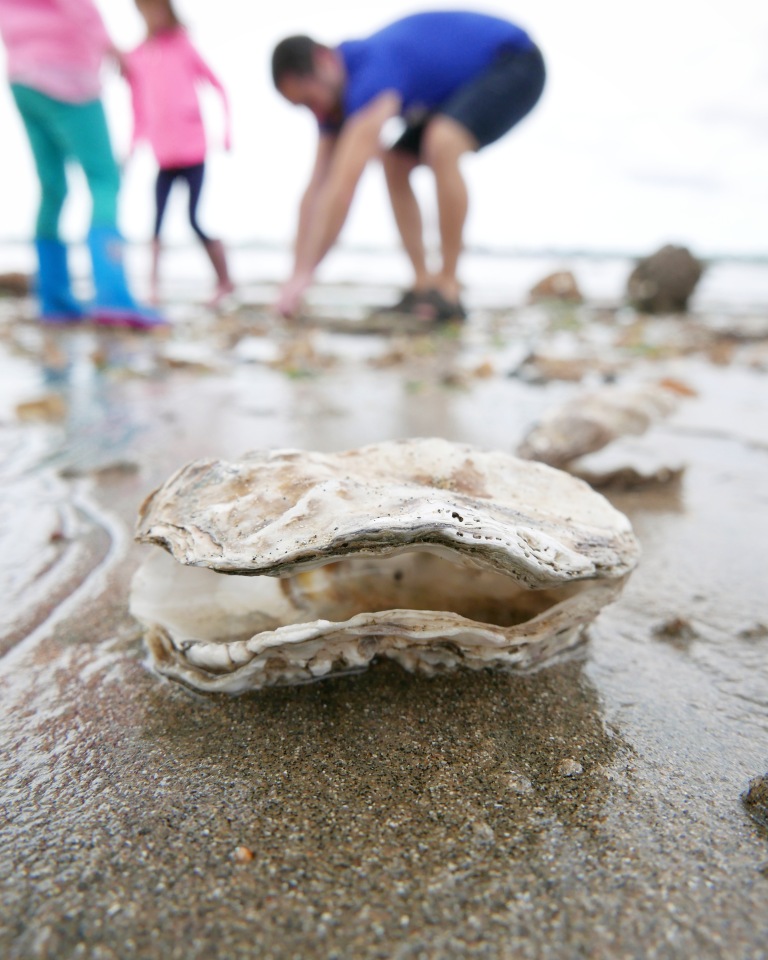
The first thing we found was a giant jelly fish washed up on the shore. We turned it over carefully with our boots to get a better look (you must never touch them with your hands) and the cap was surprisingly heavy and solid.
There were also hundreds of winkles, limpets and barnacles and lots of seaweed and shells along the tidal area.
We spotted oysters, mussels, clams and whelks amongst the numerous shells on the shore. Most where empty but we did find a few living creatures still in some of them.
When we turned over large rocks by the waters edge we found lots of crabs in different sizes and colours. It was interesting watching how well they could rehide and camouflage themselves amongst the stones.
We also found these little Goby fish in some rock pools. (We handled them very carefully and put them straight back in the water where we found them)
All in all it was a very successful sealife safari, the children had fun exploring and playing on the shore and there was a lot of excitement every time they found or discovered anything.
On the way home we stopped by the duck pond near the shore to look at all the adorable, fluffy baby ducklings, goslings and cygnets.
Identifying shells and rock balancing on the shore
Exploring the shore
Anyone up for catching Crabs?
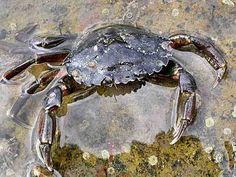
Crabbing is a great activity for children of all ages, they are fascinating creatures to find and there is always a lot of excitement when they scuttle about. You can either hunt for crabs by simply looking in rock pools or under rocks as the tide is going out.
WHERE TO CATCH CRAB
Several species of crab can be found in saltwater and freshwater bodies throughout the United States.
Some of the most popular saltwater crabs to catch are the king and snow crab, which are common in Alaska, Dungeness on the West Coast, and the Atlantic blue crab, also commonly known as the Chesapeake blue crab. Saltwater crabs tend to like shallow, marshy areas so consider destinations like brackish rivers, bays and inlets. And while you can crab by boat, the great thing about crabbing is that you can have just as much success from land. Crab prefer to be near structures, so when planning your trip, look for spots like docks, piers, and jetties.
Freshwater crabs like fiddler and red crabs are best fished in shallow water near land. Common places you’ll find these species is along the shorelines with places to hide, such as beaches with logs, boulders or grass. Rocky reefs are another popular habitat.
CRABBING EQUIPMENT
What makes crabbing a great activity for beginners is that you don’t need a lot of special equipment. The simplest way to catch crabs is with a dip net. Another easy method is to drop a fishing line with bait at the end. Simply wait for a tug then pull the crab in, catching it in a net. The only downside with the line method is that you can only catch one crab at a time. For a greater take, you may want to use a crab trap.
Crab traps are wire cages attached to a long rope that are lowered to the bottom of a body of water. Depending on your preference – and budget – there are many different types that can be used effectively, including crab rings, pyramid traps, standard square style and more. With any of these, you’ll secure the bait inside with line, wire or a clip, which will attract the crab to walk into the trap. Once you set your trap, you just sit back and wait. A good rule of thumb is to check your trap every 15 to 30 minutes.
When you bring up the trap, you’ll want a net or bucket to contain the crab and keep them from scurrying away. You may also want to get a pair of crabbing gloves to avoid getting pinched.
BEST BAIT FOR CRABBING
Crabs are scavengers, which means you have a lot of possibilities for bait when crabbing. While there are many types, fresh bait tends to be best, and the smellier, the better, since crab will go after pungent options. Some good choices include raw chicken or turkey, fish carcass, and razor clams. You can even use hot dogs!
Exploring the shore – Activities and ideas
Seaweed Activities for Families
Did you know there are over 11,000 species of seaweed in the world, 600 of which can be found in the UK. Seaweed provides food and shelter to a variety of marine creatures as well as producing oxygen, capturing carbon, absorbing toxins and in some cases even reducing the acidity of sea water.
You might be surprised to find that seaweed isn’t a plant, it is actually a type of algae. Seaweed doesn’t use or have stems or roots to transport nutrients or water from the ground to its system. Instead it uses its cells to absorb or develop what it needs from the water as well as absorbing energy from the sun and convert it into food using a process called photosynthesis. A by product of photosynthesis is oxygen which gets re-released back into the atmosphere an amazing 40-50% of the oxygen in our atmosphere is believed to be produced by seaweed.
As seaweed doesn’t have roots it anchors itself to surfaces using a structure called a holdfast instead. Seaweed can come in a variety of shapes, sizes and colours. However they can generally be grouped into three main categories of red, green and brown. They can survive in a variety of marine habitats from rock pools and shore lines, on rock beds along coastal line and even sometimes free floating in the ocean.
Some varieties of seaweed are edible and are considered good sources of nutrients like fibre, protein, vitamins and minerals. Seaweed has been used throughout human history as a source of food and medicine as well as being utilised for industrial purposes. From paper coatings, adhesives and dental moulds to food additives, fertiliser and edible packaging.
You can find lots of fun seaweed activity ideas below to explore and learn more about this amazing algae.
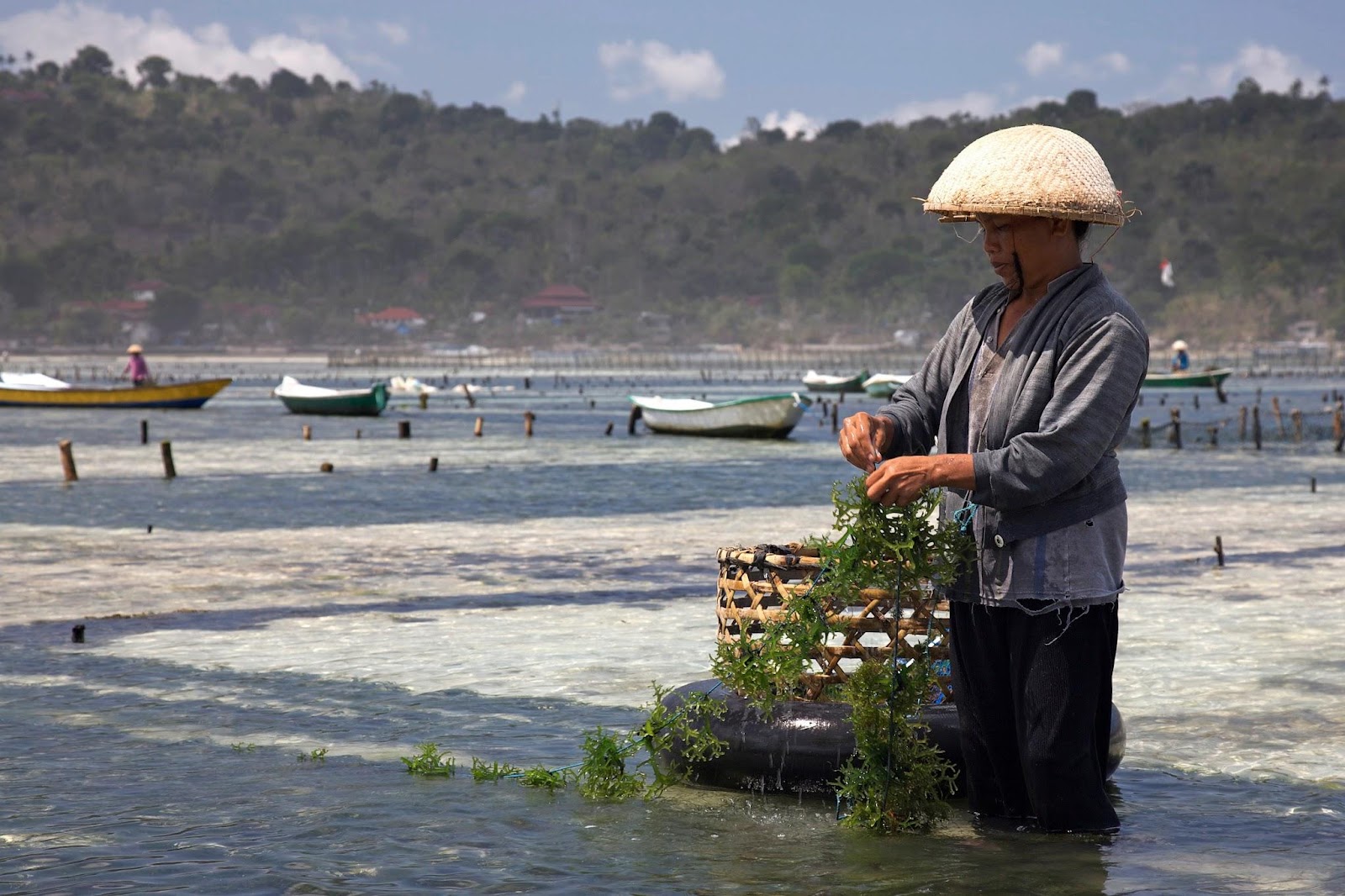
1. IDENTIFY THE LOCAL SEAWEED
All you need to do is download the Big Seaweed Search Guide here and then visit the seashore with boots, a set of salad tongs(or gloves ) and a bucket. It's amazing how interesting seaweeds can be when you you are not touching them while exploring the different colors, shapes, and funky textures. Drop some in your bucket to explore more, identify, or use in art or for for a side dish for dinner.
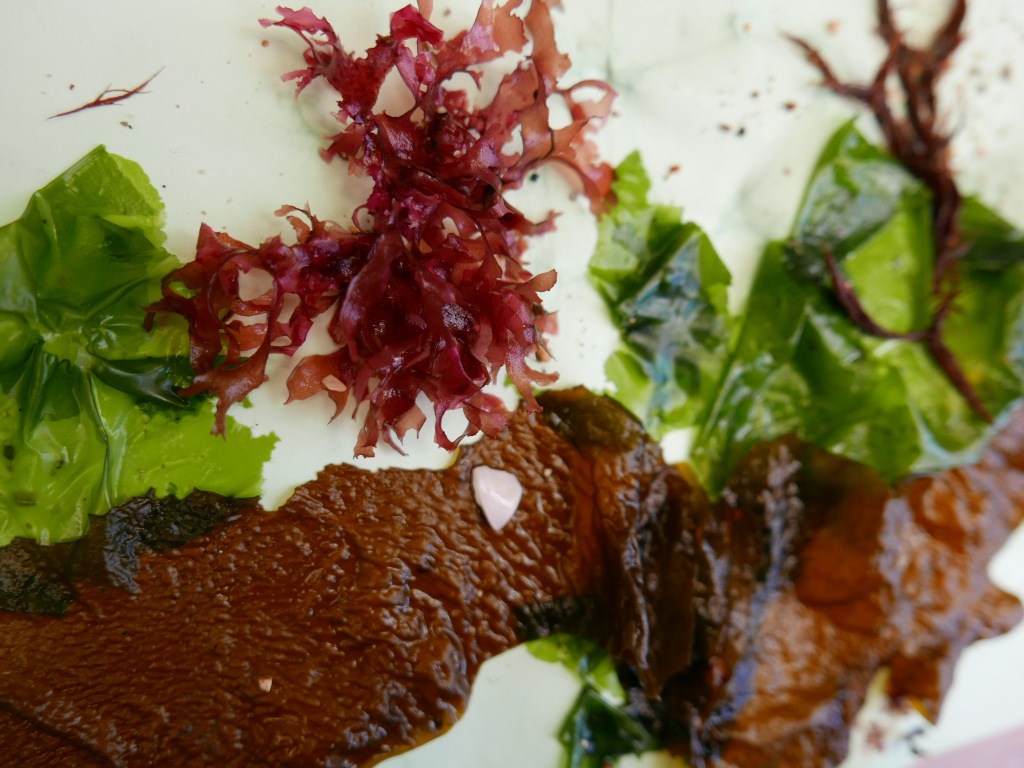
2. CREATE A SEAWEED SCRAP BOOK
Collecting and drying seaweed to place in scrapbooks was a popular Victorian past time, especially for women who weren’t often allowed to take part in natural science activities. Even Queen Victoria enjoyed creating a seaweed scrap book as a young girl. All you need for this activity is a scrapbook and pliers or a stick to pick up the seaweed with and carefully arrange it on the pages. You can then leave the seaweed to dry as it is or place blotting paper on top and sandwich it between the pages of the book to dry flatter.
3. MAKE SEAWEED NATURE ART
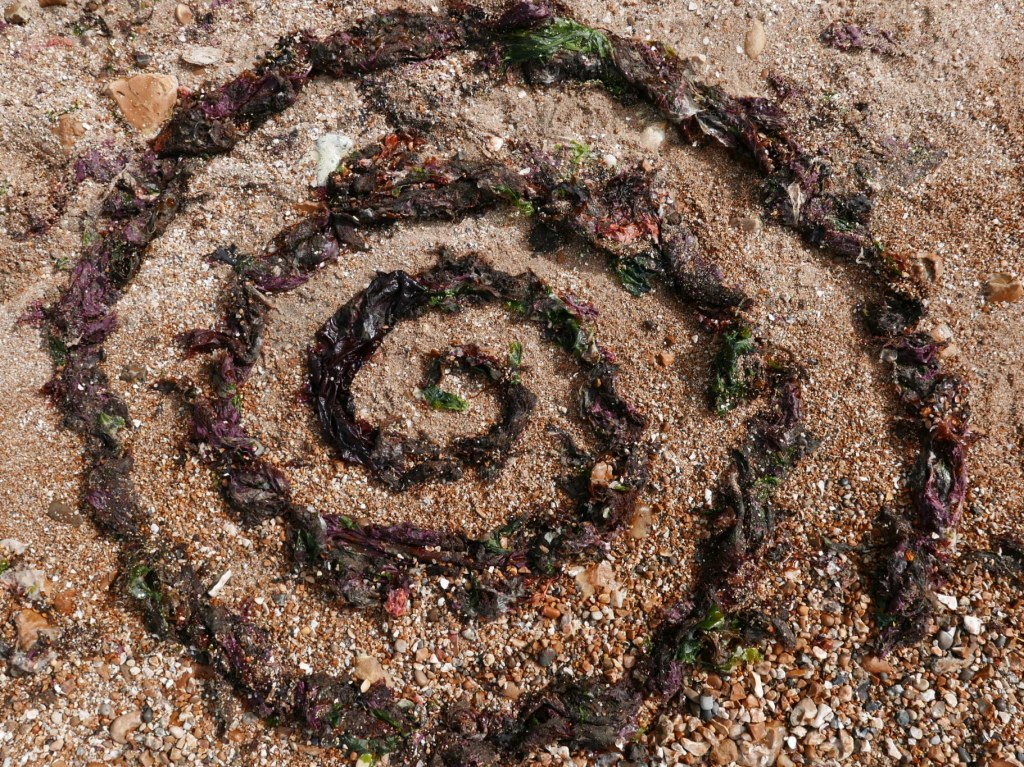
Nature art is a great outdoor activity that encourages creativity and fine motor skills. It is also a fun and engaging mindfulness activity. Simply collect as many natural objects as you can find around you. You could use seaweed, sand, stone, driftwood, seashells, leaves, grass, bark, fallen fruit and flowers. *But pretty please don’t pick any wild flowers, only collect ones you have grown yourself or fallen ones you find on the floor. Then arrange them into shapes, pictures or patterns.
If you take photos of the nature art you create you can then print them out later as artwork, learning resources or even turn them into cards to give to friends and family. You could also make nature art letters, numbers and words to use as learning prompts for English and maths games.
4. MAKE A SEAWEED SENSORY BOTTLE
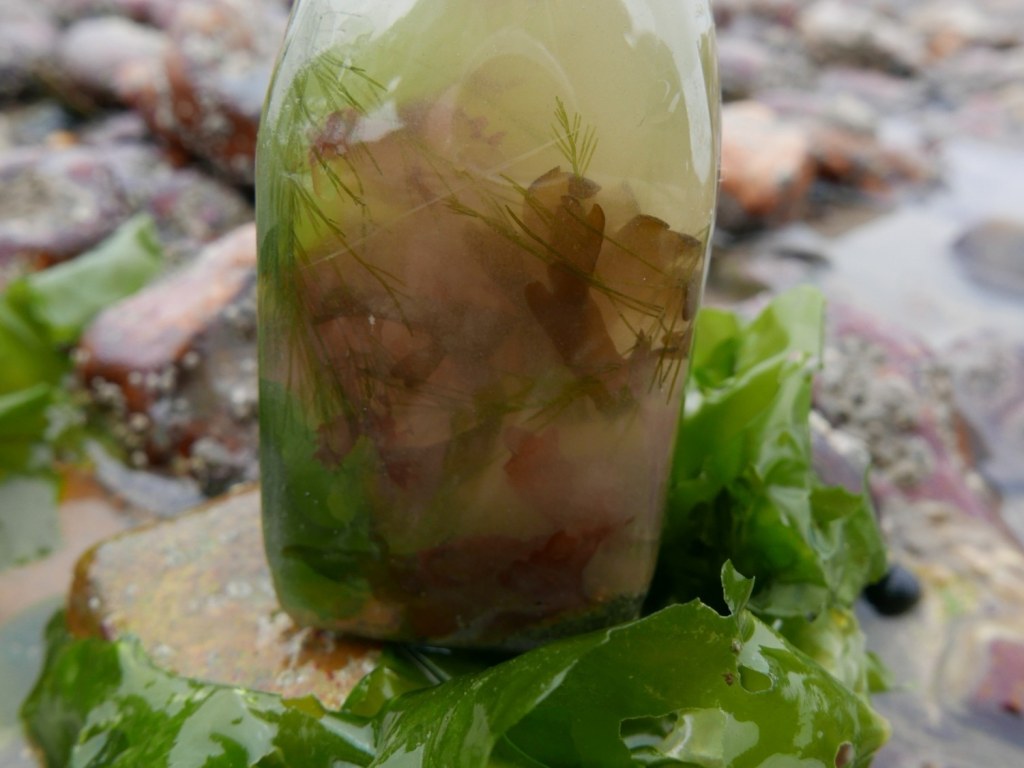
You could easily make a seaweed sensory bottle using a recycled bottle filled with seawater and seaweed. Just make sure the lid of the bottle you use is securely fastened or glued on so little hands can’t open it and make sure to chuck the contents of the bottle away after a week or so.
5. MAKE A SEAWEED SUNCATCHER

We love making suncatchers, they are so pretty and effective. To make a suncatcher you will need some clear flat plastic packaging. We hate to waste anything and recycling and reusing materials is one of many small things we can all do to help the environment. So instead of chucking used packaging we like to find ways to use them in crafts and activities.
Paint a thin layer of pva glue over the sheet of plastic and then arrange the seaweed on top in any shape, pattern or position you like. When you have finished arranging the seaweed simply leave it to dry. Hold it up to the light or a window and voila your sun catcher is finished, it really is that simple. You can also add ribbon, wool or string to them to turn them into hanging decorations to place in windows, walls or hang them from trees.
6. MAKE A SEAWEED NATURE COLLAGE
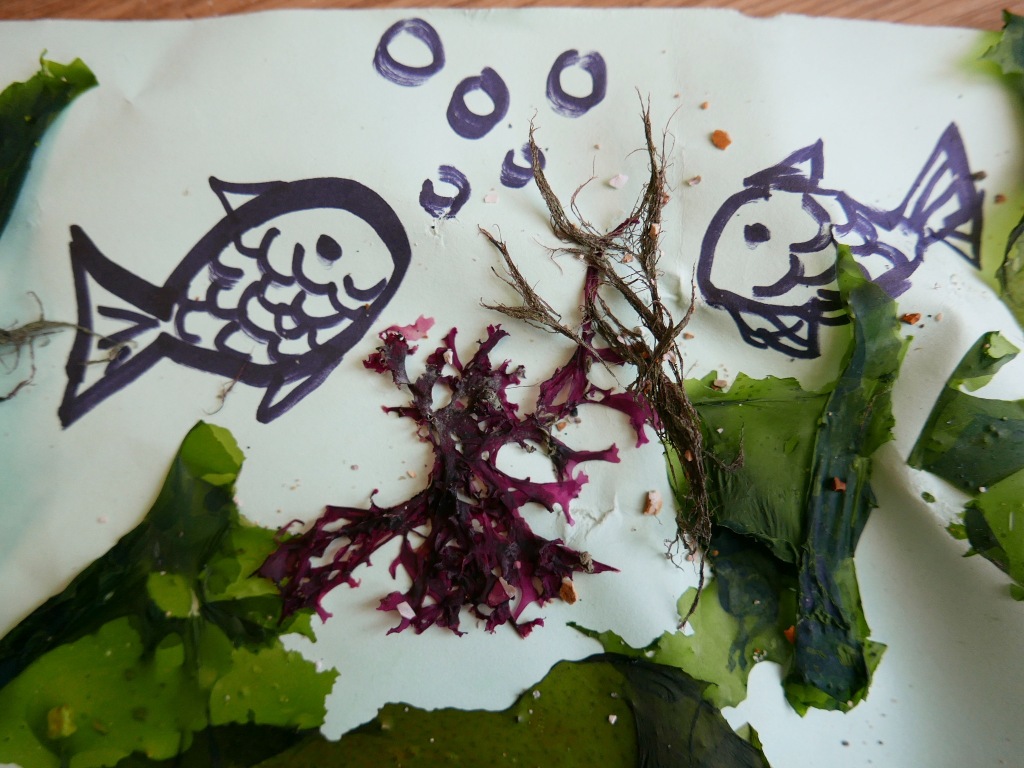
Making nature collages is a fun activity for children of all ages and abilities. It encourages creativity and helps develop fine motor skills. All you need is some paper or recycled cardboard, Firstly you need to draw or paint simple pictures or marine animals onto the paper or cardboard like fish. Next collect some seaweed and arrange it over the picture to create a seascape or scene.
7. MAKE A SEAWEED VASE OR LANTERN
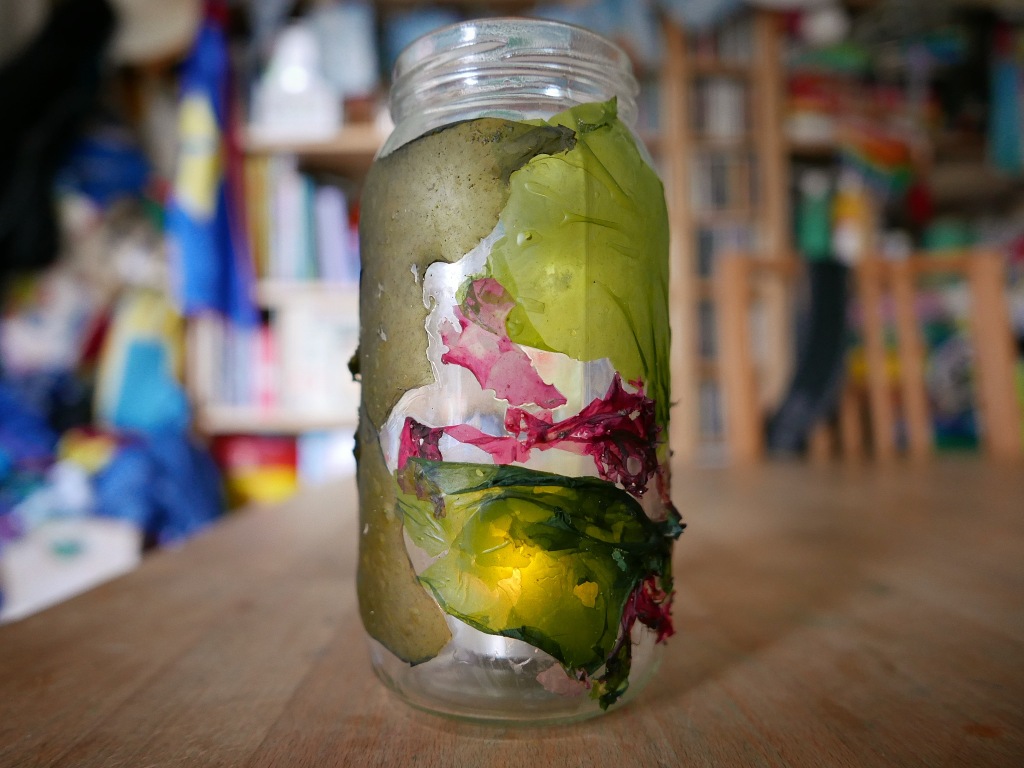
To make a seaweed lantern all you need is a glass jar, pva glue and some seaweed. Simply paint a thin layer of pva glue over the outside of the jar and then arrange the seaweed on top in any shape, pattern or position you like. When you have finished arranging the seaweed simply leave it to dry.
When the glue has dried you should have a beautiful stained glass effect. You can then either use the jar as vase for flowers or a pencil pot . Or you can place a tealight candle in it, to turn it into a beautiful lantern. Be careful to supervise children as the glass can get hot and never leave the lantern unattended as its a potential fire hazard.
Potato printing is a simple activity for children of ages, all you need is a potato cut in half, a bit of inspiration and some paint to get started. You can find lots of easy sea life potato print ideas below for inspiration. From rainbow fish and crabs to jelly fish, seashells and seaweed.
9. SEAWEED STICK PEOPLE

Making stick people is a fun and easy activity for children of ages where you can use any sticks and branches you find to create fun and interesting characters. You can easily bring the sticks and branches you find on walks to life by giving them faces and different expressions using just marker pens or paint.
Older children and adults could also remove the bark at one end of the stick or branch using an old vegetable peeler (Adult supervision required) or sand paper to create a smoother surface to paint and draw the faces onto. You could also give the figures hair and clothes using found materials like seaweed and shells.
10. SEAWEED ICE PLAY
Ice play is a great activity for children of all ages. It is so quick and simple to make and you can easily add extra sensory elements using seaweed, scented herbs, flavoured oils, colouring and textured natural materials.
Just be careful using seaweed in ice play with younger children as some seaweeds can be toxic and carry bacteria so they shouldn’t be ingested or go anywhere near mouths. This activity is only recommended for older children who should be supervised at all times.
11. MAKE FAKE SEAWEED
It is so quick and simple to make your own fake seaweed for sensory, educational and creative activities. Simply cut crepe paper or fabric straps into wavy strands and fronds and layer them together to create a bed of seagrass.
12. MAKE SEAWEED BOTANICAL DYE
The process of making botanical dyes is very simple, you can easily create some beautiful coloured botanical dyes yourself using just foraged seaweed, plants and vegetable scraps. You can then use it to colour fabrics like cotton, linen and wool or materials like paper, card and wood. Natural dyes are also a wonderful, environmentally friendly alternative to man-made synthetics. You can find a full guide to making botanical dyes here.
Boating and Lake Fun
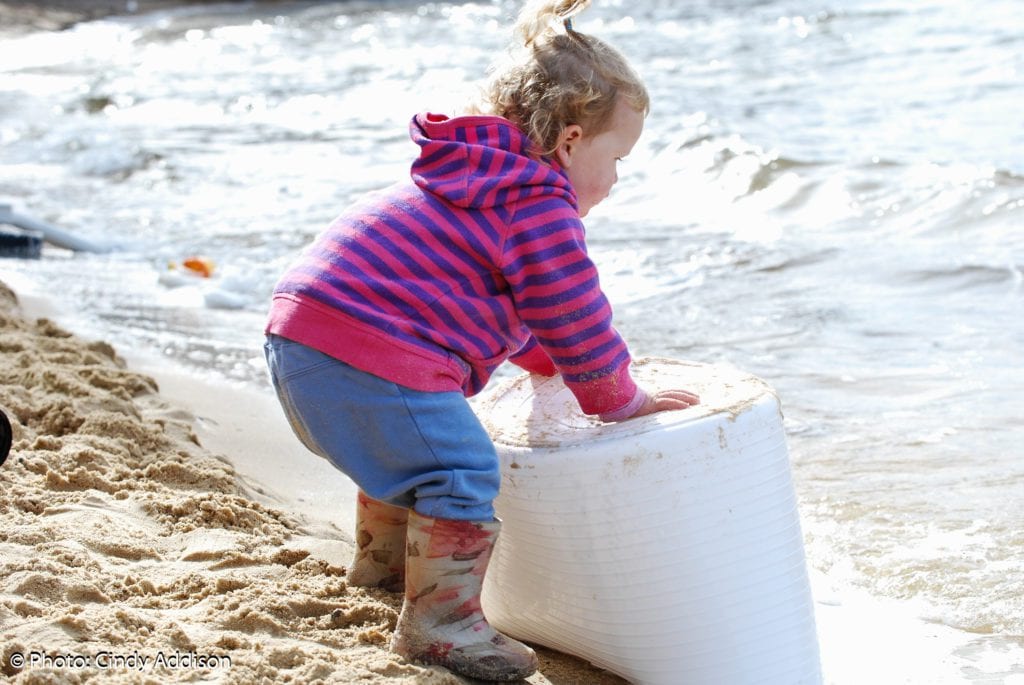
How To Have A Safe Lake Trip With Your Baby
Purchase an infant PFD (personal floatation device)
Safeguard against dehydration
Avoid Peak Sun Exposure
Find a location with shade
Protect their skin when in the sun
Protect their eyes
Purchase an infant PFD (personal floatation device)
A popular lake day activity is boating. While babies are able to board, they too must follow the state laws. Most states require that everyone on board have a PFD. The Stingray Infant PFD is a great choice because it is US coast guard approved and uses bright colors so your baby is easily visible. In addition to these necessary features, this life jacket is made from a durable and quick-drying Nylon fabric with quick-release buckles.
Even if you don’t have plans to boat, it’s best for a baby to wear a PFD anytime they are in the water.
Lifejackets- Babies under 35 pounds are not big enough for a baby lifejacket. They can suffocate if they slip inside the lifepreserver without you knowing.

Safeguard against dehydration
During a hot day, it’s easy for adults to dehydrate quickly. This is even more true with infants. Come prepared with extra bottles or plan to nurse more frequently if currently breastfeeding. If your baby has reached the age where they can start eating solids, consider bringing a couple of servings of food that are travel-friendly. A great example of this is fruit/veggie pouches.
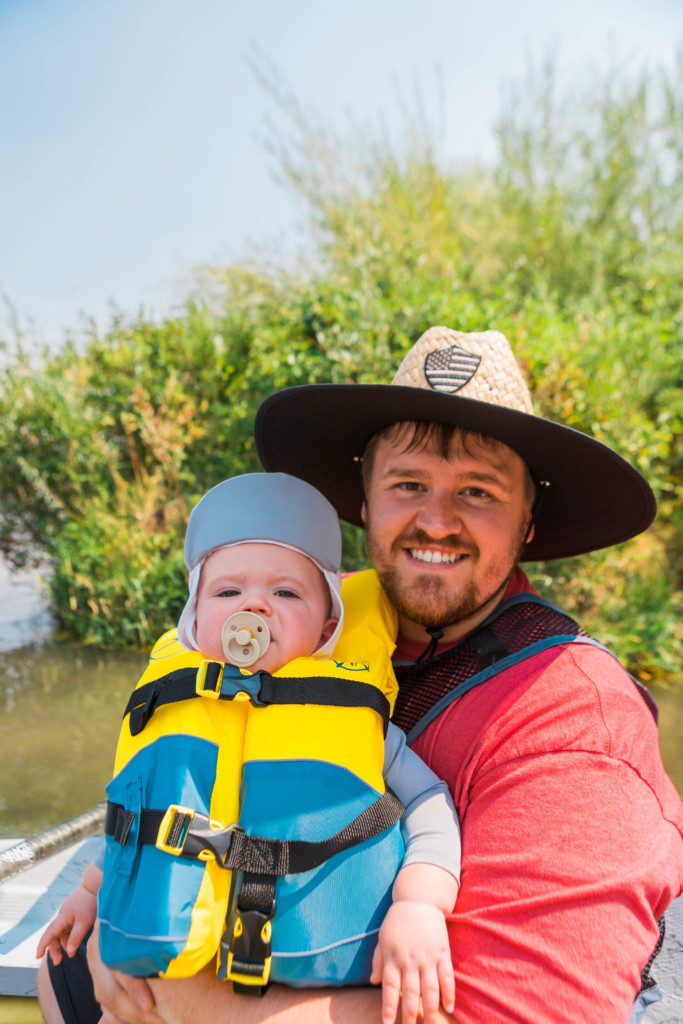

Read more- How To Successfully Vacation In Ft. Lauderdale, Florida With A Baby
Avoid Peak Sun Exposure
A lake day might look a little different with an infant because of the fact that you’ll want to avoid peak sun exposure. These hours generally fall between 11 a.m. and 4 p.m. Getting an early or late start to the day might also be a great way to beat the crowds! If you can’t avoid these harsh, daylight hours, read below for some additional tips.
Find a location with shade
(or take shade tents)
One of the first things you’ll want to do when getting to the lake is finding a great spot with plenty of shade. No sunbathing for the baby! In addition to finding natural shade given by trees, feel free to bring a sun canopy or umbrella that has UPF protection. Trust us, keeping cool not only protects their delicate skin, but it will help with their mood!
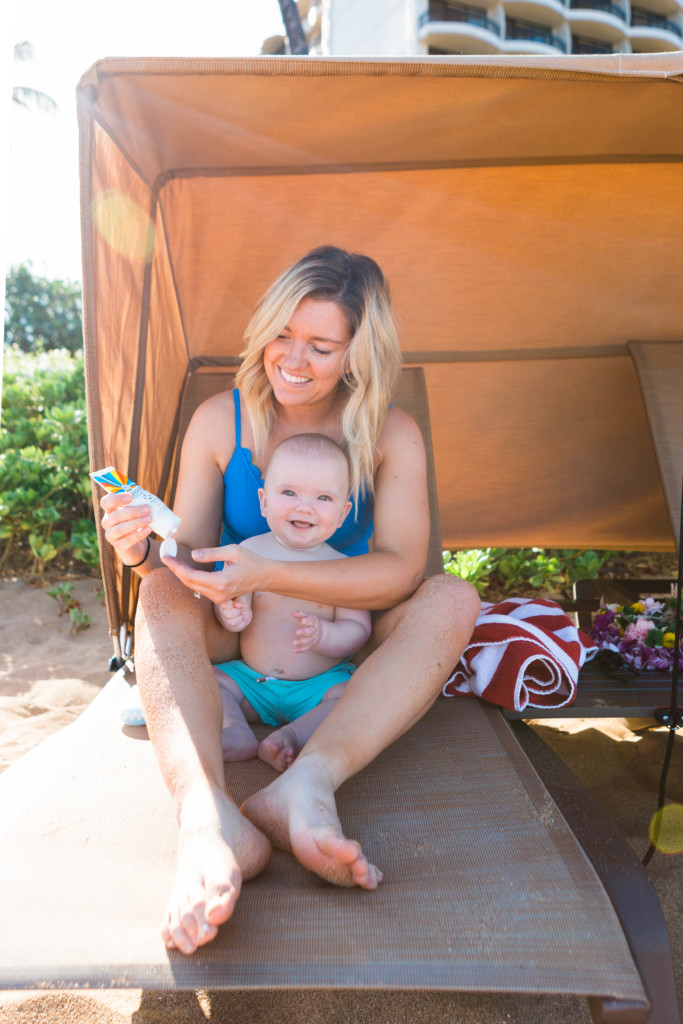
Protect their skin when in the sun
You probably don’t want to hide out in the shade all day at the lake. This is when you need to be especially careful about sun exposure. The US FDA recommends avoiding sunscreen for infants that are under the age of 6 months. Choose UPF clothing that covers them as much as possible. In addition, always keep a sun hat on your baby that protects not only the tops of their heads but the back of the neck and ears.
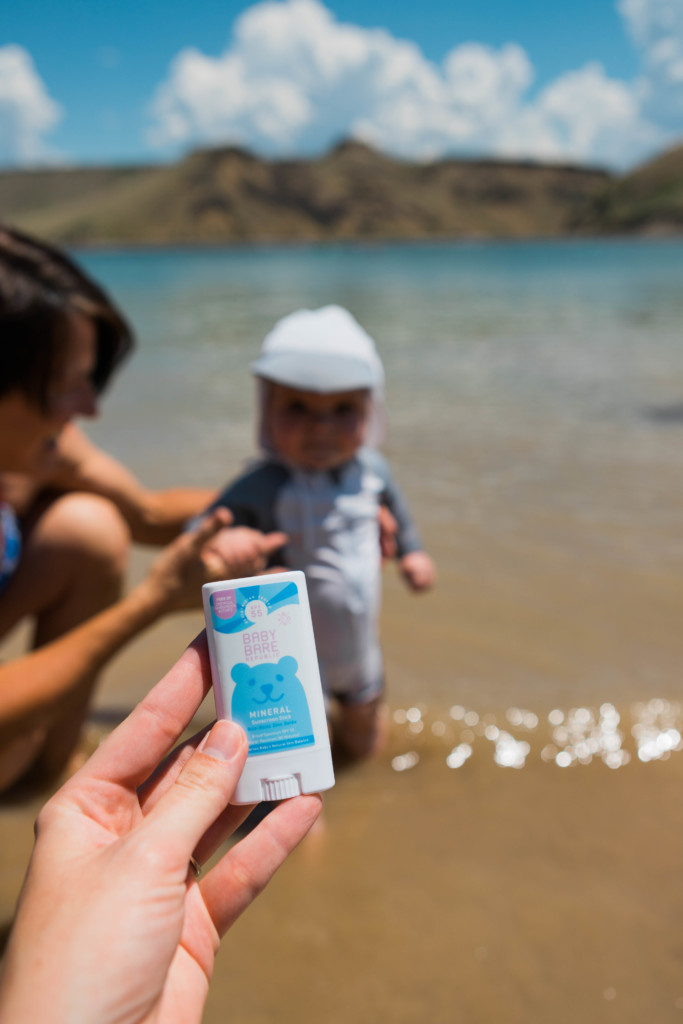
Read more- Baby Travel Essentials For 0-12 Month-Old Babies That Will Save Your Vacation
Protect their eyes
While baby sunglasses don’t seem to be the most practical item to bring to the lake, they can be very helpful! Recent reports have suggested that babies’ eyes lack the ability to block UV rays to the same degree that grown adults can. These may be foreign for a baby to wear so practice several days before getting your baby used to feeling them on.
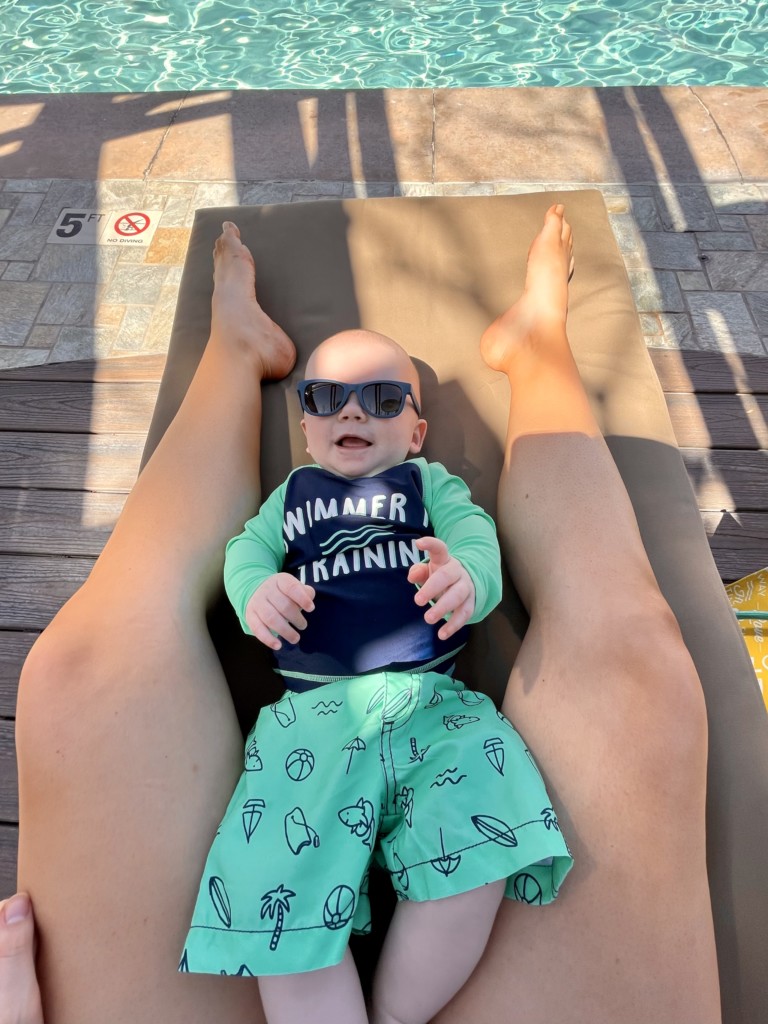
Wind Direction Watcher
Build this wind direction watcher and you'll be able to see the wind blow!
What You'll Need:
Piece of cardboard
Marker
Tape
Small mirror
Compass
Swoooosh! There goes the wind ... and now you can see it!
Step 1: Mark out north, south, east, and west on the outside edge of a piece of cardboard. Include other directions, like northeast, if you like.
Step 2: Tape a small mirror to the cardboard so that the compass directions form a circle around the mirror. Now you're ready to chase the wind!
Step 3: Place your cloud chaser on the ground so it faces north. You can do this by matching north on your cloud chaser with north on your compass.
Step 4: Lie next to your cloud chaser and watch the reflection of the clouds in the mirror. Once you see which way the clouds are moving, you'll know that's the same direction that the wind is blowing.The next activity is sure to give your imagination a workout
5 Tips for Boating With Babies
+ baby boating accessories
Summer is here y’all! And in Florida, we pack up our things and head to the boat ramp! Boating with babies can be a very safe and fun activity in the summer, as long as you are well prepared and follow certain safety regulations, such as always having a life vest properly sized for your babe! If you’re looking for a life vest for an infant under 30 pounds, Amazon (the place that has everything) has this one which is the most comfortable. We have a similar one, that was handed down to us but the size range is different, and we love it. I don’t consider this a tip, however, I do consider it a NECESSITY!!

1. BE PREPARED FOR BOATING WITH BABIES
As a momma, this is basically the number one tip/rule in your life regardless of where you are going. Always be prepared! I can’t stress this enough for the boat! You are basically in the middle of the water somewhere, and the last thing you want to do is have to go back to land every so often to get whatever it is that you forgot.
When I’m packing my bag/diaper bag for boating with babies, my essentials go as follows :
Diapers (duh! BRING EXTRA!!!)
Wipes (another obvious – never go anywhere without these!)
SUNSCREEN!! (an absolute necessity! Baby skin is so sensitive, this is a must!!)
Towels (my favorite are the hooded – but anything works!)
Extra onesies (I usually bring just plain white onesies, that I’m okay with getting salty and sweaty!)
Reusable swim diaper (oh my goodness- this ones the best!! So easy for a dip, especially since the smallest size disposable swim diaper is 16 pounds!)
Jelly shoes (since infants do not walk, this provides enough feet protection, with the ability to still get wet and cool when going for a dip in the water!)
Hat (keep that babe nice and shady!)
Fan (battery operated – but nice to give the babe cool relief in the heat!)
Bouncer seat (not to be used when the boat is in motion at all! We use it when we are either anchored out and not moving, or anchored up to an island and we bring it onto the island under our pop up tent!)

2. WEAR YOUR BABY ON THE BOAT
For mom it is SO much more comforting knowing that are right on you and basically can’t move without you. Accidents can happen in a split second, so always be extra cautious even with baby wearing them onto the boat. Make sure there is somebody on the boat guiding you down, and somebody on land behind you kind of hovering you! Safety is obviously key here, so you can never have too much help! Continue to wear your baby until you get from point A to point B! NEVER pass them around during the time that the boat is in movement. You can read more about my love for baby carriers (and get a little free surprise) by clicking here!

3. FIND YOUR SAFE SPOT ON THE BOAT
If you’re like us, and have grown up on a boat/the water you probably have never really thought about sitting in the “safest” spot because to us they are all safe! Which is true! But it’s very important that you sit in a sturdy seat. Mostly for the comfort of the baby aspect, but it does also make you feel much safer and more secure! Usually, depending on the type of boat you are on, there is a seat, kind of like a captains chair, just not behind the steering wheel! Usually this seat gets splashed by water the least, and is a little higher up so you don’t feel the boat hitting the waves as hard! If you sit in those lower seats, your little babe is going to be constantly bouncing up and down, and constantly shaken, which obviously is not good for their fragile bodies/heads!
4. KEEP YOUR BABY COOL ON THE BOAT
The Florida heat is no joke, and I’m sure wherever you are located 80+ degrees, is 80+ degrees! HOT HOT HOT! A risk factor of SIDS can be overheating, so it is so important that you keep your babe as cool as possible! Depending on the degree of the water, we will put a reusable swim diaper on her, and dip her in! Make sure you change them almost immediately after a dip in the water to protect against infections caused by sitting water, such as UTI’s (yes – boys can get them too)! Most boats have some type of Bimini or covering that you can set your babe under in their seat. If the boat you are on only has a T-Top or nothing at all I highly suggest bringing an umbrella. Shade is crucial in keeping them protected from the sun (as well as sunscreen)! and in turn keeping them cool! We also bring a handy dandy 02 Cool fan with us. It is battery operated, so it’s great to face towards her when we feel like that she is getting too hot!
5. HAVE FUN WHILE BOATING WITH BABIES!
I know, such an obvious one! But really y’all! Have a blast! I know sometimes being a parent in these situations is nerve-wracking, because again, accidents happen in a split second! But enjoy these moments with your babe while they are still little! They grow up so fast, and these memories are ones you don’t want to miss! Take lots of pictures, as always! As long as you are being as safe as humanly possible, you should be just fine, and completely able to enjoy yourself!
All of these tips are based on boating with experienced boaters and passengers. If this is your first time on a boat, or your operators first time operating a boat, then leave that babe at home until you get comfortable and familiarized!
10 Fun Boating Day Trip Ideas for Kids

Check out these fun and easy day trip boat ideas for an afternoon boating getaway on the water that your kids will love
My kids love any day on our boat – but sometimes its fun to mix up the routine and go somewhere or do something out of the ordinary. Those special days that you plan the unexpected outing or chart a different course of activities on the boat – those are the memories that stand out to our family and keep us loving the boating lifestyle.
Boating trips don’t need to be a multi-day adventure. They can be as simple as cruising to a different destination then you normally do for an afternoon, or planning new activities out on the boat. Kids get excited about trying new things on the water and will enjoy something out of the ordinary.
Here are some fun ideas for boating day trips with your kids that will create memories for years to come.
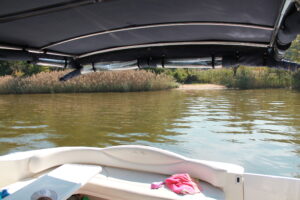
1. Explore a new cove or anchorage
Almost every weekend we take our boat to the same cove to anchor out for the day (unless we have a bigger trip planned). We like our “spot”, but sometimes it can be fun to try a new anchorage location. Even if its just down the river a few minutes further, or on the opposite side of the lake, it can be fun to drop the hook somewhere different with new scenery and water to explore.
2. Make a picnic on a beach
Have a good old fashioned picnic on the beach along the shoreline of a new destination (or even a familiar one if its easier). Pack all your essentials for lunch and find a spot to set up a picnic. If your boat is small enough you can pull up close to the beach, or you can drop anchor and transport everything to shore on your dinghy or raft. If its night (and allowed on the beach) you could even have a bonfire to toast marshmallows.
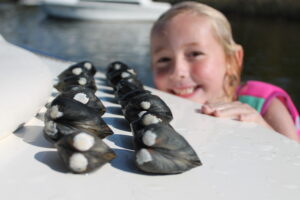
3. Go on a fishing expedition
A kid’s fishing expedition can be as simple or as complex as you would like to make it. You can spend the day visiting different fishing spots if you want to make it more of a trip, or you can simply drop anchor at a new spot to see what you can catch. If you are not into casting a line, you can go crabbing or even hunt for clams in the sand. We have a cove we frequent that is great for digging up clams. The kids love seeing how big their clam collection can get (sadly they are too full of sand and not very tasty so we normally toss them back in!)
4. Learn about a historic waterfront
Chances are you boat near some well known (or not so well known) historic waterfront locations. Most waterfronts have a rich history as a fishing town or historical landmark… or you may be lucky enough to be close enough by boat for a day trip to an attraction like an aquarium or museum. Find a location worth exploring and make it an educational outing for your kids to learn about the history.
5. Have a kids scavenger or treasure hunt by boat
The kid’s version of a poker run, make a scavenger hunt where you need to stop at multiple destinations to gather essential items and fulfill your hunt. They can even dress up like pirates to get into the spirit. You can get very creative and actually make up clues to solve that take you to a new boating destination – and then eventually to a final destination where a treasure chest of prizes awaits.
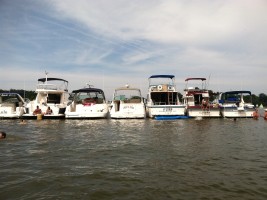
6. Plan a mega raft-up
Depending on where you raft-up for the day, this may or may not be a big boating trip. But that’s OK – its about a fun activity on the water for the day. You could use the raft-up as an opportunity to visit some old friends that you haven’t seen in while by making the boat trip to a location you don’t normally frequent.
7. Join a boat parade
Many waterfront towns or marinas hold annual boat parades where you decorate your boat and follow a line of boats for a parade on the water. Our river holds an annual 4th of July boat parade where boats get decorated and parade past crowds gathered at marinas. Its a fun way to spend the afternoon as the kids wait for the evening fireworks – and definitely a short boat trip activity.
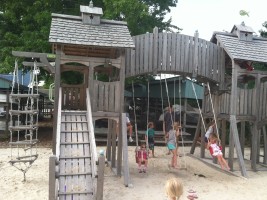
8. Visit a kid friendly marina
Visiting other marinas by boat is a good activity when the weather is not quite warm enough for swimming. Pick a marina with a restaurant and facility that offers something for kids – like a nice playground. You can usually dock for free at marinas with restaurants for at least a few hours. So after lunch the kids can run around and check out a new spot.
9. Go on a boat tour
Don’t have your own boat, or looking for something else boating related to do? Take a boat tour or charter when visiting a new town (or play tourist in your own). And it doesn’t have to be a stuffy dinner boat cruise that would bore kids. If you are a power boater you can take them on a sailboat charter. Many local towns also have unique attractions that involve boats that kids will enjoy.
10. Plan a boat trip – destination unknown
Sometimes the best boat trips are the completely unexpected – where you don’t quite know where you are going, but you’ll know it when you get there. It can be fun cruising to new nearby rivers or coves and then dropping the hook. Or deciding to spend the night at a new marina so you can check out the town. Be sure to pack plenty of provisions so you can fully enjoy your spontaneous boat trip… especially if your day trip turns into a overnight one!
More on Nature Play That Rocks Family Time at the Lake
More Kid’s Boating Activities

Hooked On Fun: The Ultimate Packing Guide For Your Family Fishing Trip
A family fishing trip offers a chance to create lasting memories, bond with loved ones over a shared activity, and enjoy the beauty of nature. Whether you’re seasoned anglers or just starting your fishing adventure, proper preparation is key to ensuring a successful and enjoyable outing. Here’s the ultimate packing guide to help you pack...
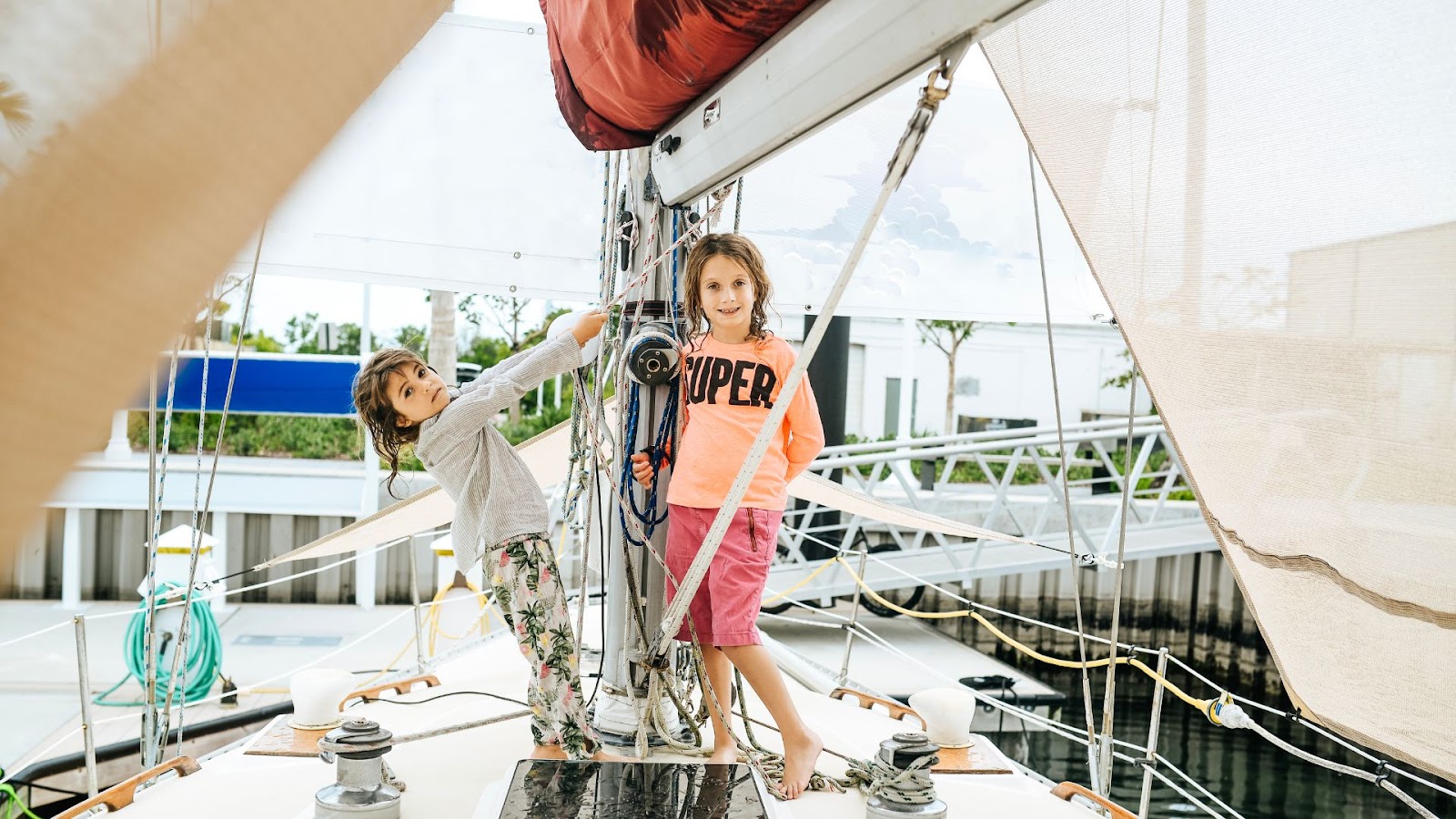
Boat Exercising for Children Sailing
Sailing can be a fun activity for the whole family. After all, you get to explore the ocean, wander around to places where you typically can’t get to, and just enjoy the sunshine and water. With that said, while sailing around might be a lot of fun for the parents, for the kids, staying in...
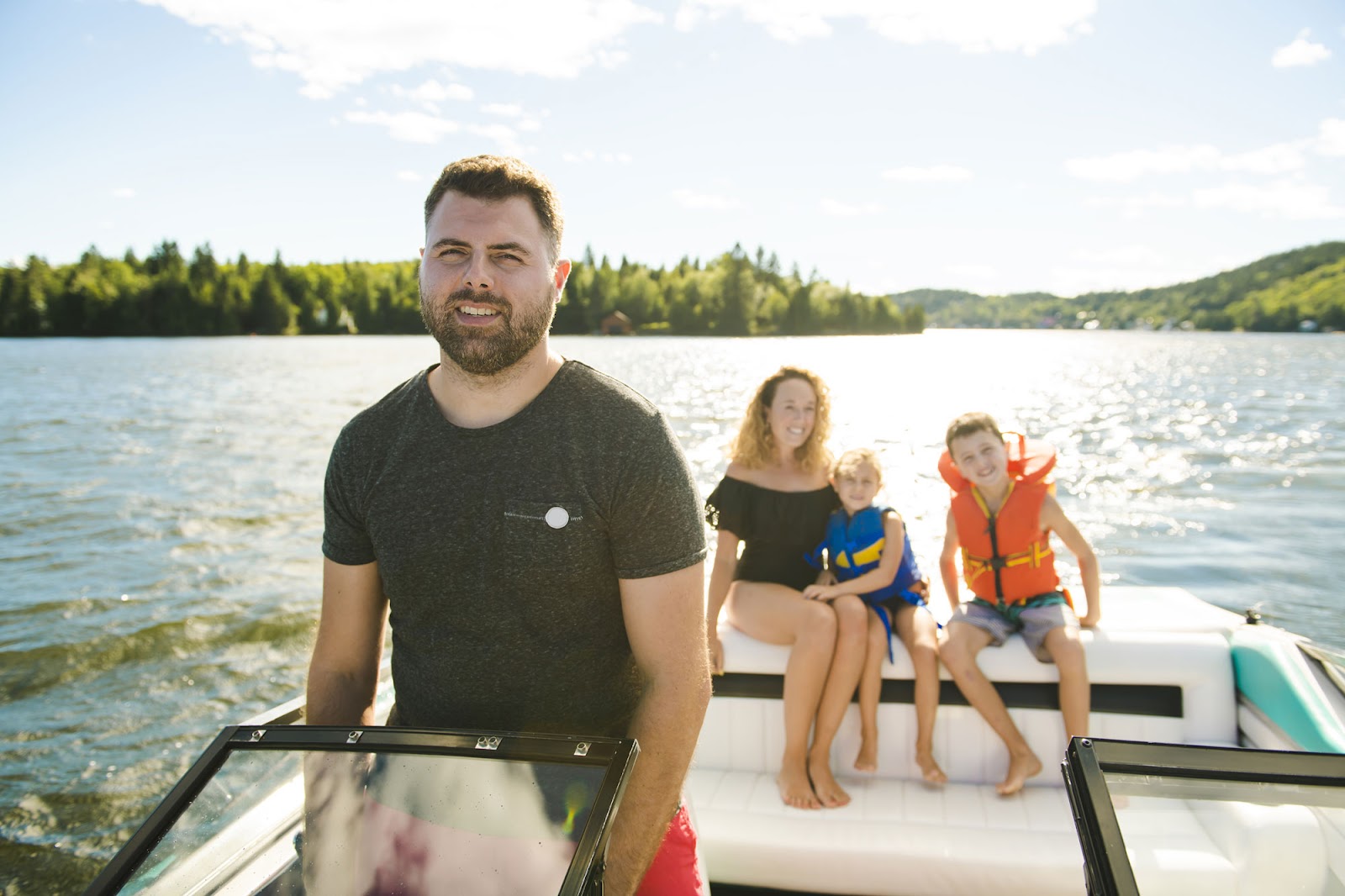
8 Quality Boating Activities For Kids And Teenagers
Family Boating, Kid's Boating Activities, Older Kid Boaters
Planning a boat getaway this summer? Try these fun boating activities that both kids and teenagers in your family can enjoy on the boat. Summer is already around the corner. What are your ideas for the perfect summer getaway with the family? Be it night camps, family picnics, boating activities, or simple mealtimes, you’ll never...
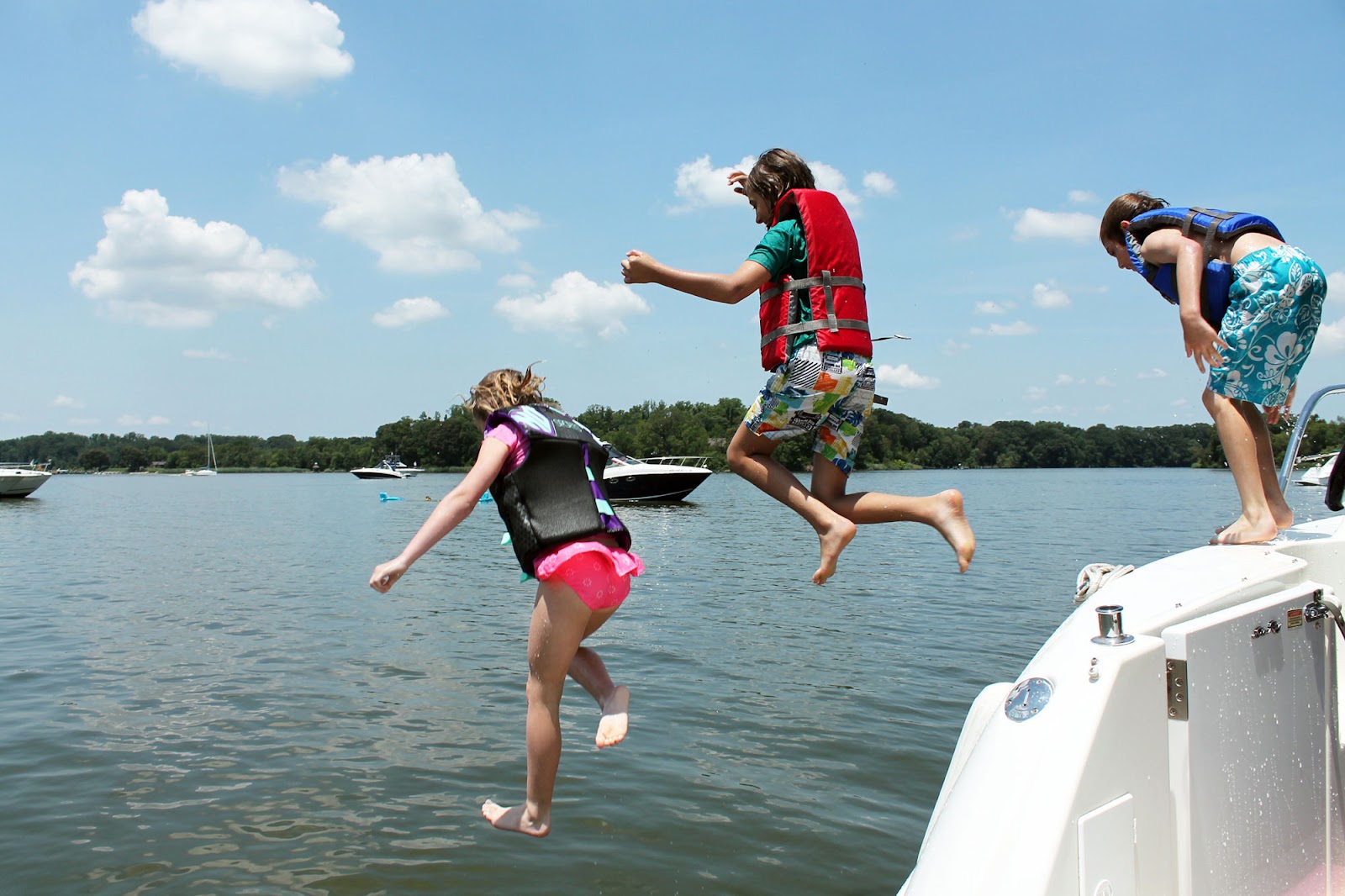
Play Dates for Kids’ Friends at the Boat
Kid boaters, Kid's Boating Activities, Older Kid Boaters
Are you prepared to invite your kids' friends to the boat? Tips for a safe and fun boat play date for kids. [As seen in Lakeland Boating] Our boat time is all about family time, but we also really enjoy inviting friends to the boat. Sharing a piece of our boat life with our “land...
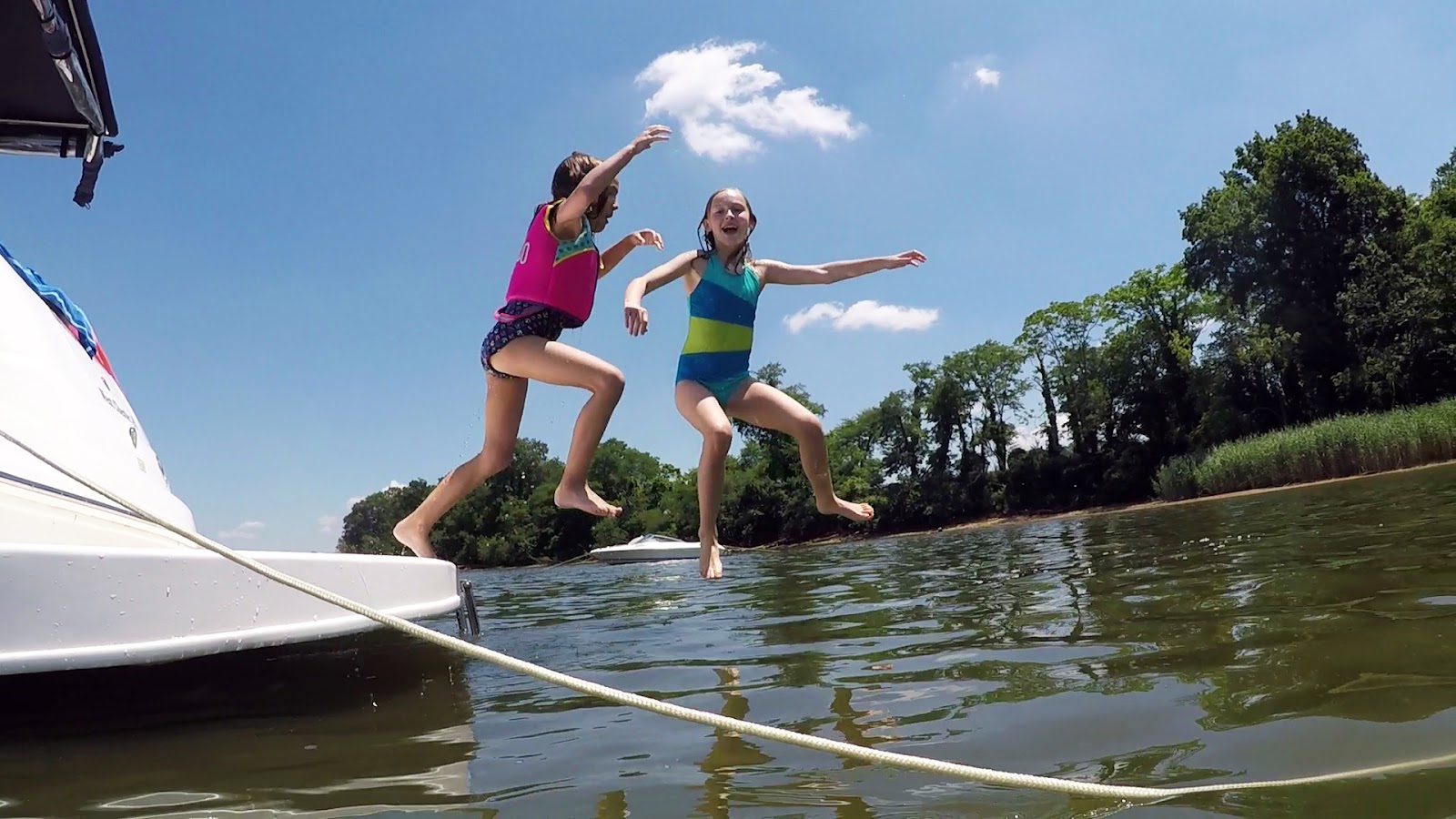
Summer on the Hook: Anchored Out Family Fun for Kids
Family Boating, Kid's Boating Activities, Kids Boat Life
Spending a fun day anchored out in your favorite spot is sometimes all kids need for some family boat day fun [as seen in Lakeland Boating with VIDEO] While boats are of course built for cruising, we don’t always want to be on the go. Although we like to plan weekend cruises as a family,...
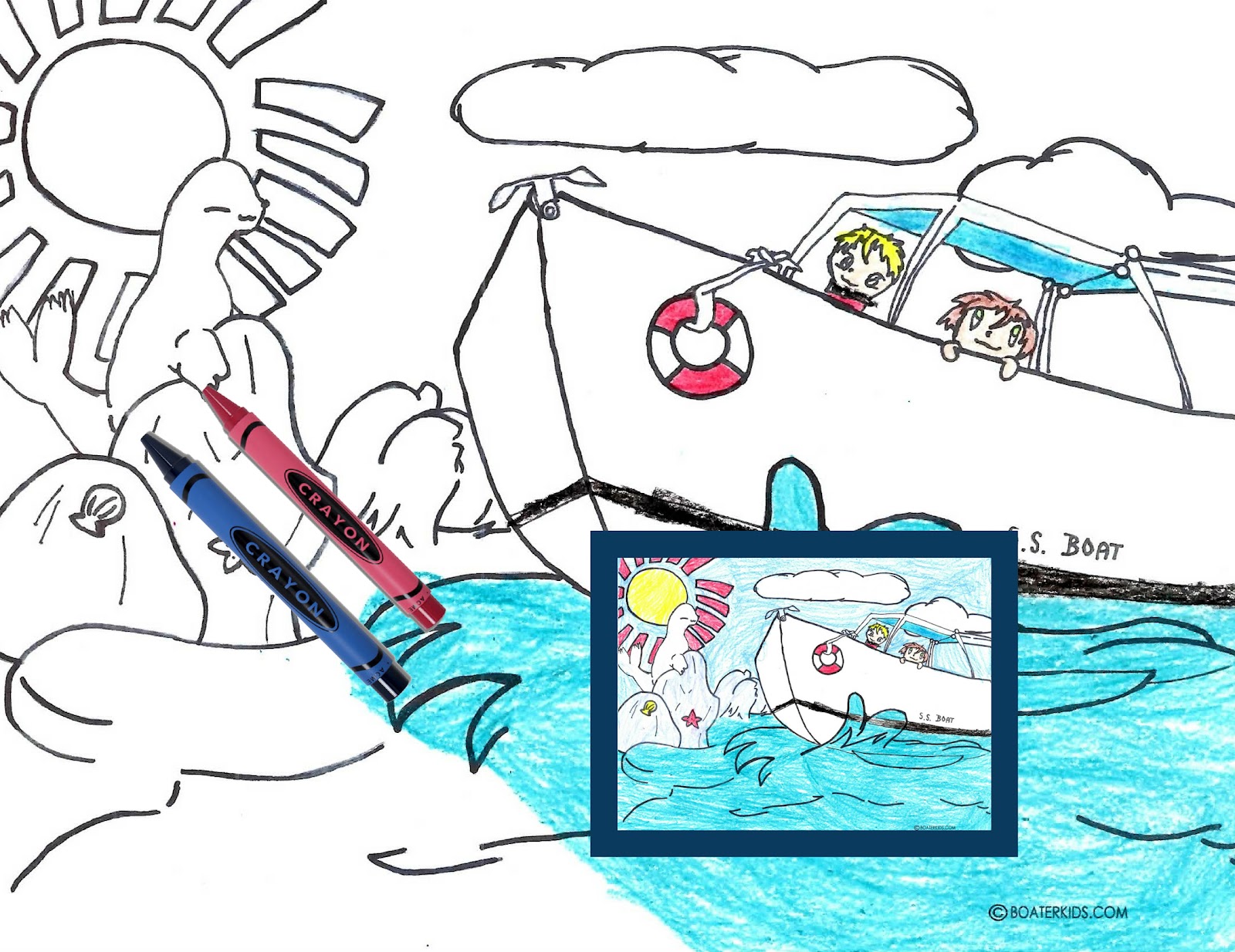
Boating Printable Coloring Page for Kids: Splashing Water
Download a free printable coloring page with a splashing water boat scene for kids who love boating… and coloring! I love boating, and I know that lots of other kids do too. I love to make pictures of boating scenes that kids can print and color for fun. My first piece was Dolphin Waves. As...

Boating Printable Coloring Page for Kids: Dolphin Swim
Kid's Boating Activities, Kids Boat Life
Download a free printable coloring page with dolphin swim boat scene for kids who love boating Kids like to color in things, but unfortunately there aren’t many coloring books about boating for boater kids like me. My mother and I had an idea to create downloadable drawings for kids to color in. I like to...
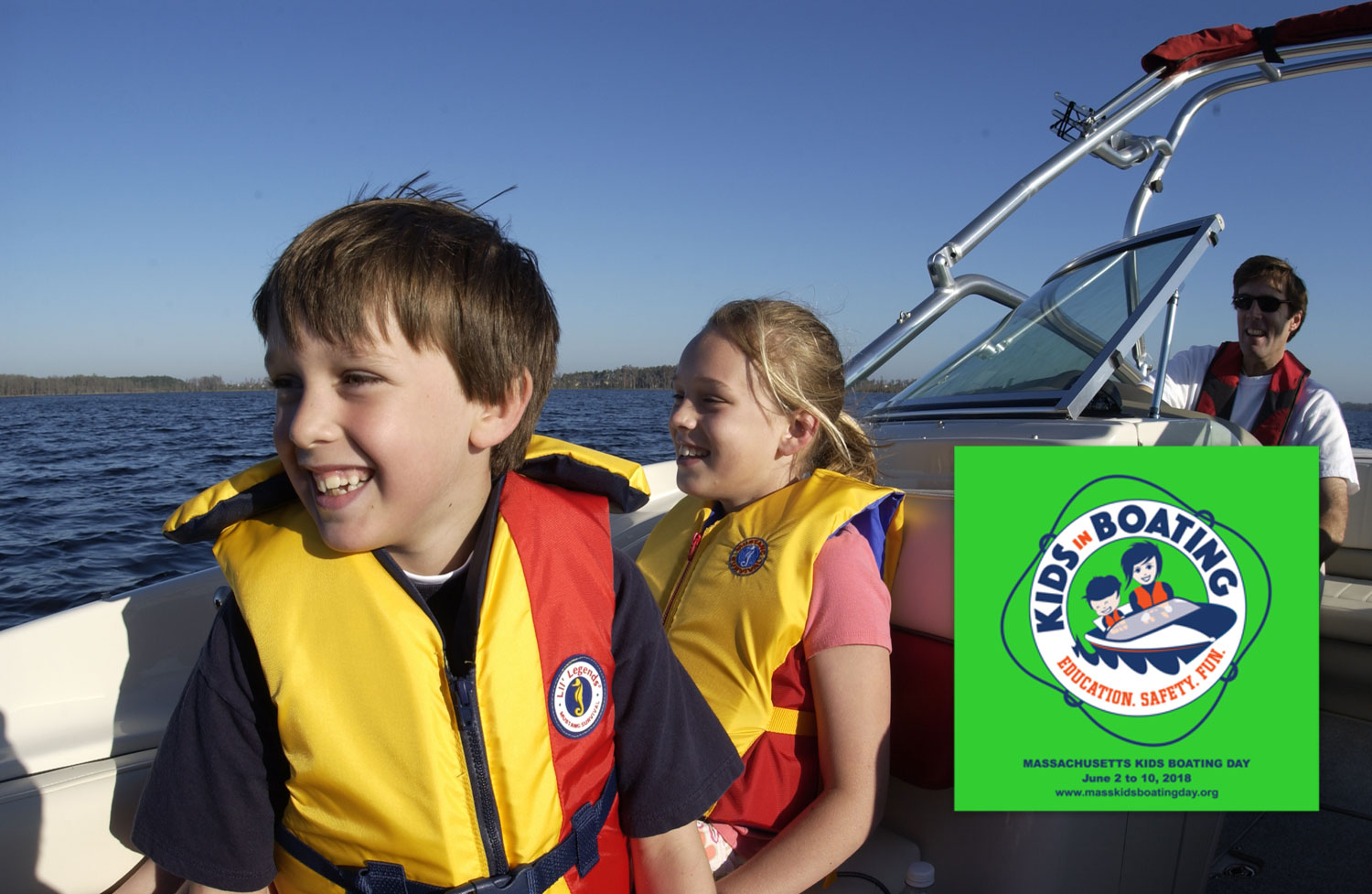
Massachusetts Kids Boating Day
Kid's Boating Activities, News
“Massachusetts Kids Boating Day” will be celebrated for nine days June 2-10, 2018 to promote youth boating and fishing throughout Massachusetts The Massachusetts Marine Trades Association (MMTA) has announced that “Massachusetts KIDS Boating Day” will take place from June 2 to 10, 2018. This important effort encourages and promotes youth boating and fishing events. This...
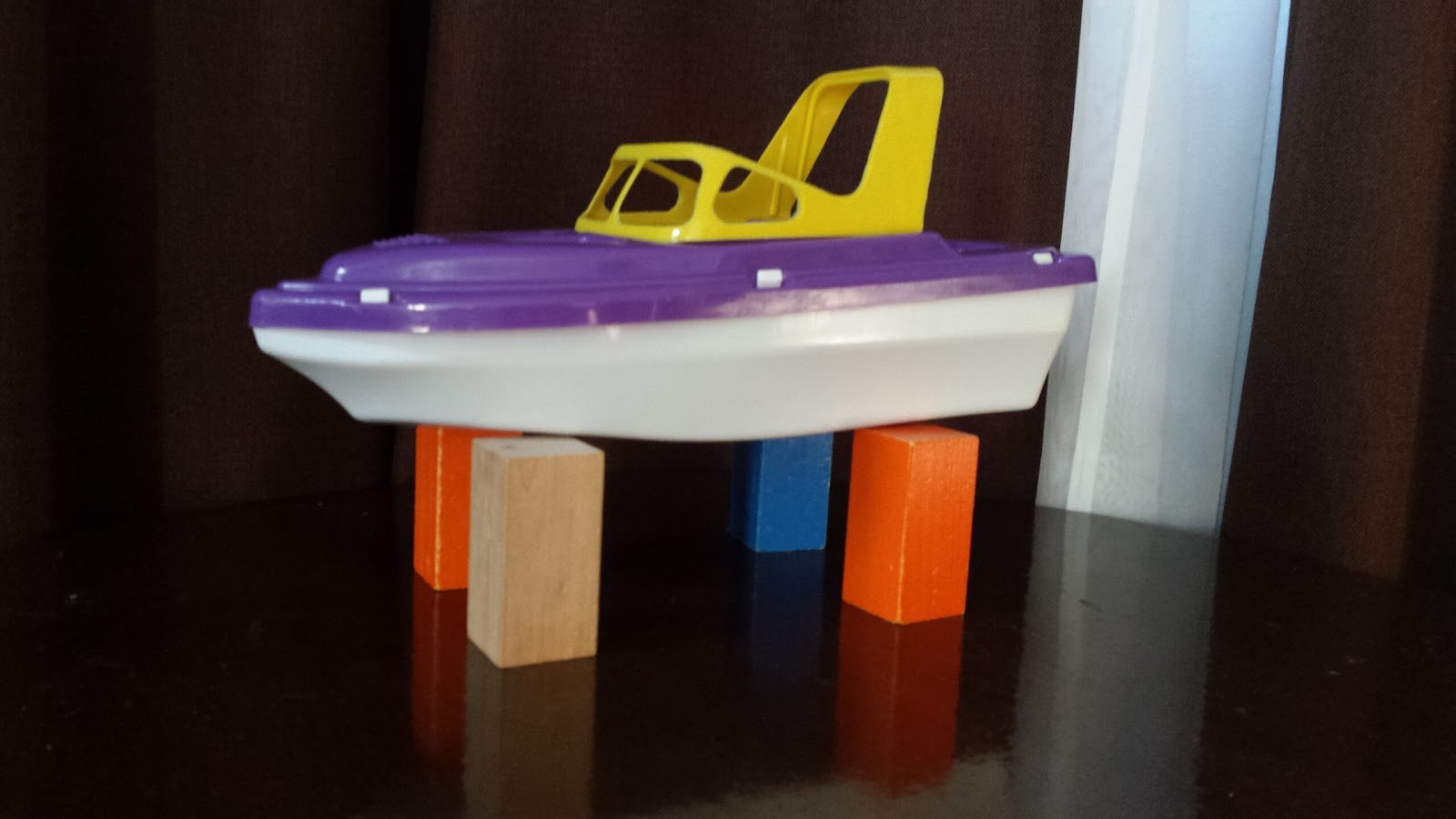
Keeping Kids Excited for Boating During Winter Off-Season
Kid's Boating Activities, Kids Boat Life
Boat up on blocks? Keep kids excited [and patient] about boating season while you wait for your boat to get back in the water For most boaters that don’t live in year-round warm climates, boating season eventually comes to an end. A bit of a hiatus. Yes, your boat is probably up on blocks, in...

Kicking off a New Boating Season for Kids
Kid boaters, Kid's Boating Activities, Kids Boat Life
Tips to get kids ready for an awesome boating season this summer Bottom painted… check. Boat washed & waxed… check. Batteries charged… check. All systems ready to go! Boating season is FINALLY here and your kids are probably just as excited as you are to get back on the water....

Safe Boating Tips as a Family with Kids
Baby Infant Boaters, Boat Safety, Kid boaters, Kid's Boating Activities, Safety Tips, Toddler Boaters
Basic tips to make boating as a family both safe and enjoyable (for you and the kids) Boating can be one of the most enjoyable ways to spend time together as a family. Family boating is a great way to slow down the pace of your daily life – getting back to nature, cruising to...
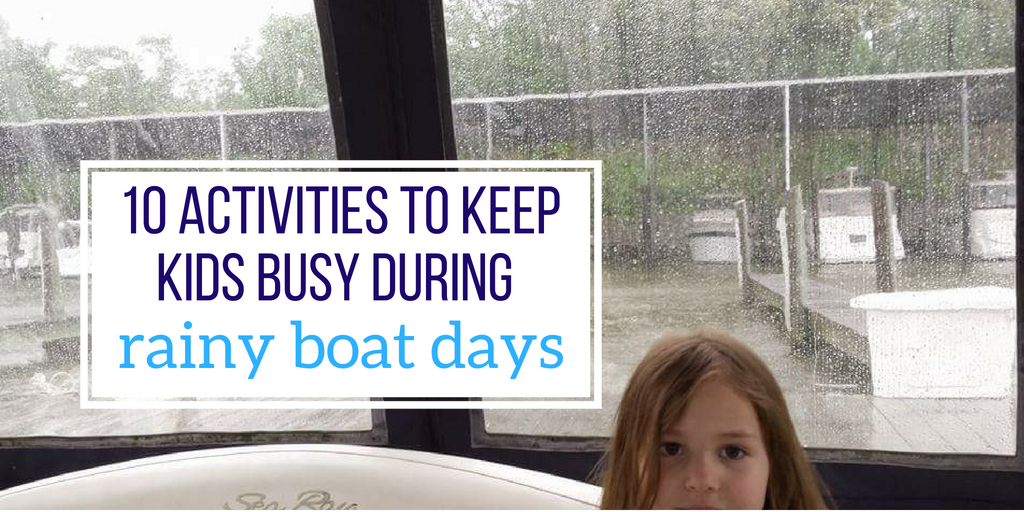
10 Activities to Keep Kids Busy on Rainy Boat Days
Kid boaters, Kid's Boating Activities, Kids Boat Life, Older Kid Boaters, Toddler Boaters
Boredom-buster ideas and activities to keep kids entertained on board when you have a rainy boat day Boating is nothing but fun in the sun for kids – the nonstop action of swimming, tubing, fishing and cruising keeps them constantly entertained. But the reality is that not all days are sunny. Sometimes there are rainy...
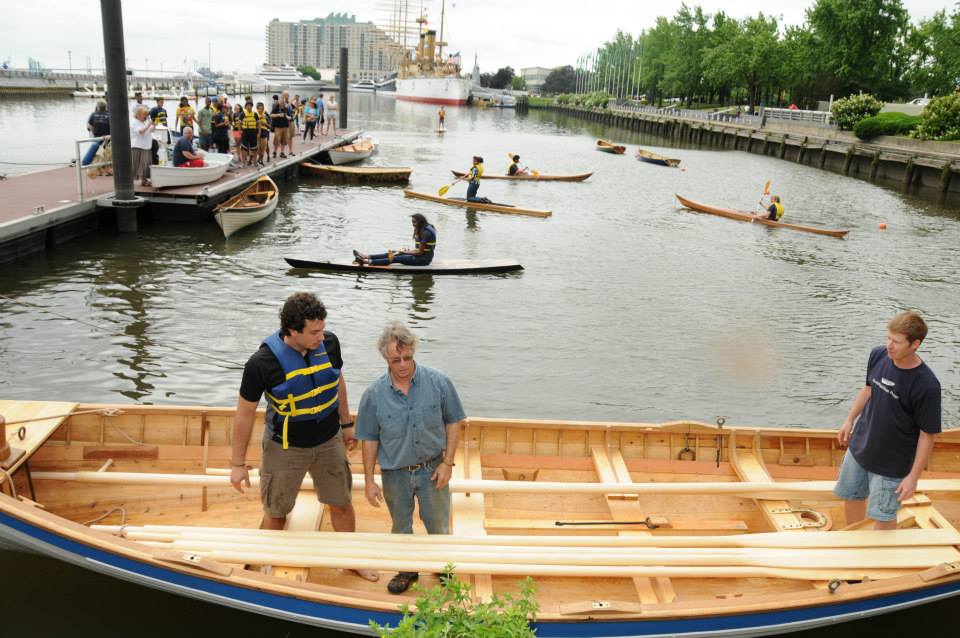
Local Boating Courses, Programs and Clubs for Kids
Kid boaters, Kids Boating Activities, Kids Boat Life, Older Kid Boaters
Find a youth boating course or program in your area to get kids involved on the water Youth boating organizations are a great way to get kids involved on the water. They can learn more about a certain aspect of boating, meet new friends, learn new skills and develop a lifelong love of boating. By...
Kids Boating Activities

Getting Kids Ready for Boating Season
Kids Boating Activities, Kids Boat Life, Safety Tips
From water safety prep to planning summer cruises, get your kids ready for a fun season on the boat For seasonal boaters, there is a lot to do to get ready each year for boating season. Our season may start in April or May, but usually around February or March we are starting to plan...
Ocean & Sea Exploration.
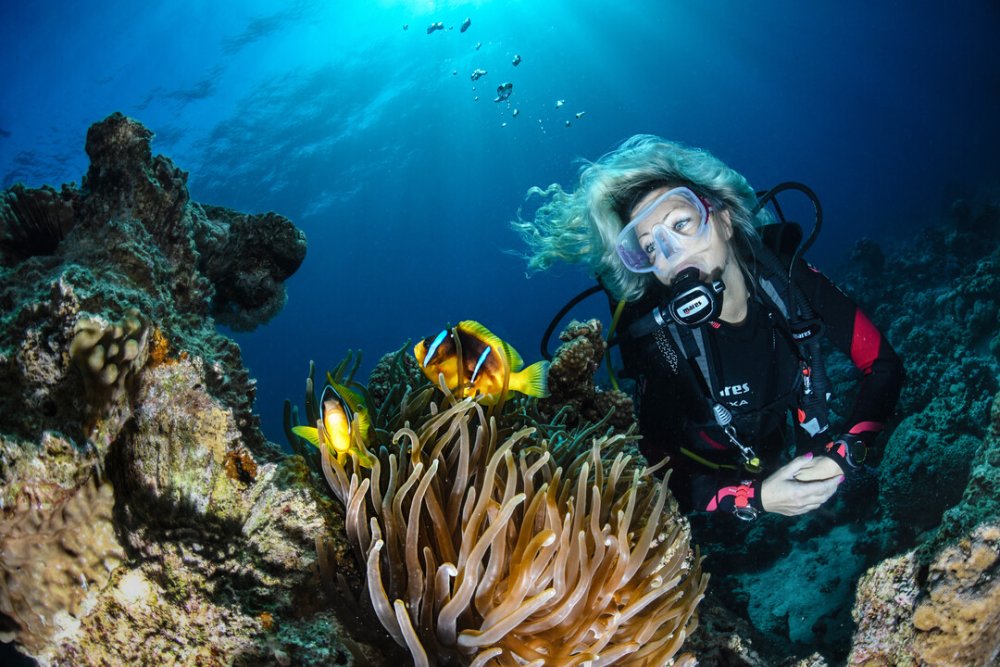
3 Ways to Explore the Underwater World
Did you know that sea sponges are older than dinosaurs? Or that thresher sharks use their long tail to stun their prey? The ocean covers more than 70% of the Earth’s surface… That is a lot of water for us to explore!
Whether it is from under the water or from the surface, there are many cool ways that you can explore the ocean and all of the interesting things that live there.
If you are an experienced scuba diver who wants to enjoy the underwater world in fun new ways, or if you are a nervous newbie who has never even dipped a toe in the ocean, we have got you covered. We have three exciting ways that you can explore the ocean, no matter who you are or what your experience level is.
Because where there is a will, there is a wave!
1.Snorkeling
Snorkeling is a simple and really fun way to explore underwater. You just float at the surface with your face submerged, and look down to watch the marine life.
You only really need two pieces of equipment to snorkel: a mask and a snorkel. A snorkeling mask is similar to swimming goggles, except it also has a part that covers your nose. Masks come in various styles, sizes, and colors, the best way to select the right mask for you is to try a few different ones on and see which feels the most comfortable. The snorkel is a plastic tube that can be attached to the mask. One end of the snorkel stays in your mouth, and the other above the water. This is how you breathe while you have your face in the water.
Other pieces of equipment could be added to improve your snorkeling experience, such as a buoyancy aid to make floating easier, fins to wear on your feet to make kicking more efficient, and perhaps a wetsuit if you are snorkeling in colder waters.
If you plan to go snorkeling in a new place, it is a good idea to join an organized snorkel tour or seek a snorkel guide. Local scuba diving centers can usually arrange this for you. Never snorkel alone, especially if you are unsure of currents, tides, or weather in that area.
Snorkeling is ideal for people who are new to exploring the ocean, and for children as it is easy to do, low-risk, and it is inexpensive.
2. Scuba Diving
Scuba diving is a little more adventurous than snorkeling, but can still be enjoyed by people who are nervous or inexperienced in the water. You just have to be able to swim a short distance, and be over ten years old to start learning to scuba dive.
Scuba diving is a way to explore the ocean from depth, and still breathe air as you go. This allows you to see a lot more than snorkeling and get a closer view.
The basic equipment required for scuba diving is a mask and snorkel, fins, a tank of air, a buoyancy control device (a jacket that can be inflated and deflated underwater to keep you at the desired depth), and a regulator (tubes that connect the air from the tank to your mouth and to the BCD). A wetsuit may also be desirable.
Scuba diving can be strange at first but soon becomes very relaxing. It is an incredible way to spend a long time under the water. Scuba diving is fun, and easy once you know how, but it requires a certain amount of safety and technique that has to be learned. As a beginner, your two main options are:
Try Scuba Diving: The SSI Try Scuba Diving program is a taster of scuba diving, without having to commit to the full first course. If you sign up for a try dive, your instructor will first introduce you to your equipment and explain a little about how scuba diving works. Then you head to the shallows to give it a go. You start with some simple skills, and then you are scuba diving! The instructor stays very close to you the entire time and you can relax and enjoy the view. The maximum depth for this program is 12m deep.
Open Water Diver: The SSI Open Water Diver course is the first real step in your scuba diving journey. After you complete the course you are certified to dive recreationally for the rest of your life. During this course you learn a variety of skills that prepare you for scuba diving, as well as vital safety practices, and lots more. It is information-packed, and super fun! The maximum depth you will be certified to is 18m deep.
After your Open Water Diver course you can go on to do many more courses if you wish. There is always more to learn!
3. Freediving
Freediving is the practice of holding your breath underwater. Most people learn how to freedive so that they can explore the ocean, but some go on to compete in freediving competitions, or use it to improve their spearfishing.
Freediving is an excellent way to see the underwater world, it allows you to dive down and stay underwater for a while. It is obviously important to learn how to do this in a safe way, and to always freedive with buddies. If you would like to start freediving, your first step would be to take a course. Similar to scuba diving courses, you will learn a lot of information about technique and what to do in a diving emergency. Here are your two main options to get started:
Try Freediving: Similarly to the Try Scuba Diving program, the SSI Try Freediving program allows you to have a taster of what freediving is all about. You will learn some basic theory about equipment, equalization, and breathing techniques, before hitting the confined water to give it a go with an instructor close by.
Freediving Level 1: The SSI Freediving Level 1 course is the first proper certification on your journey as a freediver, you will learn in depth knowledge about freediving, as well as vital safety procedures.
There are further courses that you can go on to take, and steps you can follow once you are certified as a Level 1 freediver.
Another form of freediving is mermaiding. If you would like to become a real-life mermaid, we have a course for that too (a few courses actually). The SSI Mermaid courses teach you skills to use a mermaid tail efficiently and elegantly underwater, while staying safe.
Those are the three main ways to explore the underwater world. Which one will you choose?
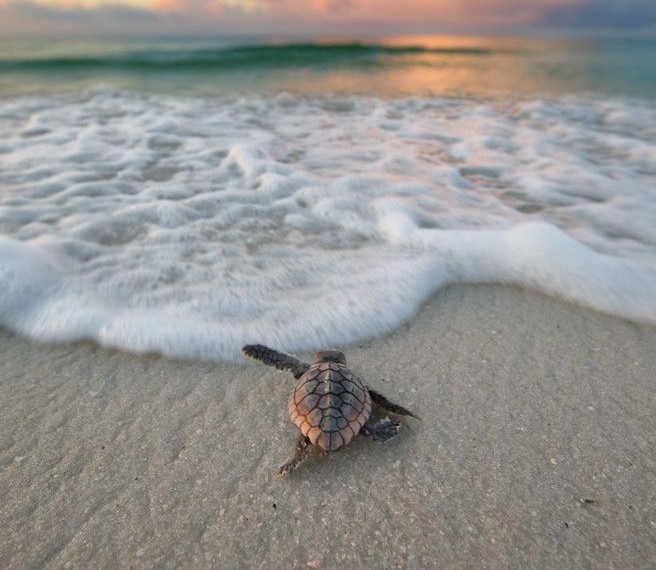
Read further for deep dive into the ocean’s influence on our mental, physical, and spiritual wellbeing.
"I find comfort in the rhythm of the sea.”
Have you ever stared out at the ocean, totally in awe of its size and beauty, and felt a deep connection with it? This is not uncommon for most of us, as our emotional relationship with water and the ocean is largely unconscious and likely dates back to the origin of our species. In fact, many scientists believe the human species originated in the ocean and that humans were once semi-aquatic.
As humans in the 21st century, we still maintain this unconscious, biological connection with water because of how our bodies developed. We all began our lives immersed in the fluid-filled environment of the womb. When we were first born, our bodies contained around 70% water with concentrations within the brain reaching 80% water. As we age, this percentage drops, however, the density of the human body and water always remains very similar, which explains why we are often able to experience floating. Additionally, the mineral composition of the water found within our bodies is also very comparable to the water found within our oceans.
Exposure to Vitamin D while at the beach is a major benefit, including bone health, teeth, and muscles as well as improving the immune system, digestive health, and mental well-being. Negative ions, generated in nature when air molecules are broken apart by sunlight or the movement of air and water (1), are found at beaches and waterfalls. There’s a lot of talk that they can improve mood, relieve stress, and aid sleep.
Being at the beach is also an extra special sensory experience. The sound of the waves, the smell of the seaweed, the touch of the sand between your toes, the taste of the salt in the water and in the air, the weightlessness that floating in the water brings…it’s immersive. There is nothing quite like it in the world.

We are often inspired by the spiritual, mental, and physical connection we have with water and the ocean, and we can use their healing powers to our advantage to help restore our bodies and minds. In this article, we discuss the some of the many physical and mental health benefits of the ocean.
Coral Reef Ecology & Biodiversity
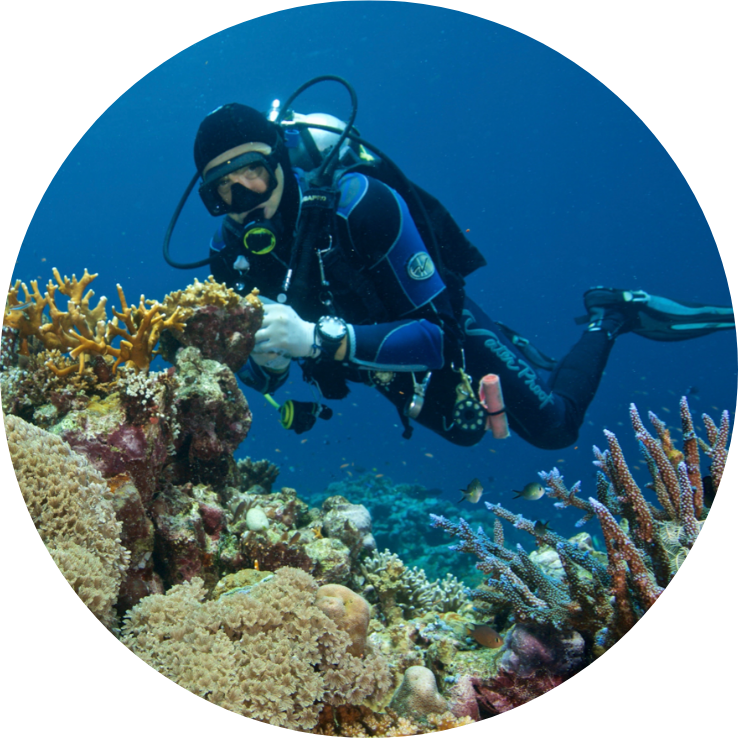
Although they cover less than 0.1% of the earth’s surface, coral reefs are the most biodiverse marine ecosystem in the world.
Coral reefs are home to:
4,000 species of reef fish
840 species of corals
Over 1 million species of other animals
Why are coral reefs so important?
275 million people live within 19 miles (30km) of coral reefs.
Over 100 countries benefit from the recreational value of coral reefs.
350 million people travel to coral reefs each year.

Coral reefs are at the center of many coastal and island cultures around the world. For example, in the Kumulipo, the Hawaiian creation chant, the coral polyp was the first organism created, and from that all other life forms sprung forth.
Though coral reefs face numerous threats, we can save them by keeping them healthy.
Primary Sidebar
So what exactly is coral and the reef system? According to Maui Nui Marine Resource Council,
“Coral reefs are made up of millions of living, breathing animals known as coral polyps. Related to jellyfish and anemones, coral polyps have a single opening surrounded by tentacles that are use to capture food. There are two types of corals: hard corals and soft corals. Hard corals – known as reef building corals – excrete a hard, protective “cup” of calcium carbonate (limestone). This rigid skeleton forms the framework for coral reefs. Soft corals (for example seafans) do not build calcium carbonate skeletons and are not considered reef builders.”
But more than this, the reef ecosystem consists of not just the coral but the sea life that co-exists with it including fish, sea turtles, invertebrates and mammals.
And why are coral reef and the reef systems so important?
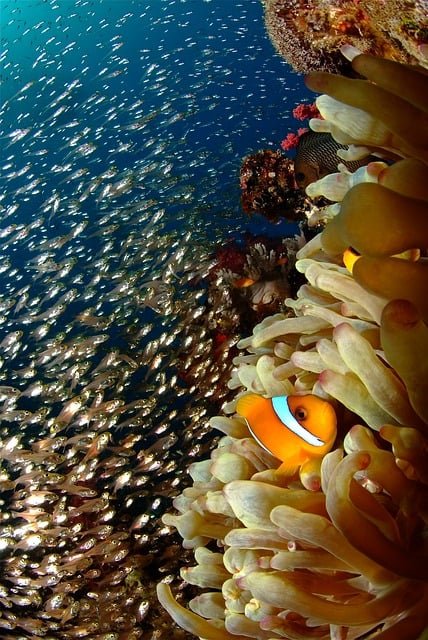
“Coral reefs are considered one of the most biologically diverse ecosystems on the planet. Dubbed the “rainforests” of the sea, reefs play a critical role in maintaining natural diversity and providing a home to thousands of species.
Corals also support healthy human communities, and are responsible for providing:
• Food
• Recreation
• Tourism (economics)
• Medicine
• Protection from large storm and wave events”
Coral reefs are considered one of the most biologically diverse ecosystems on the planet. Dubbed the “rainforests”
Embrace ‘Pono’
So let’s discuss what we can do as visitors to Maui when enjoying this amazing, fragile living organism. Here’s where the ‘pono’ comes in. In Hawai‘i, ‘pono’ is an overarching principle that essentially means to do what is right or proper.
While we know that three of the primary drivers behind Maui’s declining coral reefs are
1) Land-based pollutants,
2) Over-fishing and poor enforcement of fishing regulations and insufficient ‘resting’ (kapu) sites that protect marine life by providing time and space to recover from these stressors and
3) rising ocean temperatures, there are two lesser known extremely significant drivers, chemical sunscreens and recreational overuse. Hawaii's tourism industry brings thousands of people into contact with its reefs. Uninformed and unsupervised divers and snorkelers who touch or accidentally trample living corals can have a cumulative and significant impact over time, especially when concentrated in small areas. Further, studies show that the use of chemical based sunscreen products are actually causing ‘coral bleaching’. To give you some insight, the film, ‘Reefs at Risk’, released earlier this year, raises awareness of the harm that certain chemicals, like Oxybenzone, do to Hawaii’s reefs.
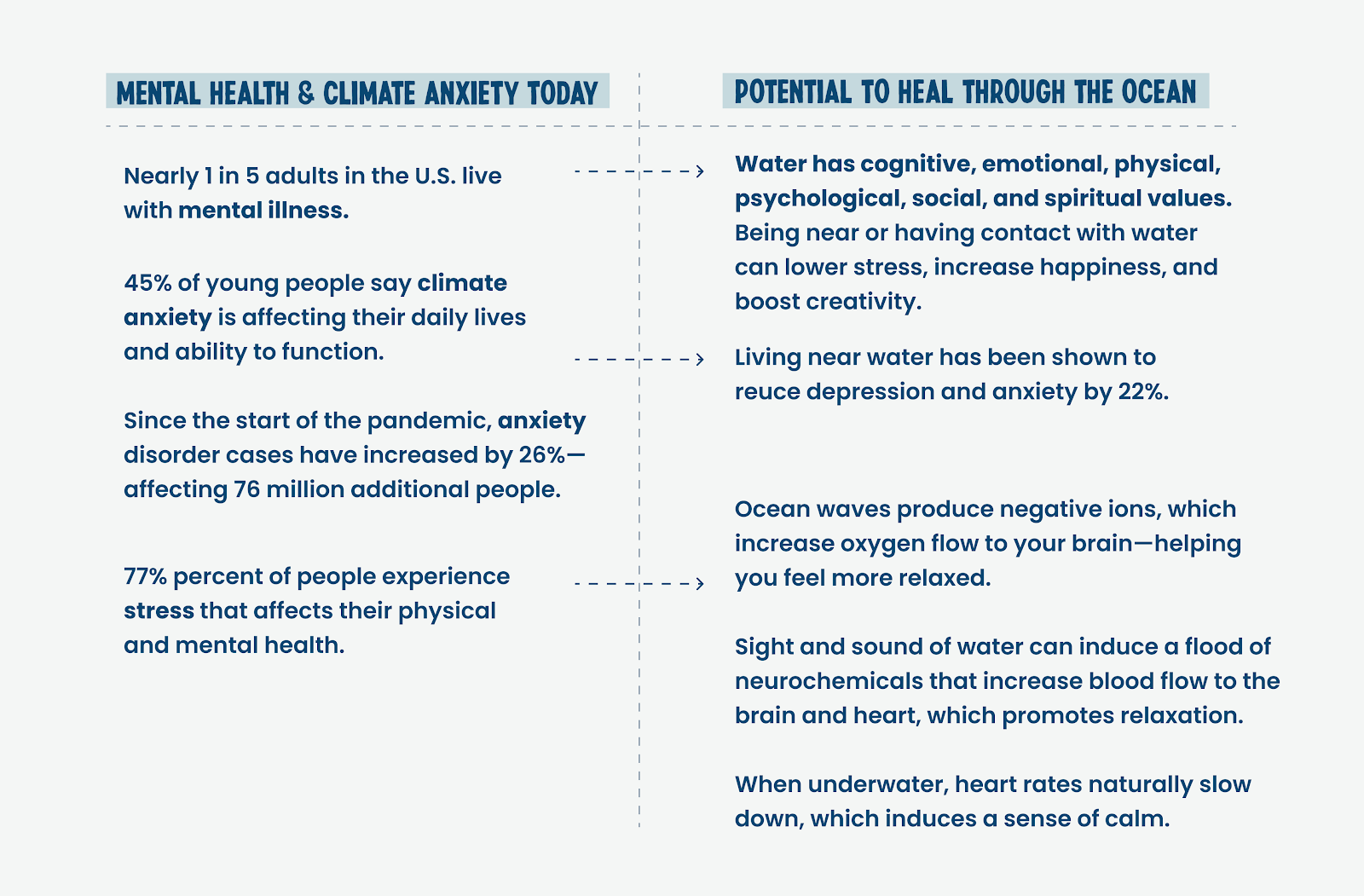
Outrageous Ocean Sports to
Superscript
Who Loves to Make a Splash?
“We are like islands in the sea, separate on the surface but connected on the deep.” “Dance with the waves, move with the sea, let the rhythm of the water set your soul free.” “The sea, once it casts its spell, holds one in its net of wonder forever.”
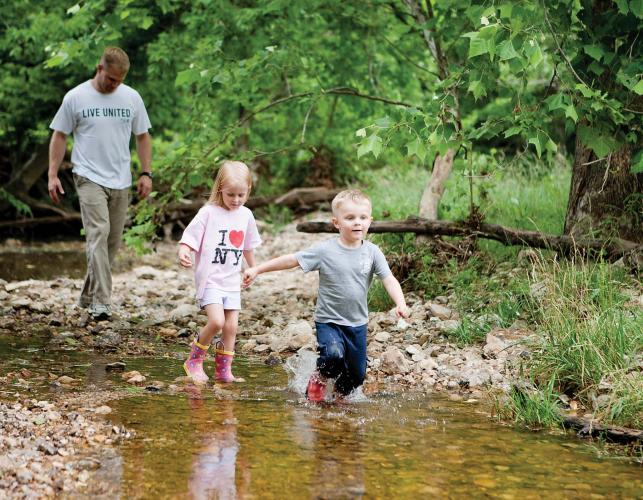
There’s so much fun to be had with water sports. Whether you enjoy relaxing experiences, staying fit, or you’re looking for a thrill, there’s something for everyone on this list for older kids.
Next time, say ‘yes’ instead of ‘no’. These water sports will challenge you, excite you, and give you a unique experience. And who knows, you may end up loving the water sport! You may discover a new hobby, or make some brand new friends.
15 Ways to Get Active on the Water
It may be back to school season, but there’s still LOTS of summer left! Temperatures have been soaring around most of the U.S. over the last couple of weeks. It’s only natural that many of us have been gravitating toward the water to catch a break from the heat! Not only will these water activities for kids keep them cool, but they’ll help with swimming skills, improve balance and coordination and wear them out! This post is sure to inspire you to get outside and into the water as soon as possible!
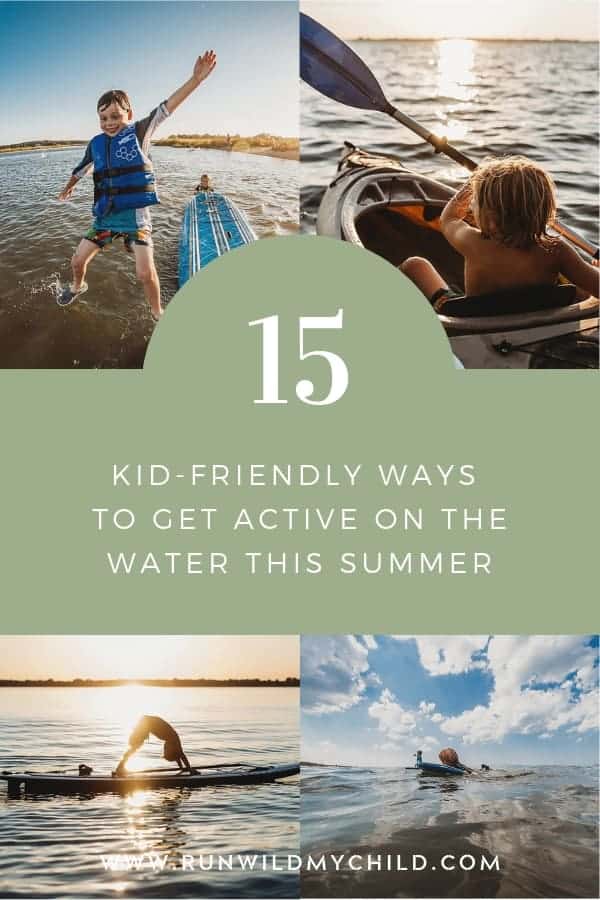
Get active on the water
Summertime is the BEST time to get active with your family and it’s extra fun when the activities involve water. With two very busy kids in our house, we’re out adventuring on the water almost every single day. We’re lucky to live in Virginia Beach where the weather is warm most of the year and the beach is nearby, but we’ve done lots of these water activities for kids on lakes and rivers all over the East Coast!
Benefits of spending time on the water
As my children continue to grow, our list of family activities to do on the water grows right along with them. Each summer we’re able to add a few more fun water activities to do together that we weren’t quite able to do the previous year. We love being able to create so many incredible memories with our children while also getting plenty of exercise! The more time we spend outside together, the happier we all are. And it doesn’t hurt that the kids are nice and tired when bedtime rolls around!
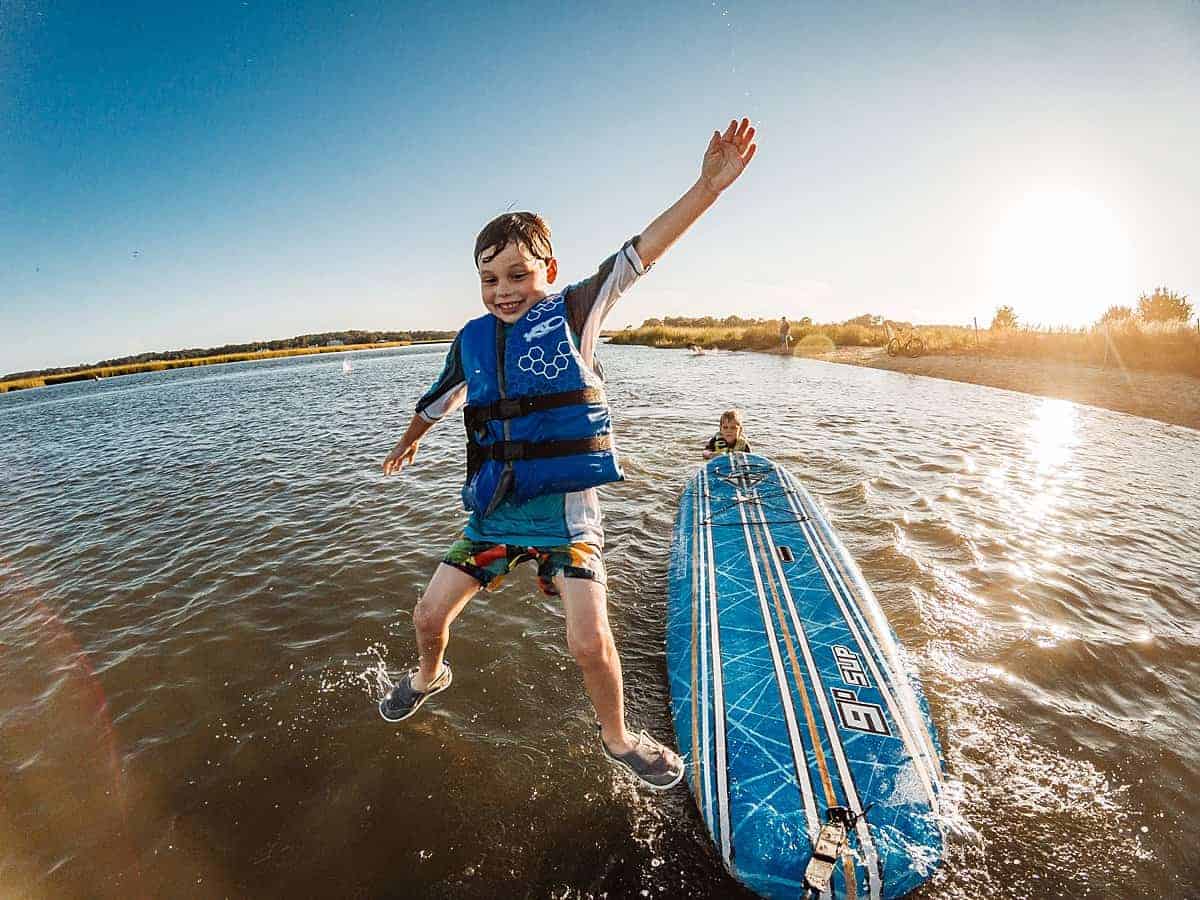
15 kid-friendly ways to get active on the water
Getting outside and active on the water doesn’t have to be hard. And it doesn’t have to be the same old thing again and again. There are so many ways to enjoy the outdoors and keep cool. Here are 15 different water activities for kids that will get your kids outside and active on the water this summer!
1. Stand up paddleboarding
Stand up paddleboarding has become one of our absolute favorite summertime water activities for kids. We started when our kids were young (ages of 4 and 6), so our kids are now great at paddleboarding alone or just sitting along for the ride. Stand up paddleboarding is a great full-body workout. While you’re balancing, your body is using your core, shoulders, arms, legs, and back. If you’ve done it before, you know that it’s even great for foot strength! You’d be surprised at how tired your feet will get from gripping the board to balance.
Our kids also love to play a game they call “Paddle Battle.” They stand on opposites sides of the board, facing each other, and rock the board from side to side to try to get the other person to fall off the board first! They can play this game for hours and never get sick of it! They enjoy climbing up onto the boards and jumping off of them as well. If you’re not comfortable heading out for a long paddle, your kids will have a blast simply playing around on the boards. They’ll come up with all sorts of fun games!
PRO TIP: Introducing your baby to SUP

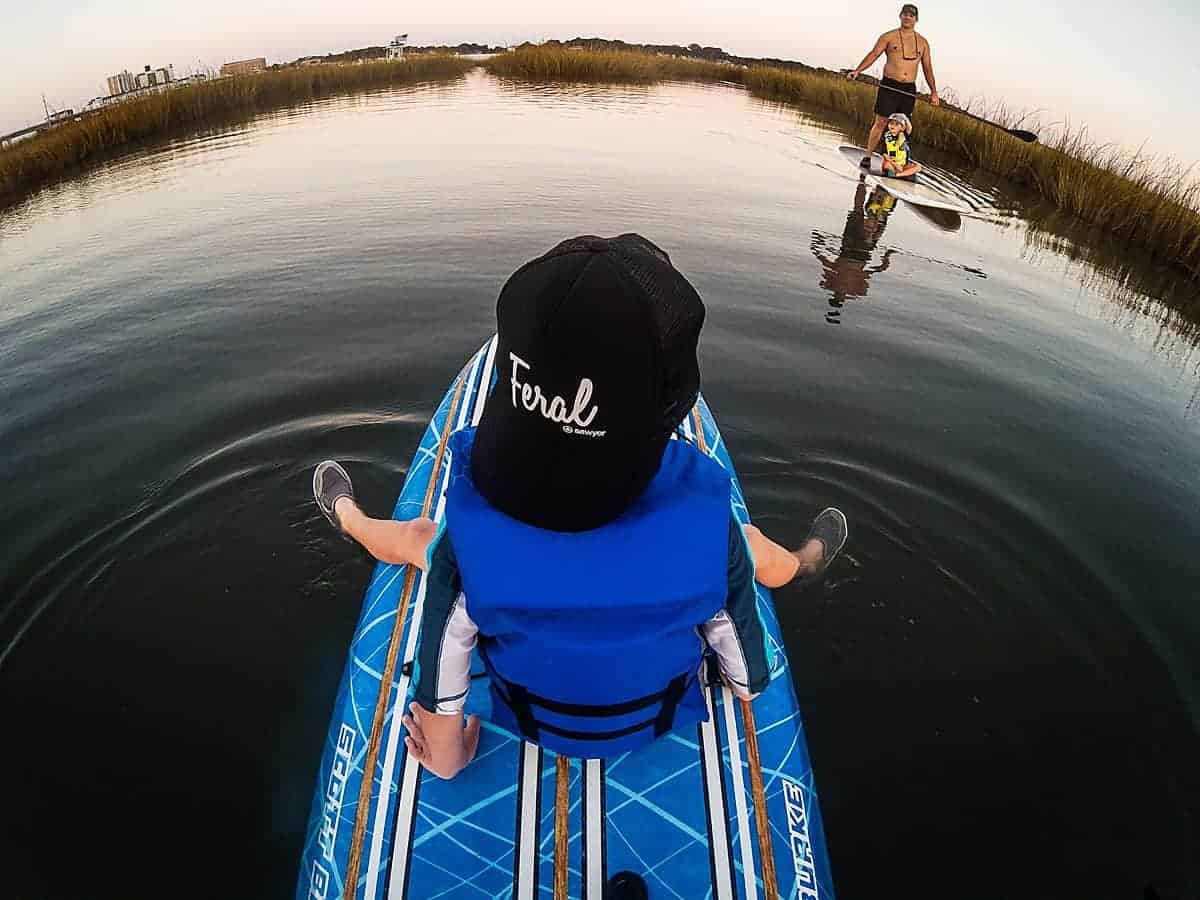
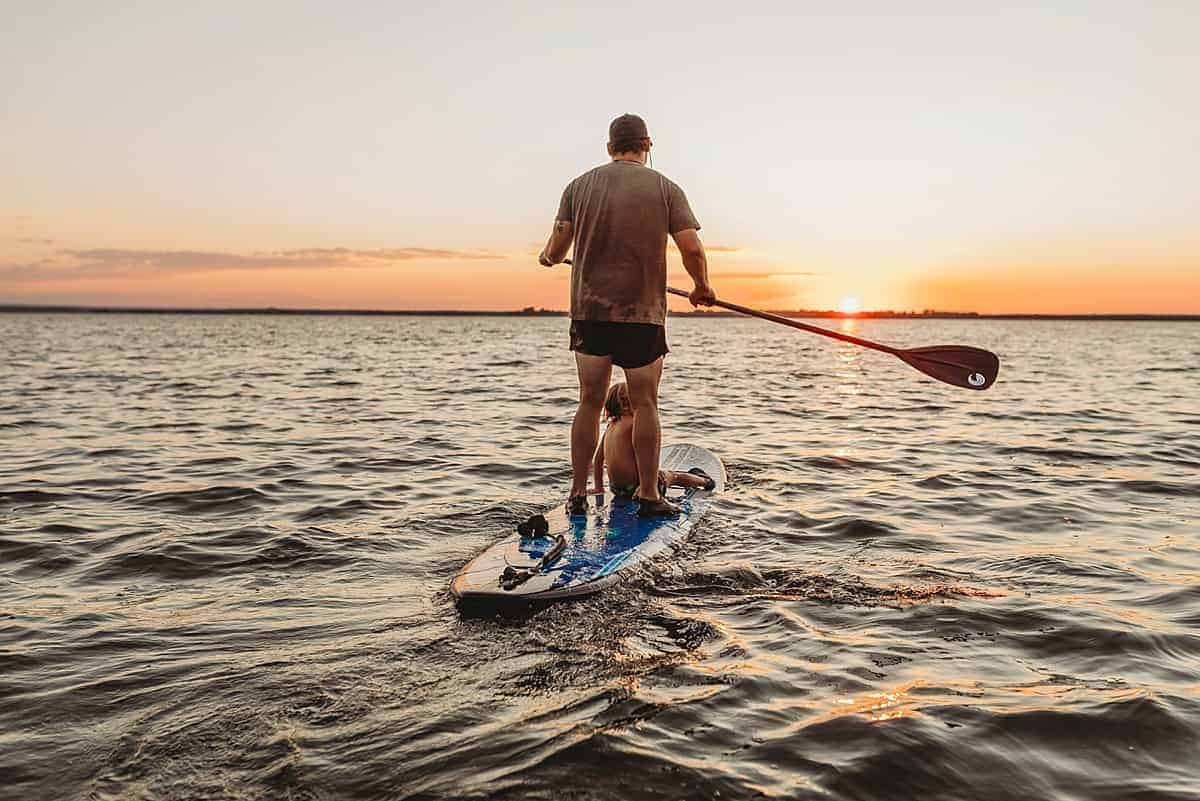
2. Kayaking
Another favorite water activity of ours is kayaking. Depending on the age/size of your kids, they can join you on a ride or paddle along in their own kayaks! Our kids have learned to kayak on adult-sized kayaks. However, there are wonderful kid-sized kayaks that you can use as well. You’ll be surprised how quickly children will learn how to use their paddles to navigate a kayak. And if they’re able to go a distance on their own (even in very shallow water where you’ll easily be able to walk to them if they need help), the pride on their faces from that sense of independence is absolutely priceless. It’s like learning to ride a bike for the first time!
How I Got My Kids Out Flatwater Kayaking As Babies
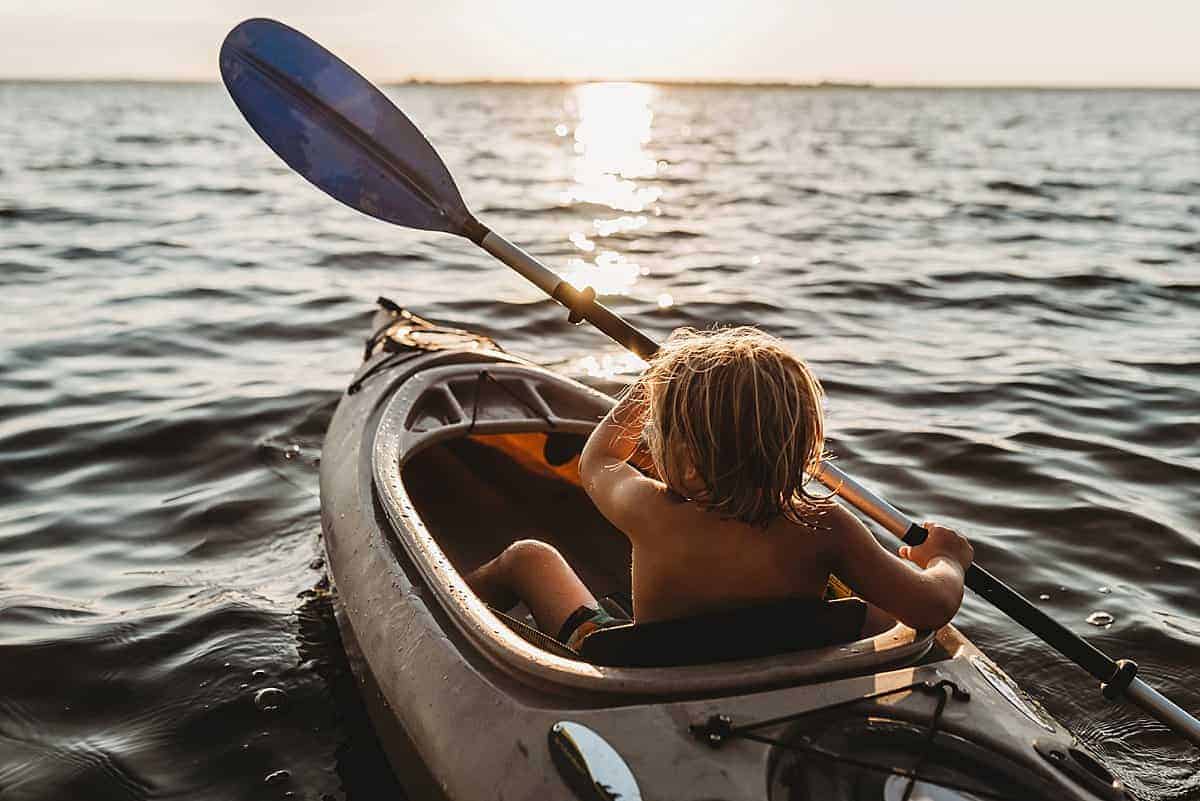
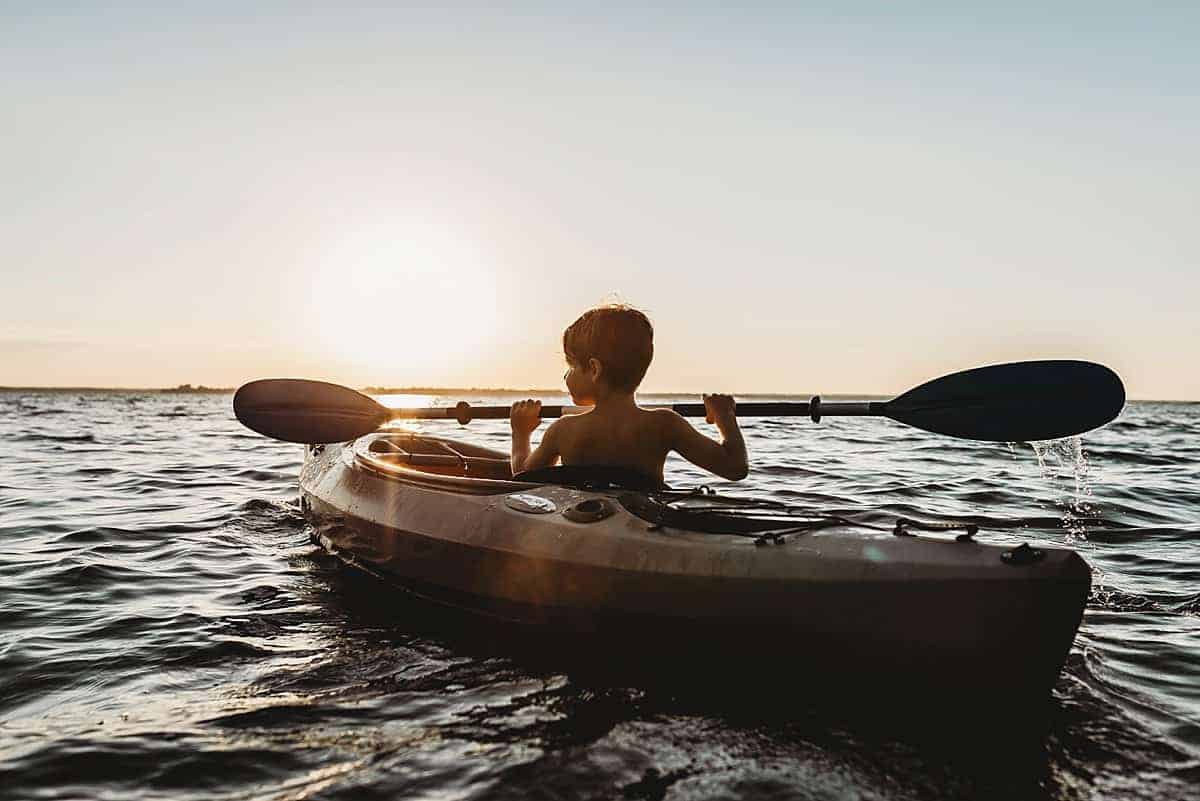
3. Hiking or trail walking
Sometimes our favorite water activities for kids involve more than just water. Whether you’re near an ocean, lake, river, creek or stream, you should be able to find lots of great walking trails close to water to enjoy! Here on the coast, we have several boardwalks, as well as walking/hiking trails along the inlets. If you’re further inland, you can usually find great hiking trails in state parks or up the mountains beside rivers and waterfalls! If you have young children, it doesn’t even have to be a very long distance. Just a quick trail with water to toss some rocks into will thrill them!
Hiking with a Baby - Baby Can Travel
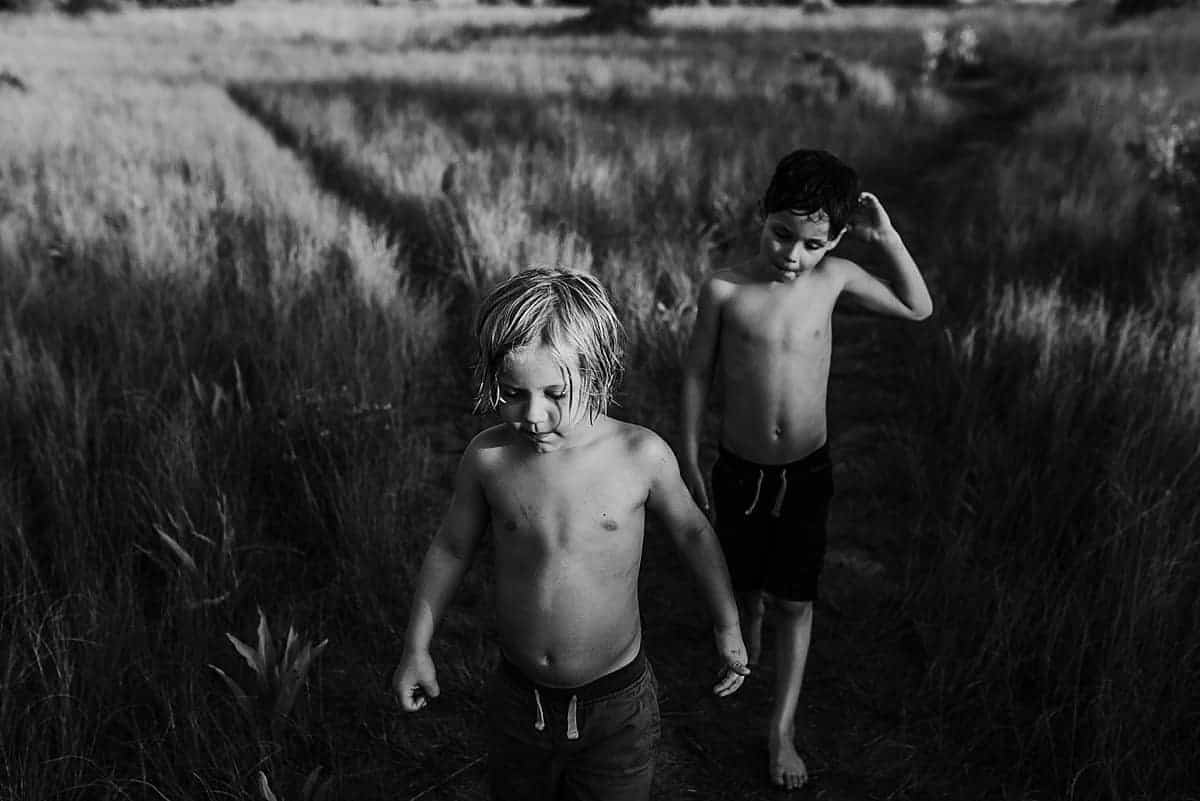
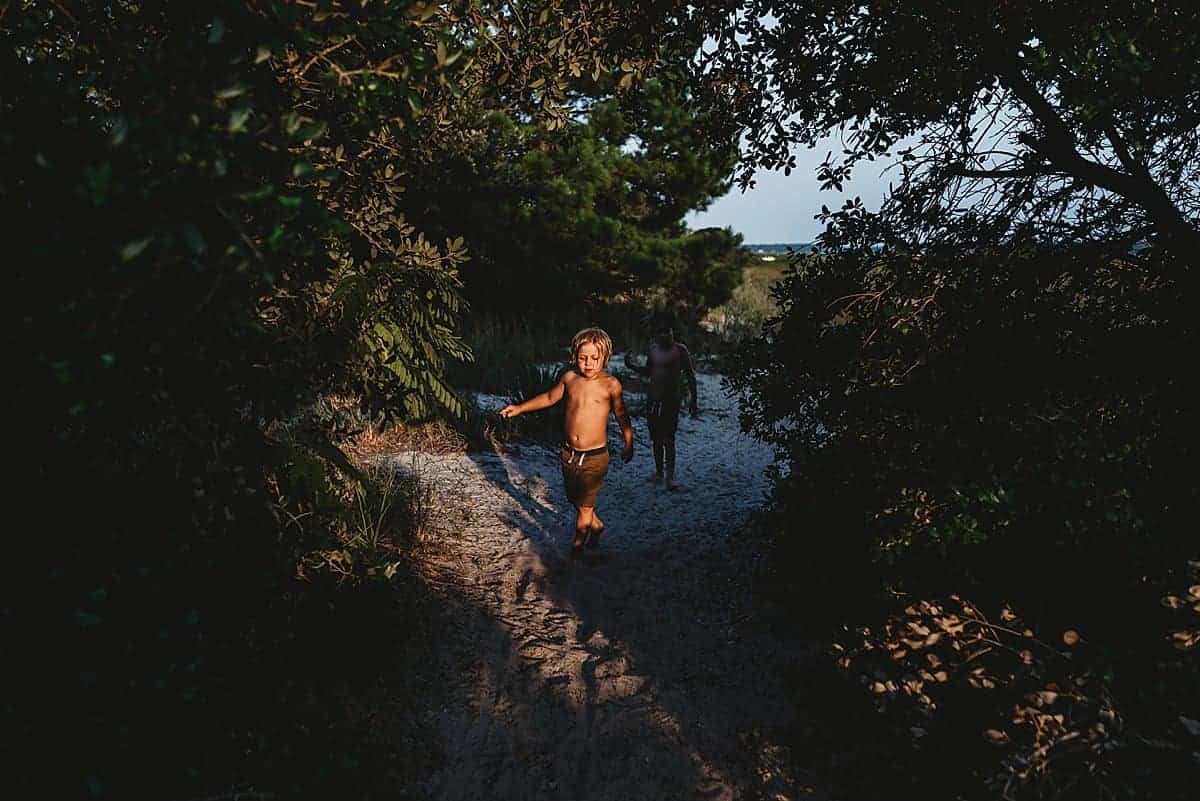
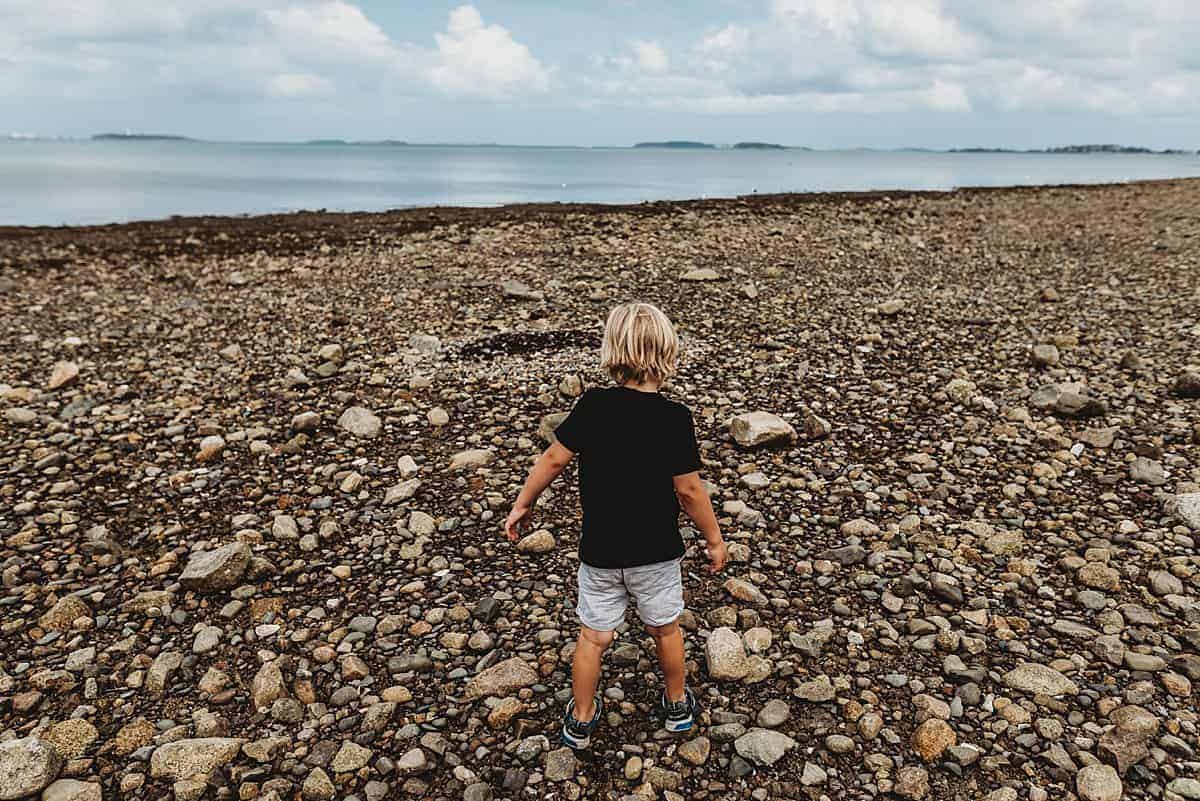
4. Nature hunts
Along those same lines, nature hunts can be an amazing way to spend a few hours by the water! We often find ourselves out on a nature hunt during that rough late afternoon/early evening timeframe when it’s too early for bed, but the kids aren’t tired yet. You know what I’m talking about. That’s a perfect time to go out for a nature hunt if you have some water nearby. We’ll walk or ride bikes to the beach or inlet, and the boys will search for bugs, crabs, turtles, birds, snails, etc. They’re never disappointed.
Kids are so curious – they can find some kind of amazing treasure wherever they go. Even a new rock and a stick is enough to excite my kids. You can either come up with a specific list of items for the kids to search for, find a list online, or forget the list and just see what you happen to come across. No matter how you decide to do it, the exercise, fresh air, splashing, and nature treasures will always be a crowd-pleaser.
Things to do with Baby Outdoors -up to 2

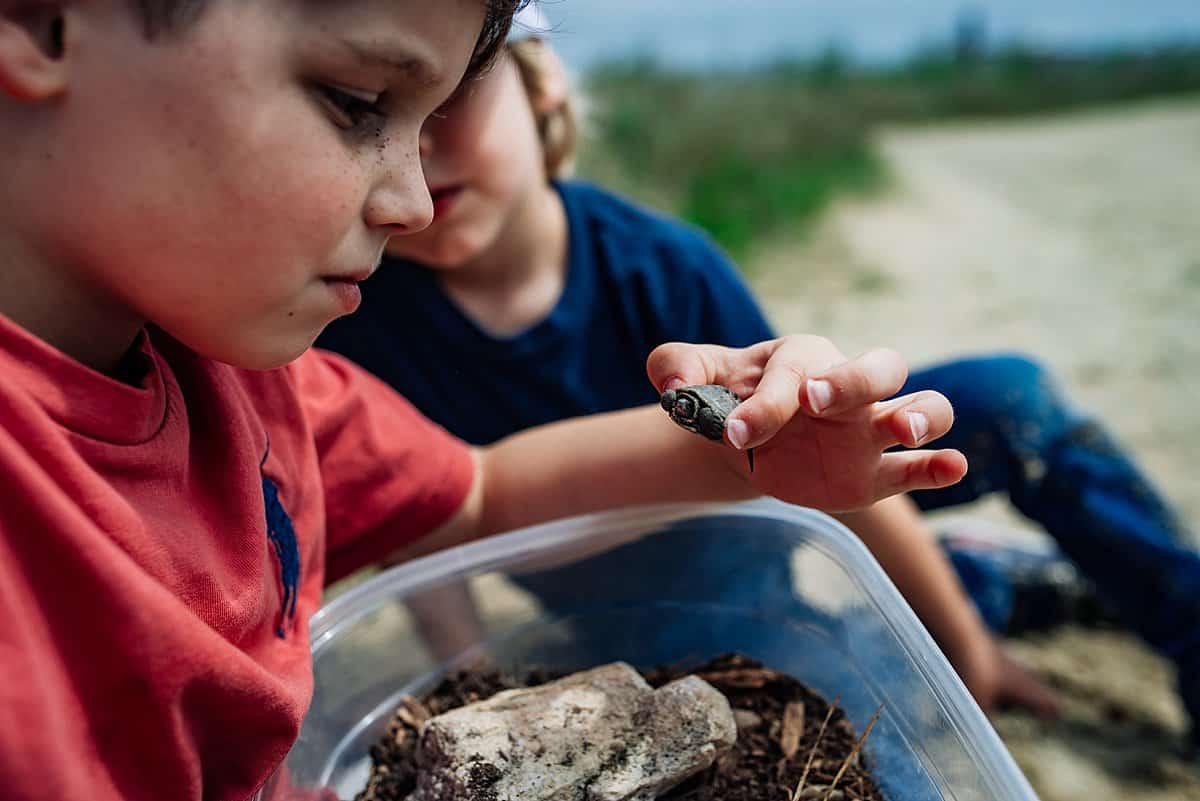
5. Pedal boating
Another great way to get active on the water is to cruise around on a pedal boat! I remember trying these out as a kid when we were on vacation at places like campgrounds with ponds or lakes. Sometimes local parks will have these for rent on the lakes. My kids are lucky because their grandmother happens to have one for them to play on at camp! And they love that thing!
Last year their legs were a little short so the adults ended up doing most of the pedaling. This year, however, both boys had both grown quite a bit and were able to reach the pedals on their own. Pedal boats are a surprisingly good leg workout and if you pedal around enough, you’ll likely feel it the next day! Our kids love cruising around where there’s lots of seaweed but still shallow enough for the sunlight to illuminate the creatures swimming below.
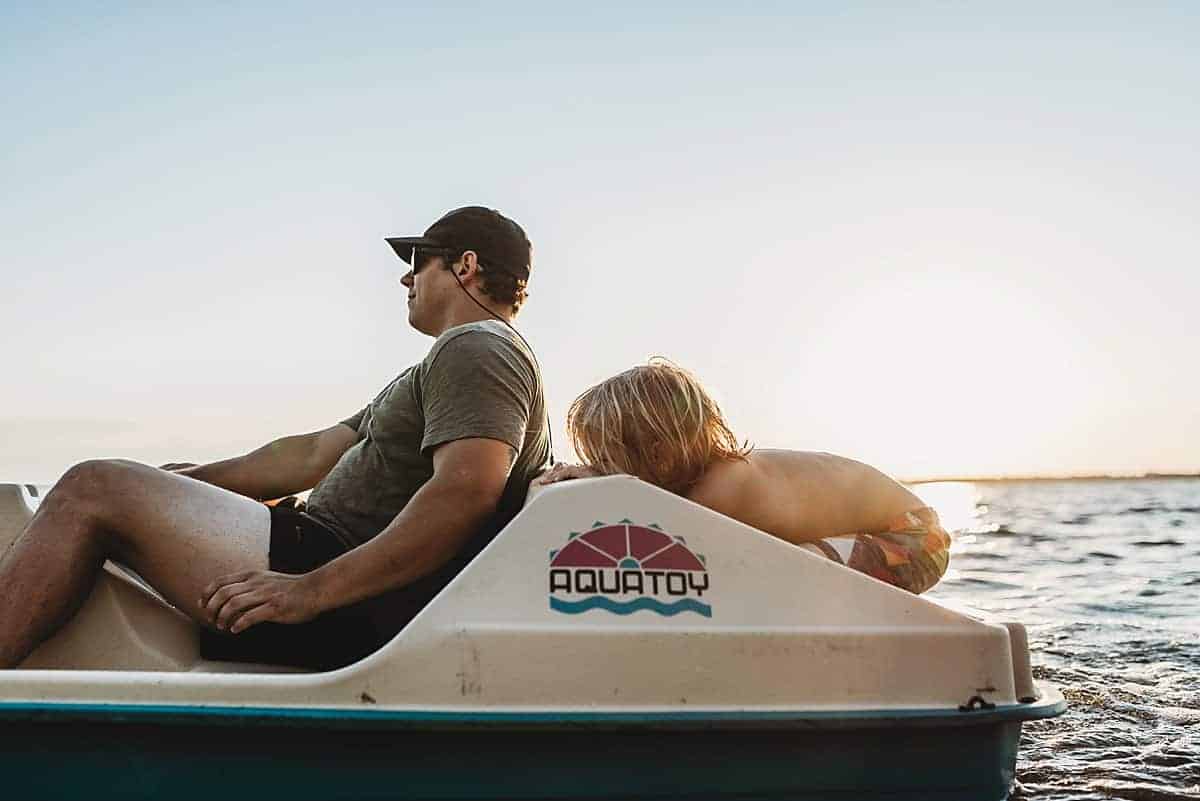
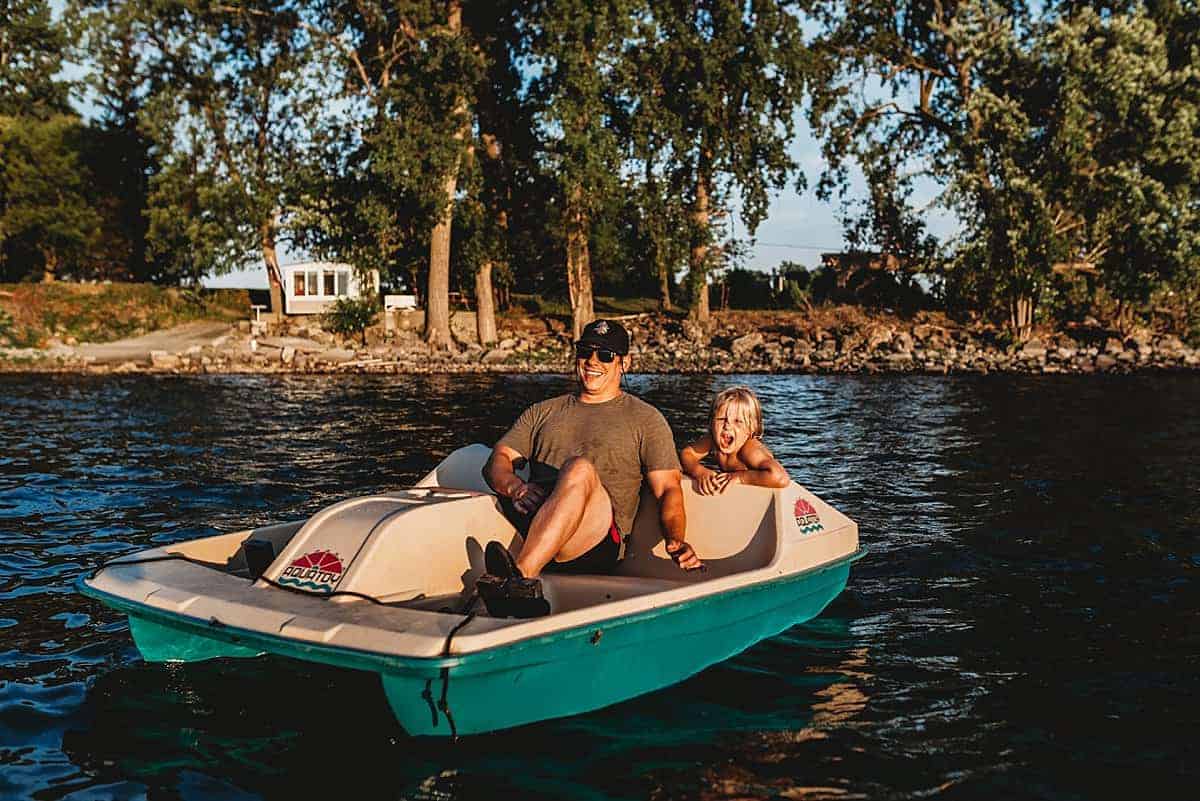
6.Yoga
While it may seem like a land activity (and it is), yoga can really be enjoyed anywhere, including on or near the water! You can do yoga on the beach, on docks at the lake, and even on a stand up paddleboard! We like to turn our paddleboard yoga session into a bit of a challenge. We’ll see who can get into certain poses without falling off the board or see who can hold specific poses the longest. There’s no shortage of laughter during that particular activity!
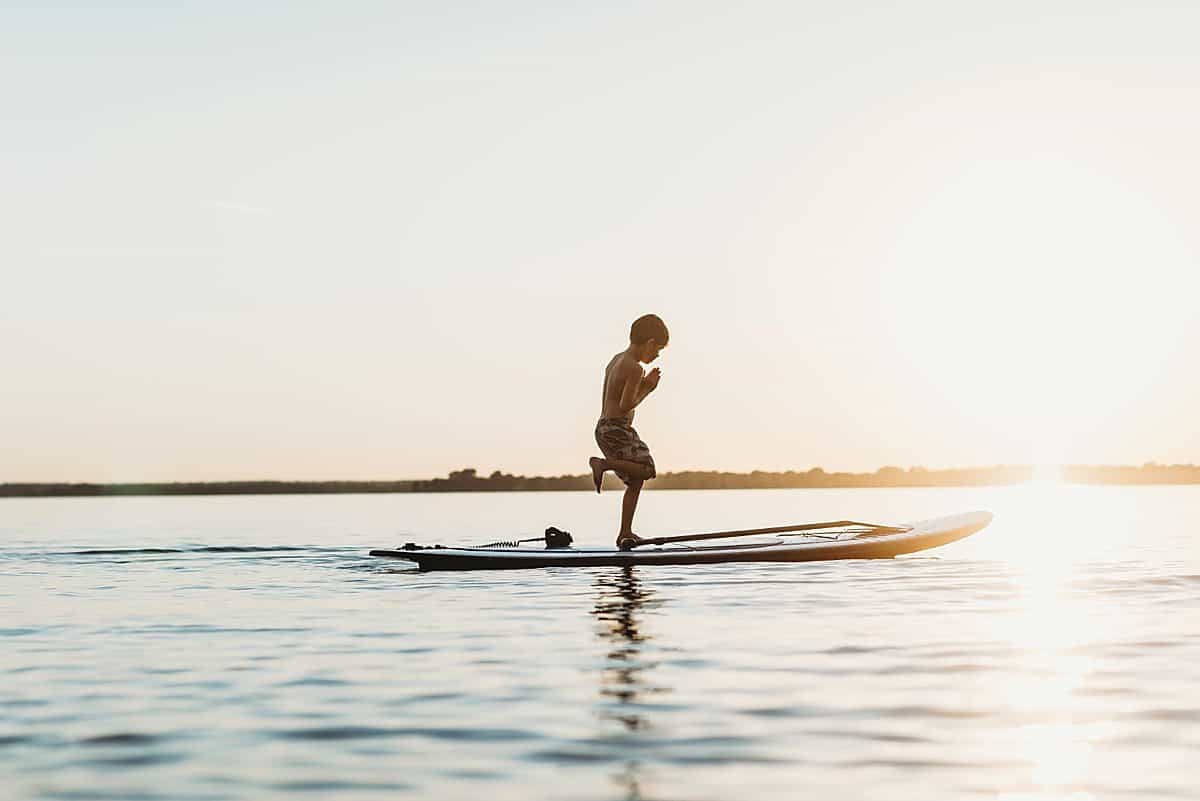
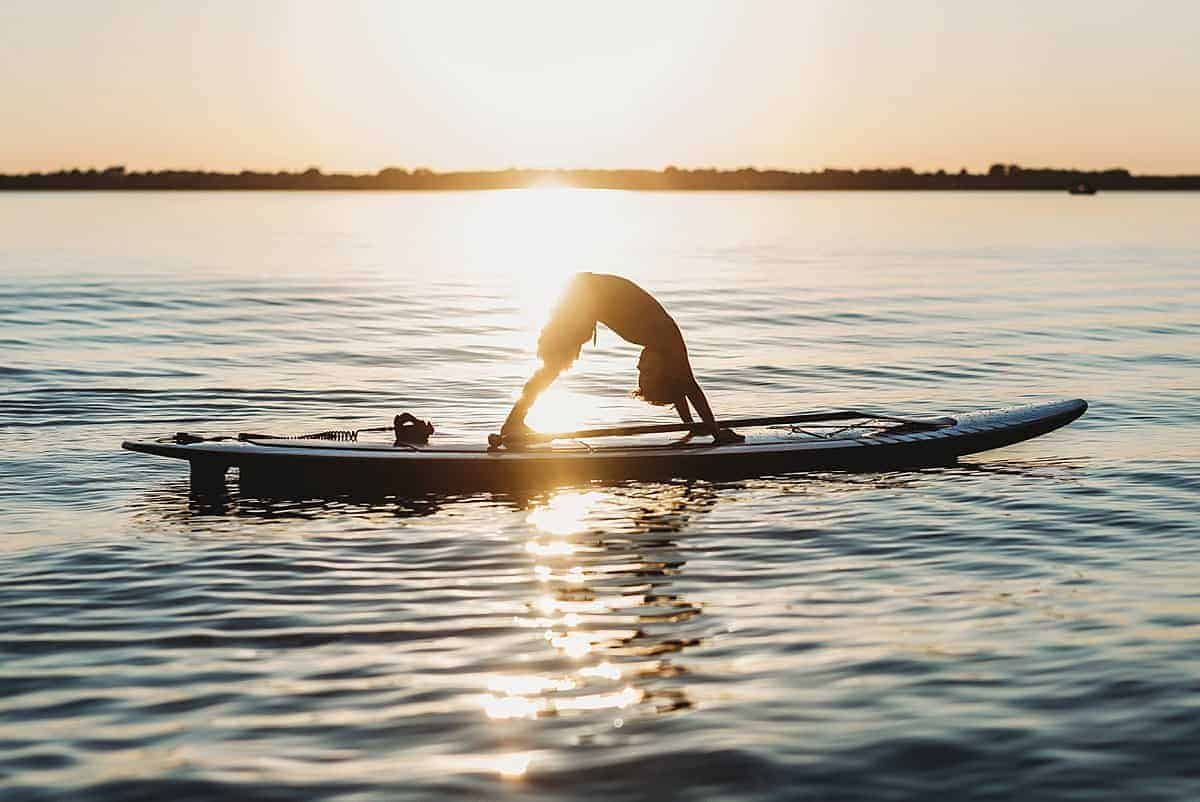
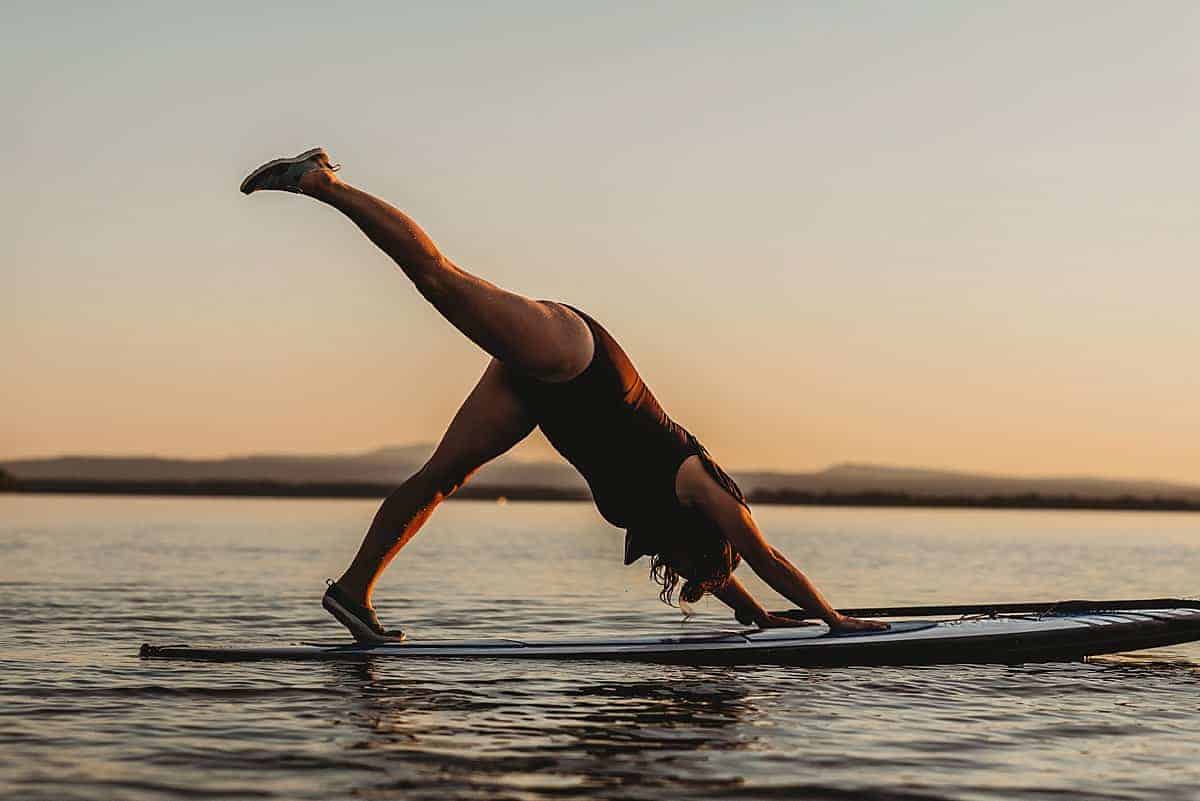
7. Skimboarding
Skimboarding is a fun outdoor summer water activity for kids that my boys have are just getting into this year! At the beginning of the summer, they saw some older guys using them at our beach and they didn’t stop talking about it until I finally broke down and got them a skimboard of their own. At 5 and 7, I wasn’t sure our kids would be old enough yet but they proved me wrong! They’ve had a ton of fun on that skimboard. It takes a lot of patience and coordination. Plus, it occupies them for hours.

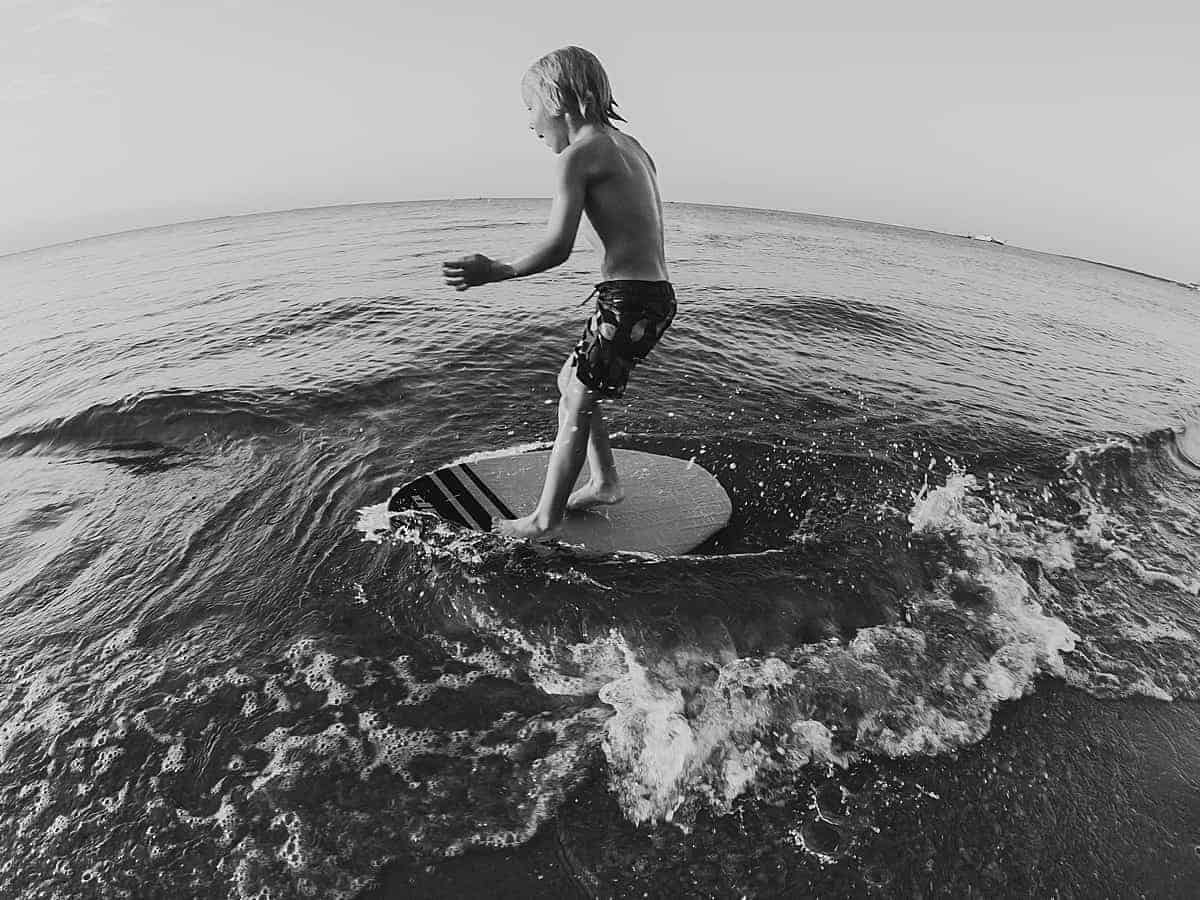
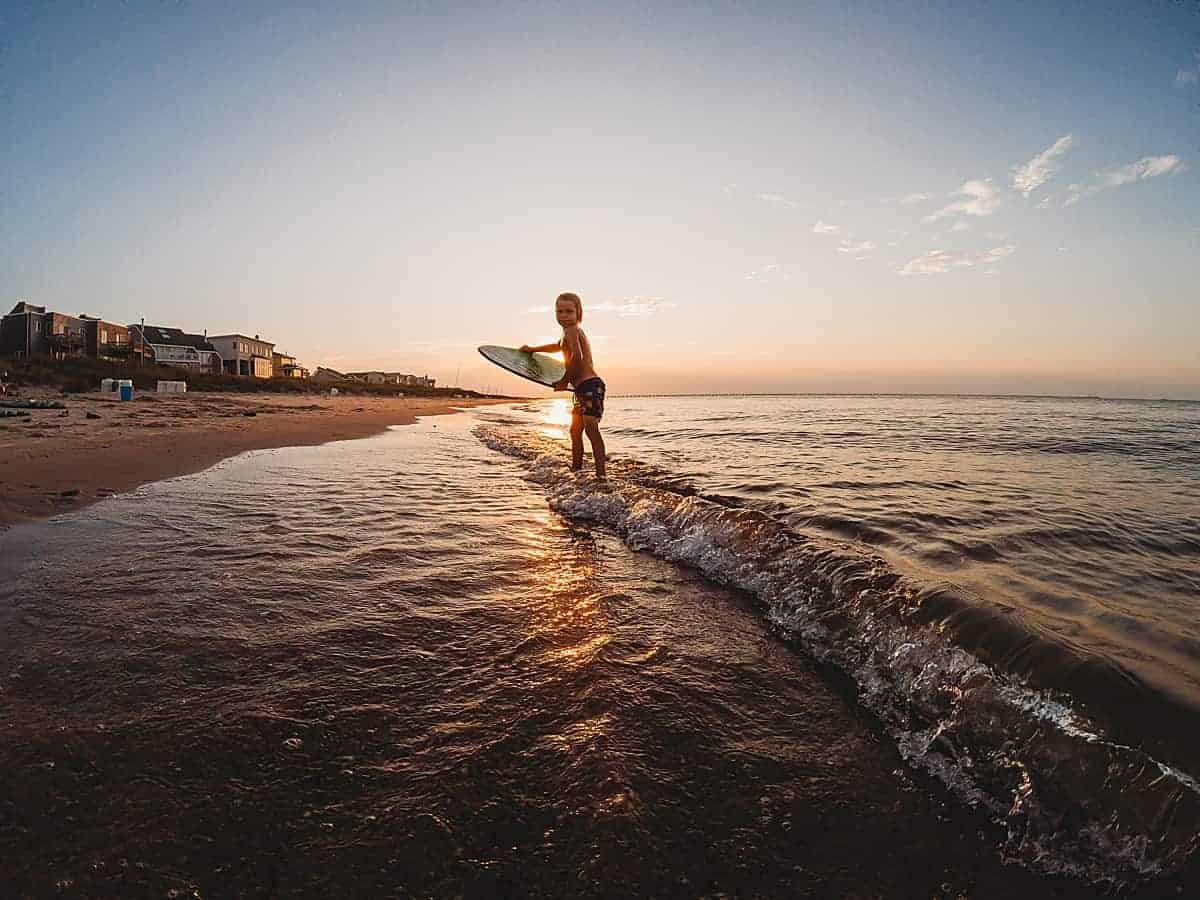
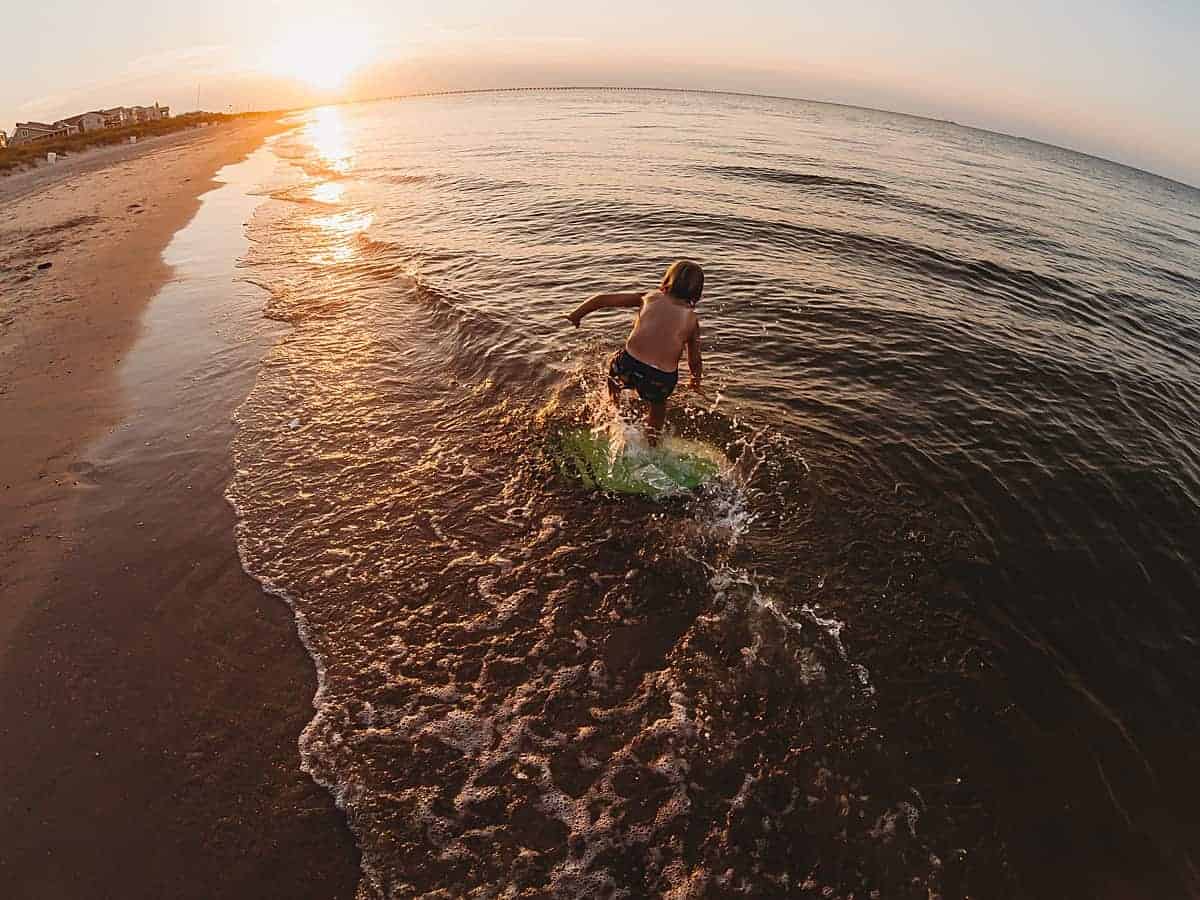
8. Dock jumping
Those of you living the lake life will be very familiar with this one! This activity has been a people pleaser for decades and will never get old. My kids can spend an entire day doing this and never get sick of it. Jumping off, swimming back to the dock, and then climbing up the ladder over and over for hours. Such a great way to enjoy a warm day while also getting lots of exercise. Like most everything else in our lives right now, the boys turn this into a competition to see who can jump the highest, furthest, or do the best trick.
We alternate between using the life vests when I’m not in the water with them and no life vests when I’m right there to assist if they get too tired to swim back to the dock unassisted. This activity was probably the best activity we’ve done all summer to help them learn to swim better. They made massive improvements in their swimming abilities after just an hour of jumping without the life vests and swimming back to the ladder! And I was right there to catch them or lend a hand if they needed a little extra help.
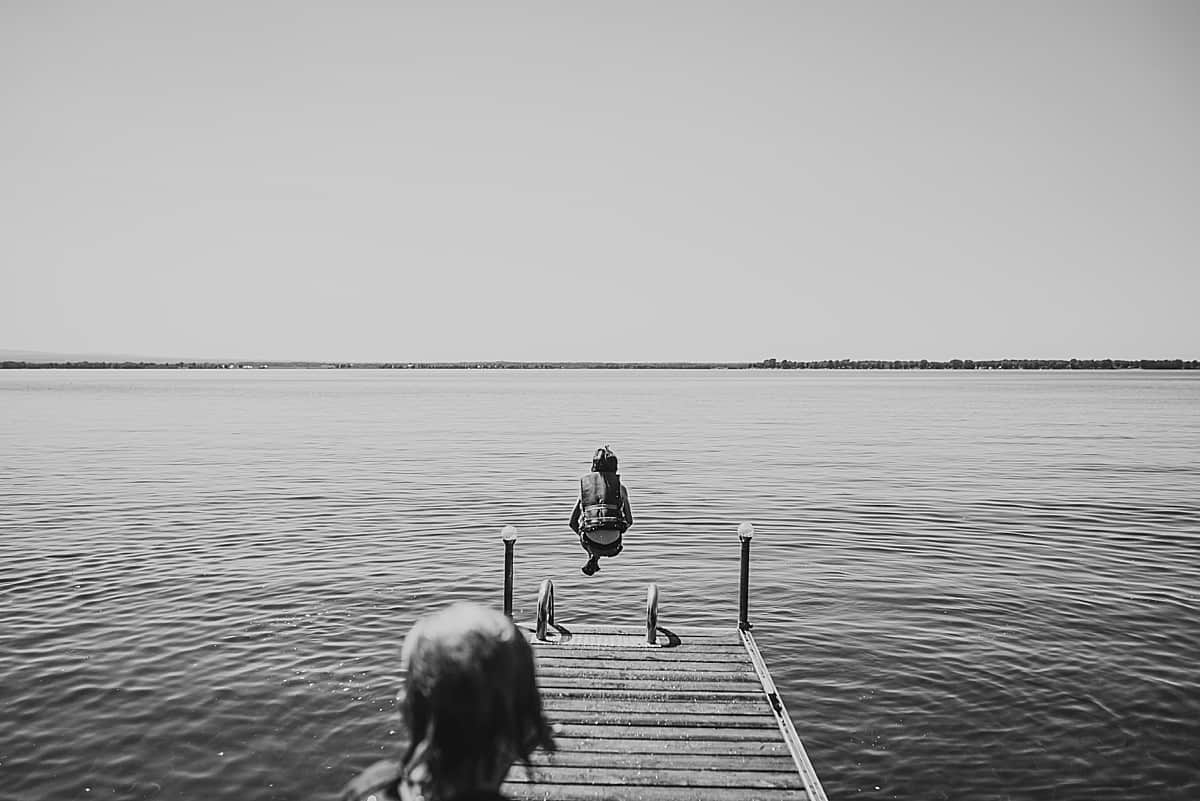
9. Surfing
Surfing is something that’s only just now popped up on our radar as our boys are getting older. Now that they’re better swimmers and have a great sense of balance on our paddleboards, we’re ready to add surfing to our list of favorite water activities for kids! I grew up in the mountains so I’ve never tried surfing before, but since we live on the ocean it’s time to give it shot. If you live in a beach area or plan to vacation to one, you’ll likely have access to a few places that offer surfing camps for kids and private lessons. Since our youngest isn’t quite old enough for the surfing camps yet, we decided to do private lessons as a family! I have a feeling that surf boards will be on our kids’ wish lists in the near future!
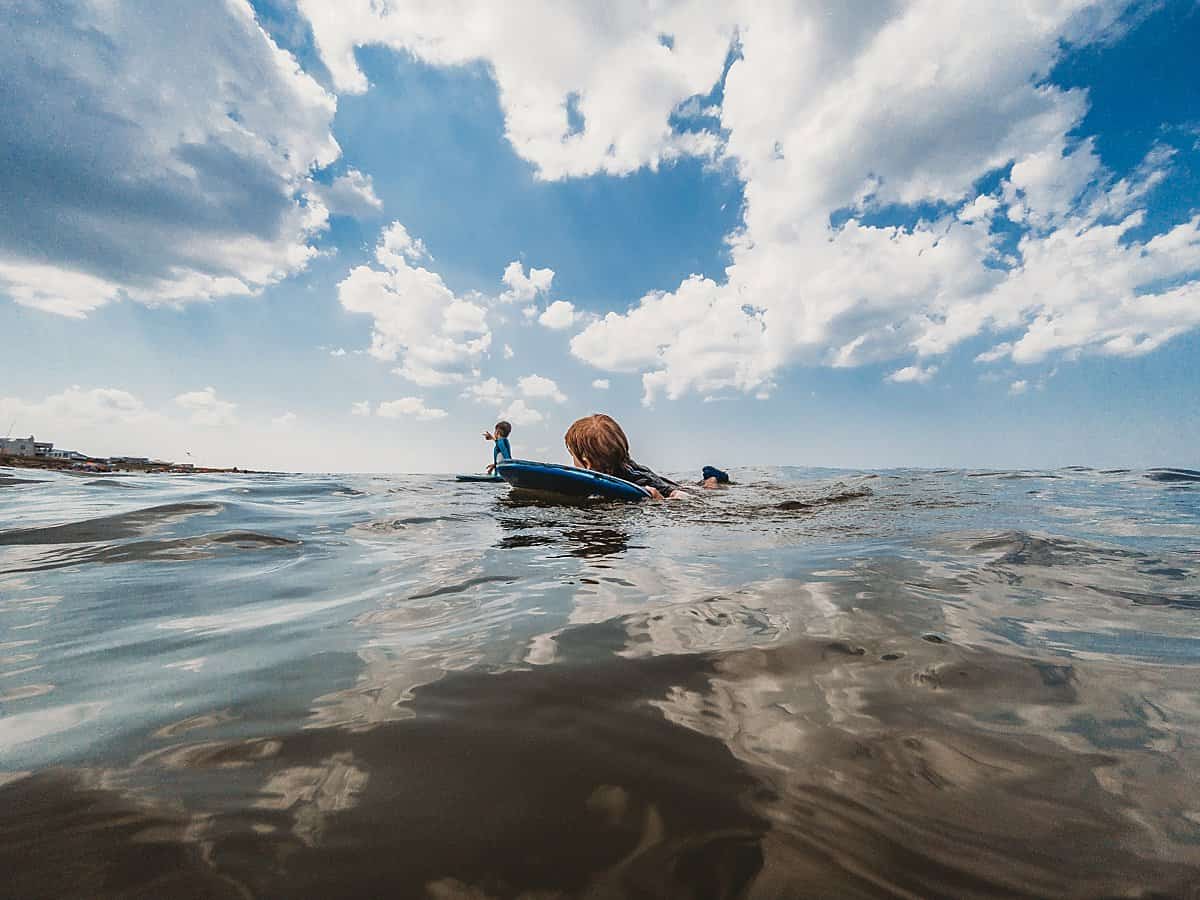
10. Climbing
If you’re in the mountains rather than on the coast, I highly recommend taking some time to adventure near waterfalls! My kids are fascinated by waterfalls because we don’t live in an area where you can find them. Whenever we head to the mountains they insist on going out to find some! Usually, you can also find some great spots nearby to climb rocks! We stick to small falls with fairly easy-to-navigate rock areas, since we’re not well-trained in rock climbing yet. When we get hot and sweaty from our climbing, we just find a little pool without fast-moving water to plunk down in and cool off! Please be warned – there is no shortage of beautiful rocks to take home in places like this, so you’re pockets and backpacks will get heavy!
Climbing with Babies and Toddlers
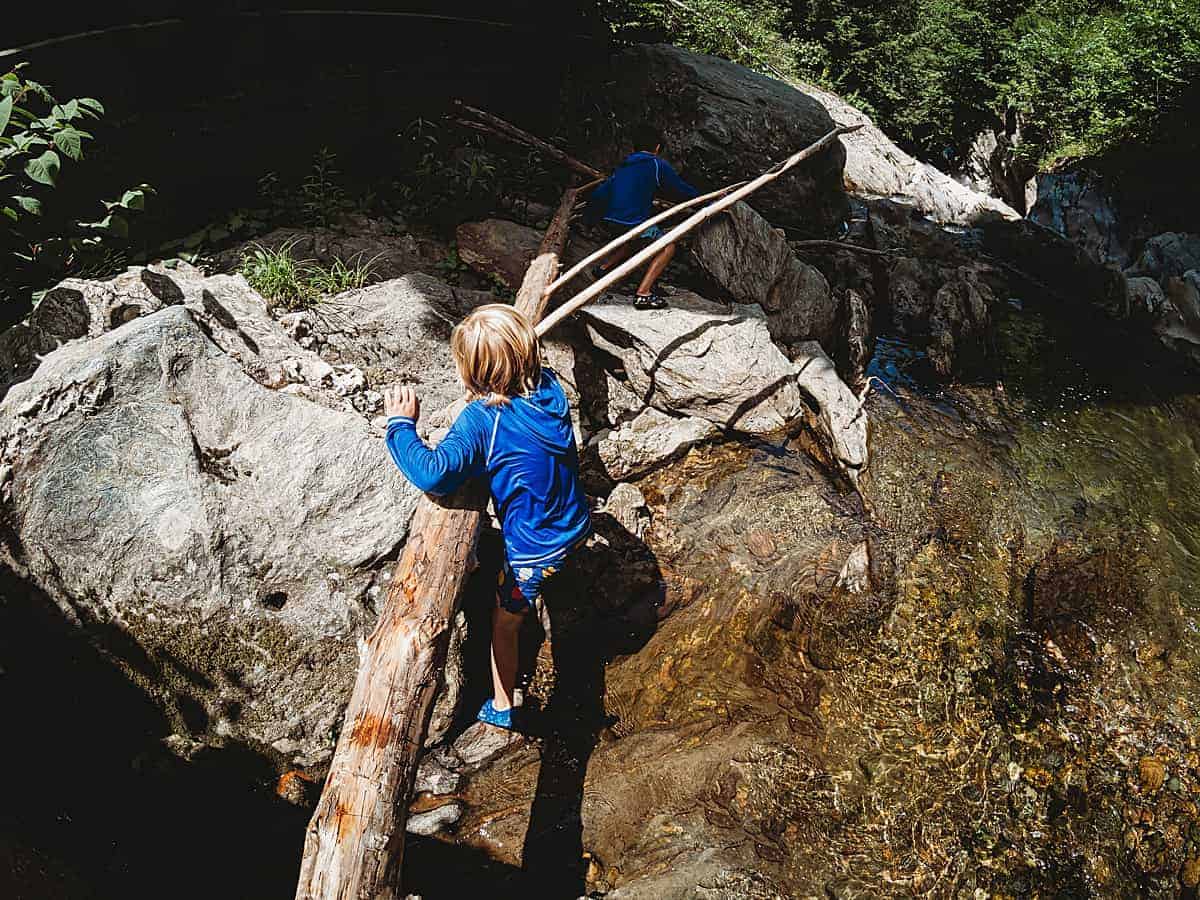

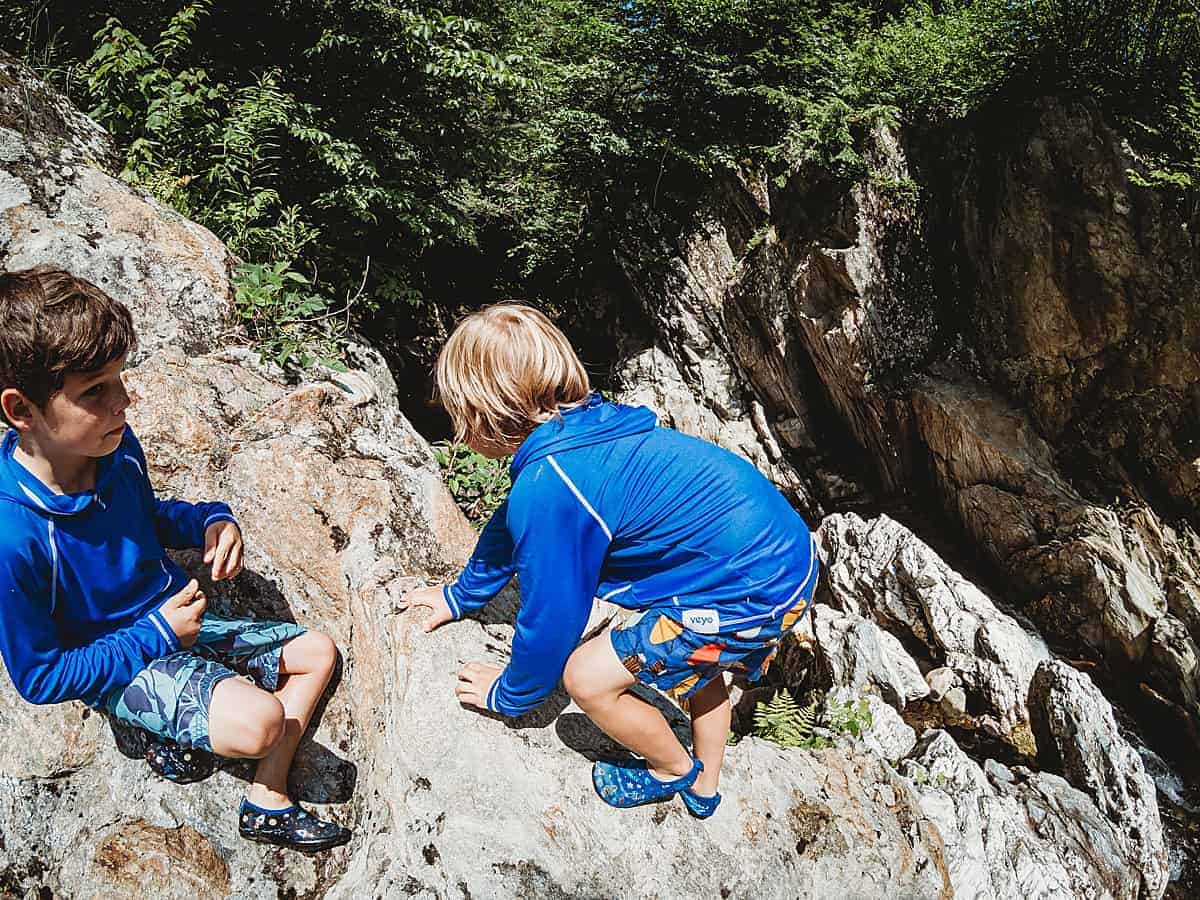
11. Canoeing or row boating
When it comes to being out on the water, you can really just assume that everyone will have a blast using any kind of boat. Kids love learning to paddle and are filled with pride when they’ve gained the skills to do it independently.
Canoeing with Babies – The Basics
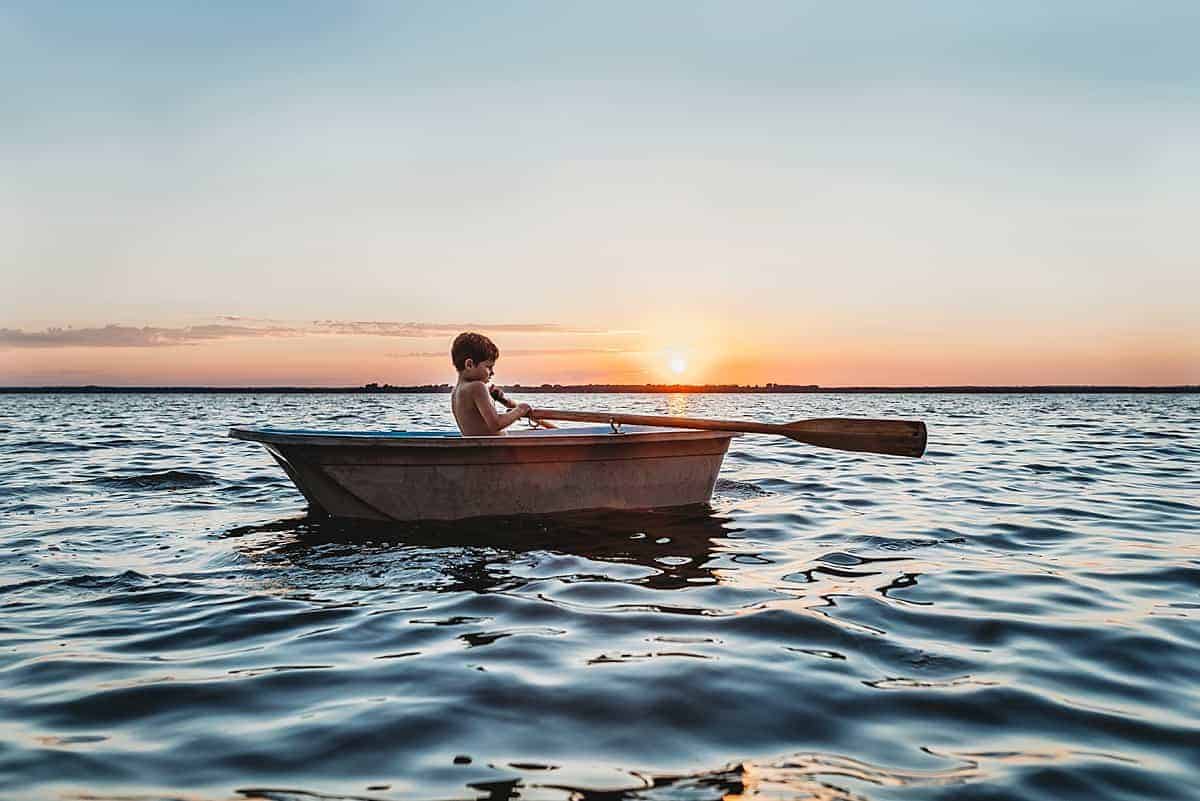
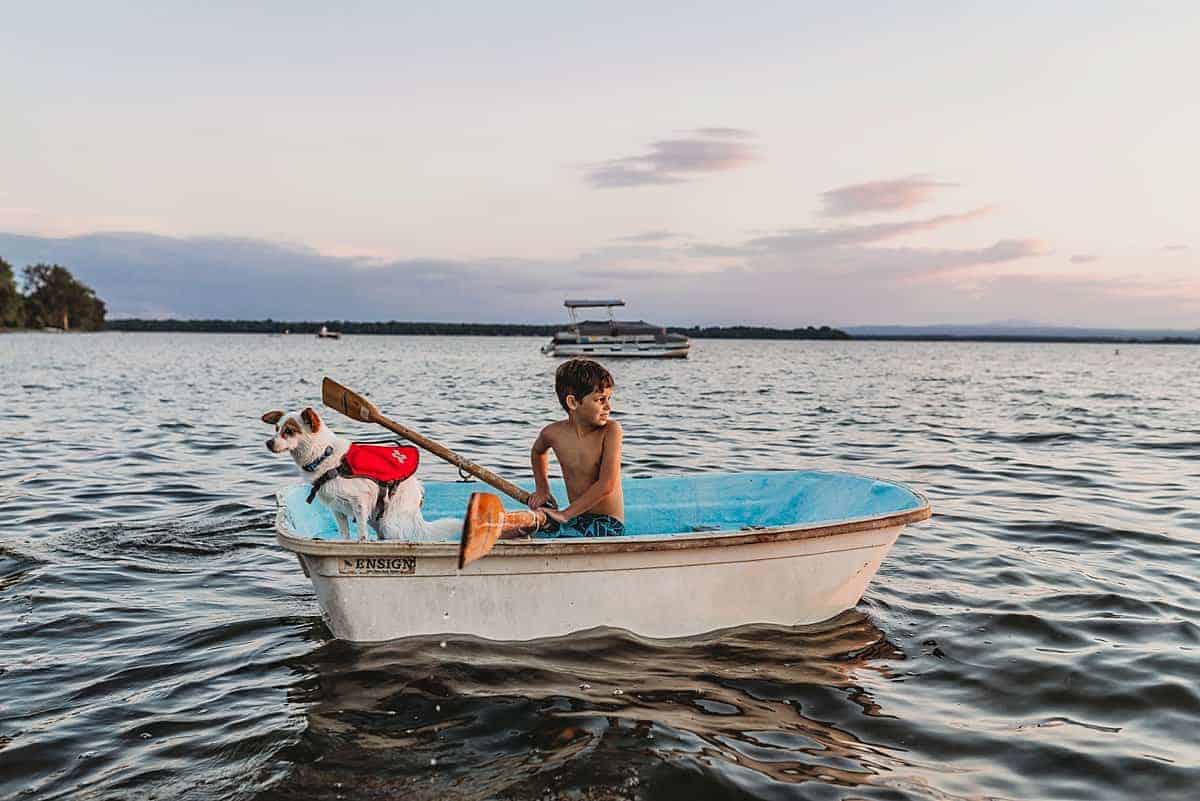
12. Go to a splash pad
For those of you who aren’t near nature-made splash areas, you can still have fun getting active in places like splash playgrounds or splash pads! More and more cities are building wonderful splash pads to run around in! These are especially great for families with babies and toddlers because you don’t have to worry about the water being too deep!
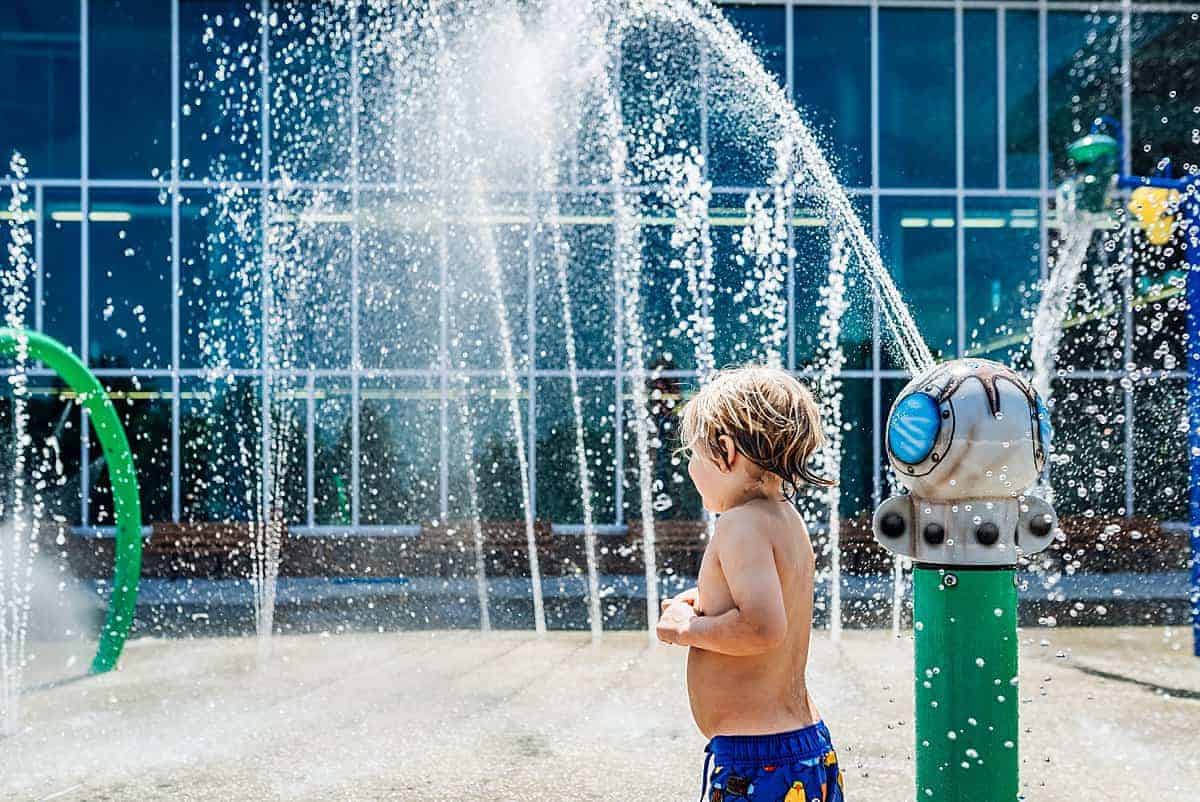
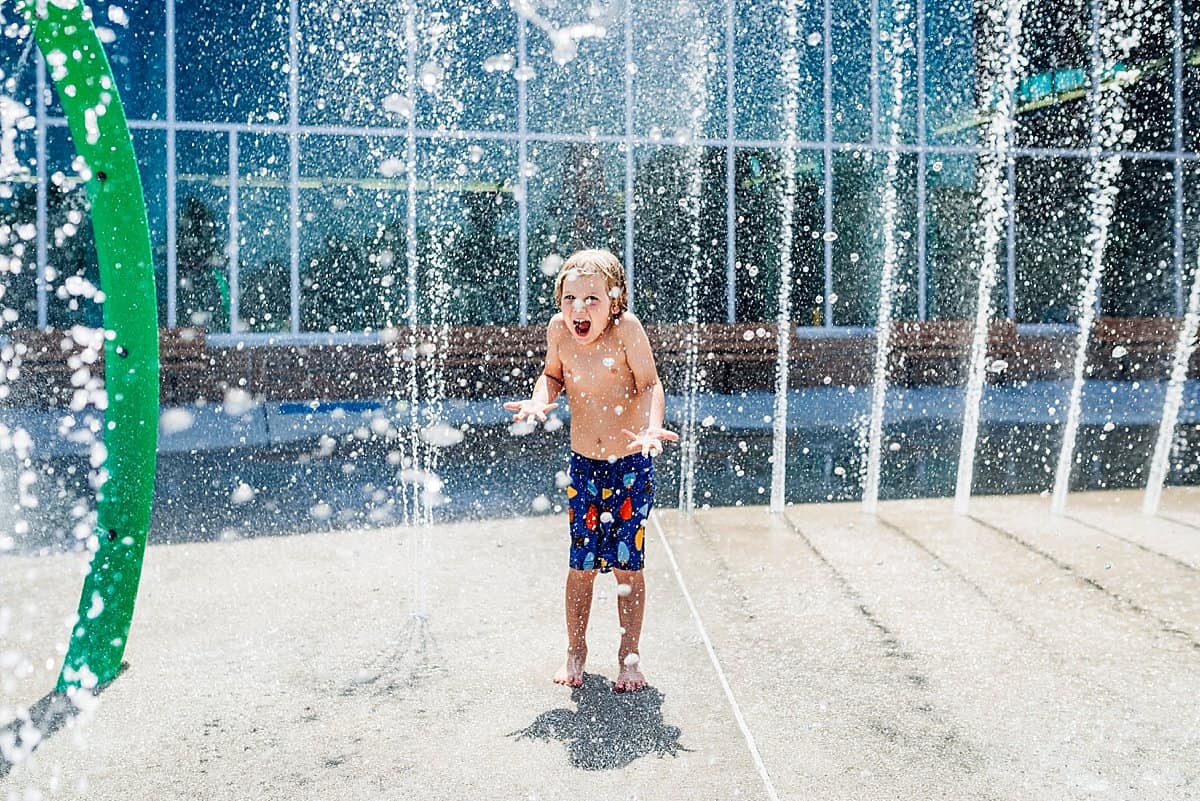
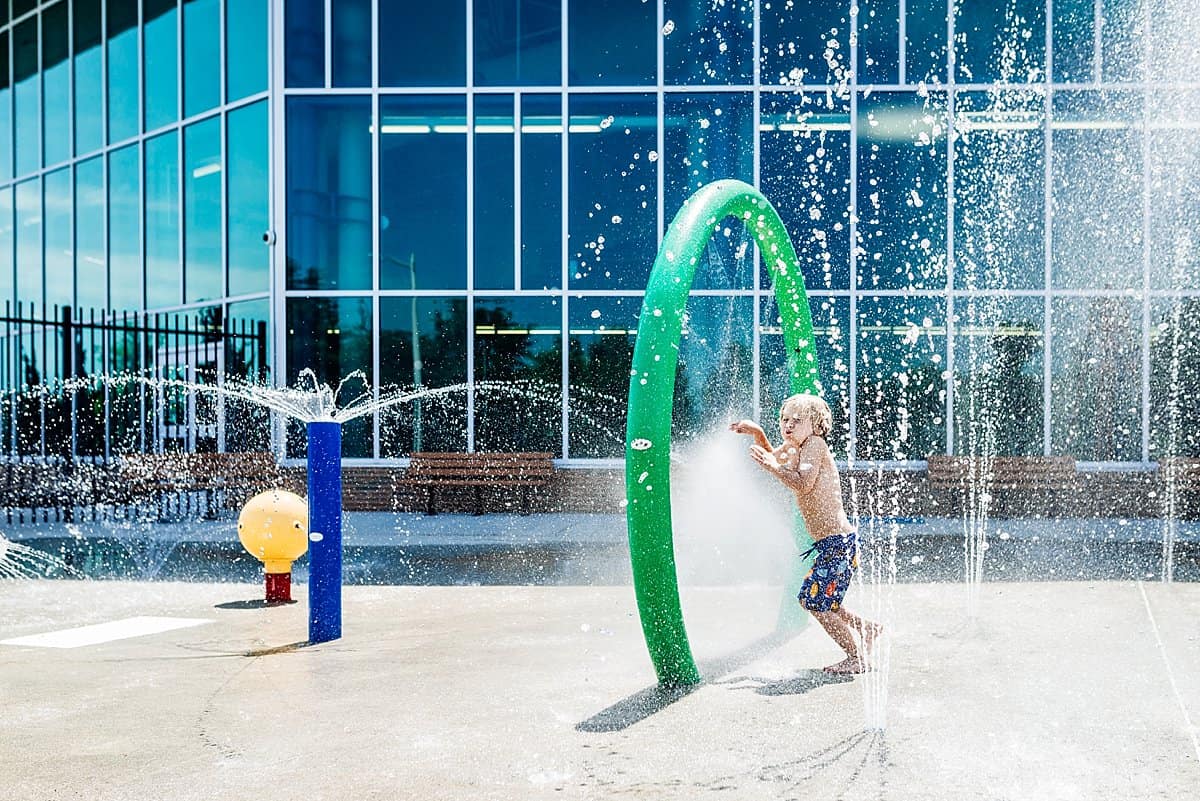
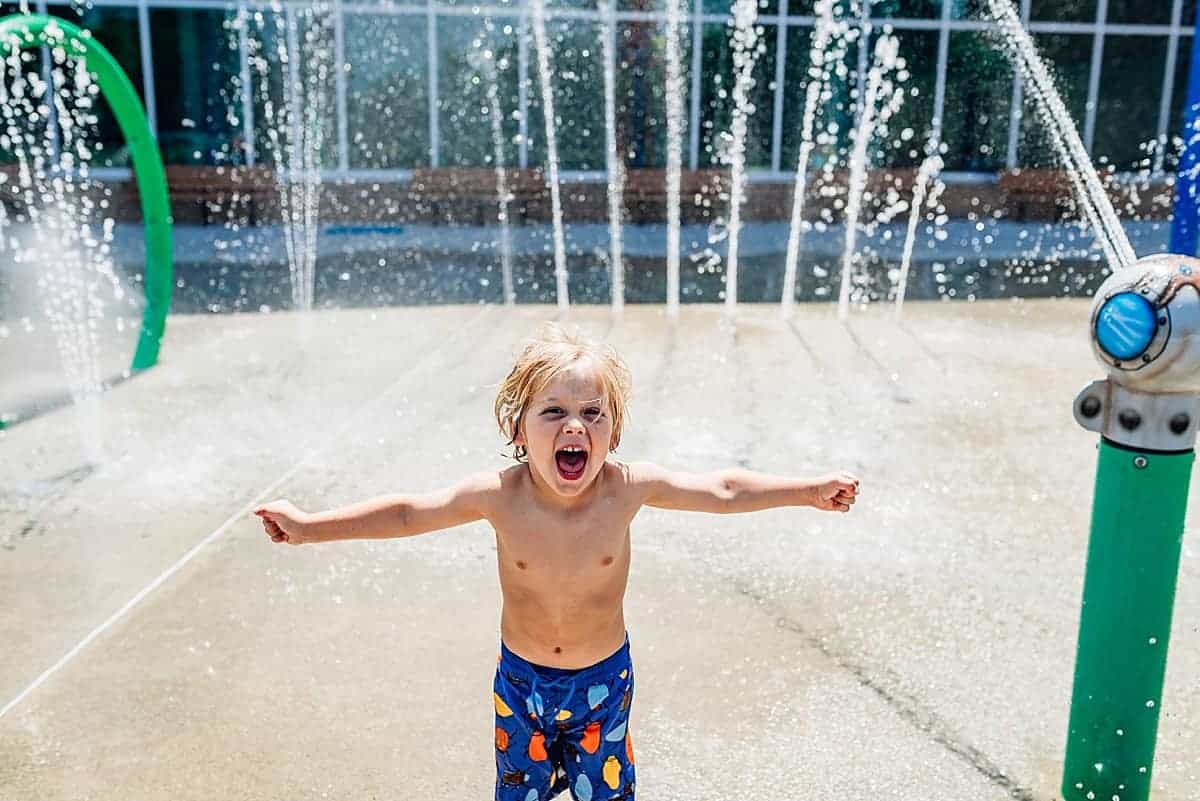
13. Go to a pool
Along those same lines, find a pool nearby! Both indoor and outdoor pools are a great way to spend some quality time with your family. My favorite thing about going to a pool is that I have to leave my phone behind! Once I jump in the water with the kids, they get some absolute undivided attention. It’s so refreshing and necessary!
Infant Swimming [step-by-step Tutorial]
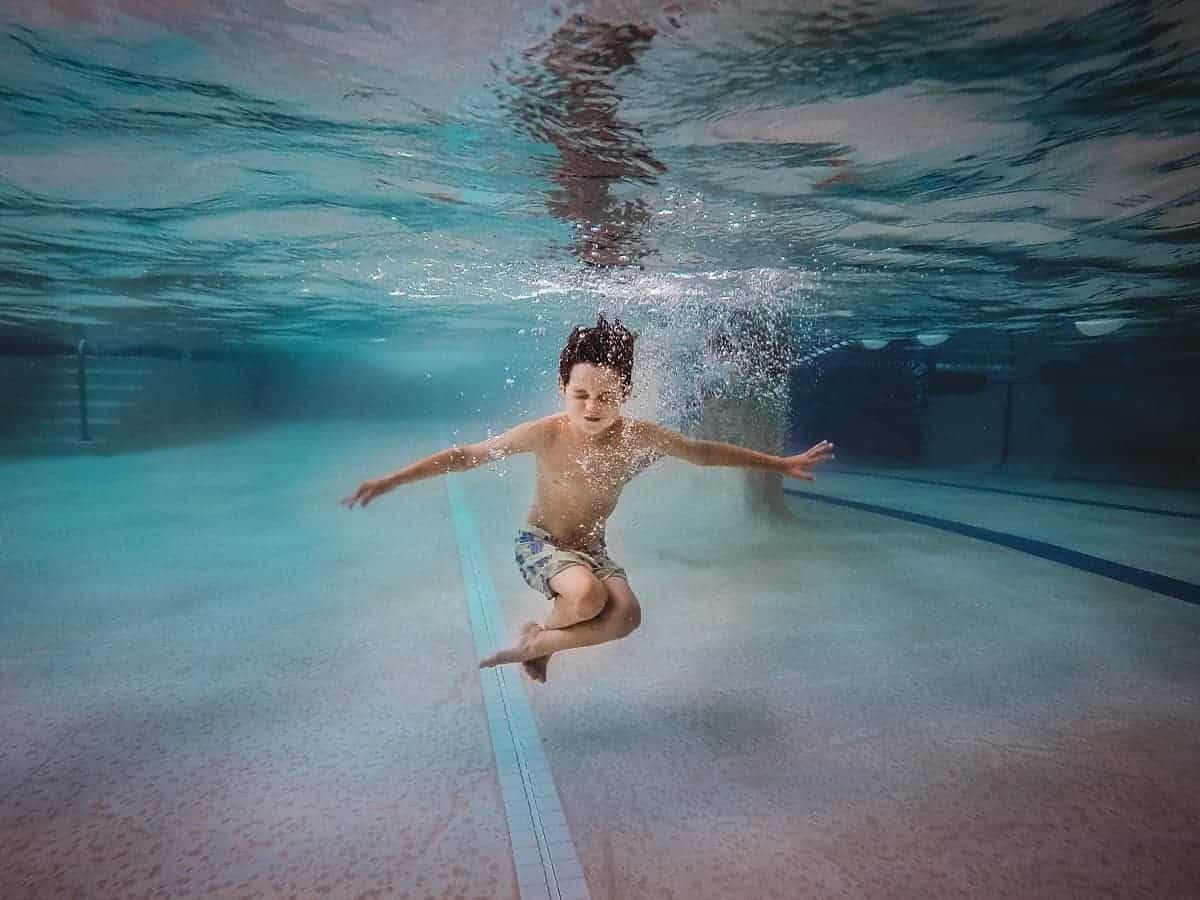
14. Playing a sport
When you pack up your beach bag, add a soccer ball, football, or frisbee! Depending on where you’ll be and how many people will be there, you could also play volleyball or whiffle ball, too. Tossing a ball back and forth in the water is actually one of my very favorite things to do with my kids. We can keep cool by being waist-deep, connect with each other, and practice hand-eye coordination. You can purchase some fantastic frisbees and balls made specifically for water. We LOVE these. They soak up water and then splash it all over when you toss them. It’s tons of fun!
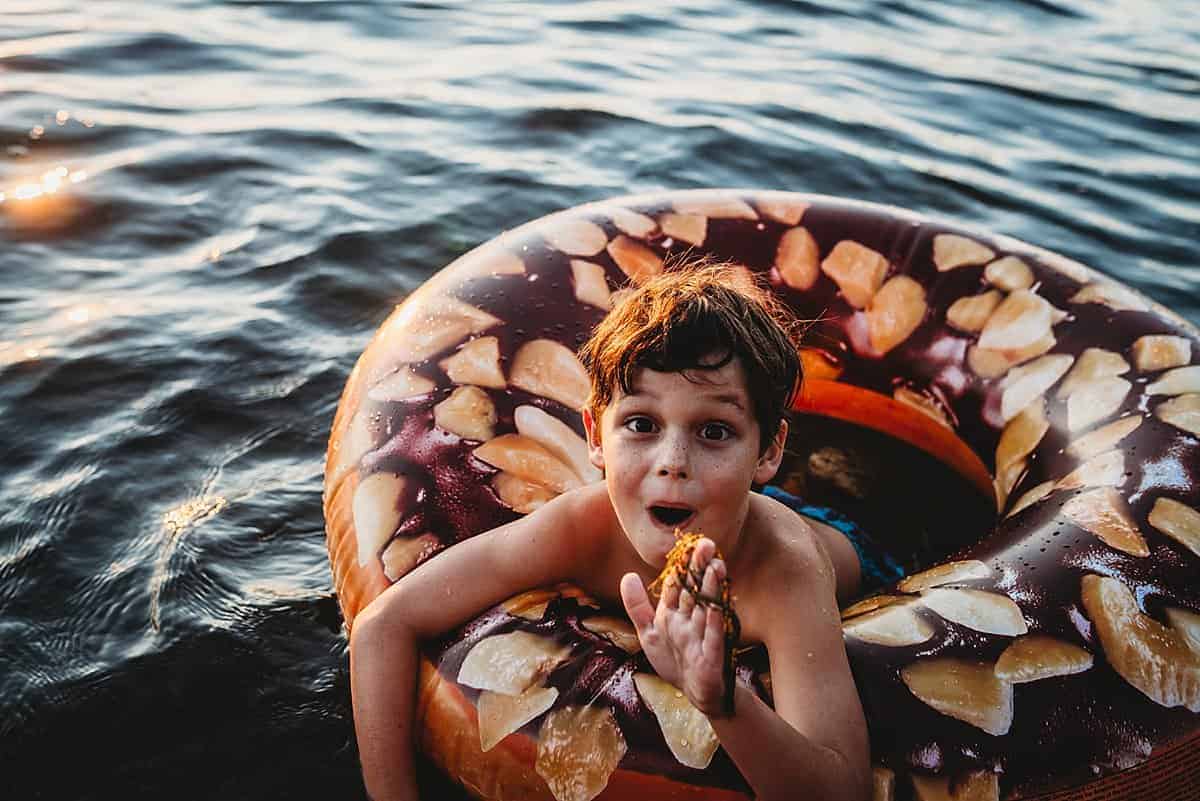
15. JUST PLAY!
My final suggestion is to just jump in and play anywhere there’s water! You can swim around, play on floats, use kickboards or boogie boards, or dive to the bottom to find treasures. Anything you do in the water together will be fun and your children will appreciate the quality time with you! You honestly don’t need to rent or purchase any of the fancy stuff I mentioned above to enjoy water activities with kids. Splash around with your family and make some summer memories that will last a lifetime!
Interacting with Marine Life
If you like this you might like to try:
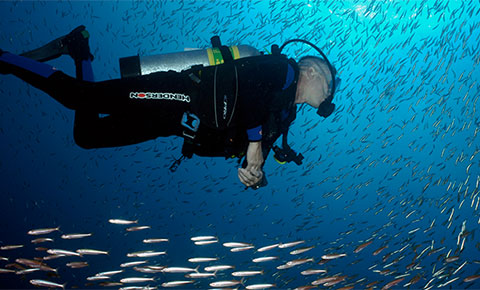
Diving and Snorkeling
Whether you want to immerse yourself in towering kelp forests, view unique coral reef ecosystems, or explore sunken relics of maritime history, the waters of national marine sanctuaries provide abundant opportunities for divers and snorkelers of all experience levels.
Find out more about the underwater adventures that await you and tips on how to responsibly enjoy these treasures here.

Fishing
Recreational fishing is a favorite American pastime, providing opportunities for people of all ages to experience the aquatic environment. Fortunately, while national marine sanctuaries protect underwater ecosystems, they also allow a variety of recreational uses. In fact, recreational fishing is allowed in most of the waters within sanctuaries! So get out into a national marine sanctuary and enjoy top-notch fishing, while supporting the long-term protection of our nation's underwater treasures by finding out more about recreational fishing best practices. Fishing with a Baby in Tow - FrostyFly
Fishing at sanctuary sites: American Samoa, Channel Islands, Cordell Bank, Florida Keys, Flower Garden Banks, Gray’s Reef, Greater Farallones, Hawaiian Islands Humpback Whale, Mallows Bay-Potomac River, Monterey Bay, Olympic Coast, Stellwagen Bank, Thunder Bayand Wisconsin Shipwreck Coast
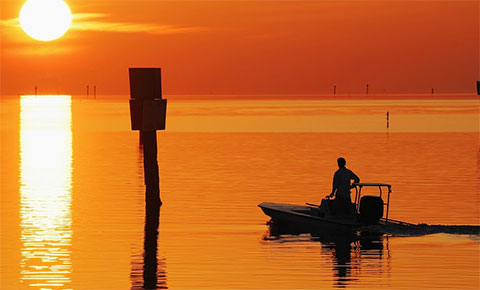
Boating
Visitors interested in staying above the waterline will enjoy the scenic surroundings, wildlife viewing opportunities and fishing spots accessible by boat. We welcome guests to venture out to sea while being conscious and respectful of other boaters and marine life. So, whether your final destination is the sanctuary or you are just transiting through, take care to avoid striking marine mammals, sensitive habitats, such as coral reefs or seagrass beds, and fishing gear. Plan ahead and take advantage of navigational maps and marine forecasts to make for a pleasant and safe experience on the water! Check out NOAA's collection of free resources for recreational boaters here.
Tips for Boating With Babies + Baby Boating Accessories
Extra info about key spots: Monterey Bay, Thunder Bay, Stellwagen Bank, Florida Keys, Hawaiian Islands
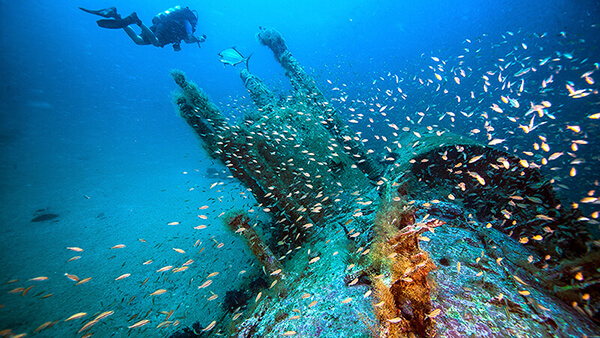
Experience Maritime Heritage
National marine sanctuaries are living museums of America’s rich maritime history - stories of exploration, immigration, and creation of coastal communities. Sanctuary waters protect and preserve countless shipwrecks and even naval battlefields!
Throughout the National Marine Sanctuary System you have the opportunity to explore, discover, and appreciate historic, cultural, and archeological sites and stories that represent the connection between humans and our Great Lakes and ocean areas.
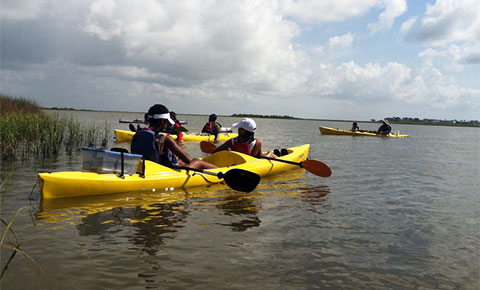
Paddle Sports
Canoeing, kayaking and paddleboarding provide participants with a unique, interactive avenue to experience all that national marine sanctuaries have to offer! Each site invites a new adventure, with paddling opportunities readily available and accessible from shore at most sanctuary locations.
Check out a couple of our paddling hotspots: Mallows Bay, Monterey Bay, Thunder Bay
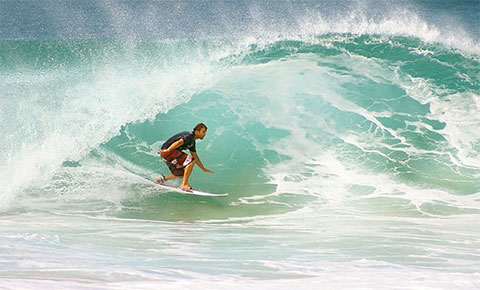
Surfing
Mavericks. Waimea Bay. Pipeline. These places are some of the most revered surf spots on Earth, but there's another thing they have in common: They are all found within national marine sanctuaries!
For more, check out these other surfing features:Catching the Wave: Surfing in the National Marine Sanctuaries andPower of Place: Surfing Olympic Coast.
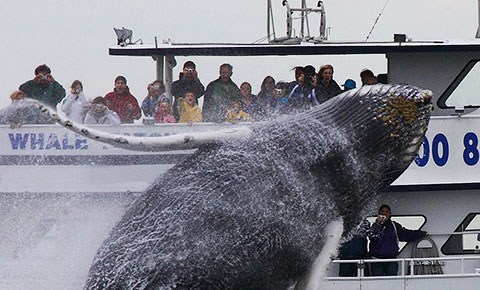
Whale Watching
Come view our planet’s largest mammals in their natural habitat! Tour operators throughout California, Hawaii and Massachusetts offer whale watching excursions into sanctuary waters for those wishing to view these magnificent creatures, and there are plenty of sites to spot them from shore too! Before you go, take a moment to educate yourself on the responsible way to whale watch.
Top Spots to whale watch: Monterey Bay, Stellwagen Bank, Hawaiian Islands Humpback Whale, Olympic Coast

Wildlife Viewing
The vast biodiversity that lies within the thirteen national marine sanctuaries creates an extraordinary opportunity to observe dolphins, sea otters, birdsand many other creatures that inhabit our shores and waters. As visitors to these special ocean environments, it is important that all guests promote responsible visitation. Being mindful of your actions during your visit will reduce potential harm to our marine life and resources.
View some wildlife in these sanctuaries: Olympic Coast, Monterey Bay, Cordell Bank, Hawaiian Islands Humpback Whale, Stellwagen Bank, Florida Keys
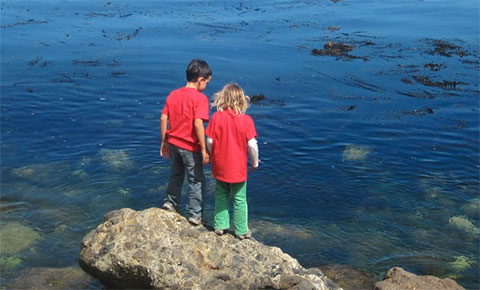
Tide Pooling
The rocky shores of sanctuary waters create a unique and biologically rich environment where many of our ocean’s underwater inhabitants can be viewed in plain sight. Visitors of all ages enjoy exploring tide pools and learning about the plants and animals that make up this remarkable marine habitat. Learn about responsible wildlife viewing.
Tide pooling hot spots: Monterey Bay, Olympic Coast
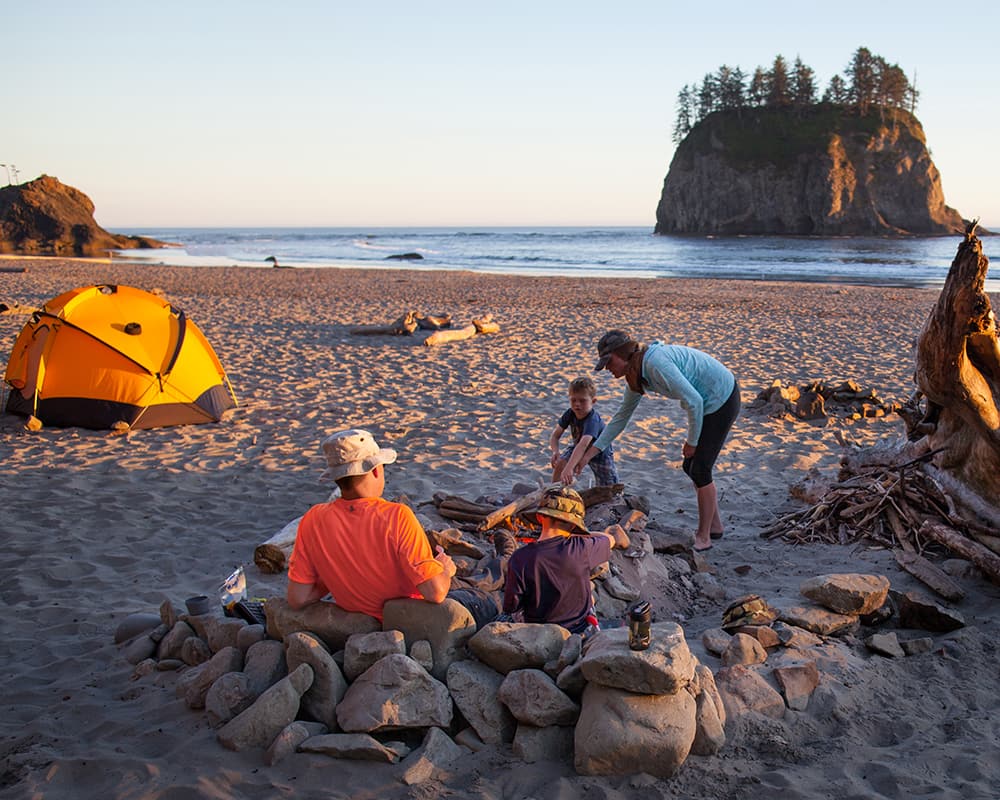
Shore Camping
Release the tent-sion with a camping trip on the shores of your national marine sanctuaries and in nearby national parks, national seashores, state parks, and more! Camping is an excellent way to visit some of America’s most treasured places on land and by the ocean or Great Lakes. No matter what type of camping you prefer—backcountry, primitive, car camping, RV, or “glamping”—there are great options for everyone! Remember to recreate responsibly and leave your campsite better than you found it.
For More On Shore Fishing Click Here
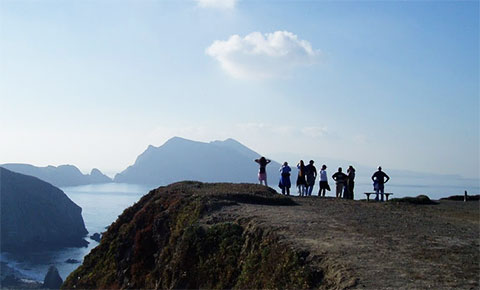
Sightseeing and Heritage Trails
By land or sea, these trails will point the way to highlights of our vibrant marine ecosystems and hidden jewels of our country’s maritime history.
The Whale Trail
Looking to follow our finned marine friends, but don’t know where to start? Check out the Whale Trail to find the locations nearest you and learn about what you can do to protect them.
Outer Banks Maritime Heritage Trail
Discover the shipwrecks, historic lighthouses and marine environment that define the maritime history of coastal North Carolina.
The Great Lakes Maritime Heritage Trail
From breathtaking scenic views to historic relics, the Great Lakes Heritage Trail leaves visitors in awe of the profound maritime history and beauty of Northeast Michigan.
Florida Keys Shipwreck Trail
Below the tropical waters of the Florida Keys lies a trail of sunken vessels, with origins dating back over 140 years.
10 most incredible marine life experiences
Top photographers and experts reveal their most incredible underwater encounters
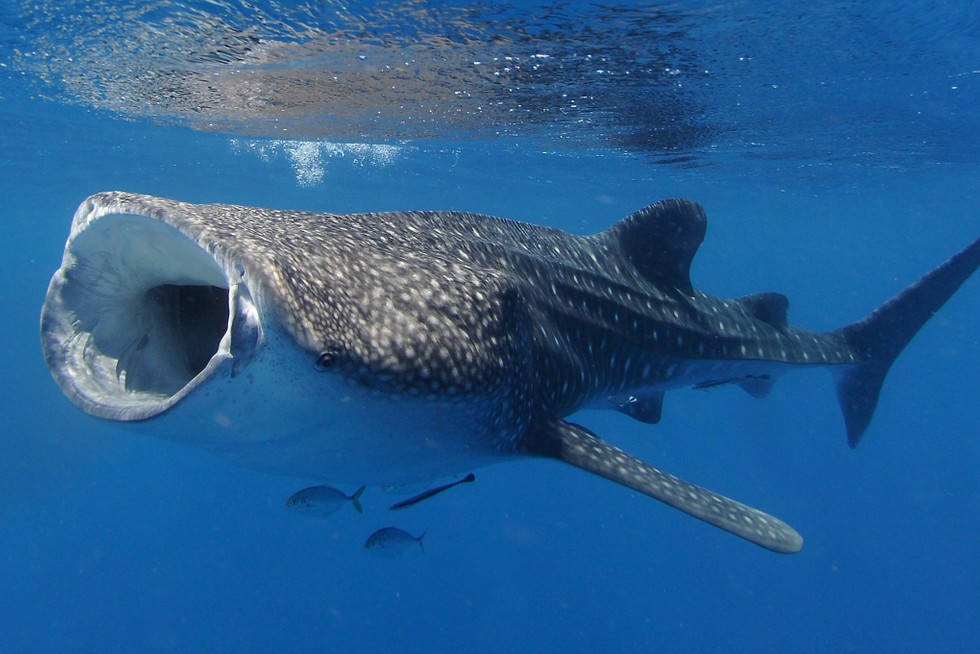
Where to see whale sharks: Western Australia
The expert: Brad Norman is a marine biologist who has been studying whale sharks at Ningaloo Reef since 1994.
“Jumping off a boat into crystal-blue oceanic water 50m deep is thrilling enough, but knowing that you’re plunging into the path of the world’s biggest shark – up to perhaps 15m long – really sends your heart into overdrive.
At least 10,000 tourists do this every year at Ningaloo Reef, Western Australia, which is a World Heritage site.
There are more than 20 locations worldwide where you can swim with whale sharks, but Ningaloo is perhaps the best site of all; it’s certainly the most famous.
I often relive my first time: as I snorkel languidly at the surface, a creature as big as a bus powers towards me. The shark slides effortlessly past, seemingly unconcerned by my presence.
A giant shark, I say to myself, is within 5m of me – and there is no cage between us. Marine encounters truly don’t get much better.”
Top Tip
When you enter the water and first see the shark, swim out to the side and stay at least 5m away. Try not to splash.
Where to see hammerhead sharks: Red Sea, Sudan
The expert: Jeremy Stafford-Deitsch is a photographer and the author of three books on sharks.
“Beyond the reef, out in the current, the hammerheads gather in schools. They are most likely to be seen on an early morning dive, but here, off Sanganeb Atoll in the Sudanese Red Sea, you must wait for them to come to you.
I plunge through the thermocline and down to the colder water that the hammerheads prefer. The current is strong, so I work against it with biting fin strokes while controlling my breathing.
I gaze into the crepuscular emptiness then clang my knife against my air tank a few times. The shimmer of a distant ghost appears through the haze; then several others materialise, followed by many more solidifying forms.
A school of scalloped hammerhead sharks populates the liquid half-light, their beautifully ugly, flattened heads jerking from side to side.
In a few thrilling seconds, their primitive curiosity is satisfied – I am inedible – and they turn as one to return to a gloom I cannot enter.”
Top Tip
Wherever you go, expert local knowledge is vital, as are good diving skills.
Where to see sealions: Galápagos islands, Ecuador
The expert: Tui De Roy is a wildlife photographer and author who spent 40 years living in the Galápagos and still returns there frequently.
“From the moment I hit the water, I know the tables are turned. I thought I was going to be the observer – but I quickly realise that all eyes are on me, and the curious young sealions are eager to engage in rambunctious play.
These underwater aerialists put on quite a show, transforming this undersea realm into a veritable circus. They are full of confidence, reassured by their strength in numbers and bursting with energy, still nourished by their mothers’ milk.
More like this

Best books on marine and coastal wildlife
The sealions dart, spin, turn, loop and leap, while blowing bubbles and chasing each other in tight circles.
They egg each other on – some come closer and closer, heading straight for my mask, then veer away adroitly at the last moment, constantly watching my reactions.
Their greatest joy – and mine – comes when I try to imitate them by turning somersaults of my own. My clumsy antics drive them wild, and they circle me in ever-tighter loops.
Their agility makes me feel like a floundering cow, and I nearly drown in my own laughter as I fail miserably to keep up.”
Top Tip
Engage the sealions’ curiosity by copying their movements or swimming in short bursts then stopping. Trying to get too close will only put them off.
Where to see orcas: Norway
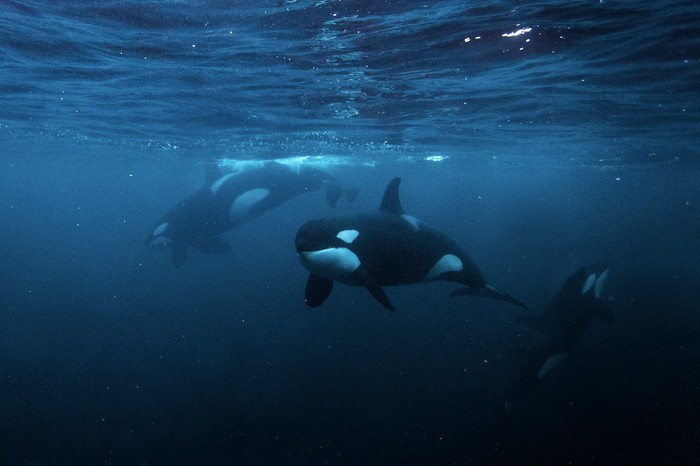
Orcas underwater in Norway. © Mike Korostelev/Getty
The expert: Zoologist and BBC Wildlife columnist Mark Carwardine is never happier than when swimming with a top marine predator.
“Tysfjord is Norway at its deepest, narrowest and moodiest. Winter daylight is in short supply, and the air is very, very cold. We head out to sea in a small boat, and I’m ready for action, dressed in a drysuit, mask and snorkel.
I keep an eye out for the familiar dark dorsal fins of the world’s apex marine predators – orcas.
Once we’ve spotted a pod, we try to get ahead of it and then jump into the water so that the animals swim right past us. There’s no guarantee that it will work, but I plunge into the frigid fjord anyway and wait.
Staring into its cold, dark depths, I am suddenly engulfed by a huge school of herring. A moment later, I feel a swishing movement and turn to see an adult female orca disappearing into the murk in hot pursuit. For the brief moment she’s in my field of view, the killer whale appears much bigger than she did from the sanctuary of the boat.
Moments later the entire pod surrounds me, stunning fish with slaps of their powerful tails before picking off their prey, one by one. I am floating right in the middle of their meal.”
Top Tip
Don’t try to chase after the orcas – just lie still on the surface and watch.
Where to see humpback whales: Tonga
The expert: Sue Flood is a wildlife photographer and film-maker who specialises in polar and marine environments and species.
“In the crystal-clear waters of the South Pacific, off the coast of the Vava’u Archipelago in the Kingdom of Tonga, we watch a female humpback whale apparently dozing near the surface. Her young calf, just a few weeks old, is nearby, and the mother lazily opens one eye to take a better look at us.
Satisfied that we pose no threat to her or her precious offspring, she drifts back to sleep, allowing us so close that we can see the wrinkled skin around their eyes and even the tiny whale lice clustered in folds in their bodies.
At this point my husband, wildlife cameraman Doug Allan, and I have been filming the humpbacks for nearly 10 weeks for the BBC series Planet Earth.
We have been swimming with this pair many times; perhaps that’s why mum is so relaxed in our presence. Then again, every year hundreds of people swim with the whales here, so they probably know by now that they have nothing to fear.
I’ve been fortunate enough to have enjoyed some amazing encounters with marine mammals in my 25-year career, but nothing beats this. At one point, mum swims close and looks me in the eye – a heart-stopping moment that will stay with me forever.”
Top Tip
When swimming with humpback whales, move very slowly and gently, and let them come to you.
You may also like:
Where to see green turtles: Barbados
The expert: Charlie Hamilton James is a wildlife photographer, cameraman and TV presenter.
“Tumbling over the side of the boat into the warm waters of the Caribbean, I look around. Immediately some dark shapes below start moving my way. As they get closer, they resolve into a group of green turtles.
They come right up to inspect me, and I fall in love with them on the spot. They’re so graceful in the water, a complete contrast to their lumbering movements on land.
Local operators have been feeding them strips of fish for years, and the turtles no doubt think I’ve got my own secret stash. I spend half an hour in the water with them, during which I’m even graced with the company of a couple of hawksbills as well. I return here almost daily for three weeks.
Research by the Barbados Sea Turtle Project (BSTP) suggests that the turtles are passing through these waters and suffer no ill effects from human contact. So you can enjoy a magical encounter with a clear conscience.”
Top Tip
Never attempt to chase, grab or feed the turtles – they are easily stressed.
Where to see manta rays: Maldives

Giant oceanic manta ray swimming in the Maldives, Indian Ocean. © Andrey Nekrasov/Barcroft Images/Getty
The expert: Reinhard Dirscherl is an experienced diver and specialises in marine and travel photography.
“As the cry of “Manta! Manta!” rings out over the vermilion blue waves of South Ari Atoll, I prepare to dive. Just 15m below the surface hundreds of cleaner wrasse surround a small coral block.
Three manta rays soon join them at their cleaning station. They circle around, each time approaching within a few metres of me.
It’s unnerving to see these massive creatures, their mouths wide open as they feed on the plankton-rich waters, coming towards you at speed. But I know that I have nothing to fear: they are truly gentle giants.”
Top Tip
Manta rays congregate at cleaning stations – so wait at one, too
Where to see basking sharks: UK
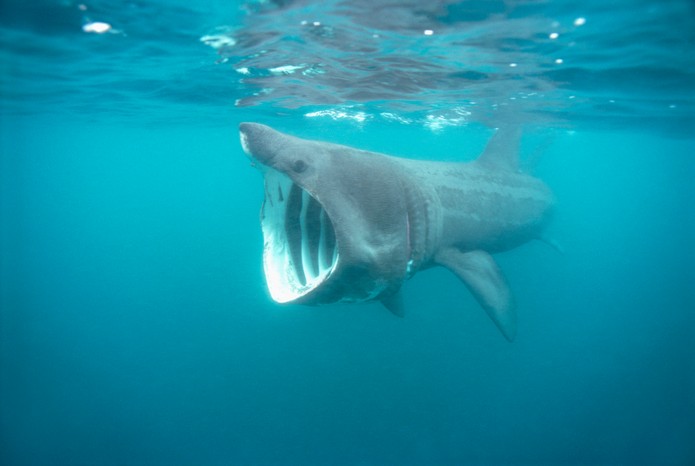
A basking shark sieves microscopic zooplankton through its cavernous mouth. © Corbis/VCG/Getty
The expert: TV presenter and BBC Wildlife columnist Nick Baker loves swimming with sharks, from great whites to dogfish.
“It’s strange meeting a basking shark. Even though I know that its immense bulk is fuelled entirely by tiny crustaceans, I’m still nervously chewing the little rubber blocks off my snorkel.
But it’s hard to stay cool as a vast, pale maw the size of an inglenook fireplace comes hurtling towards you, gills billowing like satin sheets in the wind, seemingly engulfing the entire ocean as it moves.
This is my first encounter with this mighty fish and what makes it so much sweeter is that I’m bobbing around in the water off the Lizard Peninsula in Cornwall. It’s amazing what you can find off our coasts.
Top tip
If you want to get close to basking sharks, position yourself ahead of them and hang in the water like a jellyfish.
Where to see stingrays: Cayman Islands
The expert: environmental journalist and former BBC Wildlife staff member James Fair visited the Cayman Islands in 2006.
“With a chunk of squid grasped in my right fist, I dive beneath the surface of North Sound and offer it to the creature on the sandbar at my feet.
The stingray locates the prize and then there’s a strange rasping sensation as it hoovers up the treat.
I look around: stingrays with 1m wingspans litter the seafloor, moving towards me like a group of alien life forms from Doctor Who. I’m going to need a lot more squid.”
Top Tip
Whenever you feed a stingray, make sure you keep your thumb tucked in to avoid it being sucked into the fish’s mouth.
Where to see manatees: Florida, USA

Florida manatees head inland to Florida’s warm springs during the winter months. © Shutterstock
The expert: Alexander Mustard is a marine biologist who has worked as a professional underwater photographer since 2004.
“Mist hangs over the dark waters and I am pleased to see the first rays of sunlight stretching across Three Sisters Spring. It’s dawn, and I’m right on time. In Florida, the early snorkeller catches the manatee.
During winter, these animals seek out the warm waters here to keep them toasty while they sleep. On particularly cold nights, the springs fill up like dormitories and if you arrive early you can expect quite a reception.
There is no need to keep your distance – the manatees actively seek you out. Life for them is an itchy business, and there is nothing they like more than a good ol’ scratch. And they know just where to get one.
A manatee will swim right up to you, turn on its side or back and rub its flippers on its belly, leaving little doubt as to what it wants you to do. And if you perform a satisfactory service, one individual may bond with you all morning, returning to you again and again.”
Top Tip
The less you move in the water, the more manatees will be attracted to you.
This is a frequently asked question?
This is a FAQ description. Add more detail about this service, such as benefits, appearance, components and value
This is a frequently asked question?
This is a FAQ description. Add more detail about this service, such as benefits, appearance, components and value
This is a frequently asked question?
This is a FAQ description. Add more detail about this service, such as benefits, appearance, components and value
This is a frequently asked question?
This is a FAQ description. Add more detail about this service, such as benefits, appearance, components and value
